RFID
description: technology using electromagnetic fields to automatically identify and track tags attached to objects
175 results
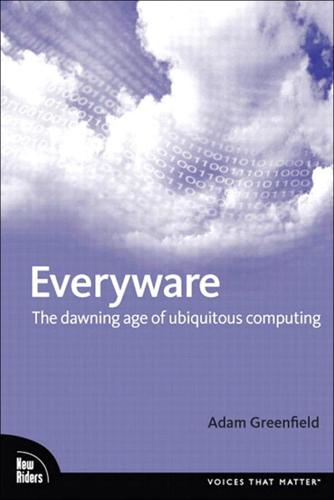
Everyware: The Dawning Age of Ubiquitous Computing
by
Adam Greenfield
Published 14 Sep 2006
Above all, the proposed bridge should be vanishingly cheap—the better to economically supply all the hundreds of billions of objects in the world with their own identifiers. Such bridges already exist—and are in fact already widely deployed. We'll limit our discussion here to the two most prominent such technologies: RFID tags and two-dimensional bar-codes. The acronym RFID simply means "radio-frequency identification," although in use it has come to connote a whole approach to low-cost, low-impact data-collection. There are two fundamental types of RFID tags, "active" and "passive"; just as you'd assume, active tags broadcast while passive tags require scanning before offering up their payload of information. While both types of tags incorporate a chip and an antenna, passive tags do not require an onboard power supply.
…
Of course, this limits their range of action to short distances, no more than a few meters at the very outside, while active RFID units, supplied with their own onboard transmitter and power supply, trade greater range for a correspondingly bulkier profile. The onboard memory chip generally encodes a unique numeric identifier and includes as well whatever other information is desired about the item of interest: part number, account number, SKU, color.... Really, the possibilities are endless. And it's this flexibility that accounts for the incredibly wide range of RFID applications we see: In everyday life, you're almost certainly already engaging RFID infrastructures, whether you're aware of it or (more likely) not.
…
See also user experience; users anonymity children disabled elderly everyday life faculty atrophy of human body human-computer interaction personal/recreational activities social interactions personal computers (PCs) personal computing See also computing phatic utterances phones, mobile photo-sharing services physical computing privacy issues See also surveillance processors product identifiers public space R radio-frequency identification. See RFID relationality remote controls (motes) remote systems RFID tags RFID technology. See also payment systems rooms. See indoor environment S screens computer display everyware and resolution wall seamlessness security. See also surveillance Sensewear patch sensors biometric floor networked problems with surveillance and SGML (Standard Generalized Markup Language) smart buildings smart flooring smartcards.
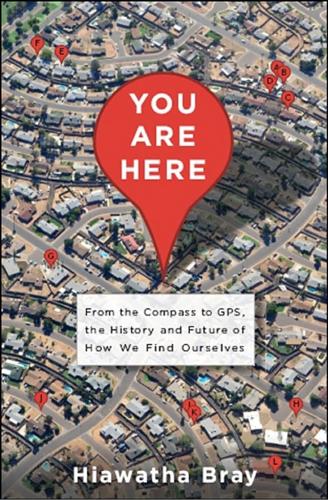
You Are Here: From the Compass to GPS, the History and Future of How We Find Ourselves
by
Hiawatha Bray
Published 31 Mar 2014
So when the RFID reader at a supermarket warehouse picks up the serial number of an RFID chip attached to a box of spaghetti sauce, it notifies the warehouse’s inventory computer that the sauce has arrived. With RFID you do not need warehouse workers typing in the data as new shipments arrive. You just put RFID readers at each loading dock; the merchandise logs itself into inventory as it is brought into the warehouse and logs itself out when it is shipped out to stores. Retailers like Walmart who want to control labor costs depend quite heavily on RFID systems; so do manufacturers like airplane builders Boeing and Airbus, which use RFID tags to track vast inventories of spare parts.17 RFID chips also simplify many everyday human transactions. In Boston commuters use cards with embedded RFID chips to pay their fares by simply waving them in front of a detector.
…
The IFF system was the forerunner of the transponders on today’s commercial planes that identify the aircraft to ground controllers. RFID is a modernized, miniaturized version of the same idea. A small microchip with attached radio antenna can be embedded into an ID card or glued onto a package. This device sits inert until it comes within range of a “reader” that broadcasts a radio signal. The incoming signal alerts the RFID chip, which responds by beaming out a serial number. This serial number has already been stored in a database, where it is associated with a particular object or person. So when the RFID reader at a supermarket warehouse picks up the serial number of an RFID chip attached to a box of spaghetti sauce, it notifies the warehouse’s inventory computer that the sauce has arrived.
…
Cops or attorneys armed with subpoenas routinely inspect these records, which could provide an alibi in a criminal inquiry or prove to a divorce lawyer that you were not working late at the office that night.18 On an even more granular level, retailers have taken to attaching RFID tags to individual items in their stores as a precise tool for tracking inventories. Some civil libertarians fear that it is the first step in a process to track nearly every aspect of our lives—for example, RFID chips woven into clothing would constantly transmit our comings and goings. RFID industry executives say they are not interested. Still, in their 2005 book, Spychips, Katherine Albrecht and Liz McIntyre uncovered documentation from US companies suggesting that they have at least been thinking about it. For instance, in 2001 IBM filed a patent on a way of using RFID tags to track people inside “shopping malls, airports, train stations, bus stations, elevators, trains, airplanes, rest rooms, sports arenas, libraries, theaters, museums, etc.”
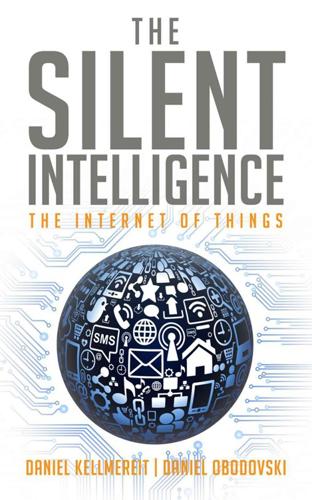
The Silent Intelligence: The Internet of Things
by
Daniel Kellmereit
and
Daniel Obodovski
Published 19 Sep 2013
When deciding on which networks to run an M2M solution, we would like to point out the ubiquity versus granularity problem. For example, RFID tags are very low cost, don’t need a battery, and have an infinite life. One can put an RFID tag on almost anything — for instance, every item in a grocery store. That way, RFID provides a high level of granularity for seeing and detecting things. However, for each RFID installation there needs to be RFID readers, which require installation, calibration, and fine-tuning. The RFID does not provide the ubiquity of other networks. Let’s take cellular: Mobile carriers provide access to cellular networks almost everywhere — cellular networks are ubiquitous.
…
I thought it was a beautiful insight. Kevin Ashton continues: Barcodes at the time were considered a quasi-automatic data capture, but they are not automatic at all. Barcodes are data-capture technology for humans, while RFID is a capture technology for computers. RFID is a way to hack the real world. As things get wirelessly connected, Sanjay Sarma believes in the proliferation of RFID. He thinks RFID readers will become ubiquitous. The economic downturn of 2001 only temporarily slowed the unstoppable development of the Internet of Things. As a matter of fact, things started picking up as early as 2002. In 2004, Nokia published a white paper called Machine to Machine: Let Your Machines Talk, which pointed out: It is not only people who use telecommunication and Internet technologies to communicate, but the machines around us as well.
…
Let’s take cellular: Mobile carriers provide access to cellular networks almost everywhere — cellular networks are ubiquitous. However, the cellular devices are costly compared to the RFID tags, they are bulky, and they require batteries to run. Cellular devices do not offer the same level of granularity that RFID provides. To better understand this problem, we spoke with Professor Sanjay Sarma of MIT. Sanjay pointed out that the biggest cost in RFID today is in installation and integration. One way to address the issue of ubiquity, he says, would be to wirelessly enable RFID readers with 4G or Wi-Fi and make them ubiquitous. Sanjay says, “Imagine if the reader comes with a standard electric plug, all you need to do is plug it in and you’re good to go.”
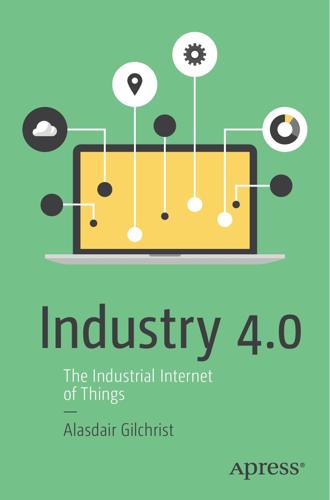
Industry 4.0: The Industrial Internet of Things
by
Alasdair Gilchrist
Published 27 Jun 2016
This is one of the basis of Smart Manufacturing, because we can reduce waste and inefficiency by identifying products on the production line and determining their status and what is more their history and what specific stage of production they must next pass through. Now how do we do this? We can use RFID tags that are so miniaturized that now they can be embedded into a label or use NFC (near frequency contact) such as in card payment systems. NFC is a bit fragile it requires close proximity to the reader, whereas RFID is astonishingly capable. Take for instance a racing car embedded with an RFID tag and during each lap, an RFID reader counts the number of laps. Incredibly, an RFID reader can count reliably every lap a racing car performs even at speeds of 200 mph and more. Therefore, RFID tags are perfect for Smart Factory applications where the speed of the production process must not be compromised.
…
In order to address these inventory control processes, logistic companies sought an automated solution using IIoT techniques and wireless technologies. The solution is to use embedded RFID tags and the associated RFID readers, which can scan entire rows or stacks of pallets queued at the inbound gate simultaneously. This is something a barcode reader had to perform one at a time, which is an improvement in speed and accuracy as every RFID tag in 23 24 Chapter 2 | Industrial Internet Use-Cases radio range on every pallet, whether visible or not, is read by the system. The RFID reader automatically records the RFID tag’s information such as the order ID, the manufacturer, product model, type, and quantity, as well as the condition of the items before automatically recording the delivery in the ERP system.
…
On the other hand, some tags are battery powered and transmit actively and these can be situated hundreds of meters from the reader. RFID technology is used in many industries to identify and track inventory, people, objects, and animals due to the tag’s versatility and ability to be attached to just about anything. RFID is also used in contactless payment systems using cards or even smartphones to place in close proximity to the RFID reader. However, RFID does not always require such close contact; in some cases even the briefest contact at a distance is all that is required. An example of this is the timing of sports cars lapping a track. Even at those high speeds, RFID works efficiently and reliably and produces accurate timing.
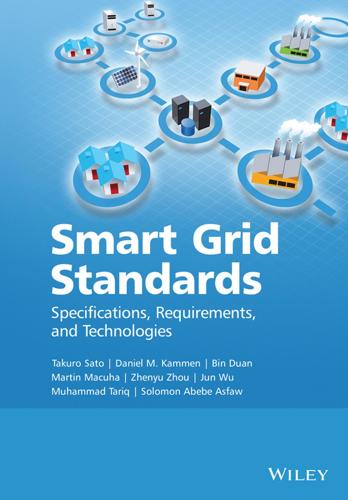
Smart Grid Standards
by
Takuro Sato
Published 17 Nov 2015
It utilizes OFDM and modulation techniques up to 4096 QAM Optical ITU-T G.651.1 ITU ITU-T G.652 ITU ITU-T G.959 ITU-T G.693 ITU-T G.692 ITU ITU ITU T1.105.07 ANSI Characteristics of a 50/125 μm multimode graded-index optical fiber cable for the optical access network Characteristics of a single-mode optical fiber and cable Optical transport network physical layer interfaces Optical interfaces for intraoffice systems Optical interfaces for multichannel systems with optical amplifiers Synchronous Optical Network (SONET) - Sub-STS-1 Interface Rates and Formats Specification (continued overleaf) Smart Grid Standards 252 Table 6.2 (continued) Standard Body Details ITU-T G.707 ITU ITU-T G.783 ITU ITU-T G.784 ITU ITU-T G.803 ITU ITU-T G.983.x ITU IEEE 802.3ah IEEE ITU-T G.984.x ITU IEEE 802.3av IEEE ITU-T G.987 ITU Recommendation G.707/Y.1322, Network node interface for the Synchronous Digital Hierarchy (SDH) Characteristics of Synchronous Digital Hierarchy (SDH) equipment functional blocks Management aspects of the Synchronous Digital Hierarchy (SDH) transport network element Architecture of transport networks based on the Synchronous Digital Hierarchy (SDH) Broadband optical access systems based on Passive Optical Networks (PON), a series of recommendations for broadband passive optical networks Also known as “Ethernet in the First Mile;” defines the physical-layer specifications for Ethernet links providing 1000 Mbps over PONs up to at least 10 km (1000BASE-PX10) and up to at least 20 km (1000BASE-PX20) Gigabit-capable passive optical networks (GPON); a series of recommendations for GPON access networks Physical layer specifications and management parameters for 10 Gbps Ethernet Passive Optical Networks (10 GE-PON) 10-Gigabit-capable passive optical network (XG-PON) systems: definitions, abbreviations, and acronyms; a series of recommendations for gigabit passive optical access networks NG-PON2: next-generation passive optical network 2 NG-PON2 FSAN Very short range/contactless ISO 10536 ISO ISO 11784 ISO ISO 11785 ISO ISO 14443 ISO ISO 15693 ISO ISO 15961 ISO ISO RFID standard for close coupled cards ISO RFID standard that defines the way in which data is structured on an RFID tag ISO RFID standard that defines the air interface protocol ISO RFID standard that provides the definitions for the air interface protocol for RFID tags used in proximity systems – aimed for use with payment systems ISO RFID standard for use with what are termed vicinity cards ISO RFID standard for item management (includes application interface (part 1), registration of RFID data constructs (part 2), and RFID data constructs (part 3) Communications in the Smart Grid 253 Table 6.2 (continued) Standard Body Details ISO 18000 ISO ISO 24753 ISO UHF Class 1 Gen 2 EPCglobal EPC Class-1 HF EPCglobal ASTM D7434 ASTM ASTM D7435 ASTM ASTM D7580 ASTM JIS X 6319-4 JIS ISO/IEC 21481 ISO ISO/IEC 18092 ISO ISO RFID standard for the air interface for RFID frequencies around the globe Air interface commands for battery assist and sensor functionality Physical and logical requirements for a passive-backscatter, Interrogator-Talks-First (ITF), Radio-Frequency Identification (RFID) system operating in the 860–960 MHz frequency range Physical and logical requirements fora passive-backscatter, Interrogator-Talks-First (ITF), Radio-Frequency Identification (RFID) system operating in 13.65 MHz frequency Standard test method for determining the performance of passive Radio-Frequency Identification (RFID) transponders on palletized or unitized loads Standard test method for determining the performance of passive Radio-Frequency Identification (RFID) transponders on loaded containers Standard test method for rotary stretch wrapper method for determining the readability of passive RFID transponders on homogeneous palletized or unitized loads Also known as “Felica,” the Japanese Industrial Standard (or JIS) specifying the physical characteristics, air interface, transmission protocols, file structure, and commands of high-speed contactless proximity integrated circuit cards This standard specifies the communication mode-selection mechanism, which is designed to not interfere with any ongoing communication at 13.56 MHz, for devices implementing ECMA-340, ISO/IEC 14443, or ISO/IEC 15693 Also known as “ECMA-340.”
…
In Table 6.9, we provide an overview of those technologies in the context of Smart Grid applications. 6.4.2 Wireless Very Short Distance Communication Radio-Frequency Identification (RFID) technology is widely used for identifying and tracking assets, because of its simplicity and low cost. In particular, the most common applications of RFID are store/warehouse product identification, production control, livestock identification, and vehicle tracking. The RFID concept recognizes two entities: reader/writer and a tag. The RFID reader/writer communicates with RFID tags and reads/writes the information from/to the tag. There can be three different types of RFID tags: passive, semipassive, and active. The passive RFID tags take the major market share due to the extremely low cost without the need for any battery and with almost limitless lifespan.
…
The passive RFID tag is powered by the antenna of a reader/writer device. Semipassive tags are battery powered for internal operation. However, the read or write process utilizes the same method as a passive tag (powering from the antenna of the reader/writer). Finally, an active RFID tag is powered by battery and enables significantly larger distances for communication. There are several standards defining RFID technologies and the way in which two entities interact (an antenna-coupling mechanism). The most common methods are RFID inductive coupling, RFID capacitive coupling, and RFID backscattering.
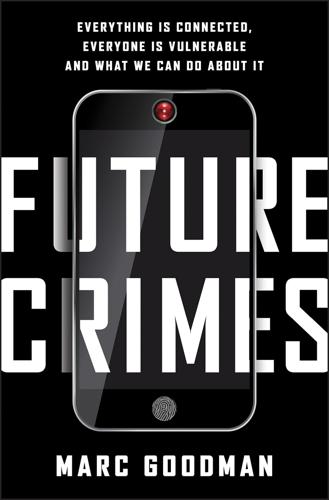
Future Crimes: Everything Is Connected, Everyone Is Vulnerable and What We Can Do About It
by
Marc Goodman
Published 24 Feb 2015
Though the convenience of RFID, considered by many the gateway to the Internet of Things, sounds great, there’s one problem: it’s eminently hackable. There have been dozens of exploits against RFID technology, whose electronics can be readily hacked, spoofed, and jammed, and there is an active “RFID underground” continually working on improving its offensive techniques. The overwhelming majority of today’s RFID tags have no effective security, encryption, or privacy protocols in place. These shortcomings have allowed the security hacker Francis Brown to build his own RFID readers for under $400 that can scan, copy, clone, and steal data from your smart cards.
…
Welcome to pocket picking 2.0, where the thieves don’t even need to stick their hands in your pocket anymore. The techniques to hack RFID are easy to emulate, and there are hundreds of instruction sites and videos online telling hackers exactly how. Troubling given that billions of things coming online will be using RFID as their primary language to speak and interact with the world. RFID chips can also be infected with viruses, and just like GPS signals RFID can be jammed, preventing you from getting into your office and allowing thieves to shoplift expensive goods electronically tagged by retailers. Another popular IoT communications technology is RFID’s younger brother, known as near-field communication (NFC) and currently built into 20 percent of mobile phones, particularly Android models, as well as the latest iPhone 6 devices.
…
As the price of these tools drops, new consumer products such as Apple’s iBeacon and Tile’s location tags may soon become an omnipresent feature in our daily lives, allowing us to track objects with centimeter precision. The first of these IoT enabling technologies, RFID, was patented in 1983 and is a wireless low-energy device that can be embedded into any object to make it “smart,” or able to interact with RFID readers. RFID tags are printed electronic circuits no thicker than a piece of paper, often come in sticker format, many the size of a dime, and can be produced for under a penny. They are capable of performing real-time, constant data exchange and can be read by scanners, some as far as up to one hundred meters away. Even if you are unfamiliar with RFID technology, chances are you have already encountered it in your life, whether it’s the security ID card you use to swipe your way into your office, your “wave and pay” credit card, the key to your hotel room, your subway pass, or the little box you use to pay for highway tolls, such as E-ZPass.
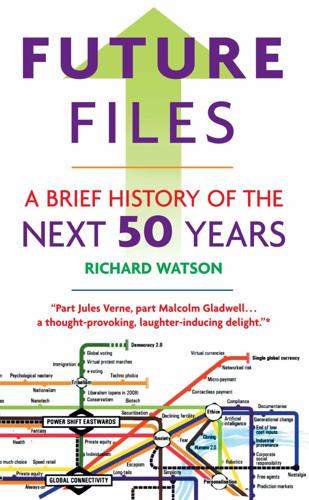
Future Files: A Brief History of the Next 50 Years
by
Richard Watson
Published 1 Jan 2008
Given that the percentage of Muslims in the world’s population is expected to grow from 19% in 2000 to 30% in 2025, I’d expect this sector of investment to grow too. Chapter 5 Money and Financial Services: everyone is a bank Prediction is very difficult, especially about the future. —Niels Bohr J on Merriman is the CEO of an investment bank and is one of 50 people in the US with a radio frequency ID (RFID) tag inserted in his arm. Mr Merriman’s firm is an adviser to VeriChip, a maker of ID implants for pets and RFID-enabled medical bracelets. If Mr Merriman (“Chip” to his friends?) is ever involved in a serious accident, doctors are just a scan away from all the necessary data. The chip contains everything from bank account and social security records to medical information.
…
“Precision agriculture” is an idea whereby farmland is monitored 182 FUTURE FILES and controlled meter by meter, with seeds sown at exactly the correct time and fertilizers and pesticides applied almost on a plantby-plant basis. Similar techniques exist for cattle, allowing individual herds to be monitored and controlled by satellite and the history of an individual animal to be tracked from paddock to plate. RFID chips are one way to do this, but an even better way is to test for DNA. However, in the future the dining tables will be turned. At present RFID chips are a logistical tool used by supermarkets and their suppliers. In the future customers will tap into these chips to monitor where their food is from and how it was produced. There is already a DNA test available called FoodExpert ID that can check for the presence of 32 common animals (including humans) in foodstuffs.
…
Shops are already intelligent and they are getting more so. In the future, a store might greet you by name and direct you to a loyalty queue for a speedy checkout. Or you may not even have to check out: an RFID reader will scan your shopping bags as you walk out of the store and the bill will be sent automatically to your creditcard company or bank. The Prada store in New York already shows footage of models wearing certain outfits if you hold the clothes up to a nearby screen. RFID technologies will scan your body from all angles and produce 206 FUTURE FILES a 360-degree 3D model to help you find clothes that fit you precisely. Entering the data into a terminal will also instantly tell you whether certain items are in stock, or perhaps inform you of where products were made and under what conditions.
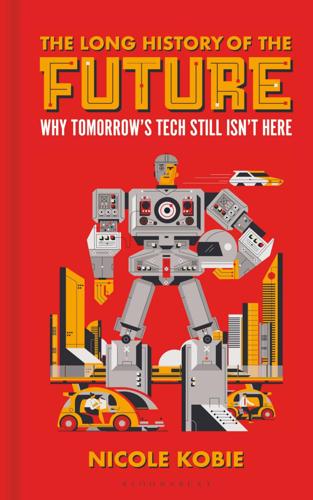
The Long History of the Future: Why Tomorrow's Technology Still Isn't Here
by
Nicole Kobie
Published 3 Jul 2024
‘One was saying you really shouldn’t have done this,’ he says. ‘The other was saying congratulations, well done.’ Once there, the RFID transmitter meant Warwick’s approach could open a door and trigger it to say a welcoming message, turn on a light and load his webpage on his computer. None of that will be impressive to modern audiences, who can do this all via their voice or phones, but at the time it was certainly a neat trick. However, none of these showpieces worked four days before the press launch. A bug meant the chosen code emitted from the RFID transmitter – 666, owing to a lab technician’s devilish sense of humour – was failing to pick up.
…
A bug meant the chosen code emitted from the RFID transmitter – 666, owing to a lab technician’s devilish sense of humour – was failing to pick up. But other codes did, spookily enough, and after hard graft by the team, everything worked by the time the media arrived for Warwick’s performance. The RFID transmitter was basic – he could have simply carried it in his hand to achieve the same effect – and that experiment didn’t scratch the itch for Warwick. Nine days later, the RFID tube was removed, and for his second go at being a cyborg, the team decided to install a mini array of microelectrodes into the median nerve of his wrist. Designed by Richard Normann at the University of Utah and then made by Bionic Tech, the ‘Utah Array’, which was later rebranded as ‘BrainGate’, had 100 silicon spikes to mesh with nerves to capture electrical signals, sending them up wires that exited the body to connect to digital reading equipment.
…
Joseph here Pitts, Walter here Playter, Robert here Pliny the Elder here Pombo, Jorge Reynolds here Popular Mechanics magazine here Popular Science magazine here Post Office here, here Pravdich-Neminsky, Vladimir here Presper Eckert, J. here Princeton Press-Courier here ProPublica software here prosthetics and bionic technology here Prototype This! TV programme here Qualcomm here Quigg, Doc here radio here, here, here Radio Corporation America (RCA) here radio frequency identification (RFID) here Raibert, Marc here, here RAND (Office of Scientific Research and Development) here RAND Corporation here Rander, Peter here Ratio Club here Reflection Technologies Inc (RTI) here the Register here, here Reichardt, Jasia here Reiter, Reinhold here RFID chips here, here, here Richards, William here Rio de Janeiro, Brazil here Rising Sun film (1993) here Rizzo, Skip here Roach, Ron here Road Research Laboratory (RRL), UK here, here robots/robotics here, here, here, here, here, here Agility Robotics’ Digit here Aldebaran Robotics - Nao and Pepper here Boston Dynamics and Leg Lab here, here, here, here, here, here, here, here carer roles here, here, here, here early here Elektro – Sparko the dog here Engineered Art – RoboThespian here, here Hanson Robotics - Sophia here, here Hiroshi Isiguro here Honda – Asimo and Avatar Robot here, here, here humanoid and bipedal here, here, here, here, here, here, here ICRA (2023) here, here Japanese here, here, here, here jobs/industrial uses here, here, here, here, here, here Knightscope K5 – Steve the robo-guard here military use and law enforcement here, here, here, here, here Prosper Robotics – Alfie here Robear carer robot here Sony AIBO robotic dog here SRI – Shakey robot here, here Sunnyvale - Figure 01 robot here surgical uses here, here Tesla – Optimus here Toyota – Robina and T-HR3 robots here UBTech – Walker robot here Unimation – Unimate One and PUMA here William Richards and ‘Eric’ here Rochester, Nathaniel here Rock, Arthur here Rohr Industries here Roomba here Rosedale, Philip here Rosen, Charlie here, here, here Rosenblatt, Frank here Rumelhart, David E. here Russell, Ben here Salesky, Bryan here Salter, Robert here Samsung Galaxy smartphone here Samsung Gear VR headset here, here Samuda, Jacob and Joseph here Sanctuary AI - Phoenix here satnav here, here Schwartz, Jacob here Science Museum, London here Science Research Council, UK here Scientific American here, here Scott-Morgan, Peter here Scott, Travis here seasteading here Second World War here, here, here, here, here Sega here, here Senning, Åke here Shakey robot, SRI here, here, here Shane, Janelle here Shannon, Claude here, here Shockley, William B. here Shoulders, Kenneth here SHRDLU here Sidewalk Labs, Alphabet here, here Simon, Herbert A. here, here Sketchpad program here, here smart cities here, here, here Alphabet Sidewalk Labs here Amaravati, India here Barcelona, Spain here BioDiverCity here Chengdu Future City, China here Clinton Foundation and Cisco Connected Urban Development Programme (CUD) here control rooms and dashboards here Cyberjaya, Malaysia here data collection and analysis here, here, here, here Forest City, Malaysia here IBM here Kuala Lumpur, Malaysia here Los Angeles Community Analysis Bureau (CAB) here Masdar City, UAE here Medellín, Colombia here monitoring pollution here, here NEOM and The Line, Saudi Arabia here New York City fires 1970s here privacy issues here, here, here, here public transport here, here, here, here Rio de Janeiro, Brazil here Santiago, Chile – Cybersyn project here Smart Cities Mission, India here Songdo New City, South Korea here Telosa new city design here Toronto Quayside and Waterfront plans here Toyota Woven City here traffic lights/management here Victorian London cholera epidemic here smartphones here, here, here, here, here, here Smolinski, Henry here Snap here Snow, Dr John here SoftBank here Solomonoff, Ray here Solzbacher, Florian here Son, Masayoshi here Sony here, here, here PlayStation VR here Soria y Mata, Arturo here space exploration here, here, here, here, here SpaceX here, here Sproull, Bob here, here, here SRI International here Standford Research Institute (SRI) here, here, here Stanford Artificial Intelligence Lab here, here, here, here Stanford Cart here Stanford Racing here, here Stanford University here, here, here, here, here, here, here Star Wars, LucasFilm here, here Stephenson, George here Stephenson, Neal here Stereoscopic Television Apparatus – Sensorama here StreetView, Google here, here STRIPS program, SRI here Studebaker here Suleyman, Mustafa here Sullivan, Jesse here Sutherland, Ivan here, here, here, here, here Sutskever, Ilya here, here Tagami, Katsuyoshi here Tampier, René here Tandy here Tange, Kenzo here Tatarinov, Vladimir here Taylor, Moulton here Technik Autonomer Systeme (TAS) here Teleological Society here Teller, Astro here, here, here Terman, Fred here Tesla here, here, here, here, here, here, here Thiel, Peter here, here, here Thrun, Sebastian here, here, here, here, here, here, here, here, here, here Time magazine here Tonight Show Starring Johnny Carson here Toronto, Canada here Townsend, Anthony here Toyota here, here Tracked Hovercraft project here, here TRL GATEway pods here Trudeau, Justin here Trump, Donald here Tsukuba Mechanical Engineering Lab here Turing, Alan here, here, here, here, here Turing machine here Turing test here U-City and U-Life, South Korea here Uber here, here, here, here, here, here, here Unicorn Hybrid Black BCI here Unimation here, here Uniroo, Leg Lab here Urban-Air-Port here Urban, Jack here Urmson, Chris here, here, here, here Vallianatos, Mark here Valve - Steamsight VR headset here VaMoRs (Versuchsfahrzeug für autonome Mobilität und Rechnersehen) here VaMP and VITA-2 driverless sedans here vapourware here Velodyne here, here venture capital (VC) firms here, here, here, here The Verge website here Vertical Aerospace here Vidal, Eugene here Vidal, Jacques here View-Master toy here virtual reality (VR) see augmented reality (AR) and virtual reality (VR) Virtual Visual Environment Display (VIVED), NASA here Virtuality here Vives, Antoni here, here Volocity – Volocopter here von Neumann, John here, here, here, here, here VPL Research here, here, here Vuia, Trajan here Wainwright, Oliver here Wakamaru, Mitsubishi here Waldern, Jonathan here Walker, Giles here Wall Street Journal here, here, here, here Warwick, Kevin here Washington Post here Watanabe, Katsuaki here Waterman, Waldo here Waymo project, Google/Alphabet here, here, here, here, here, here, here, here Webster Rammell, Thomas here, here Weiner, Norbert here, here Weizenbaum, Joseph here Werbos, Paul here Wernicke, Ken here Westinghouse Electric Corporation – Televov here Whittaker, William here, here, here Widrow, Bernard here Wiegand, Daniel here, here, here, here Wildcat, Boston Dynamics’ here Williams, Ronald here Winograd, Terry here WIRED here, here, here, here Wisk here, here Wooldridge, Michael here, here WordNet here World Wide Web here World’s Fair, New York (1939) here, here, here Wright brothers here Wylie, Bianca here, here xAI here Xerox PARC’s Alto here Yokoi, Gunpei here York Commuter roadable aircraft here Yoshino, Hiroyuki here Young, James here Zeiler, Matthew here Zero Latency here Zimmerman, Tom here Zoll, Paul here Zuckerberg, Mark here, here, here, here, here, here Zworykin, Vladimir here BLOOMSBURY SIGMA Bloomsbury Publishing Plc 50 Bedford Square, London, WC1B 3DP, UK 29 Earlsfort Terrace, Dublin 2, Ireland BLOOMSBURY, BLOOMSBURY SIGMA and the Bloomsbury Sigma logo are trademarks of Bloomsbury Publishing Plc This electronic edition first published in the United Kingdom in 2024 Copyright © Nicole Kobie, 2024 Nicole Kobie has asserted her right under the Copyright, Designs and Patents Act, 1988, to be identified as Author of this work All rights reserved.
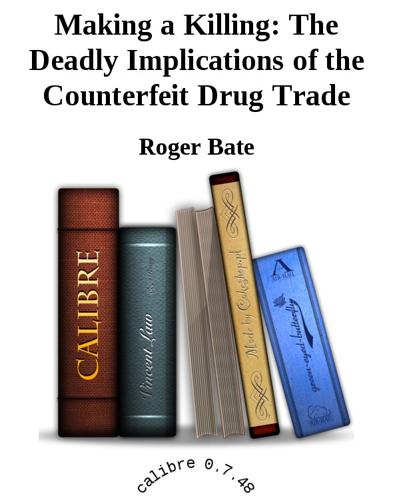
Making a Killing: The Deadly Implications of the Counterfeit Drug Trade
by
Roger Bate
Published 25 Jun 2008
As recommended by the FDA’s Counterfeit Task Force (a group created in 2003 to offer advice to policymakers about the growing threat posed by counterfeit and substandard drugs) and mandated in the 2007 Food and Drug Administration Amendments Act,26 pharmaceutical companies, wholesalers, and pharmacies should collaborate to design and implement a nationwide serialization system with track-and-trace technology for all drugs produced in the United States.27 The “e-pedigree” has been piloted in several states (including California, which requires that all drugs be included under the system by January 2009), but it has not been adopted on a national scale, which has made tracing drugs across state borders—and across different credentialing systems and pedigree requirements— prohibitive.28 Numerous technologies can ensure this e-pedigree is not compromised by counterfeiters. Radio frequency identification appears especially promising. An RFID tag, applied to a shipment of pharmaceuticals, can be read from several feet away using radio waves. In the United States, RFID may prove especially helpful in speeding the passage of drugs through customs, where thousands of drug packages become backlogged every year. Such backlogs can create perverse incentives for customs officials to push shipments through, even if they suspect they may be counterfeit.
…
Margaret Kyle, “Strategic Responses to Parallel Trade,” Working Paper 12968 (Cambridge, MA: National Bureau of Economic Research, March 2007), www.nber.org/papers/w12968. 25. Pharmaceutical Market Access and Drug Safety Act of 2007, S.242, 110th Cong., 1st session. 26. Bert Moore, “RFID, Bar Codes and Pharmaceutical Authenticity,” AIM Global, June 7, 2007. 27. U.S. Food and Drug Administration, “Counterfeit Drug Task Force Report: 2006 Update,” www.fda.gov/oc/initiatives/counterfeit/report6_ 06.html (accessed March 17, 2008). 28. Moore, “RFID, Bar Codes and Pharmaceutical Authenticity.” 29. Representative Steve Buyer, House Committee on Energy and Commerce, Subcommittee on Health, hearing on HR 3610 (Food and Drug Safety Import Act), 110th Cong., 1st session, 2007, http://energycommerce. house.gov/cmte_mtgs/110-he-hrg.092607.Food.Drug.Import.shtml (accessed March 17, 2008).
…
As of July 2007, it had sold over 240 minilabs in sixty-five countries.100 Pharmaceutical Companies. Individual pharmaceutical firms have also taken steps to resist counterfeit drugs. Many have begun to implement track-and-trace technology on their drugs to provide an effective “e-pedigree” to distributors and consumers. Some have experimented with using radio frequency identification (RFID) technology to check the e-pedigrees of drug shipments, although, in the United States, this is not yet required by the FDA.101 To help secure the complex, vulnerable global supply chain, many drug companies have implemented their own security measures. Pfizer announced in December 2003 that all distributors in the United States selling its products would have to purchase them directly from the company or from selected wholesalers.102 In September 2006, Pfizer announced that it would cease selling drugs to eighteen wholesalers in the United Kingdom and instead distribute drugs there only through UniChem.103 These moves are attempts to cut down the size of the secondary wholesale market, which includes sales among wholesalers.104 Other pharmaceutical firms will need to secure their own supply chains and alert the public when they become aware of counterfeit drugs.
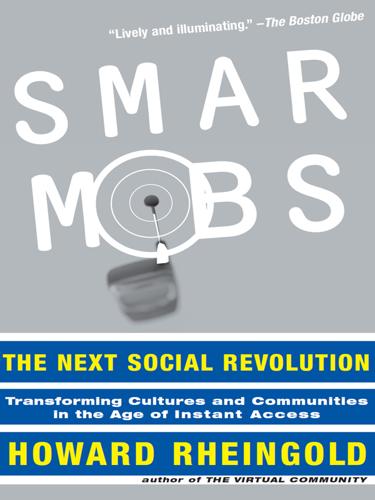
Smart Mobs: The Next Social Revolution
by
Howard Rheingold
Published 24 Dec 2011
In the 1980s, researchers started looking at radio frequency identity (RFID) tags as electronic successors to the barcode. RFID tags store, send, and receive information through weak radio signals. Active tags contain tiny batteries and send signals up to more than one hundred feet, depending on power and radio frequency. Because of the batteries, active tags are the more expensive kind and are used today for tracking cattle, merchandise in stores (those bulky plastic anti-theft devices contain small RFID tags, and the gates near store exits are tag readers), and in automatic toll systems for automobiles. It isn’t feasible to put expensive RFID tags on the wide variety of objects that barcodes track.
…
A range of services like news, help wanted listings, discussions, reports of damage or crime, and goods and services for barter or sale could be provided to people while they are present in the space. Entertainment applications, including games, are easy to imagine. Perhaps the most intrusive near-term application of RFID tags would be “smart money” that could record where it came from, who has owned it, and what it has bought. In December 2001, the European Central Bank was reported to be working on embedding RFID tags in currency by 2005.45 Although prevention of counterfeiting is the bank’s overt motivation, the same technology could afford surveillance of individual behaviors at a scale never before imagined.
…
Auto-ID Center, <http://www.autoidcenter.org/main.asp> (29 March 2002). 45. Junko Yoshida, “Euro Bank Notes to Embed RFID Chips by 2005,” EE Times, 19 December 2001, <http://www.eet.com/story/OEG20011219S0016> (29 January 2002). 46. Wes Vernon, “Latest Privacy Nightmare: Money That Tracks You,” News- Max.com, 28 July 2001, < http://www.newsmax.com/archives/articles/2001/7/27/212324.shtml > (3 February 2002). 47. Will Knight, “Tiny Radio Chip Gives Paper an ID,” New Scientist, 4 July 2001, <http://www.newscientist.com/news/news.jsp?id=ns9999967> (3 February 2002); “Hitachi Announces World’s Smallest RFID IC, the mu-chip,” 5 July 2001, <http://www.hitachi.com/products/electronic/semiconductorcomponent/elecrfid/ >(5 February 2002). 48.
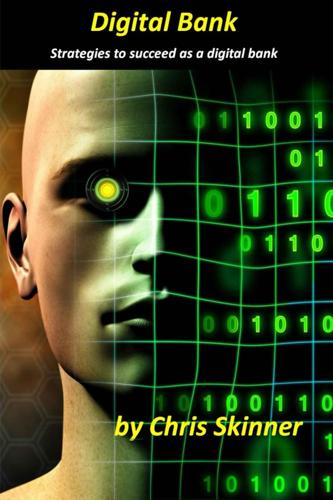
Digital Bank: Strategies for Launching or Becoming a Digital Bank
by
Chris Skinner
Published 27 Aug 2013
We can see the opportunity this change offers today, thanks to Near Field Communication (NFC) and Radio Frequency IDentification (RFID) will provide the internet of things with the ability to transact. When we talk about chips inside everything, so that they can wirelessly communicate, those chips in everything will be RFID chips today. RFID can only hold a small amount of intelligence right now, so it needs something to receive the RFID information and that is NFC. Hence, NFC will become the reader mechanism in phones and other devices for RFID in the internet of things. Today, you buy things by taking them to the teller; tomorrow, if you want to buy something, you just read the QR code or hold your phone over its RFID tag.
…
Save more than 10% of your earnings per month and we will give you a “Saver King” or “Saver Queen” badge to share with all your friends on Facebook. In fact, the Digital Bank will be the Augmented Bank as it will recognise that anything can transact with anything person-to-person, person-to-machine or even machine-to-machine. Transactions become embedded in everything from underpants to escalators through the placement of RFID chips inside everything. This means that everything will be intelligently and wirelessly communicating with everything through what is now called the internet of things. The internet of things delivers a new wireless augmented world of digital reality where, in the very near future, fifty billion devices will be communicating with each other.
…
Today, you buy things by taking them to the teller; tomorrow, if you want to buy something, you just read the QR code or hold your phone over its RFID tag. In addition, in the near future, the internet of things will be driven by the mobile internet of things, where everything is geo-located and identified by the network. It is this network- and chip-driven transaction system that is the point. The network-centric view, where everything is monitored real-time via the network, is the more sophisticated, intelligent and likely future scenario but the chip-based transaction system may well play an enabling short- to medium- term role in allowing the network to track the transactions.
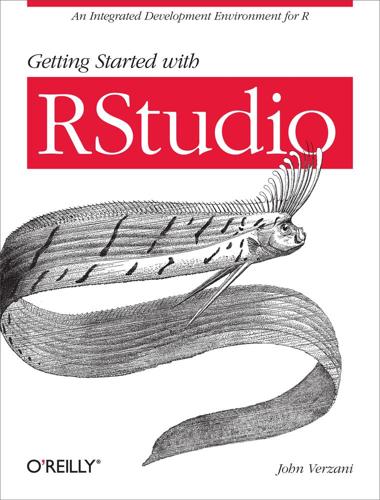
Getting Started with RStudio
by
John Verzani
Published 18 Sep 2011
R has several ways to implement the split-apply-combine idiom, as it is one of the most useful patterns for R users. The plyr package is widely used, but for this task we use functions from base R. The split function can be used to divide the data by the grouping variable RFID, returning a list whose components are the records for the individual mole rats: > l <- split(x, x$RFID) The list, l, has a different component for each mole rat. We can check to see if any two rows for a mole rat are identical, using R’s convenient duplicated method. In addition, we add a bit of time to to each time value, so that times recorded with the same second are distinguished.
…
We will postpone for now an example of the “development” aspect of RStudio. The data set we look at here comes from a colleague, and contains records from a psychology experiment on a colony of naked mole rats. The experimenter is interested in both the behavior of each naked mole rat in time and the social aspect of the colony as a whole. Each rat wears an RFID chip that allows the researcher to track its motion. The experiment consists of 15 chambers (bubbles) in a linear arrangement separated by 14 tubes. Each tube has a gate with a sensor. When a mole rat passes through the tube, the time and gate are recorded. Unfortunately, gates can be missed, and the recording device can erroneously replicate values, so the raw data must be cleaned up.
…
However, the actual editor employed depends on the extension and MIME type of the file. For rtf files, the underlying operating system’s editor is used, which for Mac OS X is textedit. We can see that the data appears to have one line per record, with the values separated by semicolons. The fields are RFID, date, time, and gate number. This is basically comma-separated-value (CSV) data with a nonstandard separator. Figure 2-2. The rtf file is opened in an editor provided by the system, not by RStudio However, although we rarely see rtf files, we know the textedit program will likely render them using the markup for formatting, so perhaps there are some markup commands that needs to be removed.
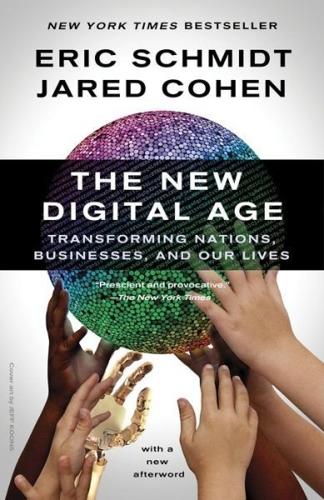
The New Digital Age: Transforming Nations, Businesses, and Our Lives
by
Eric Schmidt
and
Jared Cohen
Published 22 Apr 2013
Weapons and small arms routinely disappear after conflicts and find their way onto the black market (an estimated $1 billion annual business), later appearing in the hands of militias, gangs and armies in other countries. Radio frequency identification (RFID) chips could represent a solution to this challenge. RFID chips or tags contain electronically stored information and can be as small as a grain of rice. They are ever present today, in everything from our phones and passports to the products we buy. (They’re even in our pets: RFID chips embedded under the skin or on an ear are used to help identify lost animals.) If major states signed treaties that required weapons manufacturers to implant unremovable RFID chips in all of their products, it would make the hunt for arms caches and the interdiction of arms shipments much easier.
…
If major states signed treaties that required weapons manufacturers to implant unremovable RFID chips in all of their products, it would make the hunt for arms caches and the interdiction of arms shipments much easier. Given that today’s RFID chips can be easily fried in a microwave, the chips of the future will need a shield that protects them against tampering. (We assume there will be a technological cat-and-mouse game between governments who want to track the weapons with RFID chips and arms traffickers who want to deal the weapons off the grid.) When weapons with RFID chips were recovered, it would be possible to trace where they’d been if the chips themselves were designed to store location data. This wouldn’t stop the trafficking of arms but it would put pressure on the larger actors in the arms trade.
…
Moreover, states might claim that falsely planting another country’s weapons in a conflict zone would point to their involvement and lead to even more conflict. But international pressure might make a difference. Luckily, there are myriad other ways the RFID technology can be used in the short term in reconstruction efforts. RFID tags can be used to track aid deliveries and other essential supplies, to verify pharmaceuticals and other products as legitimate, and to generally limit waste or graft in large contracting projects. The World Food Program (WFP) has experimented with tracking food deliveries in Somalia, using bar codes and RFID chips to determine which suppliers are honest and deliver food to the target area. This type of tracking system—inexpensive, ubiquitous and reliable—could demonstrably help streamline the serpentine world of aid distribution by enhancing accountability and providing data that can be used to measure success and effectiveness, even in the least-connected places
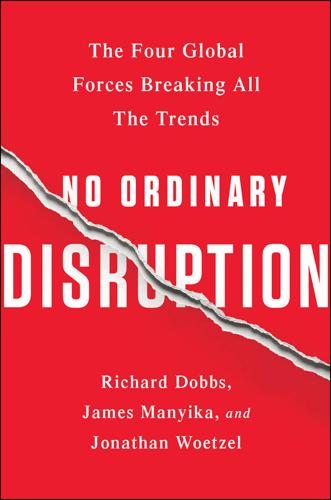
No Ordinary Disruption: The Four Global Forces Breaking All the Trends
by
Richard Dobbs
and
James Manyika
Published 12 May 2015
Free Mobile signed up more than 2.6 million new subscribers in less than three months in 2012 and captured 13 percent market share in one year with no above-the-line budget.57 Luxury retailer Burberry is synonymous with best-in-class multichannel customer experience; its flagship store at 121 Regent Street in London boasts the world’s tallest retail screen, real-life digital feeds, and RFID chips that are sewn into Burberry products. These tiny chips trigger bespoke content in front of RFID-enabled mirrors.58 Nordstrom, the luxury department store, first exploited the marginal cost advantages of digital for internal purposes, to develop shipping and inventory-management facilities. The company then turned its digital investments outward, building a strong e-commerce site, mobile-shopping apps, kiosks, and capabilities for managing customer relationships across channels.
…
See Research and development Real estate industry, 68, 133, 141, 198 Recession recovery cycles, 149–151 Recycling, 123–125, 196 Reliance Communications, 144 Renault, 124 Renewable energy, 36, 122, 126–127, 199 Repurposed services, 27–28 Research and development (R&D) automotive manufacturing technology, 141–142 facility locations for, 27–28 globalized digital platforms for, 85–86 in oil extraction recovery, 125–126 Resource management, 111–129 adaptation to, 9–10, 120–128 circular economy approach to, 123–125 demand increase and, 114–116, 117 (table) energy efficiency for, 122, 123, 125–127 environmental conservation and, 119–120, 122 globalization and, 118–119 government regulation of, 195–196 intuition reset for, 9–10 overview, 9–10, 112 policy, 190, 195–196, 199 productivity improvement in, 120, 121 (table), 122–123, 141 public-private partnerships for, 198–199 supply challenges and, 116, 117 (table), 118 technological acceleration and, 9, 36, 113–114 volatility resilience design for, 127–128 Retailing industry aging population adaptation of, 69–70 digitization influence on, 39, 46 (fig.) new consumer adaptation of, 105–106 peer-to-peer services in, 85, 158, 160 reuse and recycling in, 124–125 RFID tags in, 48 See also E-commerce Retirement, 62–64, 65, 183, 194–195 Reuse programs, 123–125 RFID. See Radio-frequency identification technology Ricoh, 124 Robotics adoption acceleration and, 42 for aging population, 53–54 automotive manufacturing, 53, 83 current advances in, 36–37 evolution of, 35 (fig.) in Japan, 53–54 Rocket Internet, 79 Russia, 81 (table) Saga, 70 San Francisco, California, 27, 29, 30 See also Silicon Valley Sarkozy, Nicolas, 197 Saudi Arabia, 56, 81 (table), 113 (table), 143 Savings rates, 137–138, 139 Scentsa, 52 Schröder, Gerhard, 181–182 Science, technology, engineering, and mathematics (STEM), 155, 156, 158, 159 (table) The Second Machine Age (Brynjolfsson and McAfee), 6 Seniors.
…
Items such as shoes, jewelry, and tools may in the future be sold with the transfer of an electronic file, allowing the buyer to print the object on demand or at the point of consumption. Second, digitization enhances the information content of many of our routine transactions, enriching them and making them more valuable and productive. Examples include the digital tracking of physical shipments with the use of RFID tags and the use of 2-D barcodes to convey information to consumers. Third, digitization is creating online platforms that facilitate production and transaction and allow minnows to compete head-to-head with sharks. Online exchanges and platforms like eBay and Alibaba, two of the linchpins of global e-commerce, allow even the smallest companies and individuals to become micro-multinationals.
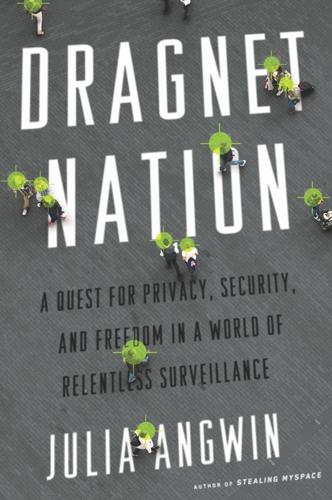
Dragnet Nation: A Quest for Privacy, Security, and Freedom in a World of Relentless Surveillance
by
Julia Angwin
Published 25 Feb 2014
Benjamin Robinson, CR-07-00596 (N.D. Cal., 2001), http://ia600500.us.archive.org/11/items/gov.uscourts.cand.195976/gov.uscourts.cand.195976.1.0.pdf. In 2009, Robinson pleaded guilty to unlawfully: Ibid. radio-frequency identification (RFID) chips: “FAQ on RFID and RFID Privacy,” RSA Laboratories, accessed September 8, 2013, http://www.emc.com/emc-plus/rsa-labs/research-areas/faq-on-rfid-and-rfid-privacy.htm#4. in passports: “The U.S. Electronic Passport Frequently Asked Questions,” Travel.State.Gov, A Service of the Bureau of Consular Affairs, accessed July 21, 2013, http://travel.state.gov/passport/passport_2788.html.
…
In 2009, Robinson pleaded guilty to unlawfully obtaining information from a protected computer, and he was sentenced to three years’ probation. And the day is not far off when real-time tracking will become routine. The United States already embeds radio-frequency identification (RFID) chips that can transmit data over a short range of about ten feet in passports, and schools and employers are starting to embed the chips in ID cards. In 2013, a federal judge in Texas denied a student’s challenge to her school’s requirement that she wear an RFID-enabled ID card. Some employers have even flirted with the idea of implanting the chips under their employees’ skin, which prompted California to outlaw the practice in 2008.
…
We rejected airport body scanners: Mike M. Ahlers, “TSA Removing ‘Virtual Strip Search’ Body Scanners,” CNN.com, January 19, 2013, http://www.cnn.com/2013/01/18/travel/tsa-body-scanners/index.html. We do not embed tracking microchips: “California Bans Forced RFID Tagging of Humans,” Government Technology, October 17, 2007, http://www.govtech.com/security/California-Bans-Forced-RFID-Tagging-of.html?topic=117688. In 2013, Judge Shira Scheindlin: David Floyd, Lalit Clarkson, Deon Dennis, and David Ourlicht v. the City of New York, 08 Civ. 1034 (SAS) (S.D. N.Y. 2013), http://www.nyclu.org/files/releases/Floyd%20opinion.pdf.
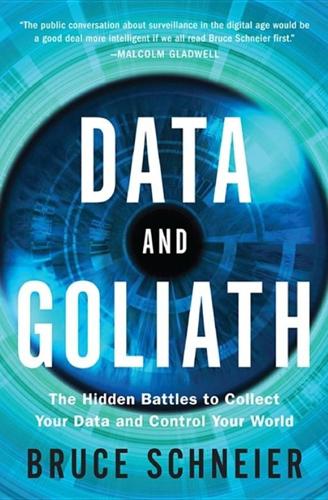
Data and Goliath: The Hidden Battles to Collect Your Data and Control Your World
by
Bruce Schneier
Published 2 Mar 2015
gait recognition systems: Zhaoxiang Zhang, Maodi Hu, and Yunhong Wang (2011), “A survey of advances in biometric gait recognition,” Biometric Recognition, Lecture Notes in Computer Science 7098, Springer-Verlag, http://link.springer.com/chapter/10.1007%2F978-3-642-25449-9_19. contactless RFID chip cards: Katherine Albrecht (2008), “RFID tag: You’re it,” Scientific American (Sep 2008): 72–77, http://www.scientificamerican.com/article/how-rfid-tags-could-be-used. University of Washington College of Engineering (22 Feb 2008), “University launches RFID people tracking experiment,” RFID Journal, http://www.rfidjournal.com/articles/view?6924. Christopher Zara (8 Jan 2013), “Disney World’s RFID tracking bracelets are a slippery slope, warns privacy advocate,” International Business Times, http://www.ibtimes.com/disney-worlds-rfid-tracking-bracelets-are-slippery-slope-warns-privacy-advocate-1001790.
…
German consumers opposing: IBM Corporation (16 Dec 2004), “METRO Group’s Future Store takes German public by storm—thanks to wireless technology,” ftp://ftp.software.ibm.com/software/solutions/pdfs/10704035_Metro_cs_1b.pdf. Kim Zetter (28 Feb 2004), “Germans protest radio-ID plans,” Wired, http://archive.wired.com/techbiz/media/news/2004/02/62472. Jan Libbenga (1 Mar 2004), “German revolt against RFID,” Register, http://www.theregister.co.uk/2004/03/01/german_revolt_against_rfid. Facebook users objecting: K. C. Jones (17 Feb 2009), “Facebook’s terms of use draw protest,” Information Week, http://www.informationweek.com/software/social/facebooks-terms-of-use-draw-protest/d/d-id/1076697. Bobbie Johnson and Afua Hirsch (18 Feb 2009), “Facebook backtracks after online privacy protest,” Guardian, http://www.theguardian.com/technology/2009/feb/19/facebook-personal-data.
…
Face recognition is the easiest way to identify people on camera, and the technology is getting better every year. In 2014, face recognition algorithms started outperforming people. There are other image identification technologies in development: iris scanners that work at a distance, gait recognition systems, and so on. There’s more hidden surveillance going on in the streets. Those contactless RFID chip cards in your wallet can be used to track people. Many retail stores are surreptitiously tracking people by the MAC addresses and Bluetooth IDs—which are basically identification numbers—broadcast by their smartphones. The goal is to record which aisles they walk down, which products they stop to look at, and so on.
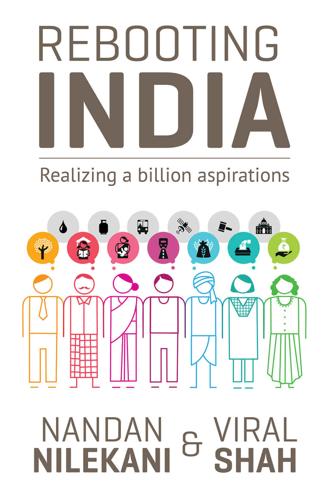
Rebooting India: Realizing a Billion Aspirations
by
Nandan Nilekani
Published 4 Feb 2016
There are several technologies that can be employed for this process—active and passive microwave, infrared, and active and passive radio-frequency identification (RFID). Microwave-based systems are common in Europe and Japan, whereas RFID-based systems are popular in the US. Based on the technical merits and costs of different technologies, the committee chose passive RFID as the best solution for India. In this system, the vehicle owner needs to purchase a radio tag and stick it prominently on the windscreen. The tag has an antenna and a circuit printed on the inside; they are activated by the overhead reader, or transceiver, installed in the toll plaza. Such systems are now commonplace and the cost is minimal. In the passive RFID set-up, the main source of energy is the overhead reader, not the sticker.
…
For any system that is likely to be deployed nationwide, the technology component must be robust, tried and tested in the real world, and affordable. Ideally, it should be available from multiple vendors so that the government is not forced into a lock-in with a single vendor. For the RFID-enabled toll collection system, there need to be multiple vendors of tags and transceivers, all developed to a common specification laid down by the government. Once the specifications are met, any tag should be capable of being read by any transceiver and vice versa, irrespective of the vendor. The passive RFID technology satisfies all these criteria, and hence was recommended by the committee as the technology platform on which to build an electronic toll collection system.
…
Even more importantly, automating the tax computation process would eliminate incentives for corruption, resulting in a significant increase in revenues and a gradual improvement in road safety standards as well. Ravi Palekar explains to us, ‘If you integrate the RFID and taxation systems together, every time you read a tag at a check post, you can get the vehicle’s entire history—its origin, destination, what goods it’s carrying, whether the operators have paid tax or not—in a format that’s easily available to the state.’ A separate steering committee is working on integrating the radio tag into the state border check-post system, and he says, ‘A team will shortly be visiting Ahmedabad to consult with the Gujarat government about taking the RFID-border check-post linkage forward.’ Once the government develops ‘electronic toll as a platform’, not only will various government applications that we discussed above be possible, but also, start-ups will come up with all sorts of innovative ideas once they have a method to identify a vehicle and the ability to debit and credit its wallet in the cloud.
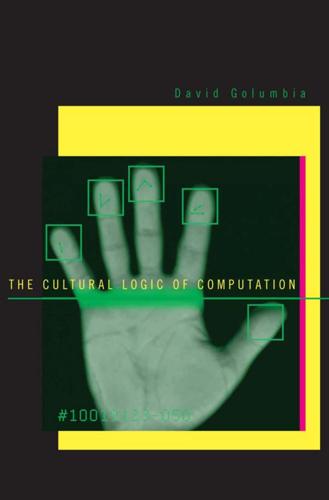
The Cultural Logic of Computation
by
David Golumbia
Published 31 Mar 2009
In recent years Wal-Mart has been at the forefront not just of ERP and supply-chain management software, but of a relatively new technology, Radio Frequency Identification Device (RFID) and the associated Electronic Product Code (EPC) system. Like the intensively computational bar codes before it, RFID identifies products via alphanumeric tagging. Where bar codes identify items by the class to which they belong (or what philosophers would call type identification)—every box of shredded wheat, for example, has the same bar code printed on it, allowing cashiers to retrieve the price for the item from a central computer—RFID specifies tokens of items. Each cereal box now includes a unique RFID chip, allowing the central authority to track precisely when and where it is processed, delivered, and sold.
…
Of course there are manifest benefits to such a system; the benefits are not at issue in the present discussion and RFID would not even be considered if it did not offer benefits to both Wal-Mart and its customers. Like similar technologies in the past, RFID and EPC have raised a certain amount of consumer and democratic concern, such that Wal-Mart in particular has been compelled in the name of public relations to contribute to a global effort called EPCGlobal (http://www.epcglobalna.org/) whose job is to promote public awareness of the uses of RFID and EPC and their benefits for consumers. Rather than demonstrating democratic control over this technology, though, the existence of EPCGlobal points more generally to the obvious privacy and surveillance issues raised by technologies like RFID that suggest the provision of worldwide, pinpoint surveillance to centralized authorities.
…
Rather than demonstrating democratic control over this technology, though, the existence of EPCGlobal points more generally to the obvious privacy and surveillance issues raised by technologies like RFID that suggest the provision of worldwide, pinpoint surveillance to centralized authorities. The ethical standards promulgated by EPCGlobal are themselves far less worrying than are the inevitable more secretive applications of similar technologies that are sure to follow on the heels of RFID. Such technologies radically reformulate critical tenets on which concepts like personal privacy and private space, let alone public space, are themselves constituted in a democratic society, and while their explicit use by law enforcement and the government may at least at times be raised for policy dis- Computationalism, Striation, and Cultural Authority p 177 cussion by lawmakers (though perhaps less often than some might wish), their widespread proliferation by multinational corporations is far less subject to democratic investigation and control, and at the same time perhaps more pervasive and constitutive of the contemporary lifeworld than are the surveillance technologies used by government.
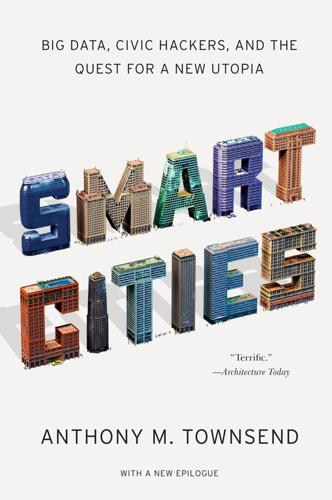
Smart Cities: Big Data, Civic Hackers, and the Quest for a New Utopia
by
Anthony M. Townsend
Published 29 Sep 2013
Upon entering the building, conventioneers pick up their ID badges, embedded with a “u-chip” (for “ubiquitous” computing), a radio-frequency identification (RFID) tag that functions as a wireless bar code. To enter the exhibition hall, one swipes the card across a reader mounted atop each turnstile, much like entering a subway station. It’s a familiar move for Korean city dwellers. For over a decade, they have used local tech giant LG’s rechargeable T-money cards not just to board buses and subways, but to pay for taxis and convenience-store purchases as well. From the earliest planning stages, the nation’s economic planners intended Songdo to be a test bed for RFID and a center for research and development in this crucial ubiquitous computing technology.
…
From the earliest planning stages, the nation’s economic planners intended Songdo to be a test bed for RFID and a center for research and development in this crucial ubiquitous computing technology. In 2005 the government announced a $300 million, 20-acre RFID-focused industrial park in Songdo.12 Inside Convensia, your interactions with computers seem far from ubiquitous, broken up into a fragmented series of gestures and glances—swiping your RFID card to enter a room or pressing a button to request that an elevator be dispatched to your location. As they move through the complex, visitors locate meeting rooms by reading digital displays mounted beside entryways, which draw down the latest events schedule from a central master calendar. Other smart technologies inhabit Convensia’s unseen innards—controls for climate systems, lighting, safety and security systems are there, yet invisible to the average person.
…
According to CEO John Chambers of Cisco Systems, which committed $47 million in 2009 to build out the city’s digital nervous system, it is a place that will “run on information.” 13 Plans call for cameras that detect the presence of pedestrians at night in order to save energy safely by automatically extinguishing street lighting on empty blocks. Passing automobiles with RFID-equipped license plates will be scanned, just the way conventioneers are at Convensia’s main gate, to create a real-time map of vehicle movements and, over time, the ability to predict future traffic patterns based on the trove of past measurements.14 A smart electricity grid will communicate with home appliances, perhaps anticipating the evening drawdown of juice as tens of thousands of programmable rice cookers count down to dinnertime.
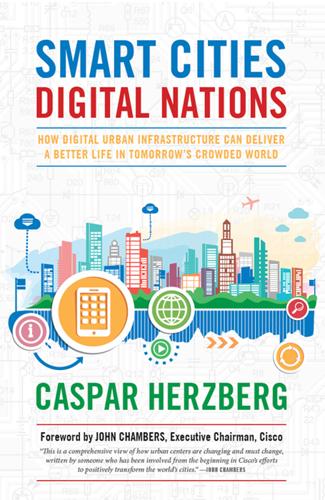
Smart Cities, Digital Nations
by
Caspar Herzberg
Published 13 Apr 2017
This was technology so deeply embedded in a resident’s environment as to be literally everywhere. As early as 2005, the press had been invited to marvel at Songdo’s services. Radio-frequency identification (RFID) technology on cars that transmitted geo-location information or home-automation options that could open a front door or select music by way of a smartphone were touted as natural outgrowths of South Korea’s vibrant technological awareness. Many of Songdo’s features (such as RFID cards) had been prototyped by LG CNS in Seoul and other cities; from this perspective, Songdo was the next evolutionary step for a nation on the front line of IT innovation.
…
This, like so many of the projections, was overly optimistic, and it also missed the value of accomplishments that would be more difficult to evaluate in terms of revenue. The components of smart city building are staggering in number. Residential and commercial buildings need to be outfitted with “smart” lighting, power, elevators, and security features. The sea and airports require Radio Frequency Identification (RFID) inventory systems, automated transport, and ruggedized connections. Reliable wireless connectivity is a given and must be available everywhere. Above the infrastructure, communications must be state of the art at inception but open to the upgrades and changes typical of technology subject to constant development.
…
Additionally, 40 percent of rooftops would become green space. In all, 75 percent of Songdo’s waste was to be recycled in some shape or form—it was a city that put pedestrians and cyclists before drivers and electric and high-occupancy cars in better parking spaces than standard gas-powered transport. RFID technology could read license plates and detect traffic clusters before they became traffic jams. At its best, Songdo would anticipate the behavior and preferences of residents and visitors alike, staying a step or two ahead of the action and keeping everything clean and under control. At last, a city could serve its masters efficiently.

Engineering Security
by
Peter Gutmann
“MEED: A Memory-efficient Distance Bounding Protocol with Error Detection”, Wei Xin, Cong Tang, Hu Xiong, Yonggang Wang, Huiping Sun, Zhi Guan and Zhong Chen, Proceedings of the Asia Workshop on RFID Security (RFIDSec’11 Asia), April 2011, p.129. “Design of a Secure Distance-Bounding Channel for RFID”, Gerhard Hancke, Journal of Network and Computer Applications, Vol.34, No.3 (May 2011), p.877. “A Novel RFID Distance Bounding Protocol Based on Physically Unclonable Functions”, Süleyman Kardaş, Mehmet Kiraz, Muhammed Bingöl, and Hüseyin Demirci, Proceedings of the 7th Workshop on RFID Security (RFIDSec’11), Springer-Verlag LNCS No.7055, June 2011, p.78. “A secure distance-based RFID identification protocol with an off-line backend database”, Pedro Peris-Lopez, Agustin Orfila, Esther Palomar and Julio Hernandez-Castro, Personal and Ubiquitous Computing, Vol.16, No.3 (March 2012), p.351.
…
“Cryptographic Puzzles and Distance-bounding Protocols: Practical Tools for RFID Security” Pedro Peris-Lopez, Julio Hernandez-Castro, Juan Tapiador, Esther Palomar and Jan van der Lubbe, IEEE Communications Letters, Vol.14, No.2, (April 2010), p.121. “Design of a Secure Distance-Bounding Channel for RFID”, Gerhard Hancke, Journal of Network and Computer Applications, Vol.34, No.3 (May 2010), p.877. “Optimal Security Limits of RFID Distance Bounding Protocols” Orhun Kara, Süleyman Kardaş, Muhammed Bingöl and Gildas Avoine, Proceedings of the 6th Workshop on RFID Security (RFIDSec’10), Springer-Verlag LNCS No.6370, June 2010, p.220.
…
In this example the immigration official is seeing a fake passport that successfully identifies itself as the real article by forwarding the communications with the reader to a victim’s passport located somewhere else (for example via someone standing or sitting close to the victim, or simply placing a piece of luggage with the proxy hardware close to the victim’s passport), without the victim ever being aware that their passport is being misused in this manner. It doesn’t even require specialised equipment but can be done with standard RFID-enabled cellphones [421]. Although there exist theoretical defences against this in the form of specialised distance-bounding protocols (discussed earlier in this section) designed for RFID use, in practice implementation issues and problems due to excessive false positives has left these protocols mostly as a lab curiosity. The same types of relay attacks are possible with RFID-enabled credit cards [422][423][420], access control systems [424], keyless car entry systems [425], and a number of other systems employing contactless interfaces that have been rushed out without considering the security implications of the change in interface type.

Radicals Chasing Utopia: Inside the Rogue Movements Trying to Change the World
by
Jamie Bartlett
Published 12 Jun 2017
.* ‘Are you feeling more than human now?’ I ask. ‘I feel like I’m about to wake up in the Matrix,’ laughs Zoltan, as he clenches and unclenches his fist. ‘That wasn’t too bad.’ There are millions of RFID chips in all sorts of daily devices already, such as fob keys and pets’ collars. In 2015 the market in RFID chips was worth around $10 billion, and this is expected to almost double within ten years. But this RFID chip can’t do much because it’s not compatible with iPhones, which is what Zoltan has. So instead, his chip is programmed to say ‘Win 2016’ if someone else hovers their (Samsung) phone over it.
…
But this weekend was the chance to meet fellow grinders in person and conduct experiments. Several plan to insert microchips and magnets into their body. One has designed a nineteenth-century duelling scar he’d like to run down the front of his face. Zoltan has decided to get a Radio Frequency Identification (RFID) chip implant.11 An RFID chip is smaller than a grain of rice, and stores small amounts of information that can be recognised by other compatible devices if they are programmed to do so. As we park up and jump off the bus, Rich Lee welcomes us and takes us into the ‘lab’ where the experiments are taking place.
…
I’ll be able to connect my brain to the internet, I’ll be able to feel sounds. And my brain will start to adapt. I’ll be a node on the internet!’ he says. ‘What if someone hacks into your system and starts sending you horrible noises?’ I ask. ‘I think that would be awesome.’ ‘Why?’ ‘I’d love to know what they do, and how they do it.’ Nearly all the grinders have RFID chip implants. One has set up his phone so it unlocks when he holds it over his thumb. Another scans her chip to share contact information with me. Julius, a smart nineteen-year-old from Texas who works in software, walks me over to his car and unlocks it with his hand. He then starts it with his hand.
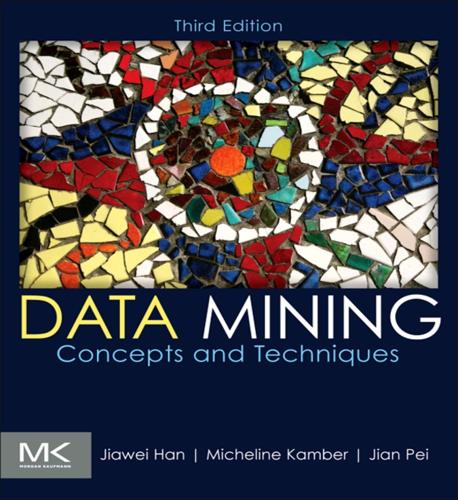
Data Mining: Concepts and Techniques: Concepts and Techniques
by
Jiawei Han
,
Micheline Kamber
and
Jian Pei
Published 21 Jun 2011
(d) If you want to drive from A to B starting at a particular time, discuss how a system may use the data in this warehouse to work out a fast route. 4.11 Radio-frequency identification is commonly used to trace object movement and perform inventory control. An RFID reader can successfully read an RFID tag from a limited distance at any scheduled time. Suppose a company wants to design a data warehouse to facilitate the analysis of objects with RFID tags in an online analytical processing manner. The company registers huge amounts of RFID data in the format of (RFID, at_location, time), and also has some information about the objects carrying the RFID tag, for example, (RFID, product_name, product_category, producer, date_produced, price). (a) Design a data warehouse to facilitate effective registration and online analytical processing of such data.
…
(a) Design a data warehouse to facilitate effective registration and online analytical processing of such data. (b) The RFID data may contain lots of redundant information. Discuss a method that maximally reduces redundancy during data registration in the RFID data warehouse. (c) The RFID data may contain lots of noise such as missing registration and misread IDs. Discuss a method that effectively cleans up the noisy data in the RFID data warehouse. (d) You may want to perform online analytical processing to determine how many TV sets were shipped from the LA seaport to BestBuy in Champaign, IL, by month, brand, and price_range.
…
The basic data cube structure has been further extended for various sophisticated data types and new applications. Here we list some examples, such as spatial data cubes for the design and implementation of geospatial data warehouses, and multimedia data cubes for the multidimensional analysis of multimedia data (those containing images and videos). RFID data cubes handle the compression and multidimensional analysis of RFID (i.e., radio-frequency identification) data. Text cubes and topic cubes were developed for the application of vector-space models and generative language models, respectively, in the analysis of multidimensional text databases (which contain both structure attributes and narrative text attributes). 5.3.1.
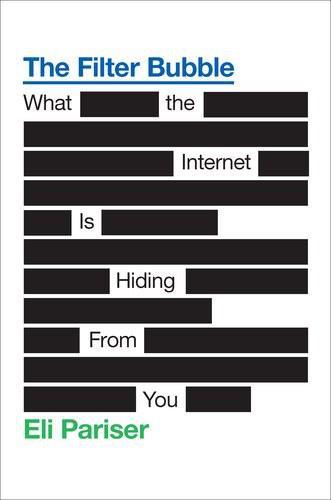
The Filter Bubble: What the Internet Is Hiding From You
by
Eli Pariser
Published 11 May 2011
Wave the bracelet at the entrance to a ride, for example, and a status update posted to your account testifies that you’re about to embark. Take a picture of your friends with a special camera and wave the bracelet at it, and the photo’s posted with your identity already tagged. Embedded in each bracelet is a radio-frequency identification (RFID) chip. RFID chips don’t need batteries, and there’s only one way to use them: call-and-response. Provide a little wireless electromagnetic power, and the chip chirps out a unique identifying code. Correlate the code with, say, a Facebook account, and you’re in business. A single chip can cost as little as $.07, and they’ll cost far less in the years to come.
…
Affix a chip to an individual car part, and you can watch as the part travels to the car factory, gets assembled into a car, and makes its way to the show floor and then someone’s garage. No more inventory shrinkage, no more having to recall whole models of products because of the errors of one factory. Conversely, RFID provides a framework by which a home could automatically inventory every object inside it—and track which objects are in which rooms. With a powerful enough signal, RFID could be a permanent solution to the lost-keys problem—and bring us face-to-face with what Forbes writer Reihan Salam calls “the powerful promise of a real world that can be indexed and organized as cleanly and coherently as Google has indexed and organized the Web.”
…
Brockton Cops Have an App for That,” Brockton Patriot Ledger, June 15, 2010, accessed Dec. 17, 2010, www.patriotledger.com/news/cops_and_courts/x1602636300/Catching-criminals-Cops-have-an-app-for-that. 195 “other images of you with ninety-five percent accuracy”: Jerome Taylor, “Google Chief: My Fears for Generation Facebook,” Independent, Aug. 18, 2010, accessed Dec. 17, 2010, www.independent.co.uk/life-style/gadgets-and-tech/news/google-chief-my-fears-for-generation-facebook-2055390.html . 197 “The future is already here”: William Gibson, interview on NPR’s Fresh Air, Aug. 31, 1993, accessed Dec. 17, 2010, www.npr.org/templates/story/story.php?storyId=1107153. 197 your identity already tagged: “RFID Bracelet Brings Facebook to the Real World,” Aug. 20, 2010, accessed Dec. 17, 2010, www.psfk.com/2010/08/rfid-bracelet-brings-facebook-to-the-real-world.html. 198 “real world that can be indexed”: Reihan Salam, “Why Amazon Will Win the Internet,” Forbes, July 30, 2010, accessed Dec. 17, 2010, www.forbes.com/2010/07/30/amazon-kindle-economy-environment-opinions-columnists-reihan-salam.html. 198 “some have termed ‘smart dust’ ”: David Wright, Serge Gutwirth, Michael Friedewald, Yves Punie, and Elena Vildjiounaite, Safeguards in a World of Ambient Intelligence (Berlin/Dordrecht: Springer Science, 2008): abstract. 199 four-year joint effort: Google/Harvard press release.
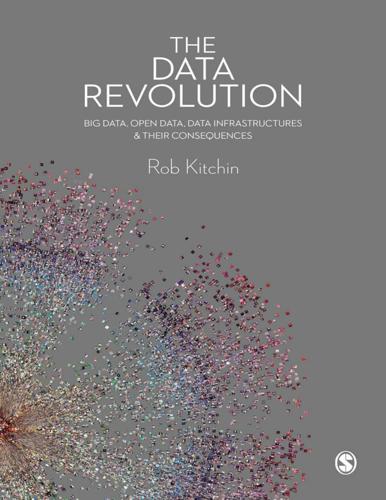
The Data Revolution: Big Data, Open Data, Data Infrastructures and Their Consequences
by
Rob Kitchin
Published 25 Aug 2014
Hitachi uses such sensors to monitor their complex, expensive heavy construction vehicles, and UPS do the same with their fleet of vans and trucks so that they can be serviced to run efficiently and before they break down (Plumridge 2012; Mayer-Schonberger and Cukier 2013). By attaching an RFID to products it becomes possible to track and trace the movement of individual units from factory or farm to consumer, reducing theft and wastage. Likewise, toll tags contain RFID chips that communicate with transponders at toll-booth barriers, leading to quicker throughput of vehicles and automatic payment, as well as measuring vehicle flow or parking space availability for traffic management. RFID chips attached to buses and trains communicate with transponders along their routes making it possible to track the location of vehicles in real-time.
…
For example, most items for sale in a supermarket presently have a barcode. This barcode identifies the product, but not the individual item – all bottles of the same brand and range of shampoo share the same barcode – meaning that they cannot be individually discriminated. In contrast, a bottle of shampoo tagged with a RFID chip is uniquely identifiable because each chip has a unique ID code which can be read at a distance by a radio transponder. Consequently, each bottle can be tracked from the place of manufacture through the supply chain into a store and a customer’s basket, creating a detailed audit trail. In other words, it has become possible to minutely trace the circulation of individual things across time and space, including those who handle each thing along its path.
…
As well as being more indexical, identification codes have also become increasingly machinereadable (Dodge and Kitchin 2005). For example, a barcode contains an identification code that when scanned by a laser reader is linked to an information system where additional metadata are held that describe the object (e.g. product type/model, date and place of manufacture, price, etc.). RFID chips can be sensed at a distance by a transponder and identified. Vehicles can be recognised by automatic number plate recognition software, and new algorithmic techniques have been developed to recognise and identify faces and gait (how people walk). Elements of the world have thus become open to being automatically captured and identified, massively expanding the amount and resolution of data generated with regard to a system, enabling new forms of regulation and governance (Dodge and Kitchin 2007a) and systems to function in more automated ways (Kitchin and Dodge 2011).

Freedom
by
Daniel Suarez
Published 17 Dec 2009
Philips listened to the news as she sat at the dining room table examining the plastic RFID bracelet affixed to her wrist. She held it up to the light to try to see through the thin plastic band. Boynton had said it was tamper-resistant, and she assumed this meant it had a wire antenna braided into its length that would be severed if the bracelet were broken. The whole ranch complex was littered with RFID readers--she'd spotted no less than six here in the bungalow. The sudden loss of a signal would undoubtedly put her unique RFID number into alarm and summon security to investigate. Unless she could slip this digital leash, she wasn't going to be able to escape or do anything else without their knowledge.
…
They would have taken over the Daemon and solidified their control. Philips knew an RFID tag was just a circuit attached to an antenna. It used energy from a radio wave to activate the circuit and broadcast its unique ID on a specific frequency. That's how it could broadcast its location to Sky Ranch Security without needing a battery. The ISO 15693 standard common for RFID proximity cards and mobile payment systems meant this bracelet was probably operating at 13.56 MHz--which was a commercial frequency. Philips had attended conferences where hacker groups demonstrated homemade devices able to harvest and spoof RFID tags at will. The question was whether Philips could build something similar with the materials here in the bungalow.
…
"You're strapping a transponder on me?" A soldier snapped a digital photograph of her. Boynton held up his hands reassuringly. "RFID tag for tracking purposes. Don't try to remove it." He pointed to the one on his own wrist. "It's your identity while on the ranch. It'll send an alert if it's tampered with. Sensors at the entrances to most buildings will go into alarm if you enter without one. Likewise if you enter restricted areas. And alarms are responded to with lethal force. These RFID tags let the troops know that you're friendly, and we've got quite a few snipers out there--so please wear it at all times."
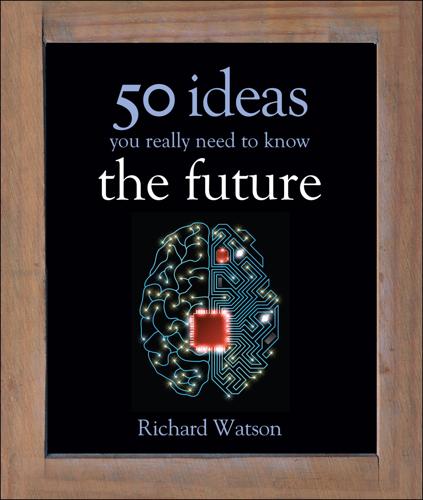
50 Future Ideas You Really Need to Know
by
Richard Watson
Published 5 Nov 2013
So if you’re lying on a beach somewhere in the future, someone you don’t know might point a phone at you, find out who you are, then work out where you’re from. If you’ve told others about your future plans via social networks, criminals might access this information then tell someone to visit your home and rob you. Looking forward So what might surveillance look like in the future? RFID (Radio Frequency Identification) tags might allow local councils and authorities to monitor domestic dustbin usage, alerting them when incorrect items are placed in recycling bins. As for CCTV cameras, there is very little evidence that they reduce crime. What they do instead is catch criminals in the act and reassure people looking for certainty and control in an age that is becoming more uncertain and complex.
…
Home economics And don’t think that the inside of your own home will be immune from such technology either. We’ve already seen digital dashboards that monitor energy use migrating from industrial buildings to private homes and there’s no reason to suspect that automation will stop there. So how about clothing that’s equipped with RFID tags (see page 5) so that your clothes can talk to your washing machine and work out the most efficient time to connect with the water pipes and power grids? Or how about a bathroom mirror (that’s also a TV) which uses facial recognition to identify individual family members and adjust the diary, to-do list or TV channels accordingly?
…
So what are some of these “things” and what are the consequences of an Internet that’s increasingly made up of physical objects embedded with sensors? In the future your socks will have an IP address and your sock drawer will know how many pairs you’ve got and what color they are. In other words, barcodes and RFID (see page 5) tags were only the first small steps toward a world where information is embedded within everyday objects, which are connected to networks so that they can communicate with each other and with the network as a whole. This will mean that the precise identity, location and status of everything—and possibly everyone—can be identified, and future actions or conditions can be predicted.

For the Win
by
Cory Doctorow
Published 11 May 2010
When we started talking about them a decade ago, all the privacy people went crazy, totally sure that these things would be bad news. The geeks dismissed them as not understanding the technology. Supposedly, an RFID can only be read from a couple inches away—if someone wanted to find out what RFIDs you had on your person, they’d have to wand you, and you’d know about it.” “Yeah, that was bull,” Perry said. “I mean, sure you can’t read an RFID unless it’s been excited with electromagnetic radiation, and sure you can’t do that from a hundred yards without frying everything between you and the target. But if you had a subway turnstile with an exciter built into it, you could snipe all the tag numbers from a distant roof with a directional antenna.
…
But if you had a subway turnstile with an exciter built into it, you could snipe all the tag numbers from a distant roof with a directional antenna. If those things had caught on, there’d be exciters everywhere and you’d be able to track anyone you wanted—Christ, they even put RFIDs in the hundred-dollar bill for a while! Pickpockets could have figured out whose purse was worth snatching from half a mile a way!” “All true,” Lester said. “But that didn’t stop these guys. There are still a couple of them around, limping along without many customers. They print the tags with inkjets, sized down to about a third the size of a grain of rice.
…
“Which brings me to my idea: why not tag everything in a group household, and use the tags to figure out who left the dishes in the sink, who took the hammer out and didn’t put it back, who put the empty milk-carton back in the fridge, and who’s got the TV remote? It won’t solve resource contention, but it will limit the social factors that contribute to it.” He looked around at them. “We can make it fun, you know, make cool RFID sticker designs, mod the little gnome dolls to act as terminals for getting reports.” Suzanne found herself nodding along. She could use this kind of thing, even though she lived alone, just to help her find out where she left her glasses and the TV remote. Perry shook his head, though. “When I was a kid, I had a really bad relationship with my mom.
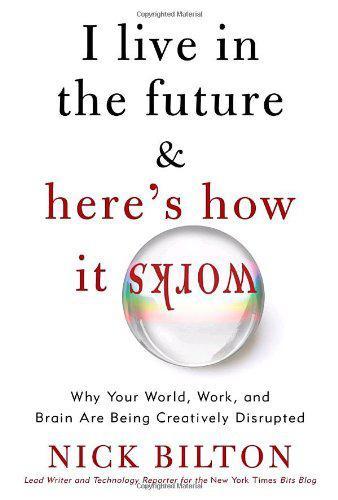
I Live in the Future & Here's How It Works: Why Your World, Work, and Brain Are Being Creatively Disrupted
by
Nick Bilton
Published 13 Sep 2010
A mainstream version of this technology doesn’t exist yet, so we had to do a little tinkering and hacking. To start, we took a cell phone, placed an RFID chip inside, and then attached an RFID reader to our computers. An RFID (radio-frequency identification) chip is a tiny electronic chip that can store little pieces of information that can be transferred wirelessly to a RFID reader device that interprets the identity of a chip. Many businesses, mine included, give cards with RFID chips to employees so they can enter their office buildings without using a key. RFID chips are also in some credit cards so that you can wave your card in front of an ATM machine instead of swiping it through a scanner.
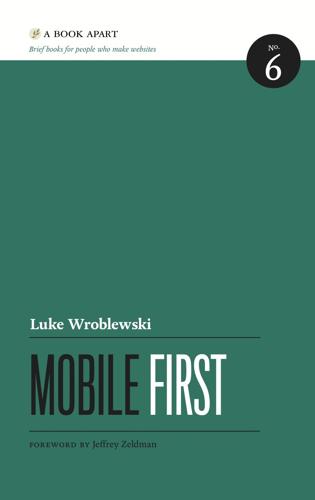
Mobile First
by
Luke Wroblewski
Published 4 Oct 2011
And additional capabilities may be here soon, including: Direction: from a digital compass Gyroscope: 360 degrees of motion Audio: input from a microphone; output to speaker Video and image: capture and input from a camera Dual cameras: front and back Device connections: through Bluetooth Proximity: device closeness to physical objects Ambient light: light/dark environment awareness NFC: Near Field Communications through RFID readers Starting with mobile puts these capabilities in your hands now so you can rethink how people can interact with your website and the world around them. As mobile web browsers continue to gain access to capabilities currently reserved only for native mobile applications, these opportunities will only increase.
…
Imagine all the typing you’d have to do in a form to accomplish what Google Goggles does when you simply point your camera at something. Fig 6.19: Google Goggles allows you to use the video camera on a mobile device for input. And near field communications (NFC) can take this even further. Mobile devices that can communicate with radio frequency ID tags (RFID) just need to be near something that broadcasts its identity using one of these tiny “digital barcodes” in order to interact with it. Want to learn more about a product? Just get close enough for it to catch a signal and your mobile can bring up all the information you need. How’s that for going beyond input fields and forms?
…
1193 66http://www.cloudfour.com/on-mobile-context/ 67 http://globalmoxie.com/blog/mobile-web-responsive-design.shtml Index 1024×768 18 $265,000 plane 86 320×480 19, 110 3200 Tigres 114 A A/B testing 16 accelerometer 33-34, 39-42 Adobe 2 Adobe Air 16 American Airlines 93-94 Amazon 24 Android 15-16, 19, 40, 59, 61, 73, 92 Appcache 24 Apple Cinema Display 110-111 Aronowitz, Kate 2 AT&T 9-10 autocapitalize 97 autocorrect 97 B back button 59-62 Bada 15 Bagcheck 57-60, 103 Barnes & Noble 79, 81 Basecamp 50-52, 89-90 Blackberry 13, 16, 59 Bluetooth 43 Boingo 101-102 C Canvas 24 Clark, Josh 50 cell tower 37 Cisco 12 CSS3 24, 110, 112 D data traffic 10-11 device experiences 116-117 device width 110 Dive Into HTML5 96 diving 27-28 E eBay 9, 86 EDGE 9 email 8, 9, 12, 25 ESPN 52-54, 56-57, 64-65, 78 F Facebook 2, 16-17, 27, 53-55 Flickr 21-23, 50-52, 71-72 Fling, Brian 86 :focus 83, 95 G GestureWorks 73 Glympse 38 Gmail 58, 60 Google 2, 9, 15, 24, 40 Google Finance 53-54 Google Goggles 105-106 Google Places 112-113 Gowalla 15 GPS 36-37 graphical user interface (GUI) 75 Grigsby, Jason 15 gyroscope 42 H Hewitt, Joe 17 Hinman, Rachel 27 :hover 78-83, 95 HTML5 24, 88-89, 95, 97, 116 HTTP requests 23 I image sprites 23 input masks 98-100 input types 90-91, 95-97 Instapaper 40-41 iPad 27, 75, 115 iPhone 10-11, 13, 16-17, 26, 36, 42, 62, 91-92, 110, 115 iOS 15, 19, 61-63, 73 iOS Human Interface Guidelines 69 J Java 15 JavaScript 23, 57, 110, 113 Jobs, Steve 10 K Kayak 38, 92, 94-95, 105 Koch, Peter-Paul 97, 109-110 L labels 87-89 location (when using mobile devices) 25-26 location detection 33, 36-39 London Underground 30-35 Lynch, Kevin 2 M MailChimp 88-89 magnetometer 33-34 Marcotte, Ethan 113 media queries 110, 113 meta viewport tag 109-110 Microsoft 15, 24, 69-70 MIT Touch Lab 69 Mobile in Higher Ed 51 Mobile Web Design and Development 86 Motorola 9 N N900 110-111 Nair, Rahul 36 native mobile applications 14-16 natural user interface (NUI) 75-76 navigation 52-59, 62-64 Nearest Tube 33-35 Near Field Communications (NFC) 44, 105-106 Netflix 115-116 Nexus One 110 Nokia 27, 67, 69 O Objective C 15 Olsen, Dave 50 “one eyeball and one thumb” 25-26, 64, 68, 86 OperaMini 13 OS X 73 P Pandora 9 PayPal 9 PC 8 performance 22-24 Pilgrim, Mark 96 pixel density 110-111 Playstation 115 Q Quora 71, 104 R radio frequency ID (RFID) 44, 105-106 RAZR 9 Read It Later 26-29 Research in Motion (RIM) 13, 16 responsive web design 112-117 S Samsung 15 Schmidt, Eric 2 screen size 18-22 select menus 91-92 Silverlight 16 Sketch a Search 43 smart defaults 36, 94 SMS 9, 13, 14 snorkeling 27-28 snow globe 41-42 Southwest Airlines 19-21 spinner control 92, 94 Storm 13 T T9 10 Tapworthy 50 time 26-28 touch 42-43 touch gestures 73-76 Tube see London Underground Twitter 16, 28, 63-64, 77, 79-80, 87-88, 105 U Ubuntu 69 V Verizon 13 Villamor, Craig 73 W Wacom Bamboo 73 WebOS 19, 73 WebWorks 16 WiFi 36-37 Willis, Dan 73 Windows Phone 7 15, 59 Windows Phone 7 Guidelines 69-70, 73 X xkcd 50-51 Yahoo!

Designing Search: UX Strategies for Ecommerce Success
by
Greg Nudelman
and
Pabini Gabriel-Petit
Published 8 May 2011
The key is the added meaning the computer provides, based on its understanding and interpretation of the content of an image, combined with other device inputs such as camera, GPS location, RFID reader, and compass direction. Imagine, for example, taking a picture of a CD (or simply picking up a CD and bringing it near to your mobile device to read the RFID tag) to instantly share it with your friends to learn what they think about the music; using the same RFID or picture data to get more information about the artist on the Web—pictures, videos of recent concerts, and a biography; finding out where you can download the songs on this CD at the best price online, or using GPS to find coupons to purchase a physical CD from a local merchant.
…
Both of these examples demonstrate that we are moving ever faster toward a world populated by smart objects, which Bruce Sterling dubbed spimes—a word made up by combining space and time. We can track spimes’ history of use and interact with them through a mesh of real and virtual worlds created by pervasive RFID and GPS tracking. Mobile picture search is certainly emerging as the input device of choice for connecting the real and the virtual worlds to create the Internet of Things (see sidebar). Internet of Things Internet of Things, also known as Internet of Objects, refers to a self-configuring wireless network connecting regular everyday objects to one another.
…
According to a recent Design4Mobile 2010 report from mobile form guru Luke Wroblewski, users of the Yelp Monocle feature tend to use Yelp 40% more than people not using Monocle. Although Monocle is still somewhat limited because of the tiny iPhone screen, you can’t help but get excited by the enormous potential of near-field computing. With the augmented reality industry working on adding facial recognition and RFID tagging, you will soon be able to obtain near-instant information about people, landmarks, objects, and just about anything else of interest. However, to fully exploit augmented reality, you might need a screen that is slightly larger than that of a typical smart phone. Note—It is hard to see all the richness of the real world additionally augmented with enormous amounts of information already available, all on a tiny screen that severely limits your filtering options.
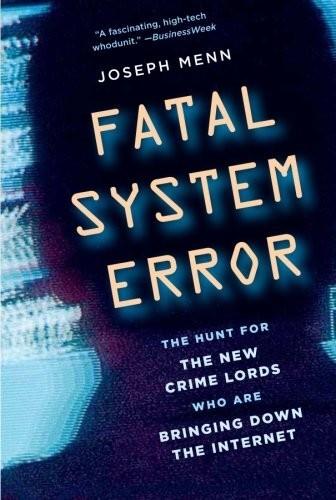
Fatal System Error: The Hunt for the New Crime Lords Who Are Bringing Down the Internet
by
Joseph Menn
Published 26 Jan 2010
Those credentials gave Barrett access to the entire network, right down to the desktop of the chief executive. But Barrett wasn’t through. The company was an early adopter of RFID (radio-frequency identification) badges for employees. The badges included photos and coded authentication that the staff swiped through automated card readers at office entrances. Barrett bought an RFID reader and went to a TGI Friday’s favored as an after-work hangout, where he surreptitiously swiped employees’ badges. Then he bought blank RFID cards, used a picture of himself, and made his own corporate ID. After Barrett’s full report to the customer, one of the target company’s senior technology executives was so impressed that he visited Barrett at his parents’ house, just to see what environment could have produced him.
…
Blue Security, Inc. and denial-of-service attacks and e-Gold and in Florida founding of Green, Brian and Lyon, Barrett and non-gambling clients of online gambling, federal crackdown on and Proliflik and Rennick, Darren and Richardson, Mickey and Russian mob and Sacco, Ron and sale of SCO Group and UltraDNS Corp. and Proliflik “Proof of concept,” Protx Ltd. Proud, Mat PureGig Putin, Vladimir Pyramid schemes QuickTime Qwest Radio-frequency identification (RFID) Ramzinskiy, Pavel RapidSatellite.com RBN. See Russian Business Network Real Host Red Hacker Alliance Red Hunter Registry of Known Spam Operations (ROKSO) Rennick, Darren FBI and online gambling, federal crackdown on and Prolexic and Reshef, Eran RFID. See Radio-frequency identification Richardson, Mickey background of BetCRIS and online gambling, federal crackdown on and Prolexic and Robbins, Andy Robots (bots) Rock Phish Rodery, Terry Rohozinski, Rafal ROKSO.
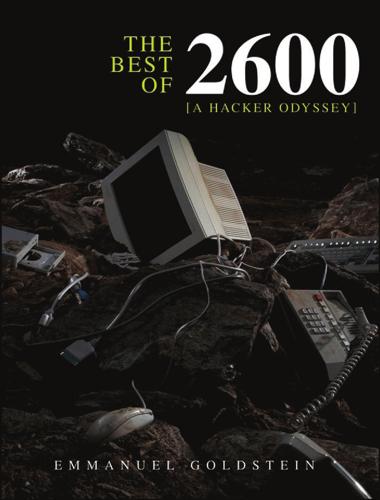
The Best of 2600: A Hacker Odyssey
by
Emmanuel Goldstein
Published 28 Jul 2008
Again, I take absolutely no responsibility for extra cellular charges you may incur or for any trouble you may get into with your cellular provider if and when you try all of this. That said, have fun and I hope you learned something! RFID: Radio Freak-Me-Out Identification (Spring, 2007) By Kn1ghtl0rd RFID has become something of a hot topic in the hacking world. There have been multiple presentations on security and privacy of RFID and also the technology behind it. This article is designed to be a what-if type scenario on what RFID is potentially capable of and where the technology is heading. RFID stands for Radio Frequency Identification, which obviously means identifying objects using radio frequency. Current implementations include asset management, inventory control, inventory tracking, access control, and entity identification.
…
The first three are usually implemented in a business environment to track inventory from one location to another or to monitor asset activity to isolate theft situations and problem areas. These implementations of RFID are very efficient and perform a valuable task for a business. The fourth example is not so good. RFID is being changed into a new type of ID for people and animals to be used instead of a hard-copy form of identification. This may seem convenient for people and they don’t see why this is bad. There are 749 94192c18.qxd 6/4/08 3:52 AM Page 750 750 Chapter 18 many possibilities for this technology to turn our world upside down and allow for Big Brother to truly manifest itself. Currently a human being can receive an implanted RFID chip that stores an identification number that associates them with information in a database.
…
Not only can the government observe this information but so can anyone else who can figure out how to get the data off the tags. Since our country is basically run by huge retail outlets it is not too far of a stretch to see product marketing analysis based on human purchase activity that is all based on RFID technology. Picture walking into Wal-Mart and having the racks scan your RFID tags and create some kind of notice to you to point on items that you prefer based on past purchase history. You regularly buy black cotton t-shirts in size large so the rack will recognize this data and highlight the rack with the black cotton t-shirts with little lights attached to all the hangers that flash as you approach.
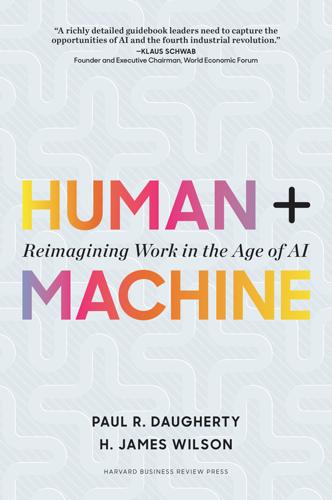
Human + Machine: Reimagining Work in the Age of AI
by
Paul R. Daugherty
and
H. James Wilson
Published 15 Jan 2018
Thanks to such increased efficiencies, the company has been able to offer same-day shipping for customers.a L’Oreal uses radio-frequency identification (RFID) technology and machine learning to help prevent forklift accidents in the company’s warehouse in Italy. The tracking system warns forklift operators and pedestrians about other nearby vehicles, cutting down on collisions.b a. Nick Wingfield, “As Amazon Pushes Forward with Robots, Workers Find New Roles,” New York Times, September 10, 2017, https://www.nytimes.com/2017/09/10/technology/amazon-robots-workers.html. b. Claire Swedberg, “L’Oréal Italia Prevents Warehouse Collisions via RTLS,” RFID Journal, August 18, 2014, http://www.rfidjournal.com/articles/view?
…
While Coca-Cola has been piloting the use of AI to automate its product-ordering process, other companies are focusing more on improving the customer experience by augmenting the work of floor sales staff. Take, for example, the global fashion company Ralph Lauren, which has partnered with Oak Labs, a San Francisco–based startup, to develop an integrated commerce experience for shoppers.3 A key part of the technology is the connected fitting room, equipped with a smart mirror that relies on RFID to automatically recognize the items that a shopper brings into the room. The mirror, which can translate six languages, can then display details about an item. It can also change the lighting (bright natural light, sunset, club setting, and so on) so shoppers can see how they look in different settings.
…
See ethical, moral, legal issues Mori, Masahiro, 131 Murphy, Mike, 23 Nadella, Satya, 203 Nao, 146 NASA, 200–201 natural-language agents, 55–56, 59, 65, 145–146 natural-language processing (NLP), 64 Nettsträter, Andreas, 26 network analysis, 45–46 neural networks, 34 deep, recurrent, and feedforward, 63 definition of, 62 history of, 40–41 neural opportunism, 205–206 Nike, 74–75 Nina, 145–146 Nissan, 113–114 normalizing, responsible, 12, 189–191 Nuance Communications, 145–146 Numerate, 81 Oak Labs, 87–88 observation, 69–72, 157–158 on-demand work environment, 111 operations, reimagining, 29–30 optimization, 63, 77 Orcutt, Mike, 78, 79 outsourcing, 120–121 PAIR (People + AI Research) initiative, 179 Paley, Sean, 199 Papert, Seymour, 40–41 PCSK9 drugs, 74 Penn Medicine, 188 Percolata, 88–89 performance, 3–4, 7, 11–12 personality trainers, 118–119 personalization brands and, 96–97 of cars, 147–149 definition of, 66 marketing and sales, 86, 89–90, 91 product/service design and, 76 theory and practice of, 77–80 ultra-customization, 68 Pew Center, 167 pharmaceutical industry, 81 Philips, 87, 141–143 Pogo, 196 Popper, Nathaniel, 49 Pratt, Gill, 166 Precision Agriculture Service, 35 predictive systems, 63 Predix, 27, 29–30, 75, 183–184 Preferred Networks, 21–22 pricing decisions, 193–194 privacy issues, 90, 164–165 processes, 4 adaptive, 5–6, 16, 108–109 automated, 5, 19 determining which to change, 52–54 discovering and describing, 155–158 experimentation with, 14, 160–165 guardrails in, 168–169 mindset for reimagining, 155–160 reimagining, 50, 105–112, 151–152, 203–205 reimagining, leadership in, 153–181 reimagining around people, 58–59 rewriting, 9 robotic automation of, 50–52 standardized, 5 Procter & Gamble, 34 procurement, 53–54 product design, 74–76 generative design in, 135–137, 139, 141 product development, 29 production, 19–39 in agriculture, 34–37 third wave, 38–39 productivity, 3–4, 135–152 job satisfaction and, 46–47 rehumanizing time and, 188–189 products, intelligent, 66 product support, 87 “quantamental” funds, 122 Quid, 70–72 Quixote, 130 Raccuglia, Paul, 71 radio-frequency identification (RFID), 31, 87–88 Ralph Lauren, 87–88, 100 rating systems, 172 R&D. See research and development (R&D) reciprocal apprenticing, 12, 201–202 recommendation systems, 65, 92, 110–111 recurrent neural networks (RNN), 63 regulations, 213 reimagining, relentless, 12, 203–205 reinforcement learning, 62 repetitive/routine work, 26–27, 29–30, 46–47 process reimagination and, 52–54 in R&D, 69–72 reimagining around people, 58–59 research and development (R&D), 10, 67–83 customization and delivery in, 77–80 ethical/legal issues in, 78–79 hypotheses in, 72–74 MELDS in, 83 observation in, 69–72 risk management and, 80–81 scientific method in, 69–77 testing in, 74–77 resource management, 74–75 retail pricing, 193–194 Rethink Robotics, 22, 24 Reverse Engineering and Forward Simulation (REFS), 72–74 Revionics, 194 Riedl, Mark O., 130 right to explanation, 124 Rio Tinto, 7–8, 109–110 risk management, 80–81 robotic arms, 21–23 learning by, 24–26 robotic process automation (RPA), 50–52 Robotics, Three Laws of (Asimov), 128–129 Robotiq, 23 Roomba, 24 Rosenblatt, Frank, 62 Round Chair, 136–137 routine work.
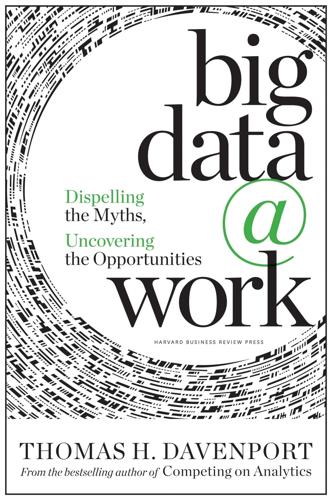
Big Data at Work: Dispelling the Myths, Uncovering the Opportunities
by
Thomas H. Davenport
Published 4 Feb 2014
While this would undoubtedly generate a lot of interesting data, it would probably be very unpopular with the sales force. Chapter_02.indd 51 03/12/13 11:42 AM 52 big data @ work Supply Chain Supply chain processes are among the most likely to be transformed by big data. Radio-frequency identification (RFID) devices—long discussed as a means of monitoring supply chain movements—are now actually becoming available at a reasonable cost. GPS tracking on trucks and trains means that arrival times for shipments can be more precisely predicted. Transportation companies, including UPS, FedEx, and Schneider National, have already installed tracking devices and are increasingly using them to monitor and optimize their networks.
…
In chapter 8, I describe how UPS, for example, has recently used data from its package cars (brown trucks) to redesign its driving route structure for only the third time in over one hundred years. Other types of sensors are likely to lead to a flood of additional data and opportunities to analyze it. RFID and telematics sensors primarily track location, but so-called ILC (identification, location, condition) sensors can monitor the condition of goods in the supply chain as well, on such variables as light, temperature, tilt angle, g-forces, and whether a package has been opened. They can transfer data in real time via cellular networks.
…
One of most aspects of big data is the way it has captured the attention of senior managers like no other technology trend before it. Suddenly, C-level executives are funding headcount for big data projects and using the phrase “data as an asset” in board meetings. New applications for big data are often industry-specific. Think telematics data for auto insurers, vital signs in health care, or RFID tags in manufacturing. All of this data is difficult to capture and ingest, let alone use in a meaningful way. A recent survey found that the highest percentage of respondents—41 percent—reported not having a strategy for big data. The next-largest group reported “Operations/Processing” as being the area of focus for big data projects.5 Clearly, most companies still haven’t transcended their initial projects to articulate the full business potential of big data.

The Best Interface Is No Interface: The Simple Path to Brilliant Technology (Voices That Matter)
by
Golden Krishna
Published 10 Feb 2015
v=2zoeiNBdPdo 47 “MasterCard International, which first tested the PayPass in 2003” Sewell Chan, “A Test at 25 Stations: Subway Riding Without the Swiping,” The New York Times, January 31, 2006. http://www.nytimes.com/2006/01/31/nyregion/31fare.html 48 Marc Perton, “Chase to Issue RFID Credit Cards,” Engadget, May 20, 2005. http://www.engadget.com/2005/05/20/chase-to-issue-rfid-credit-cards/ 49 Marc Perton, “Amex to Include RFID in All New Blue Cards,” Engadget, June 7, 2005. http://www.engadget.com/2005/06/07/amex-to-include-rfid-in-all-new-blue-cards/ 50 Sarah Perez, “Visa to Launch Contactless Mobile Payments for iPhone,” ReadWrite, May 6, 2010. http://readwrite.com/2010/05/06/visa_to_launch_contactless_mobile_payments_for_iphone 51 “Launching Google Wallet on Sprint and Working with Visa, American Express, and Discover,” Official Google Blog, September 19, 2011. http://googleblog.blogspot.com/2011/09/launching-google-wallet-on-sprint-and.html 52 “Albertsons LLC, which operates 217 stores in seven Western and Southern states, will eliminate all self-checkout lanes in the 100 stores that have them and will replace them with standard or express lanes, a spokeswoman said.
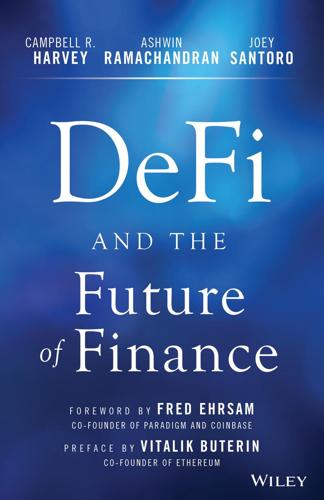
DeFi and the Future of Finance
by
Campbell R. Harvey
,
Ashwin Ramachandran
,
Joey Santoro
,
Vitalik Buterin
and
Fred Ehrsam
Published 23 Aug 2021
See also specific ERCs Exchange-traded funds (ETFs), 125 Externally owned accounts (EOAs), 30, 48–49, 163 F Facebook, 3 Fees, 49–50 Fiat-collateralized stablecoins, 25 Fiat currency, 1, 14, 163 Fidelity Digital Assets, 145 51% attack, 19 Finance, history of, 8–10 Fintech, 10–12, 163 Fixed-rate borrowing, 107f Flash attacks, 133 Flash loans, 56–57, 163 on dYdX, 112 risks associated with, 133 supported by Aave, 90–91, 91f Flash swaps, 100, 101f, 163 Foreign currency (forex) market, 10–11 Forfeiture, 30–31 Fork, 59–60, 163–164 Fungible tokens, 32–37 equity tokens, 33–34 ERC on, 23 governance tokens, 35–37 utility tokens, 34–35 value of, 175n2 Futures, 113–117, 118f G Gas, 164 Gas fees, 21–22, 30–31 Geoblock, 164 Global settlements, 76 Gold, as tangible asset, 13–14 Google, 3, 20 Governance risk, 135–136 Governance tokens, 28, 35–37, 70 on Compound, 86–87 defined, 164 on MakerDAO, 74 regulations on, 148 risk associated with, 136 on Uniswap, 102–103 H Haber, Stuart, 12 Halting problems, 22, 164 Hash, 164 Hexadecimals, 164 Horizontal scaling, 140, 164 Hussein, Saddam, 14 I Iceland, 147IDO (initial DeFi offering), 62, 165 Impermanent loss, 52–54, 98, 143, 165 Incentives, 46–50, 165 Inefficiency: in centralized financial systems, 4 DeFi solutions for, 58–60 Inequality: and problems with centralized financial systems, 6 and smart contracts, 16–17 Infinite loop of code, 22 Inflation, 14 Inflationary rewards, 41–42, 60 Infrastructure, 18–28 blockchains, 18–20 cryptocurrencies, 20–21 dApps, 27–28 oracles, 23–24 replaced by smart contracts, 16–17 smart contract platforms, 21–23 stablecoins, 24–27 Initial DeFi offering (IDO), 62, 165 Interdependence, of platforms, 54–55 Interest rates, 80 and inefficiency, 4 speculation on, 109 Internal Revenue Service, 149 Internet banking, 10 Invariants, 95–98, 165–166 Iraq, 14–15 Iraqi Swiss dinars, 14–15, 14f iTokens, 120 J Jane Street, 144 Jump, 144 K Keepers, 49, 59, 79, 166 Kinks, 81 Know your customer (KYC), 166 L Lack of interoperability: in centralized financial systems, 5 DeFi solutions for, 65–68 Layer 2, 140–141, 166 Lendf.Me lending protocol, 134 Lending, 69–95 Lending rates, 83f Limited access: in centralized financial systems, 3–4 DeFi solutions for, 60–62 Linear bonding curves, 43f Liquidation, 48, 55–56, 71, 111 Liquidation penalties, 75 Liquidity: composable, 52 and flash loans, 112 minting to create, 71 and Uniswap, 96–98 Liquidity pool, 89 Liquidity provider (LP), 97–98, 142–143, 166, 179n13 Loans: business, 6 collateralized, 54–56, 70–72 flash (see Flash loans) stable rate, 92 uncollateralized, 56–57 Logistic bonding curves, 45f M Mainnet, 166 Maintenance margins, 115–116 MakerDAO, 69–77, 73f–74f, 77t–78t Compound supplied by, 80 governance risk for, 135 governance token of, 36, 37 stablecoins created by, 26 Margins, 114–115 Margin class, 71 Margin trading, 110 Mastercard, 10 Maximum slippage, 100, 111 Mean-reverting pairs, 54 Memory pool, 31 Mempool, 31 Merchants, in wBTC ecosystem, 128 MetaMask, 145 Miners, 30–31, 166–167 Miner extractable value (MEV), 31, 167 Mint, 41–42, 71, 167 MKR tokens, 74–75 Mobil Speedpass, 10 Money: history of, 1–2 introduction of, 1 moving between institutions, 5 Mooniswap, 100 Mt Gox attack, 145 Multitoken standards, 38–39 N Nakamoto, Satoshi, 12 Networked liquidity, 68, 167 Network power, 19, 20 Network tokens, 120 New York State laws, 148 New York Stock Exchange (NYSE), 11 New York Times, 145 NFTs (nonfungible tokens), 23, 37–39, 175n2 Nodes, 167 Nonce, 167 Noncollateralized currency, 1 Noncollateralized stablecoins, 26–27 Nonfungible tokens (NFTs), 23, 37–39, 175n2 O Off-chain assets, 128 Off-chain data, 137 Off-chain order books, 144 On-chain order books, 143–144 Opacity: in centralized financial systems, 5 DeFi solutions for, 62–64 Optimistic rollup, 141, 168 Oracles, 23–24, 168 Oracle problem, 23–24 Oracle risk, 137–138 Oraclize, 137 Order-book DEXs, 143–144 Order book matching, 50–51, 168 OwnerOf(id) method, 37 P Pancakeswap, 136 Partial custody, 145 Path independence, 54 Payment networks, 21 PayPal, 12 Peckshield, 131 Permissionlessness, of dApps, 27 Perpetual futures contracts, 114–117, 118f, 168 Plaid, 5 Polkadot, 69, 139 PoS, see Proof of stake PoW, see Proof of work Pricing, of supply, 42–46 Primitive financial actions, 29–57 collateralized loans, 54–56 custody, 39–40 flash loans, 56–57 fungible tokens, 32–37 incentives, 46–50 nonfungible tokens, 37–39 supply adjustments, 40–46 swaps, 50–54 transactions, 29–31 Profit from corruption, 137 Proof of stake (PoS): in blockchains, 19–20 defined, 168 and energy efficiency, 146 on Polkadot, 69 scaling risk of, 139 Proof of work (PoW): in Bitcoin, 12 in blockchains, 19 defined, 169 and environmental risk, 146 scaling risk of, 138 Protocol debt, 75 Provable, 137 Q Quantstamp, 131 R Radio-frequency identification (RFID) payments, 10 Reentrancy bug, 134 Registrations, 178n6 Regulations, 147–149 Regulatory risk, 147–149 Reserve factors, 82 Reward funds, 46 Rewarding user behavior, 41–42 RFID (radio-frequency identification) payments, 10 Risk(s), 130–149 counterparty risk, 130 custodial risk, 144–146 DEX risk, 142–144 environmental risk, 146–147 in flash loans, 57 governance risk, 135–136 oracle risk, 137–138 regulatory risk, 147–149 scaling risk, 138–141 smart contract risk, 57, 131–135 Robin Hood Group, 134 Router contracts, 99, 169 S Savings rates, 83f Scaling risk, 138–141, 169 Schelling-point oracle, 137, 169 Schmidt, Eric, 20 Securities and Exchange Commission (SEC), 148 Self-custody, 144–145 Selling curves, 44, 45f, 46 Set Protocol, 124–127, 127t Set tokens, 125–127 Sharding, 140, 152, 169 Sigmoid bonding curves, 45f Slashing, 47–48, 140, 169 Slashing condition, 47, 170 Slock.it, 133 Slopes, 81 Smart contracts: and atomicity of transactions, 30 defined, 170 and Ethereum, 16 and transparency, 63–64 Smart contract level check, 180n18 Smart contract platforms, 21–23 Ethereum as, 16 as isolated from outside events, 23–24 standards for, 23 Smart contract risk, 57, 131–135 SNX tokens, 26, 120–122 Social Trading, 126 Software, risks of, 131 Solana, 140 Specie, 1, 170 Stablecoins, 24–27 defined, 170 on MakerDAO, 70 as synthetic tokens, 56 trading pairs of, 98–99 Stable rate loans, 92 Staked incentives, 46, 47, 170 Staking, 139, 170 Staking penalties, 47–48 Staking rewards, 47 Standards, 23, 37–39 Stanford Federal Credit Union, 10 Stellar, 69 sTokens, 120 Stornetta, Scott, 12 $TSD tokens, 136 Superlinear bonding curves, 44f Supply adjustments, 40–46 Supply interest rates, 81–82 Sushiswap, 103 Swaps, 50–54, 170–171 flash, 100, 101f, 163 Symmetric key cryptography, 171 Synthetic settlements, 106–107 Synthetic tokens, 56 Synthetix, 120–123, 123t, 182n30 network token exchange of, 26 staking rewards used by, 47 Synths, 120–122 Szabo, Nick, 131 T Taxation, on cryptocurrency, 148–149 Telephone banking, 10 Testnet, 171 Tether, 25 Third-party custody, 145 Tokenization, 66–68, 124, Set Protocol, 124–127, 127t wrapped bitcoin, 128–129 Trading pairs, 98–99 Trail of Bits, 131 Transactions, 29–31, 138–141 Transparency: defined, 171 lack of, in centralized financial systems, 5 and smart contracts, 63–64 True Seigniorage Dollar, 136 Two-token models, 70 U UMA, 137 Uncollateralized loans, 56–57 Underserved populations, 61 Uniswap, 62, 95–104, 97f, 104t–105t, 142, 143 Uniswap tokens, 89 Uniswap v2, 95, 143 Uniswap v3, 95, 103, 143 U.S. dollar, value of, 13 UNI tokens, 98, 102–103 USD, 26, 35 USDC, 25, 35, 77 Users, in wBTC ecosystem, 128–129 USTD, 25 Utility tokens, 34–35, 120, 171 Utilization, 80, 81–82 V Validators, in PoS, 19–20 Value proposition, of Bitcoin, 13 Vampirism, 60, 171 Vaults, 70, 171 Vertical scaling, 139–140, 171–172 Virtu, 144 Visa, 5 W Wallets, 145 Western Union transfer, 9f Wrapped bitcoin (wBTC), 128–129 Y Yearn.finance, 134–135 Yield farming, 42, 61, 151, 172 Yield Protocol, 105–109, 109t–110t yTokens, 105–109 Z Zelle, 12 Zilliqa, 139 WILEY END USER LICENSE AGREEMENT Go to www.wiley.com/go/eula to access Wiley’s ebook EULA.
…
Figure 2.1 Western Union transfer from 1873 Source: Western Union Holdings, Inc. The last 75 years has seen many firsts in the financial world: credit card in 1950 (Diners Club); automated teller machine (ATM) in 1967 (Barclays Bank); telephone banking in 1983 (Bank of Scotland); Internet banking in 1994 (Stanford Federal Credit Union); radio-frequency identification (RFID) payments in 1997 (Mobil Speedpass); chip-and-pin credit cards in 2005 (Mastercard); and Apple Pay with a mobile device in 2014 (Apple). Importantly, all these innovations were built on the backbone of centralized finance. While there have been some technological advances, the structure of today’s banking system has not changed much in the past 150 years.
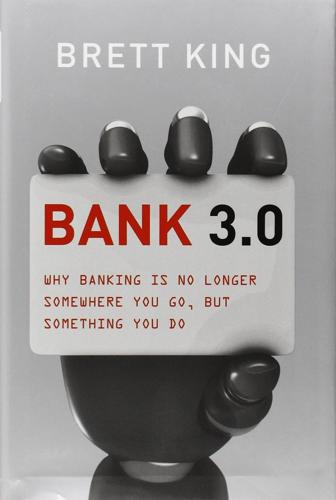
Bank 3.0: Why Banking Is No Longer Somewhere You Go but Something You Do
by
Brett King
Published 26 Dec 2012
In addition to media walls, however, we’re seeing other technologies come into play that assist in the ability to engage customers more seamlessly. YES Bank in India and HSBC Premier in Hong Kong both trialled the use of RFID technology to recognise a customer as they walked into their branch space, accelerating their slot in the “queue” system. RBS allows customers to book a spot in the queue via their smartphone banking app. Incorporating RFID recognition or geolocation mobile triggers into the store experience allows the customer to be recognised, and the store environment to start to be personalised to the needs, behaviours and product footprint of the customer.
…
But they may not have to lose the branding opportunities and client connections that their current ATM network provides. It won’t be long before self-service machines, digital signage and media walls combine into one platform. For the Beijing Olympics, Coca-Cola deployed an interactive touch-screen vending machine from Samsung that they called uVend. And future ATMs might work in a rather similar way. RFID or facial recognition built into the ATM will recognise us and display our bank’s brand as we approach. If not, it cycles through the available brands or paid-for-advertising from the banks that use the network. When we insert our cards or tap our contactless phones to sign in, the ATM becomes a HSBC, Barclays or BofA ATM in schema, branding and interface—the branding proudly displayed, and the touch-screen interface modelled to our bank and/or our most frequent ATM activities.
…
Applications of smart glasses could be anything from an equivalent of our current laptop display while we are on the move, to simply a Bluetooth plug in our app phone showing us in real time a virtual HUD (head-up display) with key information from our device (Caller Id, local weather, e-alerts or appointments, etc.). Incorporating image and facial recognition software, along with RFID technology, smart glasses could remind us of the name and details of a key business contact, an old school friend who passes us by while we’re chilling out at the mall or the current price on Amazon of that book we’re looking at through a retailer’s window. The possibilities are far-reaching, and just a little freaky.
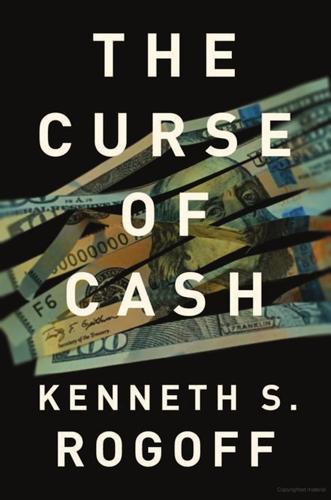
The Curse of Cash
by
Kenneth S Rogoff
Published 29 Aug 2016
For the moment, Goodfriend’s idea is not quite feasible, or at least economically viable, but the time for it might not be far off. Indeed, periodic bouts of consternation have roiled the underground economy on rumors that the government is putting active transmitting radio-frequency identification (RFID) chips into currency, to be able to detect large bags of cash in airports and elsewhere. One can find videos online that show how to put currency in a microwave to fry any embedded chips. The implication is that if an RFID chip is embedded, the microwave might burn a hole in the note, but that is better than getting caught with a big bag of illicit cash. In fact, as of yet there are no embedded chips in US currency, though paper-thin chips are being developed that might make it possible someday, if the government chose to do so.15 Embedded chips (or magnetic strips) may prove unnecessary in any event, given the development of increasingly low-cost cash processors that can scan serial numbers at extremely high speeds.
…
See Fisher (1933), Champ (2008), and Gatch (2009). 13. See Svensson and Westermark (2015). 14. See Goodfriend (2000). Buiter (2003) and Buiter and Panigirtzoglou (2003) were also early advocates of the Gesell solution. 15. “New $100 Bill and RFID Microwave Test,” available at https://www.youtube.com/watch?v=Kn5aqb-mN3Q. See also “Are You Ready for RFID Chips Built into Your Money and Documents,” Kurzweil Accelerating Intelligence, May 7, 2013. 16. If a retail store has a camera monitoring its cash registers and time stamps bills with serial numbers attached, authorities could potentially connect bills and people. 17.
…
See also seigniorage profits from monopoly on paper currency, 217 proxy notes, 22 public health risks, 78–79 Putin, Vladimir (president, Russia), 72 quantitative easing, 123–24, 132–33; empirics of, 136, 140–42; explained, 137–40; financial crisis of 2008, in response to, 135–36; inflation, lack of impact on, 136–37; in a liquidity trap, 246n26; as a policy instrument, limits of, 144–45; risks associated with, 178; zero bound sand trap, escaping from, 142–44 “Quantitative Easing Explained” (Malekan), 140 quantity theory of money, 26 radio-frequency identification (RFID) chips, 166 RAND Corporation, 49, 69 real-time clearing, 67, 92, 94–95, 102–3, 115 Reifschneider, David L., 133, 244n11, 245n17 Reinhart, Carmen M., 122, 177, 243n3, 245n18, 255n10 Reinhart, Vincent, 243n3 reverse money laundering, 4, 80 Rey, Hélène, 207 Ricardian equivalence, 246n25 Robinson, James, 70 Rockoff, Hugh, 192 Rognlie, Matthew, 250n2 Rogoff, Kenneth S., 233n10, 243nn3–4, 245n14, 245n18, 252n2, 255nn9–10, 255n15 Rolnick, Arthur J., 234n13 Rösl, Gerhard, 236n23 Rubin, Robert, 2 Russell, David O., 71 (director, American Hustle) Russia, 44, 83–84, 191, 203 Sands, Peter, 253n5 Sargent, Thomas J., 19 Sbordone, Argia M., 248n5 Schneider, Friedrich, 62, 239n12, 239n16 Schwartz, Anna, 188 Secret Service: foreign holdings of currency, estimate of, 44–45; founding of to fight counterfeiting, 77 security concerns, 111–14 seigniorage, 80–81; cost of substituting interest-bearing debt for paper currency, 86–90; measures of, 81–85; political economy importance of, central bank independence and, 90–91, 106; revenue as a percentage of GDP, 2006–2015, 84; shrinkage of revenues if currency were phased out, 85–86, 202–4 Seitz, Franz, 45, 236n23 Serious Organised Crime Agency (SOCA), 200 sexual exploitation in the United States, 74 shadow policy interest rate, 244n5 Shi, Joanna Y.

Delete: The Virtue of Forgetting in the Digital Age
by
Viktor Mayer-Schönberger
Published 1 Jan 2009
Potential application for expiration dates may even go beyond the confines of personal computers or online services, and include emergent technologies. For example, recently the European Union discussed the implications of RFID (radio-frequency identification) chips and similar networked sensing devices that add information to our digital memories. The Council of the European Union concluded to promote “the possibility of deactivating RFID chips or any other way which provides empowerment and user control.”16 Instead of the relatively stark “silencing of the chips” that the Council suggests, perhaps mandated expiration dates might offer a somewhat finer-grained approach.
…
Cambridge, MA: Harvard University Press. 2002. comScore Media Advisory. “Baidu Ranked Third Largest Worldwide Search Property by comScore in December 2007.” News release. Jan. 24, 2008. http://www.comscore.com/press/release.asp?press=2018. Curry, Michael R. “Location and Identity: A Brief History,” in RFID: Applications, Security, and Privacy, S. L. Garfinkel and B. Rosenberg, eds. 149–62. Saddle River, NJ: Addison-Wesley. 2005. ———. “Toward a Geography of a World without Maps: Lessons from Ptolemy and Postal Codes.” Annals of the Association of American Geographers 95 (2005): 680–91. Deering, Michael F.
…
See also information privacy Privacy Act of 1974 (U.S.), 136 property, 150 Proust, Marcel, 117 Ptolemy, 33 public sphere, 41 purpose limitation principle, 136, 138, 159 Quagliano, Enrique, 195 radio, 44 rating system, 93 reading, 36, 37, 40, 41–42 recall, 22 “Reciprocal Transparency,” 105–8 Reformation, 38–39, 98 religion, 29–30, 37–39, 42 remembering benefits of digital, 93–95 constructive endeavor of human, 27–28, 106–7, 118 cost of, 26 curse of, 13 default of, 68 human, 27–28, 106–7, 114–17 role of, 16–23 shift to, 14 reputation, 106, 142 retrieval, 72–79 decontextualization of digital, 78 digital, 75–79 RFID (radio-frequency identification), 180–81 Ripoli Press, 37–38, 39 Rotenberg, Marc, 150 sample, 54, 56–57 Samuelson, Pamela, 142, 150 Schacter, Daniel, 20–21, 106, 155–56 Schmidt, Eric, 109 Schwartz, Paul, 143, 150 scribes, 36–37 script, 31–42 interpretation of, 34 search engine, 1, 4, 6, 123–25 search query, 6, 76, 175–78 self-censorship, 110–12 server farms, 70 Short Messaging (SMS), 126–27 Snyder, Stacy, 1–2, 4, 5, 102, 109–10, 197 Solove, Daniel, 8, 142 sousveillance, 165 Soviet Union, 103 Spock.com, 104 standardization, 58–60 Starbuck, William, 118 Starr, Paul, 41 storage.
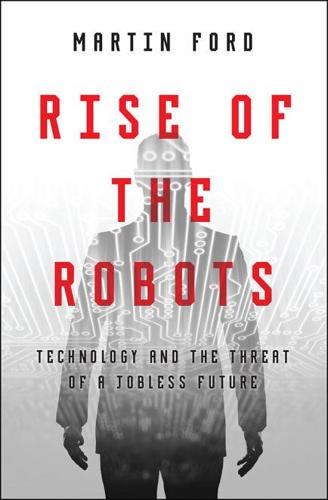
Rise of the Robots: Technology and the Threat of a Jobless Future
by
Martin Ford
Published 4 May 2015
See personal consumption expenditure (PCE) Peltzman, Sam, 267 Peltzman effect, 267 Penn State, MOOCs and, 136 pensions, 222, 224 people analytics, 93 Perelman, Les, 130–131 per-employee valuations, technology sector and, 175 permanent income hypothesis, 210–211 personal consumption expenditure (PCE), 202n personal robots, 7 pharmacists, 172–173n pharmacy robotics, 153–155 Philippines, income inequality in, 46 Pierson, Paul, 57 Piketty, Thomas, 275 Pinker, Steven, 237 “Piquant” system, 99–100 plagiarism, MOOCs and, 136–137 Player Piano (Vonnegut), 32 PlayStation, 4 plutocracy, 219 plutonomy, 198 polarization, job-market, 50–51 politics advancing technology and, 57–58 financial elite’s influence over, 47–48, 59–60 guaranteed income concept and, 260–261, 278–279 post-scarcity economy, 247 Poterba, James, 222 poverty trap, 262 Prey (Crichton), 244 prices deflation and, 216–217 drug, 170–171 effect of automation on, 215–216 PrimeSense, 4 Princeton University, MOOCs and, 133 Principles of Economics (Frank & Bernanke), 37 Principles of Economics (Taylor & Weerapana), 37 productivity, 206–207 defined, 35n information technology and, 52 recessions and, 207–208 technological progress and, 33 wages and, xi, 33, 35–38, 38n product lifecycles, robots and, 11 professionals, erosion of employment for, xvi–xvi “Professionals Against Machine Scoring of Student Essays in High Stakes Assessment” (petition), 129, 130 progress, lack of broad-based, 64–65 proton beam facilities, 164 public universities, MOOCs and, 142 purchasing power distribution of, 197, 198 guaranteed income and, 265–266 jobs and, xvii “Quill” software, 84–86 Rabkin, Eric, 137 Race Against the Machine (Brynjolfsson & McAfee), 60 Radical Abundance (Drexler), 243, 246 radio-frequency identification (RFID), 154, 157 radiologists, artificial intelligence and, xv, 152 Rand, Ayn, 264 recessions investment and, 227 months for employment to recover, 45 productivity and, 207–208 stagnant income, rising costs, and, 217–218 See also Great Recession recursive improvement, Artificial General Intelligence and, 231–232 Redbox movie rental kiosks, 18–19 regulatory capture, 170 religious overtones of Singularity, 235 “Remaining Awake Through a Great Revolution” (King), 29–30 rent seeking, financialization and, 55–56 Republicans, income distribution preferred by, 47n reshoring, 8–12 resource depletion, technology and, xvii, 282–283 restocking, automated, 18–19 retail sector, 16–20, 87, 88. See also online retailing Rethink Robotics, 5, 7, 10 retirement income, 222 Reuther, Walter, 193 reverse engineering the brain, 237 RFID. See radio-frequency identification (RFID) Riegel v. Medtronic, Inc., 150n risk, Peltzman effect and, 267–268 RoboBusiness conference/tradeshow, 7 Robot & Frank (film), 155 robotics, 6–8 cloud, 20–23 See also automation; robots robotic walkers, 157 robots in agriculture, 23–26 box-moving, 1–2, 5–6 consumer, 197n educational, 7 elder-care, 155–158 hospital and pharmacy, 153–155 industrial, 1–5, 10–11 personal, 7 telepresence, 119–120, 157 Rolling Stone (magazine), 56 Romney, Mitt, 272 Roosevelt, Franklin, 279 Rosenthal, Elisabeth, 160, 163 Rosenwald, Michael, 107 ROS (Robot Operating System), 6, 7 Russell, Stuart, 229 Rutter, Brad, 101 Sachs, Jeffrey, 60 Saez, Emmanuel, 46 safety, autonomous cars and, 184–185, 187 Salesforce.com, 134 Samsung Electronics, 70n Samuelson, Paul, x Sand, Benjamin M., 127 San Jose State University, 134 Sankai, Yoshiyuki, 156–157 Santelli, Rick, 170 savings, China’s high rate of, 224–225 SBTC.
…
According to one hospital administrator, paying people to do the same work would have cost over a million dollars per year.15 In early 2013, General Electric announced plans to develop a mobile robot capable of locating, cleaning, sterilizing, and delivering the thousands of surgical tools used in operating rooms. The tools would be tagged with radio-frequency identification (RFID) locator chips, making it easy for the machine to find them.16 Beyond the specific areas of pharmacy and hospital logistics and delivery, autonomous robots have so far made relatively few inroads. Surgical robots are in widespread use, but they are designed to extend the capabilities of surgeons, and robotic surgery actually costs more than traditional methods.
…
The suits lease for just under $2,000 per year and are already in use at over three hundred Japanese hospitals and nursing homes.21 Other near-term developments will probably include robotic walkers to assist in mobility and inexpensive robots capable of bringing medicine, providing a glass of water, or retrieving commonly misplaced items like eyeglasses. (This would likely be done by attaching RFID tags to the items.) Robots that can help track and monitor people with dementia are also appearing. Telepresence robots that allow doctors or caretakers to interact with patients remotely are already in use in some hospitals and care facilities. Devices of this type are relatively easy to develop because they skirt around the challenge of dexterity.
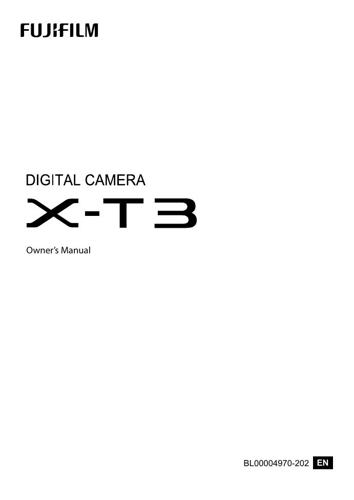
X-T3 user guide
by
FUJIFILM Corporation
Published 10 May 2019
Q This product, which contains encryption function de- • To prevent interference with the above devices, observe the folveloped in the United States, is controlled by the United lowing precautions. Confirm that the RFID transmitter is not States Export Administration Regulations and may not in operation before using this device. Should you observe be exported or re-exported to any country to which the that the device causes interference in licensed transmitters United States embargoes goods. used for RFID tracking, immediately stop using the affected device.. Fujifilm does frequency or move the device to another location. If you • Use only a wireless network or Bluetooth device not accept liability for damages resulting from unautho- notice that this device causes interference in low-voltage rized use.
…
If you • Use only a wireless network or Bluetooth device not accept liability for damages resulting from unautho- notice that this device causes interference in low-voltage rized use. Do not use in applications requiring a high de- RFID tracing systems, contact a Fujifilm representative. gree of reliability, for example in medical devices or other • Do not use this device on board an aircraft. Note that Bluetooth systems that may directly or indirectly impact human life. may remain on even when the camera is off. Bluetooth When using the device in computer and other systems that can be disabled by selecting OFF for D CONNECTION demand a greater degree of reliability than offered by wire- SETTING > Bluetooth SETTINGS > Bluetooth ON/ less network or Bluetooth devices, be sure to take all neces- OFF. sary precautions to ensure safety and prevent malfunction. • Use only in the country in which the device was purchased.
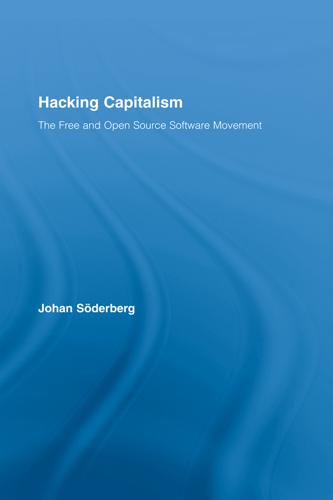
Hacking Capitalism
by
Söderberg, Johan; Söderberg, Johan;
Following this development, the engagement of many hackers in the right to be anonymous on the Internet is growing into a concern for anonymity in the public space as well. Two technologies in particular have alarmed the hacker movement, Radio Frequency Identifiers (RFID) and biometrics. These technologies will enable the same degree of regulation and control in real life as is now possible inside the computer network. RFID are microchips, no bigger than a grain of sand, which scan for radio queries and transmit their unique identification number to the sender. The movement of the body in real space can thus be pinpointed in a virtual, Cartesian grid. RFID tags have been used for many years to track shipments and monitor inventories, and are expected to be used extensively on ordinary household products, branded cloths, and money.
…
Index Aestethic innovation 64, 68, 177 Adorno, Theodor 65, 70, 168, 191–192 Advanced Research Projects Agency, see ARPA Affluent society 99–101 Aglietta, Michel 59 Alienation 10, 156–159, 173, 182, 188, 190 Allopoietic 134–135 Altair 17 Althusser, Louis 77 Analytical Engine 3 Anti-production 120, 213 n.12 AOL Time Warner 89, 91, 125 Apache 24, 28, 38, 44 Apple 17 ARPA (advanced research projects agency) 13–15 AT&T (american telephone and telegraph) 13–15, 19, 23–24, 91, 116 Audience power 66, 68, 198 n.47, 204 n.40 Authorship 74, 78, 80–82, 112, 114, 125, 128–129, 138, 154, 160, 174, 206 n.9 Autonomous Marxism 6–7, 52, 55, 176, 194 n.18, 201 n.9 Autopoietic 134–135, 155 Axelos, Kostas 158–159 Babbage, Charles 3–4 Back Orifice 80 Barbrook, Richard 150, 216 n.27 Bataille, George 147, 149, 154, 216 n.20 Baudrillard, Jean 64, 103, 105, 109, 127, 202 n.19, 211 n.9, n.12 BBS (bulletin board systems) 96 Beauty of the Baud 3, 184 Bell, Daniel 51, 54, 100, 170–171, 173 Bell, Graham 11 Bell laboratory 14 Benjamin, Walter 65, 207 n.18, 210 n.49 Benkler, Yochai 139–140, Berkeley internet name domain, see BIND Berkeley software distribution, see BSD Berne convention 85, 208 n.25 Bertelsmann 124 Biegel, Stuart 91 Bijker, Wiebe 54–55, 203 n.24 Binary code 19, 21–22, 97, 195 n.16 BIND (Berkeley internet name domain) 25 Biometric technology 92–93 Black, Edwin 194 n.15 Boomerang externalities 146 Bowles, Samuel 173 Boyle, James 117, 208 n.24 Brand, Stewart 16, 69 Braverman, Harry 130–133 British cultural studies 9, 65–66 Brooks, Fred 184 BSD (Berkeley software distribution) 15, 23–24, 38 Bulletin board systems, see BBS Burghardt, Gordon 166–167 Bush, Vannevar 12 Caffentzis, George 61–63 Caillois, Roger 166–167, 182 Castells, Manuel 51, 145, 200 n.3, 202 n.19, 216 n.15 CC (Creative commons) 4, 41, 78 Censorship 4, 79–80, 82, 91, 97, 178, 189 CERN (Conseil européen pour la recherche nucléaire) 25 Certeau, Michel de 66, 112, 182 Chaos computer club 180 Charismatic code 153, 217 n.33 Chiapello, Eve 163 Circulating capital 120, 145 Class consciousness 18, 178, 180–181 for-itself 188 struggle 4, 7, 44, 47–48, 54, 56, 67, 72, 76, 103–104, 159, 175–178, 188, 203 n.20, 204 n.27, 212 n.12 Clickwrap license, see shrinkwrap license Coase, Ronald 140 Cohen, Gerald 54 Collective invention, 213 n.6 Collins, Hugh 76–77 Commodification of information 8, 31, 199 n.60, Commodity exchange theory 75–76, 90 Commons 119, 122, 129, 135, 137, 145–148, 150–151, 171–172, 184, 191, 199 n.57, 216 n.18 Community for-itself 183 FOSS developers 21, 23 Compiling 195 n.16 Computer literacy 131–132 Constant capital 127 Copyleft 20–22, 34, 196 n.19, n.21, 198 n.44 Copyright law 8, 18–22, 78–79, 82–85, 94, 98, 112, 113, 143, 154, 181, 195 n.14, 196 n.19, 207 n.15, 208 n.22 Crackers 69, 98, 113, 151, 153, 155, 183, 188, 217 n.35 Creative class 51, 61, 173–174 Creative commons, see CC Cross, Gary 101 Cultural workers 82, 163–164, 192 Culture industry 57, 70, 73, 75, 85, 106, 112, 168, 173, 205 n.46 Cyber attacks 199 n.61 feminism 30, 214 n.32 libertarianism 4, 90, 216 n.27 marx 52 politics 4, 30, 48, 69 space 11, 88, 150 Cycles of struggle 176–177 Cygnus 32–34 Darknet 97 Davies, Donald 195 n.5 Debian 123 Debian-women 30 Debord, Guy 103, 211 n.9 Decompiling 195 n.16 DeCSS see DVD-Jon Deleuze, Gilles 135, 213 n.12, 215 n.34 Denial-of-service attacks 1, 193 n.3 Derrida, Jacques 57, 149, 153, 216 n.24 Desire 18, 27, 48, 105, 109, 136, 155–156, 161, 174, 185–186 Deskilling 5, 9, 45, 97, 111, 130–131, 209 n.44, 210 n.56 Desktop factory 186 Developing countries and FOSS 30, 87, 96, 210 n.54 Difference Engine 3 Digital rigths management, see DRM DRM (digital rights management) 22, 42, 91, 183, 209 n.45 DVD-Jon 87–88, 91 Edelman, Bernard 77–78, 80, 207 n.16 Edwards, Richard 89 Electro-hippies 178 Electronic Frontier Foundation 58, 208 n.21 Ellickson, Robert 217 n.30 Empire 6 Enclosure movement 71, 129, 171 Engels, Friedrich 53, 115 Enzensberger, Hans 194 n.16, 210 n.49 Excess of expenditure 49, 100, 136, 147–148, 153–155, 171, 174 Exchange value 45, 56, 103–105, 109, 144, 211 n.12 Fan media production 112–113, 127, 164, 183, 191, 212 n.20, 194 n.16 Fanning, Shawn 124–125 Felsenstein, Lee 17 Filesharing networks 4, 8, 10, 31, 73, 93–94, 113, 127, 137, 150–153, 189 Firefox 37, Fisher, William 74–75 Fixed capital 15, 27, 39, 68 Flextronics 96 Florida, Richard 51, 173–174 Fordism 59, 67, 101, 203 n.26 Formal subsumption 56, 118 FOSS (free and open source) community 5, 8, 28–29, 38, 49, 111, 125, 133, 172, 177 development model 6, 9, 24, 41, 49, 115, 121, 137, 139–140, 190 license 8, 20, 28, 40, 78, 122, 125, 190 movement 26–27, 31–32, 38, 43, 50, 116, 133, 150, 184, 195 n.17 Foucault, Michel 48, 57, 76, 80, 128, 181 Frankel, Justin 124–125 Frankfurt School 57, 160 Free and open source software, see FOSS Freenet 80, 214 n.18, Free software foundation 19, 22–23, 37, 73, 126, 179–180, 196 n.20, n.23 movement 151, 195 n.17 Free speach not free beer 32, 73, 123 French regulation school 59, 204 n.27 French revolution 1–2, 79, 159, 161, 165, 187 Friedman, Andrew 133 Frow, John 151 Gaines, Jane 207 n.20 Garnham, Nicholas 102 Gates, Bill 4 Gay, Paul du 106–107 General economy 147 intellect 60, 63, 184 public license, see GPL Giddens, Anthony 200 n.6 Gift economy 10, 54, 100, 137, 148–152 Gintis, Herbert 173 Gnome 35, GNU (GNU is not Unix) book 210 n.55 Emacs 20, 32 /Linux 4, 15, 22–24, 26, 28, 31–35, 38–39, 43–44, 47, 87, 123, 163, 183, 196 n.23, n.28 Gnutella 124–125, 153, 214 n.18 Google 41 Gopher 25 Gosling, James 20 Gouldner, Alvin 201 n.12 GPL (General public license) 19–24, 27, 31–32, 34–35, 37, 96, 129, 185, 196 n.19, n.20, n.21, 197 n.44 Gracenote 41, 199 n.57 Guattari, Felix 135, 213 n.12, 215 n.34 Habermas, Jurgen 202 n.16 Hacker manifesto 28, 30, 172 spirit 44, 108, 174, 199 n.66 Hacktivists 16, 55, 84, 178, 180, 182 Haeksen 30, 197 n.41 Halloween Documents 26 Haraway, Donna 197 n.42 Hardin, Garrett 145–146, 148 Hardt, Michael 6, 47–48, 52, 60, 194 n.18, 204 n.30 Hardware hackers 7, 17–18, 96 Harrison, Bennett 140–141 Harvey, David 95 Haug, Wolfgang 104–105 Hayes, Dennis 44 Hayles, Katherine 71–72, 203 n.22 Hearn, Francis 168, 182 Heeles, Paul 108 Hegel, G.W.F. 52–53, 56, 74, 157 Heidegger, Martin 160 Heller, Michael 148 High-tech cottage industry 139 gift economy 10, 100, 137, 150 Himanen, Pekka 100, 108, 174, 199 n.66 Hippel, Eric von 205 n.44 Hirsch, Fred 102, 171 Hobsbawm, Eric 76, 189, 193 n.6 Holloway, John 7 Homebrew computer club 17, 185 Homo ludens 165 Horkheimer, Max 65, 70, 168 Howard, Michael 114–115 Huizinga, Johan 165–167, 182 Human genome project 39, 93 Hyde, Lewis 152, IBM 5, 7, 17–19, 24, 38, 43–44, 47, 73, 92, 108, 128, 142, 194 n.15 Identification 90–93, 189 Identity 98, 110, 123, 174–177, 181 Illich, Ivan 128, Immaterial labour 52, 60–61, 71 Independent media centre (IMC) 126 Information age 8, 19, 31, 50–54, 57, 60, 108, 180, 182, 199 n.66, 202 n.19, 203 n.26 exeptionalism 69–70, 73, 132, society 50 Instrumentality 10, 49, 56, 116, 160, Intel 17, 38–39, 43, 92, 198 n.52 Intellectual property enforcement 5, 43, 83, 85, 85, 88, 94, 98, 133 regime 19, 35, 42, 65, 72–75, 80, 82–85, 111, 113–114, 119, 123, 154, 174 Internet explorer 36–37 Jacquard Joseph-Marie 1, 3 Jacquard loom, 1, 193 n.1, n.2, n.4 Jameson, Fredric 56, 64, 201 n.8, 202 n.17 Jefferson, Thomas 69, 205 n.50 Jenkins, Henry 212 n.20 Jessop, Bob 143, 216 n.14 Johansen, Jon, see DVD-Jon Johnson-Forrest Tendency 143 Kant, Immanuel 74, 161 Kautsky, Karl 53–54 KDE (K desktop environment) 35 Kenney, Martin 39, 67 Keynesianism 143, 170 King, John 114–115 Kirchheimer Otto 77 Kloppenburg, Jack 90 Kopytoff, Igor 150 Kropotkin, Peter 129 Labour contract of the outlaw 123 Laclau, Ernesto 175 Lamer 58, 153, 155 Landsat system 119 Late capitalism 56, 101, 104, 120, 168, 188, 201 n.8, 202 n.17, n.18 Lazzarato, Maurizio 60–62 Lenin, Vladimir 4, 115 Lessig, Lawrence 70, 88 Lévi-Strauss, Claude 152, 217 n.34 Levy, Steven 17 Libertarianism 18, 34, 50, 90, 182, 196 n.28, 216 n.27 Library economy 136, 151–153, 155 Liebowitz, Stan 122–123, 144, Linux, see also GNU/Linux chix 30 kernel 21, 23, 49, 193 n.7, 196 n.23 Liu, Alan 48 Locke, John 74, 78, 147, 154 Luddites 1–2, 189 Lukács, Georg 162, 178–181, 184 Lury, Celia 81 Lyotard, Jean-Francois 201 n.10 Machlup, Fritz 69, 206 n.58 Magic circle 165, 167, 190 Make-believe markets 145–146, 148, 155 Mallet, Serge 60, 204 n.29 Malinowski, Bonislaw 148 Mandel, Ernest 56, 59–60, 62–63, 184, 202 n.17, n.18, n.19 Marconi Wireless Telegraph Company 116 Marcuse, Herbert 3, 10, 116, 159–164, 182, 184 Marx, Karl 2, 4, 7, 48, 50, 53–54, 56–57, 60–61, 64, 81, 88, 101, 104, 109–111, 114–115, 118–119, 133, 139, 141, 144–145, 156–162, 173–175, 197 n.32, 201 n.12, 211 n.5, 212 n.19, 215 n.4 Maslow, Abraham 99–101, 211 n.2 Mass worker 7, 176 Maturana, Humberto 134, 136s Mauss, Marcel 148–149 McBride, Darl 31, 87 McLuhan, Marshall 58 McRobbie, Angela 108 Means of production 9, 48, 57, 81, 116, 129–130, 135, 186, 192 Mentor, the 172 Micro-capital 141 Microsoft 4, 19, 24, 26, 34, 36–39, 42–43, 63, 87, 92, 96, 144 Mill, John Stuart 69 Minitel 14 Minix 23–24 Moglen, Eben 4, 126 Mokyr, Joel 55 Moody, Glen 35, 37, 130 Moore, Fred 17 Morris-Suzuki, Tessa 63–64 Mosaic 36, 198 n.50 Mosco, Vincent, 204 n.40 Motion pictures association of america, see MPAA Mouffe, Chantal 175 Mozilla 36–37, 198 n.50 Mozilla crypto group 126 MPAA (motion pictures association of america) 42, 87–88, 199 n.58, 209 n.36 Multitude 6–7, 60, 181 Mumford, Lewis 134, 147 Naples, Nancy 200 n.77 Napster 124–125, 213 n.17 Naughton, John 12, 15 N/C technology 45–46, 131 Negri, Antonio 6–7, 47–48, 52, 56–57, 60–61, 176–177, 194 n.18, 201 n.9, n.15, 202 n.16, 204 n.31, n.33 Neo-Luddism 134 Netscape 36–38, 126 Network externalities 38, 144 firm 137, 141–142, 144 industry 27, 137 science 141, 215 n.2 society 51, 137, 142 Neuman, Franz 77 Neumann, John von 61, 63 New economy 124, 132, 144 New left 16–17, 150–151, 157, 212 n.12 Noble, David 45, 131, 206 n.59 Norton, Bruce 202 n.17 Nullsoft 125 Nupedia 128 Oekonux 5 Offe, Claus 214 n.30 Office despotism 18 Opencores project 96 Open marxism 7 Open source car 185 development labs 43 initiative 36, 38–41, 78, 180 Organised labour 27, 41, 69, 72, 95–96, 131–132, 141–142, 188, 190 Pashukanis, Evgeny 75–77, 206 n.2 Patent costs 116–118 expansion 22, 39, 83–84, 208 n.24 pools 119 Peer-to-peer filesharing networks 31, 91, 123– 125, 151 labour relations 123, 129 Perelman, Michael 86, 171 Perpetual innovation economy 64, 120 Petty commodity trader 61, 81, 159 PGP (pretty good privacy) 80 Phone phreaks 16, 96–97 Pirate sharing 69, 122–123, 183, 209 n.33, n.45 Play drive 10, 18, 49, 154, 161–162 struggle 3, 10, 156, 174, 182, 190–192 Political subject 156, 174 Poster, Mark 128 Post- fordism 8, 59–61, 67, 81, 107, 116, 133, 135, 139–140, 163, 168, 176, 183, 203 n.26, 204 n.27 industrialism 5, 51–52, 54, 56, 60–61, 71, 100, 103, 130, 137, 139 marxism 175, 177 modern capitalism, 52, 56, 61, 64, 73, 101, 104, 120, 145, 168, 175–176, 188, 216 n.20 Poulantzas, Nicos 218 n.18 Pretty good privacy, see PGP Professional worker 176 Proprietary software 9, 16, 19, 21, 24, 26–27, 33–34, 38, 41, 115, 129–130, 139, 144, 198 n.46, n.52, 200 n.71 Prosumer 106–108 Put to work 8, 48, 73, 82, 177, 184 Qt 35 Radio amateur 17, 96, 185, 191 Radio frequency identifiers, see RFID RAND (research and development) 13 Rand, Ayn 206 n.61 Raymond, Eric 25–27, 196 n.28, 197 n.29 Real subsumption 56, 118, 135 Record industry association of america, see RIAA Recuperation 49, 164, 182 Red Hat 26, 32–35, 43, 47, 68, 196 n.27, 197 n.33, n.44, 198 n.45 Refusal of work 44, 108 Rehn, Alf 217 n.35 Representation politics 66, 110, 191 Research and development, see RAND Restrictive economy, see general economy RFID (radio frequency identifiers) 92 RIAA (record industry association of america) 42, 124–125, 153, 199 n.58 Robins, Kevin 194 n.17, 209 n.44 Romanticism 2, 81–82, 159, 162–163 Ross, Andrew 46, 199 n.66 Sabotage 1, 10, 46, 111, 188, 193 n.6 Sahlins, Marshall 70 Sanger, Larry 128 Sarnoff law 66 Scarcity 70–71, 99–101, 109, 112–113, 130, 147, 155, 160, 169, 190 Schiller, Dan 71, Schiller, Friedrich 23, 10, 154, 160–163, 184 Schumpeterian competition state 143 Schumpeter, Joseph 30 SCO/Caldera 43–44, 87 Self-administrated poverty 172 Sennett, Richard 45 SETI@home 127 Sham property 141 Shiva, Vandana 209 n.45 Shrinkwrap license 21 Shy, Oz 122, 143–144 Silicon Valley 44, 180 Simputer 210 n.54 Sitecom Germany GmbH 22 Situationists 150 Smythe, Dallas 66–67 Social bandit 76, 93–94, 98, 189 division of labour 4, 77, 99, 123, 149, 158–159, 164, 174, 187–188, 192, 205 n.44, 210 n.49 factory 47–48, 56, 64, 68, 89, 177 labour 38, 56, 71 planning theory 74–75 taylorism 90, 97–98, 209 n.44 worker 7, 60, 176–177 Sony 42 Stallman, Richard 19–20, 32, 37, 73, 179, 195 n.17, 196 n.23, 200 n.71 Strahilevitz, Jacob 152–153, 217 n.33 Stefik, Mark 92 Sterling, Bruce 11, 15 Strahilevitz, Jacob 152–153, 217 n.33 Surplus labour 8, 47–48, 61, 63, 67, 211 n.5 profit business model 34, 68 value 33–34, 47, 50, 61–64, 66–68, 101, 105, 110–111, 118, 120–121, 134, 156, 202 n.16, 204 n.40, 213 n.12, Surveillance 4–5, 85, 90–91, 97, 143, 145, 189, 214 n.18, Tanenbaum, Andrew 23 Taylorism 8, 45–46, 48, 90, 115, 132 Techies 16, 18, 30, 178, 182 Technical division of labour 27, 48, 115, 123, 132, 142, 155, 199 n.68 Technicist 54, 201 n.6 Technological american party 16, 18 Technological determinism 57–58, 182 Terranova, Tiziana 68 Toffler, Alvin 51, 106 Torvalds, Linus 21–23, 26–27, 49, 193 n.7, 197 n.32 Travis, Hannibal 207 n.15 TRIPS 86, 208 n.29 Troll Tech 35 Tronti, Mario 47 Trusted computing 92, 96 Unix 14–15, 19–20, 23–24, 43, 87, 195 n.7 User centred development 9, 27, 41, 65–68, 129, 131, 133, 192, 205 n.44 community 50, 68, 111, 123 friendliness 17, 45, 90, 98 Use value 68, 71, 101–105, 109, 113, 120, 122, 129, 144, 147, 153, 155, 211 n.9, n.12 Vaneigem Raoul 212 n.21 Varela, Francisco 134, 136 Variable capital 127 Veblen, Torsten 211 n.7 Villanueva, Edgar 144 Virno, Paulo 57, 73, 172, 177 Virtual community 152–153, 217 n.30 space 90, 92–93, 95, 184, 203 n.22, 217 n.33 Volosinov, Valentin 202 n.20 Voluntarism 5, 29, 179 Voluntary labour 2, 8, 107, 129, 166 Wales, Jimmy 128 Warez 153, 183, 217 n.35 Wark, McKenzie 177 W.a.s.t.e. 125 Watt, Duncan 141–142 Watt, James 166 Watt, Richard 213 n.14 Wayner, Peter 151–152 Webster, Frank 194 n.17, 200 n.3, 201 n.7, 209 n.44 Wetware 133–135 White collar working class 48, 97, 130, 200 n.72 hat hacking 180 Whole Earth Catalog 16 Wiener, Norbert 12 Wikipedia 128–129 Williams, Raymond 58 Windows 25, 41, 43, 86–87, 123, 126, 163, 183 Winner, Langdon 16, 203 n.25 WIPO (World Intellectual Property Organisation) 18, 83, 91 Wired Magazine 18, 58, 180 Witheford, Nick-Dyer 51, 204 n.31 Wolfgang, Haug 104–105 Wolf, Naomi 105 Wood, Stephen 131 Workfare state 135, 171 World Intellectual Property Organisation, see WIPO World Trade Organisation, see WTO Worshipful Company of Stationers London 79 Wright, Steve 201 n.9 WTO (World Trade Organisation) 86, 126, 178 Yahoo 41 Young, Robert 26–27, 33, 126, 196 n.27, 198 n.46, n.52 Youth international party line 16 Zero work 49 Zizek, Slavoj 4, 175
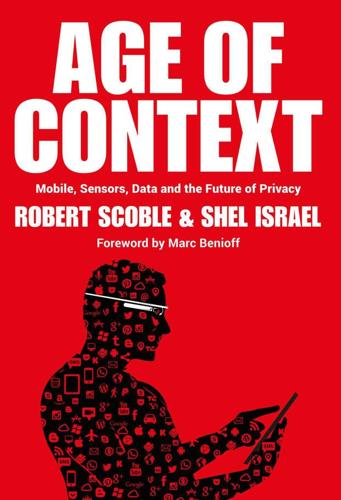
Age of Context: Mobile, Sensors, Data and the Future of Privacy
by
Robert Scoble
and
Shel Israel
Published 4 Sep 2013
More than that, they use contextual technology. Every card and every chip is embedded with a tiny RFID-like chip. Every gaming table has a sensor underneath it to detect flimflams such as a player pulling an extra ace out of his sleeve. That isn’t wearable technology, but the sensors casinos use come from former Swiss watchmaking company NagraID, which has reinvented itself by designing highly secure miniature technology. NagraID chips make credit cards and loyalty cards smart enough to know their owners and their location. That same technology in the form of an RFID (radio-frequency identification) chip is embedded on contextual passes worn by skiers at Aspen Snowmass, the world’s most popular ski resort, and in the Disney’s MagicBands, making transactions for hotels and meals automatic.
…
Combine NagraID with a VinTank geo-fence and you’ll get a new level of personalized, location-specific services or sales, where payments can be automatically authenticated and processed. VinTank also extracts data from a customer’s previous recommendations, so the restaurant, amusement park or hotel can customize its service and offers to each customer’s preferences. That little RFID chip and a few tiny sensors on a card will generate a very large improvement in personalized service, and with it enhanced customer loyalty. Now, toss in one more piece of technology. Put on a digital eyewear device such as Glass or Oakley Airwave, and you’ll have a contextual, wearable system that knows your location, your current activity, your preferences as well as what you are looking at in real time.
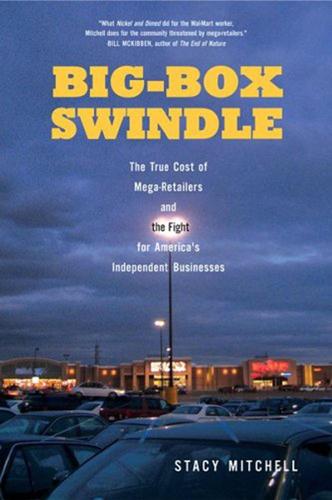
Stacy Mitchell
by
Big-Box Swindle The True Cost of Mega-Retailers
and
the Fight for America's Independent Businesses (2006)
Blythman, Shopped, 234–35; Wal-Mart, 2004 annual report; Mark O’Neill, NOTES 265 “Retailers under Siege with ‘Wolves’ at the Door,” South China Morning Post, Nov. 24, 2004, 12. 35. Jack Neƒ, “Wal-Marketing: How to Benefit in Bentonville,” Advertising Age, Oct. 6, 2003, 1; Anne D’Innocenzio, “Wal-Mart Suppliers Flocking to Arkansas,” Associated Press, Sept. 21, 2003; Fishman, The Wal-Mart Eƒect. 36. Mary Brandel, “RFID: Smart Tags, High Costs,” Computerworld, Dec. 15, 2003; Christine Spivey Overby, RFID At What Cost? (Cambridge, Mass.: Forrester Research, Mar. 1, 2004). 37. Marc Greenberger and Randi Lass, “A Fundamental Change in Retail: ScanBased Trading, No Inventory Costs for Retailers,” Chain Drug Review, May 19, 2003, 3; Marc Greenberger, “SBT: From Theory to Practice,” Chain Drug Review, June 30, 2003, 3. 38.
…
Much of the work done at manufacturers’ Bentonville branch o‰ces benefits Wal-Mart at no cost to the company. Retailers also commonly require vendors to adopt expensive new technologies that are of little benefit to themselves, but that reduce labor costs for the chains. Costco, Target, and Wal-Mart, for example, are beginning to demand that suppliers embed radio frequency identification (RFID) tags in 22 BIG-BOX SWINDLE their merchandise. These tiny microchips, about the size of a grain of sand, emit signals that can be picked up by specialized scanners. They make managing and tracking inventory much easier for retailers. Wal-Mart expects the tags to reduce payroll at its distribution centers by as much as 10 to 20 percent.
…
See also government; land-use policy 313 public relations, corporate retail, 4, 34–35, 97–99, 122, 209, 201–202 public spaces, 79–80, 83–85, 92–96 publishers, 24, 140–42, 145–46, 149, 185–87 Puryear, Kathy, 232 Putnam, Robert, 77 PW grocer, 48 quality of life. See community life quality of products and big-box pricing, 132–33 racial diƒerences, corporate manipulation of, 202 radio frequency identification (RFID) tagging, 21–22 Raguski, Steve, 231, 256 Ramos, Paul, 236 raw materials, mega-retailer sourcing of, 25–26 real estate development. See development, land record labels, 148–49 Red Hook, Brooklyn, 91, 202 regional-level planning, 194, 218–21 regional draw of big-box stores, 38–39, 66 Reile, Mike, 236, 238 Reilly, William J., 108–9 Reiner, Leslie, 186–87 relationships at local level: and consumer choice, 153; and economic capital, 41–42, 48–49, 55; and local business satisfaction, 225–26, 244–45; and social capital, 77, 78–80, 87 remodeling contractors’ cooperative, 247 Rendell, Ed, 174 rents, escalation in, 233–34 Reny, John, 133 314 INDEX restaurants, 11–12, 87 retail gravitation, law of, 108–9 Review (East Liverpool, OH), 40–41 RFID (radio frequency identification) tagging, 21–22 Rhode Island: Pawtucket, 89; Providence, 91 Riley, Ken, 158–59 Rite Aid, xii, 89, 90, 134 River Bank Books & Music, 230–31 road networks and sprawl costs, 5, 67, 109–10 Roberts, Bruce, 226 Robinson, Chuck, 144–45, 249, 256, 257 Robinson-Patman Act, 183–84, 188–89 Robnett’s Hardware, 28, 29 Rochefort, David, 154–55 Rockne, Jennifer, 253 Roosevelt, Franklin, 177 rootedness, 71–72, 76, 77, 82–85 Rother, Lisa, 212 Rubbermaid, 23 Rubin, Peter, 31, 243 Ruckelshaus, Cathy, 62 Ruƒ N’ Stuƒ, 232 runoƒ from parking lots, 106–7, 117–19, 218 rural economies, mega-retailers’ impact, 47 safety at work, big-box violations of, 56, 158 sales taxes, 65–66, 69, 169, 176–77 Salzman, Burt, 85 Sam’s Club, 9, 165, 168, 219 Santa Fe Custom Shutters and Doors, 24 Santa Fe Shares card, 254–55 Sather, Don, 204 Savage, Ronald, 67 scale: growth in size of retail stores, 208–210; local government restric- tions on size of retail stores, x, 192–98, 210–13 Schaefer, Gina, 224–25 Schaefer, Mark, 224 Schanen, Bill, 71 Schueler, Tom, 118 Scott, Lee, 14 Sears, Roebuck & Co., 3, 13–14 Seely, Frank, 241 Sekula, Greg, 90 self-reliance, local, xviii, 75, 80–81.
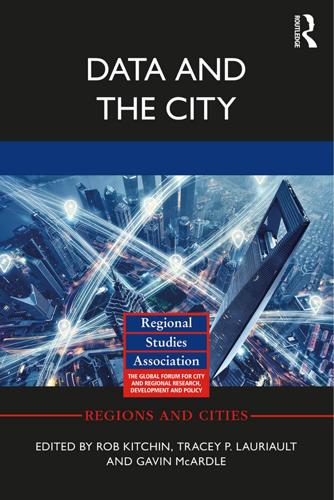
Data and the City
by
Rob Kitchin,Tracey P. Lauriault,Gavin McArdle
Published 2 Aug 2017
Sensors deployed on street infrastructure such as bins and lampposts or in shops/malls capture and track phone identifiers such as MAC addresses. The IDs of devices which access or try to access a wifi network are captured and tracked between wifi points. Barcodes, magnetic strips or embedded RFID chips are tracked when they are scanned to gain entry to buildings or transportation. Embedded GPS in devices and vehicles communicate location and movement via cellular or satellite networks. Transponders with embedded RFID chips broadcast their IDs and are tracked by scanning receivers, commonly used in automatic road tolling or electronic tagging of people on probation. Such as using ATMs, credit cards or checking a book out of a library that leaves a digital record. 54 R.
…
Because these data are recorded at the exact time when the smart card or mobile device is linked to the system in question, there is a continuous or at least continual record of activations which represent real-time collection, either accessible in real-time itself or for post hoc analysis. In short, the data are as voluminous as the number of activations. If this is phone calls, then it is the number of calls made from that device per day or over whatever unit of time and space the data are aggregated to. Here, we will use data generated by the Oyster card, a RFID smart card used on all public transport in Greater London. This card stores the money that travellers use to pay for journeys and the system is designed to recognize the category of payer as well as the time and place where the traveller taps in or out of the system. Travellers tap in and out on trains but only tap in on buses.
…
Index abstraction 17, 90, 91, 93, 114, 117, 128, 142, 143, 160, 165, 166, 173, 179 accountability 48, 62, 64, 67, 68, 113, 120, 122, 144, 220 Actor Network Theory (ANT) 22, 86, 94, 161 Acxiom 75, 76 agency 95, 153, 165, 197, 198, 201, 205, 217 algorithm 1, 19, 20, 27, 31, 51, 53, 54, 102, 117, 143, 159, 160, 161, 172, 177, 179, 203, 205, 214, 216 API 7, 46, 99, 113, 116, 130, 135, 157 apps 23, 48, 130, 138 assemblage 19, 20, 22, 22, 78, 85, 158–60, 162, 163, 164, 192, 193, 213, 216 assemblage theory 7, 157 automation 9, 26, 31, 31, 34, 175, 184, 197, 218 auto-spatialization 162 Batty, M. 1, 2, 3–4, 10, 17, 19, 20, 26, 31, 33, 34, 47, 75, 114, 158, 190 bias 63, 65, 73, 74, 76, 77, 78, 79, 87, 92, 98, 99, 100, 102, 103, 104, 117, 118, 195, 196, 197, 198 biopolitics 174 bitcoin, 7, 141–3, 148, 149, 150, 151, 153, 154 black-boxed 11, 22, 24, 45, 51, 53, 75, 76, 119, 156, 214 blockchain, 2, 7, 141–57 Borgmann, A. 214, 215, 216, 221–22 boundary object 86, 88, 93 calibration 1, 35, 50, 77, 102, 116, 117, 142, 147 cameras 17, 46, 52, 53, 113, 127, 213, 214, 219, 220, 221 capital 9, 77, 114, 151, 196 capta 60, 68 Castells, M. 25, 26, 156 census 31, 32, 33, 45, 99, 113, 120, 173 Chicago school 18, 24 CitiStat 121 citizen science 2, 9, 11, 21, 46, 209, 213, 216–19, 222 citizenship 2, 9, 11, 203, 207 city operating systems 1, 46, 47, 48 Clery Act 67, 68 code/space 22, 76–77, 159 Cohen, J. 204, 205 communities of practice 86, 88 community 9, 21, 22, 25, 26, 27, 63–4, 91, 100, 123, 145, 204, 216, 217, 220, 221, 222 context 5, 6, 8, 21, 22, 23, 50, 51, 60, 63, 67, 68, 72, 73, 79, 80, 92, 98, 99, 100, 101, 103–05, 115, 122, 163, 166, 179, 191–7 contingency 49, 51, 52, 76, 86, 87, 90, 92, 122, 160, 181 control 10, 11, 44, 48, 51, 54, 60, 62, 76, 122, 166, 202, 203, 214, 217 control rooms 1, 7, 17, 46, 47, 111 counter-narrative 6, 9, 68, 120, 122 crime 5, 53, 59–69, 141, 202 critical data studies 72, 75, 80, 81, 91, 173, 179 crowdsourcing 46, 68, 69, 105, 113, 222 culture 18, 24–7, 49, 60, 64, 68, 95, 100, 104, 114, 153, 159, 191, 193 Customer Relationship Management 153 cybernetics 19, 48, 92, 165, 202, 207 cyberspace 158, 160, 201–07 dashboard 2, 6, 7, 17, 47, 111–124, 135, 137, 138, 139, 141, 154, 190, 197, 198 data: access 11, 17, 23, 45, 50, 51, 60, 61, 64, 68, 99, 105, 113, 115–17, 122, 226 Index 123, 131, 138, 139, 158, 174, 190, 205, 207, 208; administration 2, 45, 46, 47, 78, 88, 111, 113, 127; analytics 1, 19, 45, 47, 48, 53, 59, 60, 74, 75, 127, 196, 197; assemblage 4, 6, 11, 50, 51, 53, 86, 181; big 1, 3, 4, 6, 9, 32, 33–39, 41, 42, 44, 45–9, 50, 51, 52, 72, 75, 78, 104, 113, 115, 116, 118, 122, 127, 135, 138, 139, 159, 175, 184, 189–91, 213, 216; brokers 1, 9, 10, 46, 53; citizens 9, 10, 11, 201–10; control 4, 45, 51; coverage 4, 45, 50, 103; crime 4, 59–69; cube 4, 32–33; culture 1, 2, 8–9, 10, 11, 189–198; derived 5, 44, 53, 113; determinism 53; encounter 5, 73, 79–81; financial 76, 77; framework 51, 116, 184; friction 2, 6, 93, 99, 101, 103; governance 8, 189, 196; indexical 2; infrastructure 1, 2, 5, 7, 8, 77, 78, 85, 156–66, 172, 173, 180, 182, 193; integrity 4, 45, 52, 66, 67, 68, 73, 144; journey 5, 85, 93; lineage 73, 80, 116, 117; linked 184; management 59, 174, 177; minimization 52; mining 31, 38, 42, 47, 114; model 8, 45, 102, 171, 173, 175–77, 178, 179, 180–82; open 1, 4, 10, 47, 48, 59, 60, 61, 64, 66, 67, 69, 77, 99, 113, 116, 118, 120, 122, 124, 193, 196, 198; ownership 4, 45, 51, 80, 202, 208; politics 10, 49–51; portal 7, 99, 123, 139, 193; power 8, 11, 189–98; practice 2, 8, 10, 75, 76, 91, 92, 93, 94, 189, 191, 193–7, 198; protection 4, 45, 64, 207, 208; provenance 2, 5, 72–81, 85, 95, 180, 184, 202; proxies 6, 98, 99, 115, 138, 153; quality 2, 5, 45, 50, 61, 65, 89, 90, 103, 116–18, 194; re-use 66, 116, 128, 134, 190, 193; science 4, 10, 32, 47, 139; security 4, 45, 52; sharing 4, 7, 63, 78, 116, 127, 128, 134, 139; small 4, 32, 33, 41, 46; spatial 32, 72, 73, 79, 80, 117, 118, 131, 175; statistical 47, 61, 64, 113; sticky 6, 98–105; threads 5, 11, 85–95 database 7, 8, 19, 23, 45, 80, 81, 87, 87, 141, 145, 145, 153, 159, 171, 172, 173, 178, 179, 181, 184 data-driven urbanism 2, 3, 4, 11, 12, 44, 48, 113 dataveillance 4, 10, 45, 49, 52, 197 democracy 2, 9, 11, 122, 190, 222 demographic 60, 63, 100, 101, 104, 192, 196 device paradigm 9, 214–16, 217, 218 Dodge, M. 21, 22, 46, 48, 49, 52, 76, 79, 157, 159, 175, 204, 205, 214 Dublin Dashboard 6, 113, 117, 118, 120, 122 dynamic nominalism 8, 11, 181, 182–85 efficiency 11, 19, 48, 72, 75, 123, 127, 190, 196, 197, 213, 222 embodiment 92, 159, 203, 209, 210 empowerment 19, 48, 147 epistemology 2, 3, 6, 7, 10–11, 17, 18–21, 22, 27, 59, 77, 78, 85, 113–15, 121, 123, 160, 162, 163, 194, 214 error 5, 88, 89, 99, 117, 118, 120, 154, 180, 217 essentialism 4, 75, 114, 115, 158 ethics 2, 10, 27, 45, 49, 52–3, 95, 122–123, 190, 198 Euclidean space 7, 161, 162, 164 Evans, L. 23 fab lab 219 Facebook 76, 130, 153, 156, 214, 215 feminism 94, 202 focal practice 9, 214–16, 217, 218, 219–221, 222 Foucault, M. 50, 51, 78, 174, 178, 179, 181, 203, 205 Foursquare 46, 77, 78, 156 Fuchs, C. 206, 207 gender 63, 68, 196 geodemographic 19, 53, 76, 78, 123 geoservices 7, 128, 131–4, 135, 136 geosurveillance 49, 52 Github, 164 Google 73, 76, 104, 130, 135, 160, 210, 216, 217, 220 governance 1, 2, 8, 9, 44, 45, 48, 49, 72, 78, 85, 95, 104, 115, 121, 122, 123, 191, 192, 193, 197, 202; algorithmic 48, 54; anticipatory 4, 45, 49, 53; technocratic 9, 49, 78, 121 government, 9, 10, 19, 21, 22, 48, 59, 64, 79, 88, 111, 113, 116, 141, 174, 189, 190, 192, 193, 205, 208, 222 GPS 46, 53, 80, 149, 152, 160, 165, 217, 219 gravity model 36 hacking 4, 45, 48, 49, 52, 105, 219, 221 Hacking, I. 8, 172, 178, 179, 181–83 Hägerstrand, T. 141, 144, 145, 153 HarassMap 68 heterogeneity 19, 27, 39, 50, 160, 179 Index 227 IBM 19, 47, 189, 190, 218 ideology 5, 20, 21, 49, 86, 95, 114, 115, 205, 206, 214 immutable mobile 86, 162, 163 indicators 5, 51, 85, 88, 89, 90, 91, 113, 115, 116, 117, 122, 138, 139, 194 inequality 49, 62, 100, 101, 146, 158 infant mortality 86–9 infrastructure 1, 3, 22, 40, 44, 45, 48, 49, 50, 52, 54, 66, 72, 77, 85, 86, 91, 92, 111, 127, 136, 157, 158, 159, 162, 172, 179, 184, 184, 189, 192, 195, 205, 214 innovation 48 institution 1, 5, 9, 10, 19, 20, 22, 50, 60, 61–2, 68, 78, 98, 99, 116, 174, 179, 182, 183, 210 instrumentally 2, 5, 6, 9, 11, 12, 23, 54, 72, 121, 122, 123, 222 intelligent transport systems 2, 48 interface 22, 25, 26, 51, 93, 114, 130, 131, 133, 134, 158, 166 internet of things 46, 127 interoperability 6–7, 45, 127, 129, 130, 131, 134, 135, 136, 139, 184 interpretation 5, 33, 34, 60, 68, 79, 80, 87, 117, 119, 150, 194, 209, 210, 214 ISO 37, 120 51, 89, 90, 91 Judgement 5, 10, 60 Kitchin, R. 1, 4, 6, 8, 11, 17, 20, 21, 22, 27, 34, 44, 46, 47, 48, 49, 52, 53, 60, 74, 75, 76, 78, 85, 113, 114, 115, 116, 121, 122, 157, 159, 171, 178, 179, 180, 189, 190, 190, 191, 192, 194, 196, 197, 204, 205, 214 labour 10, 100, 153, 190 Latour, B. 22, 159, 160, 161, 162, 164, 165, 166, 208 ledgers 141–57 Lefebvre, H. 165, 206, 209 Lessig, L. 204, 205 licensing 45, 53, 85, 95, 116, 123 lightings 101–03 literacy 113, 119–20, 123, 158, 194 living labs 21, 148 loose coupling 7, 128, 129, 137 machine learning 3, 19, 42, 47, 145 management 3, 4, 6, 10, 17, 25, 34, 45, 47, 48, 50, 54, 61, 62, 95, 111, 113, 115, 120, 121, 122, 127, 134, 135, 144, 153, 190, 193, 197, 214 Map Knitter 220 mapping 2, 10, 45, 46, 64–66, 116, 119, 135, 172, 174, 210, 216, 217, 220, 222 Marx, K. 141, 142 materiality 5, 7, 8, 85, 91, 93, 95, 157, 158, 159, 163–65 media 22, 26, 31, 44, 45, 66, 100, 116, 156, 159, 160 metadata 5, 6, 7, 72, 73, 74, 75, 76, 77, 79, 80, 81, 90, 98, 99, 116, 118, 123, 134, 135 metaphysics 27, 94, 114 Microsoft 47, 130, 135, 191 misinterpretation 74 mobile; devices 39, 52, 99, 184; phone 23, 46, 51, 76, 158, 159, 160, 210 model 4, 17, 19, 35–9, 78, 104, 119, 145, 147, 172, 173, 180, 184 modelling 19, 35–9, 40, 47, 100, 114, 118, 120, 132, 172, 180, 181, 184, 213 Modifiable Areal Unit Problem 119 money 39, 40, 141–4, 148, 153, 190, 196 Mumford, L. 24–5 MySpace 26 NASA 102, 103 neoliberalism 63, 65, 78, 196 network 1, 7, 19, 22, 23, 40, 45, 46, 52, 53, 86, 93, 129, 135, 142, 143, 150, 158, 161, 162, 163, 164, 165, 173, 193, 203, 205; society 26, 156; topology 161 networked; locality 22; urbanism 44, 48, 52, 54 neutrality 4, 5, 8, 10, 22, 48, 49, 51, 54, 60, 78, 79, 86, 87, 114, 115, 134, 135, 166, 179, 202, 214 normative 2, 3, 4, 11–2, 18, 24, 26, 27, 28, 54, 115 objectivity 5, 8, 10, 18, 49, 51, 54, 60, 61, 69, 78, 79, 81, 86, 87, 103, 114, 115, 123, 144, 172, 179, 181, 194, 195, 206, 209 object-oriented model 8, 179 ontology 3, 4, 8, 23, 72, 79, 80, 81, 86, 113, 162, 165, 171, 174, 175, 177, 182, 183, 184, 194, 209, 214 Open Street Map 46, 217 Ordnance Survey Ireland 8, 173, 174–8, 183–5 organizational service layer 136–8 participation 2, 9, 10, 48, 48, 68, 122, 203, 214, 216–19, 221, 222 pavement management system 173 228 Index performance 26, 62, 86, 120, 121, 141, 164; metrics 74, 88–91, 122, 197 performativity, 23, 206, 207, 209 phenomenology 23 planning 18, 34, 47, 54, 60, 72, 74, 78, 89, 90, 184 platform 6, 27, 49, 51, 100, 101, 104, 127, 129, 130, 142, 143, 148, 150, 154, 173, 174, 175, 179, 198, 208, 209, 210, 215; independency 7, 127, 128, 134, 135, 137; society 26 policy 5, 6, 12, 44, 45, 47, 49, 50, 64, 74, 89, 90, 115, 118, 120, 121, 122, 190, 192, 196 political economy 8, 49, 114, 173, 181, 185, 197 politics 2, 4, 8, 9, 10, 11, 12, 21, 27, 49, 50, 52, 54, 78, 86, 91, 95, 99, 102, 114, 115, 120, 124, 157, 193, 196, 201, 202, 203, 208, 209, 213 post-human 164–5 post-political 12 power 5, 7, 8, 9, 10, 20, 21, 22, 24, 25, 27, 49, 73, 143, 144, 160, 161, 166, 189–98, 201–208, 210, 222 power/knowledge 8, 51, 179, 180, 185 prediction 7, 35–7, 47, 52, 53, 76, 100, 102, 104, 114, 139, 153 predictive policing 2, 5, 53, 104 privacy 4, 9, 45, 52, 65, 68, 72, 105, 122, 201, 202, 207, 208 privatization 51, 63, 68, 116 profiling 2, 19, 77 protocols 1, 7, 76, 81, 93, 130, 133, 135, 157, 163, 205 public; good 8, 49, 77, 78; space 26, 27, 100, 152, 205 Public Lab 219, 222 race 63, 64, 67, 196 realism 21, 22, 50, 79, 103, 114, 121, 146, 158, 172, 194, 197, 215, 216, 217, 222 real-time 1, 3, 4, 17, 18, 19, 23, 34, 39–41, 44, 46, 47, 48, 54, 72, 75, 113 regulation 9, 10, 11, 22, 50, 50, 51, 52, 54, 142, 192, 203, 205, 206, 207 relational space 79, 94, 161 relationality 5, 7, 17, 51, 85, 86, 93, 122, 156, 173 representation 23, 25, 42, 59, 60, 68, 72, 75, 76, 89, 92, 92, 93, 98, 105, 114, 117, 141, 142, 143, 145, 149, 153, 158, 184, 195, 197, 206, 216, 217 Research Data Alliance 191 resistance 10, 183, 197 resource allocation 66 RESTful service 7, 128, 129–36, 138 RFID 39, 53 sampling 2, 4, 36, 45, 50, 89, 99, 113, 116, 118 scalable 7, 128, 130, 135, 139 scale 11, 37, 38, 76, 80, 81, 86, 95, 99, 103, 119, 158, 171, 173, 175, 184 science and technology studies 157, 159 security 2, 5, 9, 46, 48, 63, 64, 67, 72, 130, 134, 135, 164, 202, 213 Senseable City Lab 19 sensors 2, 19, 34, 46, 49, 50, 52, 53, 60, 62–3, 102, 103, 113, 116, 127, 213, 214, 216, 219, 221, 222 service orientation principles 7, 128–9 sharing economy 48 simulation 2, 47, 48, 114 smart: card 34, 39, 40, 53, 116; cities, 1, 2, 3, 4, 7, 9, 10, 18, 19, 20, 21, 42, 44, 45–9, 52, 54, 68, 75, 78, 80, 113, 122, 123, 127–139, 148, 190, 197, 202, 213–222; smartphone 52, 53, 54, 80, 116, 127, 215, 218, 219, 221 social: media 42, 46, 48, 49, 76, 99, 100, 101, 104, 113, 206; network 17, 26, 35, 100, 215; sorting 2, 4, 45, 52, 123, 172 socio-technical: assemblage 4, 7, 8, 10, 49, 49, 50, 161, 172, 178, 179, 184, 185, 202; practices 80 space 25, 52, 65, 79, 92, 93, 94, 100, 115, 144, 145, 153, 157, 158, 162, 163, 165, 183, 191, 201, 202, 204, 205, 206; production of 3, 8, 21, 22, 25, 206 space of flows, 7, 156 spacetime 93, 94, 165 space-time compression, 7, 156 spacetimematter 94, 165 spatial: imaginaries 86, 92–4; interaction 32–3, 42; media 2; sorting 49, 123; structure 95; urban 18, 21–4, 68, 156, 157, 173, 196, 209, 213; video 46 spatiality 7, 24, 85, 91, 92, 93, 94, 143, 161, 163 standards 1, 5, 6, 46, 51, 62, 64, 73, 74, 75, 80, 85, 87, 89, 90, 91, 116, 117, 118, 123, 129, 130, 134, 173, 184, 195, 195 statistical analysis 47 statistics 33, 44, 45, 59, 61, 62, 64, 65, 67, 85, 87, 88, 89, 115, 118, 184, 213 subjective 5, 22, 49, 60, 166, 196, 198, 201, 207, 210 Index 229 subjectivity 2, 10, 60, 165, 202, 203, 208 surveillance 2, 9, 10, 46, 52, 78, 100, 102, 144, 202, 210 survey 2, 45, 49, 61, 64, 66, 74, 89, 89, 89, 90, 99, 113, 210 sustainability 11, 48, 122, 123, 127, 148, 197 truth 49, 77, 78, 114, 123, 174, 184 Twitter, 6, 46, 49, 99–101, 103, 113, 218 TCP/IP 93 technicity 159 territory 7, 174 Thrift, N. 144, 158 time-spaces 7, 163, 164, 164–65 topology 7, 11, 157, 160, 161–4, 165, 166, 173, 175, 176, 181, 183, 184 Toyota 147, 154 transduction 8, 22, 159, 162, 171, 173 transparency 20, 48, 60, 64, 66–8, 113, 120, 122, 164, 181, 193, 216, 221 transponder 46, 53, 113, 127 transport 4, 20, 33, 34–41, 45, 46, 48, 51, 53, 76, 90, 184, 215 trust 5, 7, 24, 25–6, 27, 52, 62, 73, 74, 85, 103, 111, 117, 118, 148, 150, 151, 154, 195 values 8, 9, 10, 33, 78, 88, 91, 98, 142, 143, 146, 191, 192, 193, 195–7, 202, 213 veracity 5, 6, 33, 45, 76, 95, 113, 117–19, 120, 123 virtual 142, 157, 158, 159, 201, 204 visualization 4, 6, 33, 34, 35, 38, 42, 44, 47, 59, 60, 61, 64, 65, 66, 68, 69, 103, 111, 113, 114, 120, 154, 213, 216 volunteer computing 218 volunteered geographic information 1, 46 Uber 26, 76, 156 urban: entrepreneurship 48; informatics 18, 47, 48, 114, 123; modelling 2, 33; science 4, 10, 18, 48, 47, 114 Web Services 7, 128, 129–131, 134, 135, 136, 138 wicked problems 20, 49, 122 wifi 53 World Council on City Data 90–1
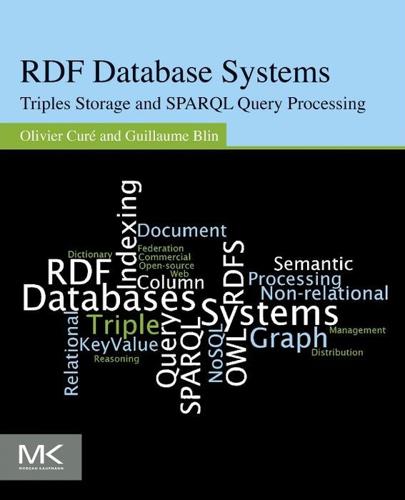
RDF Database Systems: Triples Storage and SPARQL Query Processing
by
Olivier Cure
and
Guillaume Blin
Published 10 Dec 2014
See RDF Schema (RDFS) RDF Schema (RDFS), 3, 42 entailment, graphical representation of, 190 minimal, 208 ontology languages, 60, 208 Tboxes, 147 RDF-3X system, 6, 97, 109, 159 Reasoning capabilities, 189 database management systems, 191 first-order logic bottom-up resolution, 200 top-down resolution, 200 materialization vs. query rewriting, 195 object-based approach, 202 consequence-based reasoning procedures, 204 structural subsumption, 202 tableau-based method, 203 in propositional logic, 198 RDF data set, 196 extract, 190 RDFS entailment graphical representation of, 190 RDFS ontology, 195 rule-based approach, 197 SPARQL query language, 189 W3C ontology languages, 189 Reasoning services, 74 Redis, 28 Redland RDF library, 146 Reification, 46 Relational database management system (RDBMS), 2, 9 with ACID properties, 28 benchmarks, 77 evolutions of, 38 Jena SDB system, 126 property-class modeling, 129 property table technique, 128, 129 241 Index RDFJoin project, 127 RDFKB (resource description framework knowledge base), 127 relations, attributes, and tuples, 10 roStore, 132 structured query language (SQL), 52 triples table approach, 125 vertical-partitioning approach, 130, 131 Virtuoso system, 126 Remote procedure call (RPC), 34 Re-Pair, 90 Representational state transfer (REST), 3 Resolvent, 197 Resource description framework (RDF), 1, 43, 44 challenges, 221 data management, 6 data set, graph, 47 expected features, 222 stores, 223 graph representation, 44 HTML serializations, 52 Notation 3 (N3), 50 N-triples, 50 stores, set of dimensions, 7 Turtle, 51 URIs, 45 XML serialization, 48 Resource interchange format (RIF), 42 REST. See Representational state transfer (REST) Reverse primary hash (RPH), 132 Reverse secondary hash (RSH), 132 Rexster, 149 RFID. See Radio-frequency identification device (RFID) Riak, 28 RIF. See Resource interchange format (RIF) roStore, 132 RPC. See Remote procedure call (RPC) RPH. See Reverse primary hash (RPH) RSH. See Reverse secondary hash (RSH) Ruby, 4, 79 Rule-based ontology languages, 76 Rya engine, 140 S SAOR system. See Scalable authoritative OWL reasoning (SAOR) system Scalable authoritative OWL reasoning (SAOR) system, 216 Scalable highly expressive reasoner (SHER), 215 Scalable high-performance, robust, and distributed (SHARD), 180 SDB system, 99 SDSs.
…
Introduction The Internet of Things (IoT) is another contributor to the Big Data ecosystem, which is just in its infancy but will certainly become a major data provider.This Internet branch is mainly concerned with machine-to-machine (M2M) communications that are evolving on a Web environment using Web standards such as Uniform Resource Identifiers (URIs), HyperText Transfer Protocol (HTTP), and representational state transfer (REST). It focuses on the devices and sensors that are present in our daily lives, and can belong to either the industrial sector or the consumer market. These active devices may correspond but are not limited to smartphones, radio-frequency identification device (RFID) tagged objects, wireless sensor networks, or ambient devices. IoT enables the collection of temporospatial information—that is, regrouping temporal as well as spatial aspects. In 2009, considered an early year of IoT, Jeff Jonas in his blog (Jonas, 2009) was already announcing that 600 billion geospatially tagged transactions were generated per day in North America.
…
See Query parallel inference engine (QueryPie) Query processing overview of, 143 parsing, 145 RDFS/OWL ontology, 144 SPARQL query, 143–145 simplifiable, 147 SPARQL 1.1 W3C recommendation, 163 for update queries, 163 X-RDF-3X extension, 164 Query rewriting, 98 CumulusRDF system, 149 encoding/decoding, 148 RDFS blog ontology, extracts, 147 simplification, 147 translation, 148 QuOnto system, 212 R Radio-frequency identification device (RFID), 3 RAM. See Random access memory (RAM) Random access memory (RAM), 14 RavenDB, 32 RDBMS. See Relational database management system (RDBMS) RDF. See Resource description framework (RDF) RDFa. See RDF in attributes (RDFa) RDFCube system, 112 storage schema, 112 RDF in attributes (RDFa), 3 RDFMatView, 146 RDFPeers, 112 RDFS.
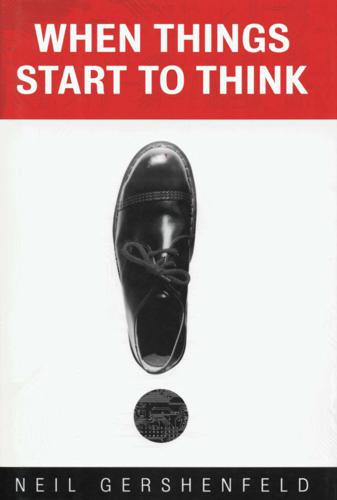
When Things Start to Think
by
Neil A. Gershenfeld
Published 15 Feb 1999
There's been an anthropomorphic tendency to assume that a computer's senses should match our own. We had trouble keeping the Fish boards on hand because they would be carried off around the Media Lab by students who wanted to build physical interfaces. More recently, the students have been acquiring as many radio-frequency identification (RFID) chips as they can get their hands on. These are tiny processors, SEEING THROUGH WINDOWS + 145 small enough even to be swallowed, that are powered by an external field that can also exchange data with them. They're currently used in niche applications, such as tracking laboratory animals, or in the key-chain tags that enable us to pump gas without using a credit card.
…
Europe is also leading the way with smart cards, computers the size of a credit card that are used much the same way, but that store electronic cash instead of requiring access to a remote computer. They were first used to eliminate the need for change to use pay phones, and are now spreading to all areas of electronic commerce. Finally, for tens of cents come the RFID chips that are used to tag things with an electronic identity. These are used in the badges that control access to a workplace, and in tracking laboratory animals. And that's where it stops. No one's been able to fabricate, package, and sell chips for less than about ten cents. While that might not appear to be a severe limit, think about what it leaves off: just about everything!
…
Robert, 179 optical pumping, 162 optical weak localization, 15 Orange County, California, 78 Orth, Maggie, 55 oscilloscope, 205 Oxford University, 158, 159 pagers, wristwatches as, 152 paper: book, 15 carbonless copy paper, 15-16 increasing consumption of, 102 radio, 18 INDEX reusable, 16-17 smart, 15-16 Papert, Seymour, 117, 138, 201-2 Paradiso, Joseph, 169, 180, 206-7 parallel computers, 68, 157 Parsons School of Design, 55 Pascal, Blaise, 131 Passages from the Life of a Philosopher (Babbage), 125-26 Passenger Sensing System, 170-71 patents, 181, 191 PEMS (Printed Electro-Mechanical Systems), 72-74 Penn & Teller, 169-70, 193 pennies, 82 Pentland, Sandy, 55 performance limit of a communications channel, 176 peripherals, computer, 52-53 Personal Area Network (PAN), 50-52 fictional predecessor of, 51-52 personal computers (PCs), 63-64, 151 invention of, 137-39 laptops, see laptop computers proliferation of, 63 Personal Digital Assistant, 151-52 Personal Fabricator, 64-75 physical gestures and logical meaning, Personal Area Network (PAN) and, 51 Piaget, Jean, 106, 137-38, 146 pianos, digital, 41 Picard, Roz, 54 Plymouth University, 158 Poe, Edgar Allan, 124 Poincare, Henri, 114 Popular Mechanics, 199 Post, Rehmi, 55 printers, 17-18, 102, 202 PEMS (Printed Electro-Mechanical Systems), 72-74 3D, 64-65, 70-71 two-dimensional output of, 4-5 privacy, 56-57, 100-1 Things That Think and, 207-10 + 223 probability theory, 120-21 productivity, 7 Pythagoras, 39 quantum computer, 157-63, 177 quantum mechanics, 130-31, 155, 157-59 radar, 171, 172 radio, 10, 99, 212 radio-frequency identification (RFID) chips, 144-45, 152 radio paper, 18 radio spectrum, 50 Raman, C. V., 39-40 Reeves, Byron, 54 Reformation, 95-97, 103 religion, 131, 133 research and development, 169-84 applied research, 172, 177, 178, 185 basic research, 172, 174, 177, 178, 185 government role, 171-74 new way to organize inquiry, 180-84 organization in the U.S., 171-74, 180 presumed pathway of, 177 Resnick, Mitchel, 68-70, 146-47, 206 responsibilities in using new technologies, 104 reusable paper, 16-17 Reynolds, Matt, 196, 197 rights: Bill of Things' Rights, 104 Bill of Things Users' Rights, 102 Rittmueller, Phil, 170, 180 Roosevelt, Franklin D., 171, 172 Santa Fe Institute, 118 Satellites, communications, 99-100 Science-The Endless Frontier, 172 search engines, 134 security versus privacy, 57 224 + semiconductor industry, 72 Sensormatic, 153 Shannon,C~ud~5, 128,176,188-90 shoe, computer in a, 50, 52, 102-3, 179 shoplifting tags, 153 Shor, Peter, 158, 159 Silicon Graphics, 140 Simon, Dan, 158 skepticism about technological advances, 122 Small, David, 22-23 Smalltalk, 138 smart cards, 81, 152 smart money, 77-91 cryptography and, 80-81 as digital information, 80 distinction between atom-dollars and bit-dollars, 83-85 freeing money from legacy as tangible asset, 79, 91 global currency market, 83 linking algorithms with money, 86-88 paying-as-you-go, 82 precedent for, 80 standards for, 88-91 smart name badges, 206 Smith, Joshua, 144, 170-71 sociology of science, 119 software, 7, 53, 156 belief in magic bullets, 121 CAD, 73 for children, 138 remarkable descriptions of, 108-9 upgrades, 98, 108-9 Soviet Union, 121-22 speech recognition, 140 spirit chair, 169-70, 179, 193, 202 spread-spectrum coding techniques, 165, 166 standards: computer, 88-90, 126 smart money, 88-91 Stanford Research Institute, 139 INDEX Stanford University, 54 Starner, Thad, 47, 57-58 Steane, Andy, 159 Steelcase, 202, 203, 204 Stradivarius, designing digital instrument to compete with, 32-33,39-42 Strickon, Joshua, 55 Sumitomo, 77 supercomputers, 151, 177, 199 surveillance, 57 Swatch Access watches, 152 Szilard, Leo, 176 technology: Bill of Things' Rights, 104 Bill of Things Users' Rights, 102 daily use of, 58 freedom of technological expression, 103 imposing on our lives, 95, 100-2 invisible and unobtrusive, 44, 200, 211 jargon, 107-22 mature, 10 musical instruments incorporating available, 38 wisdom in old technologies, 19, 24 telemarketing, 95, 101 telephones, 175 access to phone numbers, 100 invasion in our lives, 95, 101 satellite, 99-100 smart cards, 81 widespread dissemination of, 99 television, 10, 99, 202 high-definition, 6 Termen, Lev, 144 Tetzel, Johann, 96 "There's Plenty of Room at the Bottom," 161 thermodynamics, 175, 176 Things That Think, 202-7 privacy and, 207-10 stratification of society and, 210-11 INDEX 3D graphics interface, 141-42 3D printer, 64-65, 70-71 3001: The Final Odyssey (Clarke), 51 Toffoli, Tomaso, 132 transistors: invention of the, 175 study of, 179 Turing, Alan, 127-28, 131, 135, 166 Turing test, 128, 131, 133-34, 135 281, 210-11 Underkoffler, John, 145-46 U.S.
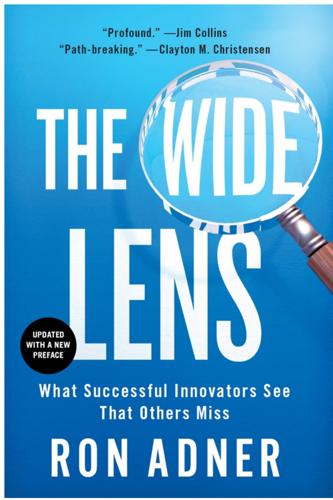
The Wide Lens: What Successful Innovators See That Others Miss
by
Ron Adner
Published 1 Mar 2012
Who wouldn’t want to call the shots so they can win big every time? The leadership prism should help put those urges in perspective. The reality is, no one has pockets deep enough to finance every endeavor. Ask Microsoft in television set-top boxes, Intel in WiMAX mobile communication, and Wal-Mart in radio frequency identification (RFID) chips for consumer packaged goods. Ask every IT player in EHR: only when they chose to follow (and support) the government’s lead was real progress—and money—made. No one will stop you from spending a fortune on a leadership candidacy you can’t win. You can try to lead in every ecosystem where you play, or you can choose to be involved only in leading ecosystems.
…
See E-books; E-readers iPad media partners, 219–21 Pulmonary insulin. See Exubera; Inhalable insulin R Raikes, Jeff, 56 Rave, 142 Read, Ian, 111 Reidy, Carolyn, 90 Renault, and Better Place, 184–85, 238, 240 Research in Motion, 211 Resources, and co-innovation, 50 Retailers, role of, 55, 61 RFID (radio frequency ID) chips, 133 Ricci, Dr. Russell, 125 Rio PMP300, 142 Rocket e-reader, 88 S SaeHan MPMan, 140–44 failure, reasons for, 142–44 features, 142 Safaricom, mobile banking joint venture. See M-PESA Samsung, 40, 207 Scaling, pilots, difficulty of, 202–3 Semiconductor lithography, 150–53 functions of, 150–51 goals of, 152 innovation ecosystem for, 151–53 Sensory Science, 142 Sklyer, Dr.
…
See Value blueprints for leadership prism, 118 and minimum viable ecosystem (MVE) approach, 203–4 Vertical integration, pros/cons of, 8, 177 Veterans Health Administration (VHA), electronic health records (EHRs), 131 Virtual print fee (VPF), 72–73, 76 Vision and co-innovation, 50–51 value proposition as, 85 VISTA electronic record system, 131 Vodafone, mobile banking joint venture. See M-PESA W Wachter, Dr. Robert, 119 Wal-Mart, RFID chips, 133 Weed, Larry, 120 Whitney, William C., 165–66 Wide-lens perspective components of, 7, 158–59, 233 ecosystem and innovation. See entries under Ecosystem necessity of, 229–31 odds for success, creating with, 228–30 potential problems, productive approach to, 228 tool kit, 226–28 WiMAX, 133 * In 2010, at the behest of publishers, Amazon abandoned the fixed retail price model, allowing publishers to set e-book prices directly and receiving a 30 percent commission on each sale
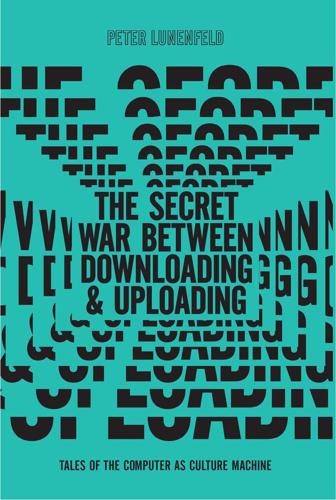
The Secret War Between Downloading and Uploading: Tales of the Computer as Culture Machine
by
Peter Lunenfeld
Published 31 Mar 2011
These WYMIWYM objects obviously figure informationalism in their production process, but as they themselves become linked into larger networks, through the incorporation of sensors, transmitters, and augmentation, they begin to attain autonomy. From mute objects and closed spaces, they become nodes in the network, aware of their place and time, and capable of communication from the minimal to the maximal. The incorporation of radio frequency identification devices (RFIDs) and microcontrollers into formerly quotidian objects enlivens them in an almost magical way. Like the animated brooms in Walt Disney’s Fantasia that come alive when Mickey Mouse accidentally enchants them as the Sorcerer’s Apprentice, there is a glamour, in its magical rather than fashionable sense, inherent in these new, augmented objects and spaces.
…
Robert, 150 Oracle, 172–173 Order of the British Empire, 18 Otivion, 101 Ourobors, 175 Oxford Internet Institute, 83 Packard, Dave, 145, 157 Pac-Man game, 71 Page, Larry, 144, 174–176 Paris, 66 Parker, Charlie “Bird,” 25 Participation affordances and, 16–17 bespoke futures and, 98–99, 120–121, 129 culture machine and, 143–147, 151, 156–165, 170, 175–178 fan-based production and, 28–32 Licklider and, 151–152 MP3s and, 27 simulation and, 15–17 stickiness and, 15–17, 27–35 toggling and, 33–34, 43, 102, 197n30 tweaking and, xvi, 32–35, 185nn22,23 unimodernism and, 54, 66–67, 74–80 Web n.0 and, 79–95 Patio potatoes, 9–10, 13 Patriarchs Bush and, 52, 108, 144, 147–152, 157 description of term, xv development of computer and, 143–144, 147–158, 162–163, 166–168 Licklider and, 108, 144, 147–148, 151–152, 158, 163, 168 Paul, Frank R., 109, 109–110 PBS, 68 PDP minicomputer, 71 Peer-to-peer networks, 15, 54, 92, 116, 126 Perot, Ross, 145 Perpetual beta, 36 Personal digital assistants (PDAs), 17 Petrini, Carlo, 5–6 Photography, 15, 40–42, 46–47, 64, 109, 150, 176 Photoshop, 131 Picasso, Pablo, 93 210 INDEX Pico Swap Mart, 105 Pirate Bay, 92 Pixar, 167 Pizza Hut, 5 Plagiarism, 41 Play, 188n25 bespoke futures and, 110–111, 130–131 culture machine and, 143, 153, 160–163 gaming and, 15, 23, 33–34, 57, 67, 70–74, 72, 188n25 meaningfulness and, 32–34 modders and, 69–70 power and, 32–34 rejuveniles and, 67 running room and, 74–77 stickiness and, 13, 15, 32–34, 70–74 toggling and, 33–34, 43, 102, 197n30 tweaking and, xvi, 32–35, 185n22, 185n23 unimodernism and, 39, 53, 55, 62, 64, 67–77 video games and, 15, 23, 33–34, 57, 67, 72, 188n25 Web n.0 and, 85, 88 Play space, 74–77 Plug-in Drug, The (Winn), xii Plutocrats culture machine and, 144, 152–159, 163–166, 170 description of term, xv Hewlett and, 145, 157 Moore and, 156 Noyce and, 156 Packard and, 145, 157 profit and, xv Watsons and, 144, 153–157, 165–166 Plutopian meliorism, xvi, 127–129, 133, 137–138 Poetry, 14, 18–19, 136, 145 Politics African National Congress and, 113 211 Berlin Wall and, xvi, 85, 97, 99, 104 Communism and, 97–98, 103 copyright and, 88–93 Cuban Missile Crisis and, xi fantasies of, 104 New Economy and, 104 propaganda and, 31, 103, 124 scenario planning and, 111–119, 191n19, 192n20 Slow Food and, 5–7 Soviet Union and, xi, 31, 49–52, 59, 73, 85, 88, 97, 102–107, 146 Tiananmen Square and, 104 Velvet Revolution and, 104 Pong, 71 Popper, Karl, 107 Popular Mechanics magazine, 69 Pop-up ads, 23 Positivism, 10, 125 Postmodernism, 29–30, 39–41, 74, 79, 130, 135 PostScript World, 55–56, 102 Poststructuralism, 29–30 Power, 8 bespoke futures and, 98–103, 112– 116, 119–126, 129–130, 136–137 culture machine and, 143, 147, 150– 151, 155–156, 163, 166, 169, 175 meaningfulness and, 32–34 play and, 32–34 stickiness and, 13, 17, 22, 30–34 toggling and, 33–34, 43, 102, 197n30 tweaking and, xvi, 32–35, 185nn22,23 unimodernism and, 39, 49–50, 62, 71–75 Web n.0 and, 81–87, 90–95 PowerBook, 39 Pro bono work, 111 Production appropriation and, 28, 31, 35, 41 balance and, 13 collaborative, 30 INDEX Production (continued) continuous partial, 34 DIY movements and, 67–70 fan culture and, 28–32, 48 mashing and, 25, 54–55, 57, 74 mechanization and, 44–45 modders and, 69–70 open source, 36, 61, 69, 74–75, 91–92, 116, 121–126, 144, 170– 173, 177, 189n12 plagiarism and, 41 remixing and, 27, 35, 39, 53–54, 62–63, 70, 92–94, 129, 189n12 toggling and, 33–34, 43, 102, 197n30 tweaking and, xvi, 32–35, 185nn22,23 unfinish and, xvi, 34–37, 51, 67, 70, 76–79, 92, 127–129, 136 WYMIWYM (What You Model Is What You Manufacture) and, 64–67, 74, 131 Propaganda, 31, 103, 124 Prosumers, 120–121 Psychology culture machine and, 151, 161 Gestalt, 42–43 Licklider and, 151 propaganda and, 31, 103, 124 scenario planning and, 111–119, 191n19, 192n20 stickiness and, 16, 21–22 unimodernism and, 42–44, 56 Public domain, 91 Publishing, 31, 190n8 bespoke future and, 109–110, 112 culture machine and, 146, 148–149, 168 DIY movement and, 67–69 Gutenberg press and, 11, 137–138 unimodernism and, 55–65, 68 Puccini, Giacomo, 61 Punk aesthetic, 46, 67–68, 87, 110 Quantum theory, 148 Radio, 8 Radio frequency identification devices (RFIDs), 65 Radiohead, 39 Ramayana, 28 Rand, Paul, 43 Raymond, Eric, 172 Raytheon, 149 Rear Window (film), 44 Relativity, 49–50, 186n4 Religion, xi, 1, 13, 76, 130–135, 138 Remixing, 27, 94, 129, 189n12 appropriation and, 28, 31, 35, 41 Creative Commons and, 92 Moulin Rouge and, 60–63 unimodernism and, 39, 53–54, 53–55, 62–63, 70 Renaissance, 60 Rent (Larson), 61 Reperceiving, 112–113 Reuters Spectracolor Board, 9 Revivalism, 60 Reyner Banham Loves Los Angeles (BBC documentary), 10 Rheingold, Howard, 145 Rick’s Café, 90 Roberts, Alwyn “Lord Kitchener,” 25–27 Robot butlers, xiv Rockefeller, John D., 166 Rolling Stone magazine, 67 Romanticism, 103 Romeo and Juliet (hip-hop version), 61 Roosevelt, Franklin D., 148 Rope (film), 44 Roux, A., 11 Royal Dutch Shell, 112, 112–113 Royal Library of Alexandria, 89 R-PR (Really Public Relations), xvi, 123–127 RSS feeds, xvii Rumsfeld, Donald, 99 Running room, 74–77 Run time, 57 212 INDEX environmental perception and, 16 memes and, 19, 53–54, 76, 87, 91, 98, 113, 143–144, 149–150, 156–162, 165–170, 178, 194n1 mimicry and, xvii MP3s and, 27 participation and, 15–17 stickiness and, 15–19, 27, 32, 35 unimodernism and, 39, 49, 53–54, 57, 71–76 Sinatra, Frank, 63 Skype, 15 Skyscrapers, xiv Slow movements, 5–7, 181n7 Slurpees, 4 “Smells Like Teen Spirit” (Nirvana), 62 Smith & Hawken, 113 Snakes on a Plane (film), 30 Snow White (Disney film), 20 Social issues advertisement and, 23, 52, 57, 59, 107, 175–177, 184nn12,15 Aquarians and, xv, 144, 152, 157, 159–169 atomic age and, xi (see also Atomic age) Berlin Wall and, 85, 97, 99, 104 bespoke futures and, xvi, 97–139 blogosphere and, xvii, 30, 34, 49, 68, 80, 92–93, 101, 175, 177, 181n7 capitalism and, 4, 13, 66, 75, 90, 97–100, 103–105 capitulationism and, 7, 24, 182n1 cell phones and, xiii, 23, 42, 53, 56, 76, 101 Communism and, 97–98, 103 computers and, xvi, 5, 15–19 (see also Computers) Cuban Missile Crisis and, xi dangers of overabundance and, 7–10 desk jobs and, 3 89/11 and, xvi, 97, 100–102, 105, 130 Enlightenment and, xvi, 129–139 Sacred texts, 28 Saint Laurent, Yves, 60 Saks Fifth Avenue, 31 Samizdat, 59 Scenario planning bespoke futures and, 111–119, 191n19, 192n20 chaos theory and, 117–119 crafting of, 113–116 Ogilvy and, 113–114 Schwartz and, 113–114 Scènes de la vie Bohème (Murger), 61 Schindler, Rudolph, 45 Schrödinger, Erwin, 49 Schwartz, Peter, 113–115, 119 Scott, Ridley, 107 Scratching, 53 Searchers, 167, 177–178 Brin and, 144, 174–176 description of term, xv–xvi Page and, 144, 174–176 Sears, 103–105 September 11, 2001, xvi–xvii, 99–101, 130 SETI@home, 122 Sex, 7, 19, 88, 129–130, 167 Shakespeare, William, 28, 44 Shannon, Claude, 148 Shockley, William, 156 Shockley Semiconductor Laboratory, 156 Silicon Valley, 149, 161, 164 Silly Symphonies (Disney film), 88 Simon, John, Jr., 39 Simulation, xvi, 2, 11 affordances and, 16–17 bespoke futures and, 98, 121, 124, 126–127 buttons/knobs and, 16 communication devices and, 15–16 culture machine and, 143–144, 147– 152, 156–160, 166–168, 175–178 downloading and, 143, 168 emulation and, 183n3 213 INDEX Social issues (continued) figure/ground and, xvi, 42–43, 46, 102 folksonomies and, 80–81 hackers and, 22–23, 54, 67, 69, 162, 170–173 Holocaust and, 107 Hosts and, xv, 144, 167, 175 hypercontexts and, xvi, 7, 48, 76–77 information overload and, 22, 149 MaSAI and, xvi, 112, 120–123, 127, 193nn32 meaningfulness and, xvi, 14, 17, 20, 23–29, 42, 67, 77, 79, 119, 123, 128–129, 133, 173 narrative and, xv, 2, 7–8, 58–59, 67, 71, 76, 108, 110, 130–132, 143– 145, 174, 178, 180n4, 188n25, 193n34 personal grounding and, xiv–xv play and, xvi, 13, 15, 32–34, 39, 53, 55, 62, 64, 67–77, 85, 88, 110–111, 130–131, 143, 153, 160–163, 185n22, 188n25 Plutocrats and, xv, 144, 152–159, 163–166, 170 plutopian meliorism and, xvi, 127–129, 133, 137–138 power and, xvi, 8, 13, 17, 22 (see also Power) relationship with data and, 32 religion and, xi, 1, 13, 76, 130–135, 138 R-PR (Really Public Relations) and, xvi, 123–127 Searchers and, xv–xvi, 144, 167, 174–178 suburbs and, 3, 8 television and, xii (see also Television) terrorism and, 99–101, 130–131, 134, 137 unfinish and, xvi, 34–37, 51, 67, 70, 76–79, 92, 127–129, 136 urban planning and, 84–86 utopia and, 36, 73, 97, 101, 104, 108, 110, 120, 127–129, 138 wants vs. needs and, 13, 37, 57 wicked problems and, 158 World War I era and, 21, 107, 123, 146, 190n1 World War II era and, xi, 18, 25, 32, 47, 73, 107–108, 144–150, 157, 170 Socialists, 102–105 Software platforms, 15, 164, 170 Sontag, Susan, 135 Sopranos, The (TV show), 7 Soundscapes, 53–55 Soviet Union, 31, 85, 88, 146 Berlin Wall and, 85, 97, 99, 104 Cuban Missile Crisis and, xi Exhibition of the Achievement of the Soviet People’s Economy (VDNX) and, 102–105 fall of, 104 gulags of, 107 samizdat and, 59 unimodernism and, 49–52, 73 Space Invaders, 71 Spacewar!
…
, 71 Spielraum (play space), 75 Spin, 124 Stallman, Richard, 170–171 Stanford, 144, 149, 158–159, 162, 175 Stardust@home, 122–123 Stardust Interstellar Dust Collector (SIDC), 193n33 Sterling, Bruce, 101–102 Stewart, Jimmy, 44 Stickiness defining, 28, 184n15 downloading and, 13–17, 20–23, 27–29, 184n15 duration and, 28 fan culture and, 28–32, 48, 49, 87 gaming and, 70–74 214 INDEX Systems theory, 151 Stickiness (continued) information and, 22–23, 32–35 markets and, 13, 16, 24, 30–33, 37 modernism and, 36 networks and, 16–17, 22, 24, 29–36 obsessiveness and, 28 play and, 32–34, 70–74 power and, 32–34 simulation and, 15–19, 27, 32, 35 Teflon objects and, 28–32, 49, 87 toggling and, 33–34, 43, 102, 197n30 tweaking and, xvi, 32–35, 185nn22,23 unfinish and, 34–37, 76–77 unimodernism and, 70–74 uploading and, 13–17, 20, 23–24, 27–29 Web n.0 and, 79, 87 Stock options, 98 Stone, Linda, 34 Storage, 47, 60, 153, 196n17 Strachey, Christopher, 18–19 Strachey, Lytton, 19 Strange attractors, xvi, 117–120, 192n27 Sturges, Preston, 88 Stutzman, Fred, 22 Stewart, Martha, 49 Suburbs, 3, 8 Suicide bombers, 100–101 Sullivan’s Travels (Sturges), 88 Sun Microsystems, 172, 176 Superflat art, xi, 49 Supersizing, 3–4 Suprematism, 117 Surfing, 20, 80, 180n2 Surrealism, 31 Sutherland, Ivan, 160–161 Swiss Army Knife theory, 17 Symbiosis, 151–152 Synthetism, 117 Systems of Survival: A Dialogue on the Moral Foundations of Commerce and Politics (Jacobs), 85–86 Take-home consumption, 3 Tarantino, Quentin, 49 Taxonomies, 80–83 Technology analog, 18, 53, 150 anticipated, 108–110 bespoke futures and, 98–104, 107–113, 116, 119, 125–127, 131– 133, 136–139 broadband, 9, 57 cell phones, xiii, xvii, 17, 23, 42, 53, 56, 76, 101 commercial networks and, 4–5 compact discs (CDs), 2, 48, 53 computer mouse, 158–159 culture machine and, 143–163, 173–174 cyberpunk maxim on, 87 determinism and, 131–132 difference engine, 149 digital video discs (DVDs), 2, 7–8, 15, 58 dot-com bubble and, 79, 174 Dynabook, 161–162, 196n17 Ethernet, 161 Exhibition of the Achievement of the Soviet People’s Economy (VDNX) and, 102–105 film cameras, 15 Gutenberg press, 11, 137–138 hierarchical structures and, 123, 155, 175–176, 189n8 historical perspective on computer, 143–178 hypertext and, 158 information overload and, 22, 149 Jacquard loom, 11 mechanical calculator, 149 Metcalfe’s corollary and, 86–87 microfilm, 149–150 215 INDEX Technology (continued) Moore’s law and, 156, 195n13 New Economy and, 97, 99, 104, 131, 138, 144–145, 190n3 personal digital assistants (PDAs), 17 Photoshop, 131 progress and, 132 RFID, 65 secular culture and, 133–139 storage, 47, 60, 153, 196n17 technofabulism and, 99–100 teleconferencing, 158–159 3–D tracking, 39 tweaking and, 32–35, 185nn22,23 videocassette recorders (VCRs), 15, 23 wants vs. needs and, 4 woven books, 10–11 Teflon objects, 28–32, 49, 87 Teleconferencing, 158–159 Television as defining Western culture, 2 aversion to, xii bespoke futures and, 101, 108, 124, 127–129, 133–137 delivery methods for, 2 dominance of, xii, 2–10 downloading and, 2 as drug, xii, 7–9 general audiences and, 8–9 habits of mind and, 9–10 Internet, 9 junk culture and, 5–10 Kennedy and, xi macro, 56–60 marketing fear and, xvii overusage of, 7–9 as pedagogical boon, 14 quality shows and, 7 rejuveniles and, 67 Slow Food and, 6–7 spin-offs and, 48 as time filler, 67 U.S. ownership data on, 180n2 Telnet, 169 “Ten Tips for Successful Scenarios” (Schwartz and Ogilvy), 113 Terrorism, 99–101, 130–131, 134, 137 Textiles, 11 Text-messaging, 82 3COM, 86 3–D tracking, 39 Tiananmen Square, 104 Timecode (Figgis), 58 Time magazine, xii, 145 Time Warner, 63, 91 Tin Pan Alley, 28, 63 Tintin, 90 Toggling, xvi, 33–34, 43, 102, 197n30 Tools for Thought (Rheingold), 145 Torvalds, Linus, 144, 167–173 Tracy, Dick, 108 Traitorous Eight, 156 Trilling, Lionel, 79 Turing, Alan, 17–20, 52, 148 Turing Award, 17, 156 Tweaking, xvi, 32–35, 185nn22,23 20,000 Leagues beneath the Sea (Verne), 108 Twins paradox, 49–50 Twitter, 34, 180n2 2001 (film), 107 Ubiquity, xiii bespoke futures and, 125, 128 culture machine and, 144, 166, 177–178 folksonomies and, 80–81 Freedom software and, 22–23 hotspots and, xiv information overload and, 22, 149 isotypes and, 125 stickiness and, 22–23 unimodernism and, 39, 53, 57–59, 62, 74 216 INDEX simulation and, 39, 49, 53–54, 57, 71–76 soundscape and, 53–55 stickiness and, 70–74 twins paradox and, 49–50 unconscious and, 43–44 unfinish and, 51, 67, 70, 76–78 unimedia and, 39–40 uploading and, 42, 49, 53, 57, 67, 77 WYMIWYM (What You Model Is What You Manufacture) and, 64–67 WYSIWYG (What You See Is What You Get) and, 55–56, 64–65 United States Cuban Missile Crisis and, xi September 11, 2001 and, 99–101, 130 television’s dominance and, 2, 180n2 Universal Resource Locator (URL), 168–169 Universal Turing Machine, 18–19 University of Pennsylvania, 148 University of Utah, 160 UNIX, 170–171 “Untitled (After Walker Evans)” (Levine), 41 Uploading, xiii–xiv, 180nn1,2 activity levels and, 5 animal kingdom and, 1 bespoke futures and, 97, 120–123, 128–129, 132 commercial networks and, 4–5 communication devices and, 15–16 conversation and, 13 cultural hierarchy of, 1–2 culture machine and, 143, 168, 173, 175 disproportionate amount of to downloading, 13 humans and, 1–2 information and, 1, 4, 11 meaningfulness and, xvi, 29 stickiness and, 13–17, 20, 23–24, 27–29 Ubiquity (continued) Web n.0 and, 79–95 Ublopia, 101 Ulysses (Joyce), 94–95 Uncertainty principle, 37 Unfinish, xvi bespoke futures and, 127–129, 136 continuous partical attention and, 34 perpetual beta and, 36 stickiness and, 34–37, 76–77 unimodernism and, 51, 67, 70, 76–78 Web n.0 and, 79, 92 Unimedia, 39–40 Unimodernism Burroughs and, 40–42 common sense and, 44–45 DIY movements and, 67–70 downloading and, 41–42, 49, 54–57, 66–67, 76–77 figure/ground and, 42–43, 46 gaming and, 70–74 hypertextuality and, 51–53 images and, 55–56 information and, 45–49, 55, 60, 65–66, 74 Krikalev and, 50–51 macrotelevision and, 56–60 markets and, 45, 48, 58–59, 71, 75 mashing and, 25, 54–55, 57, 74 mechanization and, 44–45 microcinema and, 56–60 modders and, 69–70 Moulin Rouge and, 60–63 narrative and, 58–59, 67, 71, 76 networks and, 39, 47–48, 54–57, 60, 64–65, 68–69, 73–74 participation and, 54, 66–67, 74–77 perception pops and, 43–49 play and, 67–77 postmodernism and, 39–41, 74 remixing and, 39, 53–54, 62–63, 70 running room and, 74–77 217 INDEX Uploading (continued) unimodernism and, 42, 49, 53, 57, 67, 77 Web n.0 and, 79–83, 86–87, 91 Urban planning, 84–86 U.S.

Halting State
by
Charles Stross
Published 9 Jul 2011
Now if only you had a life, too, eh? The office opens its doors and swallows you off the street. Once upon a time it started life as an unassuming Georgian town house; but today, the garden is overgrown with Foster Associates geodesics, the roof is covered in solar tiles, and the door scanned your RFIDs and worked out who you were while you were still halfway up the street. The HQ of Dietrich-Brunner Associates is probably worth more than some Third World countries. You hole up in the ladies’ for a minute to freshen up, then it’s up the lift to the third floor, where the junior associates swelter under the low eaves.
…
Meanwhile, over here we have a patch on the work-top where you’ll see there’s a faint outline—matches a microwave oven. Why the hell anyone would leave the electronics in the living room but take the microwave oven is, well, your guess is as good as mine. But that’s what they did: They scrubbed the fridge out and lifted the microwave. Maybe they’d been using it for toasting RFID tags or something. But the whole thing’s been thoroughly sanitized.” “Sanitized?” Verity explodes. “Are you telling us you can’t get anything?” “Yes, I am—at least, so far.” Tweed nods like a dashboard ornament. He starts counting off fingers. “There are no human traces in the place that haven’t been thoroughly cleaned or scrambled.
…
Elaine is wandering along behind you with the slightly stunned expression of a Mormon missionary at a Pagan Federation summer camp—it obviously looks like a target-rich environment—but the set of co-ordinates attached to Wu Chen’s badge (which, like all the attendee badges at this shindig is bugged with seven flavours of RFID—you checked your privacy at the door when you filled out that marketing questionnaire, unless you remembered to pack a tinfoil wallet) is moving slowly through the huge auditorium at the back of the building. You lock Wu Chen into the map widget hovering over to the left, then simultaneously log all your Zone IDs on simultaneously, collapsing their various shards into a single mish-mash view.
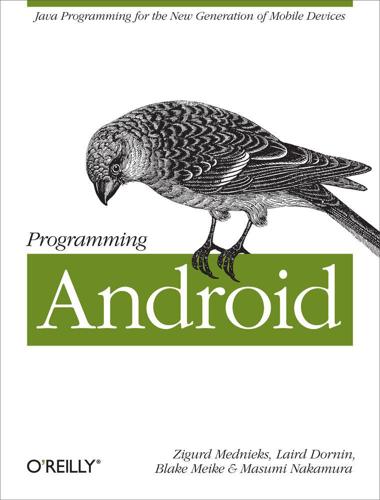
Programming Android
by
Zigurd Mednieks
,
Laird Dornin
,
G. Blake Meike
and
Masumi Nakamura
Published 15 Jul 2011
It is a standard that extends the Radio Frequency Identification (RFID) standard by combining the interface of a smartcard and a reader into a single device. This standard is primarily built for mobile phone use, and thus is attracting a lot of attention among vendors that are interested in contactless data transmission (such as credit card sales). The standard enables NFC to be used in three specific ways: Card emulation The device is a contactless card (and thus can be read by other readers). Reader mode The device can read RFID tags. P2P mode Two devices can communicate back and forth and exchange data.
…
To use NFC functionality in your application, you need to declare the following permission in your manifest: <uses-permission android:name="android.permission.NFC" /> To restrict the installation of the application to devices that can use NFC, add the following to your manifest as well: <uses-feature android:name="android.hardware.nfc" /> Reading a Tag Reader mode is for receiving notices when an RFID/NFC tag is scanned. In Android 2.3 (API level 9), the only means to do this is to create an Activity that listens for the android.nfc.action.TAG_DISCOVERED intent, which is broadcast when a tag is read. Android 2.3.3 (API level 10) offers a more comprehensive means to receive this notice, following the process shown in Figure 16-2.
…
as signing certificates, Creating a self-signed certificate private keyword, Access Modifiers and Encapsulation, Getters and setters projects, Making an Android Project, Making an Android Project, Making an Android Project, The Android Manifest Editor, Projects, Organizing Java Source about, Projects, Organizing Java Source additional information, Making an Android Project creating, Making an Android Project, Making an Android Project manifest files, The Android Manifest Editor protected keyword, Access Modifiers and Encapsulation proximity sensors, Other Sensors public key encryption, Public Key Encryption and Cryptographic Signing, Public Key Encryption and Cryptographic Signing public keyword, Access Modifiers and Encapsulation, Getters and setters publishing, Uploading Applications in the Market, Concurrency in Android Android applications, Uploading Applications in the Market references, Concurrency in Android Q QEMU, QEMU queries, Additional Database Concepts, Database Queries and Reading Data from the Database, Using the query method, A Networked Query Method, YouTubeHandler, Account Contacts account contacts, Account Contacts compound, Additional Database Concepts MJAndroid application example, Database Queries and Reading Data from the Database, Using the query method networked method, A Networked Query Method, YouTubeHandler quotation marks ("), Example Database Manipulation Using sqlite3 R R class, Resources Radio Frequency Identification, Near Field Communication (NFC) (see RFID) raw directory, Resources RCP (Rich Client Platform), The Eclipse Integrated Development Environment (IDE) RDBMSs (relational database management systems), Relational Database Overview REAL type (SQLite), SQLite types recording multimedia, Recording Audio and Video, Audio Recording, AudioRecorder audio recording, Video Recording audio methods, Audio Recording, AudioRecorder audio recording life cycle states, Recording Audio and Video video methods, Video Recording RECORD_AUDIO permission, Recording Audio and Video RECORD_VIDEO permission, Recording Audio and Video refactoring, Refactoring, Organizing Java Source relational database management systems (RDBMSs), Relational Database Overview relational databases, Relational Database Overview, Database constraints, Database constraints, Additional Database Concepts, Additional Database Concepts, Additional Database Concepts, Additional Database Concepts, Database Transactions, Example Database Manipulation Using sqlite3, Example Database Manipulation Using sqlite3, The Android Database Classes, Database Design for Android Applications, Basic Structure of the SimpleVideoDbHelper Class, Basic Structure of the SimpleVideoDbHelper Class, Basic Structure of the SimpleVideoDbHelper Class, Using the Database API: MJAndroid, Database Queries and Reading Data from the Database, Using the execSQL method, The simple video database, Declaring Column Specification Strings, Creating the Database about, Relational Database Overview additional information, Additional Database Concepts compound queries, Additional Database Concepts database constraints, Database constraints, Database constraints, Declaring Column Specification Strings database manipulation example, Example Database Manipulation Using sqlite3, Example Database Manipulation Using sqlite3 database transactions, Database Transactions design for Android applications, Database Design for Android Applications, Basic Structure of the SimpleVideoDbHelper Class inner joins, Additional Database Concepts MJAndroid application example, Using the Database API: MJAndroid, Database Queries and Reading Data from the Database, Using the execSQL method SimpleFinchVideoContentProvider example, The simple video database SimpleVideoDbHelper class example, Basic Structure of the SimpleVideoDbHelper Class, Basic Structure of the SimpleVideoDbHelper Class SQLite supported classes, The Android Database Classes triggers, Additional Database Concepts YouTube video example, Creating the Database RelativeLayout class, Creating a Fragment, Layout remote procedure calls, AIDL and, Java Serialization Renderer interface, OpenGL Graphics res directory, Resources, Organizing Java Source resource qualifiers, Resource Qualifiers and Screen Sizes Resources.getDrawable method, Bitmaps ResponseHandler interface, RESTfulContentProvider: A REST helper, RESTfulContentProvider: A REST helper, UriRequestTask about, RESTfulContentProvider: A REST helper handleResponse method, RESTfulContentProvider: A REST helper, UriRequestTask REST (Representational State Transfer), Content Providers, Content Providers, Content Providers, Content Providers, Content Providers, Content Providers, Exploring Content Providers, Developing RESTful Android Applications, A “Network MVC”, Summary of Benefits, Constants and Initialization, Creating the Database, A Networked Query Method, YouTubeHandler, insert and ResponseHandlers, insert and ResponseHandlers, File Management: Storing Thumbnails about, Content Providers additional information, Content Providers constants and initialization, Constants and Initialization content providers and, Exploring Content Providers creating database, Creating the Database DELETE operation, Content Providers developing Android applications, Developing RESTful Android Applications file management, File Management: Storing Thumbnails GET operation, Content Providers insert and ResponseHandlers, insert and ResponseHandlers, insert and ResponseHandlers network MVC and, A “Network MVC”, Summary of Benefits networked query method, A Networked Query Method, YouTubeHandler POST operation, Content Providers UPDATE operation, Content Providers RFID (Radio Frequency Identification), Near Field Communication (NFC), Reading a Tag, Reading a Tag about, Near Field Communication (NFC) reading tags, Reading a Tag, Reading a Tag Rich Client Platform (RCP), The Eclipse Integrated Development Environment (IDE) RotateAnimation class, Animation, Transition animation RotateDrawable class, Drawables rotation vector, Rotation vector Runnable interface, Advanced Wiring: Focus and Threading runtime environment, The Android Application Runtime Environment, Sandboxing: Processes and Users, The application runtime, The Android Libraries, The Android Libraries about, The Android Application Runtime Environment, Sandboxing: Processes and Users, The application runtime Android libraries and, The Android Libraries, The Android Libraries RuntimeException, Exceptions, Advanced Wiring: Focus and Threading S sandboxing, Sandboxing: Processes and Users, Self-signed certificates for Android software ScaleAnimation class, Animation, Transition animation ScaleDrawable class, Drawables ScheduledThreadPoolExecutor class, The Android Libraries scope, Scope, Java Packages, Access Modifiers and Encapsulation about, Scope access modifiers and encapsulation, Access Modifiers and Encapsulation Java packages and, Java Packages SDK and AVD Manager, Adding Build Targets to the SDK, Adding Build Targets to the SDK, Making an Android Virtual Device (AVD), Android Virtual Devices, The SDK and AVD Manager, android, Testing for Screen Size Compatibility, Eclipse and Android about, Adding Build Targets to the SDK, The SDK and AVD Manager configuring AVDs, Android Virtual Devices creating AVDs, Making an Android Virtual Device (AVD) invoking, Adding Build Targets to the SDK, android, Eclipse and Android screen configurations, Testing for Screen Size Compatibility search application example, Step 1: Our UI Collects User Input, Step 2: Our Controller Listens for Events, Step 4: Implementing the RESTful Request, File Management: Storing Thumbnails controller collecting user input, Step 2: Our Controller Listens for Events implementing RESTful request, Step 4: Implementing the RESTful Request, File Management: Storing Thumbnails UI collecting user input, Step 1: Our UI Collects User Input security, Sandboxing: Processes and Users, Self-signed certificates for Android software additional information, Sandboxing: Processes and Users self-signed certificates and, Self-signed certificates for Android software SELECT statement (SQL), SQL Data Manipulation Commands, SQL Data Manipulation Commands, SQL Data Manipulation Commands, SQL Data Manipulation Commands, SQL Data Manipulation Commands, SQL Data Manipulation Commands, SQL Data Manipulation Commands, Extending ContentProvider about, SQL Data Manipulation Commands ContentProvider class and, Extending ContentProvider FROM clause, SQL Data Manipulation Commands GROUP BY clause, SQL Data Manipulation Commands HAVING clause, SQL Data Manipulation Commands LIMIT clause, SQL Data Manipulation Commands ORDER BY clause, SQL Data Manipulation Commands WHERE clause, SQL Data Manipulation Commands self-signed certificates, Self-signed certificates for Android software, Creating a self-signed certificate, Using a self-signed certificate to sign an application, Using a self-signed certificate to sign an application about, Self-signed certificates for Android software creating, Creating a self-signed certificate signing applications, Using a self-signed certificate to sign an application, Using a self-signed certificate to sign an application semicolon (;), SQL Data Definition Commands Sensor.getMaximumRange method, Other Sensors SensorEvent class, Sensors SensorEventListener interface, Sensors, Sensors onAccuracyChanged method, Sensors onSensorChanged method, Sensors SensorManager class, Sensors, Sensors, Sensors, Sensors, Sensors, Sensors, Sensors about, Sensors getDefaultSensor method, Sensors getSensorList method, Sensors SENSOR_DELAY_FASTEST constant, Sensors SENSOR_DELAY_GAME constant, Sensors SENSOR_DELAY_NORMAL constant, Sensors SENSOR_DELAY_UI constant, Sensors sensors, Sensors, Sensors, Position, Linear acceleration, Accelerometer, Gyroscope, Rotation vector, Linear acceleration, Gravity, Other Sensors, Other Sensors, Other Sensors, Other Sensors, Other Sensors about, Sensors, Sensors accelerometers, Accelerometer gravity, Gravity gyroscopes, Gyroscope light, Other Sensors linear acceleration, Linear acceleration magnetic, Other Sensors phone coordinate systems, Position, Linear acceleration pressure, Other Sensors proximity, Other Sensors rotation vector, Rotation vector temperature, Other Sensors Serial Port Protocol (SPP), Bluetooth and related I/O classes Serializable interface, Java Serialization, Java Serialization, Classes That Support Serialization serialization, Serialization, Serialization, Java Serialization, Parcelable, Parcelable, Classes That Support Serialization, Serialization and the Application Life Cycle, Saving and restoring instance state application life cycle and, Serialization and the Application Life Cycle classes supporting, Classes That Support Serialization, Saving and restoring instance state common uses for, Serialization defined, Serialization Java support, Java Serialization Parcelable interface, Parcelable, Parcelable Service class, Other Android Components, Service, Static Application Resources and Context, Application Manifests, The Activity Class and Well-Behaved Applications, Developing RESTful Android Applications about, Other Android Components, Service Context class and, Static Application Resources and Context manifest files and, Application Manifests RESTful applications and, Developing RESTful Android Applications well-behaved applications and, The Activity Class and Well-Behaved Applications Set interface, Collection interface types, The Android Libraries setClickable attribute, MapView and MyLocationOverlay Initialization setEnabled attribute, MapView and MyLocationOverlay Initialization setSatellite attribute, MapView and MyLocationOverlay Initialization setStreetView attribute, MapView and MyLocationOverlay Initialization setter methods, Getters and setters setTraffic attribute, MapView and MyLocationOverlay Initialization Shader class, Shadows, Gradients, and Filters shaders (drawing graphics), Shadows, Gradients, and Filters ShadowLayer class, Shadows, Gradients, and Filters shadows (drawing graphics), Shadows, Gradients, and Filters short type, Primitive Types, Conventions on the Native Method Side Show View dialog, Visualizing the Activity Life Cycle signing, application, Application Signing (see application signing) SimpleCursorAdapter class, Account Contacts, Account Contacts SimpleFinchVideoContentProvider example, Browsing Video with Finch, The simple video database, Structure of the simple version of the code, Defining a Provider Public API, Defining the CONTENT_URI, Creating the Column Names, Declaring Column Specification Strings, Declaring Column Specification Strings, Extending ContentProvider, Extending ContentProvider, A Complete Content Provider: The SimpleFinchVideoContentProvider Code, The SimpleFinchVideoContentProvider Class and Instance Variables, The SimpleFinchVideoContentProvider Class and Instance Variables, Implementing the onCreate Method, Implementing the getType Method, The query method, The query method, The insert method, The update method, The delete method, Determining How Often to Notify Observers about, Browsing Video with Finch, A Complete Content Provider: The SimpleFinchVideoContentProvider Code column names, Creating the Column Names column specification strings, Declaring Column Specification Strings, Declaring Column Specification Strings creating database, The simple video database defining provider public API, Defining a Provider Public API, Defining the CONTENT_URI extending ContentProvider class, Extending ContentProvider, Extending ContentProvider implementing delete method, The delete method implementing getType method, Implementing the getType Method implementing insert method, The insert method implementing onCreate method, Implementing the onCreate Method implementing query method, The query method, The query method implementing update method, The update method instance variables and, The SimpleFinchVideoContentProvider Class and Instance Variables, The SimpleFinchVideoContentProvider Class and Instance Variables notifying observers, Determining How Often to Notify Observers source code structure, Structure of the simple version of the code SimpleVideoDbHelper class (example), Basic Structure of the SimpleVideoDbHelper Class, Basic Structure of the SimpleVideoDbHelper Class skeleton applications, The Android Framework, Visualizing the Activity Life Cycle, Minor life cycle methods of the Activity class, Visualizing the Fragment Life Cycle, Visualizing the Fragment Life Cycle, The Activity Class and Well-Behaved Applications, The Activity Life Cycle and the User Experience, Life Cycle Methods of the Application Class, Life Cycle Methods of the Application Class, A Flowing and Intuitive User Experience Across Activities, Modifying task behavior with intent flags, Understanding Content Providers, Declaring Column Specification Strings, Writing and Integrating a Content Provider, File Management and Binary Data, File Management and Binary Data, Android MVC and Content Observation, Android MVC and Content Observation, A Complete Content Provider: The SimpleFinchVideoContentProvider Code, Determining How Often to Notify Observers, Declaring Your Content Provider, Exploring Content Providers, Developing RESTful Android Applications, A “Network MVC”, Summary of Benefits, Code Example: Dynamically Listing and Caching YouTube Video Content, File Management: Storing Thumbnails about, The Android Framework Activity class life cycles, Visualizing the Activity Life Cycle, Minor life cycle methods of the Activity class Application class life cycles, Life Cycle Methods of the Application Class, Life Cycle Methods of the Application Class binary data, File Management and Binary Data building content providers, Understanding Content Providers, Declaring Column Specification Strings content providers and REST, Exploring Content Providers declaring content providers, Declaring Your Content Provider developing RESTful, Developing RESTful Android Applications file management, File Management and Binary Data flowing/intuitive user experience, A Flowing and Intuitive User Experience Across Activities, Modifying task behavior with intent flags Fragment class life cycles, Visualizing the Fragment Life Cycle, Visualizing the Fragment Life Cycle MVC and content observation, Android MVC and Content Observation, Android MVC and Content Observation network MVC and, A “Network MVC”, Summary of Benefits SimpleFinchVideoContentProvider example, A Complete Content Provider: The SimpleFinchVideoContentProvider Code, Determining How Often to Notify Observers well-behaved, The Activity Class and Well-Behaved Applications, The Activity Life Cycle and the User Experience writing/integrating content providers, Writing and Integrating a Content Provider YouTube video example, Code Example: Dynamically Listing and Caching YouTube Video Content, File Management: Storing Thumbnails SmallTalk language, Eclipse Concepts and Terminology social networking, Android and Social Networking software development, Modular Programming in Java (see application development) SPP (Serial Port Protocol), Bluetooth and related I/O classes SQL (Standard Query Language), Relational Database Overview, The SQL Language, The SQL Language, SQL Data Definition Commands, Database constraints, Database constraints, Database constraints, SQL Data Manipulation Commands, SQL Data Manipulation Commands, SQL and the Database-Centric Data Model for Android Applications about, Relational Database Overview additional information, The SQL Language Android applications and, The SQL Language data definition commands, SQL Data Definition Commands, Database constraints data manipulation commands, SQL Data Manipulation Commands, SQL Data Manipulation Commands database constraints, Database constraints, Database constraints MVC model and, SQL and the Database-Centric Data Model for Android Applications SQLite database system, sqlite3, Serialization, SQLite, SQLite, The SQL Language, The SQL Language, SQLite types, Database constraints, Database constraints, Additional Database Concepts, Database Transactions, The Android Database Classes, Declaring Column Specification Strings about, SQLite, The SQL Language additional information, SQLite, The SQL Language compound queries, Additional Database Concepts data types supported, SQLite types database classes, The Android Database Classes database constraints, Database constraints, Database constraints, Declaring Column Specification Strings database transactions, Database Transactions persistence and, Serialization sqlite3 command, sqlite3 sqlite3 command, sqlite3, SQL Data Definition Commands, Example Database Manipulation Using sqlite3, Example Database Manipulation Using sqlite3, Example Database Manipulation Using sqlite3, Example Database Manipulation Using sqlite3, Example Database Manipulation Using sqlite3, Example Database Manipulation Using sqlite3 about, sqlite3 balancing quotes, Example Database Manipulation Using sqlite3 database manipulation example, Example Database Manipulation Using sqlite3, Example Database Manipulation Using sqlite3 percent sign in, Example Database Manipulation Using sqlite3 period in, Example Database Manipulation Using sqlite3 pipe character in, Example Database Manipulation Using sqlite3 semicolon in, SQL Data Definition Commands SQLiteDatabase class, The Android Database Classes, Database Queries and Reading Data from the Database, Database Queries and Reading Data from the Database, Using the query method, Using the query method, Modifying the Database, Modifying the Database, Modifying the Database, Modifying the Database, Modifying the Database, Using the insert method, Using the execSQL method, Using the update method, Using the execSQL method, Using the delete method, Using the execSQL method, The query method, The insert method about, The Android Database Classes delete method, Modifying the Database, Using the delete method execSQL method, Modifying the Database, Using the execSQL method, Using the execSQL method, Using the execSQL method insert method, Modifying the Database, Using the insert method, The insert method query method, Using the query method, Modifying the Database, The query method rawQuery method, Database Queries and Reading Data from the Database rawQueryWithFactory method, Database Queries and Reading Data from the Database, Using the query method update method, Modifying the Database, Using the update method SQLiteOpenHelper class, The Android Database Classes, Basic Structure of the SimpleVideoDbHelper Class, Basic Structure of the SimpleVideoDbHelper Class, Database Queries and Reading Data from the Database about, The Android Database Classes extending, Database Queries and Reading Data from the Database onCreate method, Basic Structure of the SimpleVideoDbHelper Class onUpgrade method, Basic Structure of the SimpleVideoDbHelper Class SQLiteQueryBuilder class, The Android Database Classes src directory, Organizing Java Source Standard Query Language, Relational Database Overview (see SQL) static analysis, Static Analyzers, FindBugs, FindBugs, FindBugs, Applying Static Analysis to Android Code, Applying Static Analysis to Android Code, Limitations of Static Analysis about, Static Analyzers, FindBugs applying to Android code, Applying Static Analysis to Android Code, Applying Static Analysis to Android Code FindBugs tool and, FindBugs, FindBugs limitations of, Limitations of Static Analysis static declarations, Final and Static Declarations String class, Final and Static Declarations, Drawing text Canvas class and, Drawing text as final declaration, Final and Static Declarations subclasses, Objects and Classes, Modular Programming in Java, Extending Android classes defined, Objects and Classes programming considerations, Modular Programming in Java, Extending Android classes superclasses, defined, Objects and Classes SurfaceHolder class, Surface view animation, Surface view animation Callback interface, Surface view animation unlockCanvasAndPost method, Surface view animation SurfaceView class, Animation, Surface view animation, OpenGL Graphics about, OpenGL Graphics animation support, Animation, Surface view animation Synaptic Package Manager utility, The Java Development Kit (JDK) synchronization, Synchronization and Thread Safety, Synchronization and Thread Safety, Synchronization and Data Structures, Synchronization account data, Synchronization data structures and, Synchronization and Data Structures thread safety and, Synchronization and Thread Safety, Synchronization and Thread Safety synchronized keyword, Synchronization and Thread Safety, Synchronization and Thread Safety System.loadLibrary method, Conventions on the Java Side T .table command (SQLite), Example Database Manipulation Using sqlite3 tables, Relational Database Overview, SQL Data Definition Commands, Database constraints, Database constraints, Database constraints, SQL Data Manipulation Commands, SQL Data Manipulation Commands database constraints, Database constraints, Database constraints defined, Relational Database Overview SQL data definition commands, SQL Data Definition Commands, Database constraints SQL data manipulation commands, SQL Data Manipulation Commands, SQL Data Manipulation Commands TagTechnology interface, Reading a Tag, Writing to a Tag, Writing to a Tag, Writing to a Tag, Writing to a Tag close method, Writing to a Tag connect method, Writing to a Tag isConnected method, Writing to a Tag reading tags, Reading a Tag writing tags, Writing to a Tag tasks, Multitasking in a Small-Screen Environment, Tasks and Applications, Specifying Launch and Task Behavior, Modifying task behavior with intent flags applications and, Tasks and Applications specifying behavior, Specifying Launch and Task Behavior, Modifying task behavior with intent flags tracking, Multitasking in a Small-Screen Environment temperature sensors, Other Sensors TEXT type (SQLite), SQLite types text, drawing, Drawing text, Drawing text TextToSpeech class, Accessibility, Accessibility, Accessibility about, Accessibility shutdown method, Accessibility speak method, Accessibility TextView class, Rolling Your Own Widgets, Location Without Maps, Connecting to a Location Provider and Getting Location Updates location without maps example, Location Without Maps, Connecting to a Location Provider and Getting Location Updates widgets and, Rolling Your Own Widgets TextWatcher interface, Overrides and callbacks, Overrides and callbacks, Overrides and callbacks afterTextChanged method, Overrides and callbacks beforeTextChanged method, Overrides and callbacks onTextChanged method, Overrides and callbacks Thread class, Basic Multithreaded Concurrent Programming in Java thread confinement, Threads in an Android Process thread safety violations, Synchronization and Thread Safety threads, Basic Multithreaded Concurrent Programming in Java, Basic Multithreaded Concurrent Programming in Java, Synchronization and Thread Safety, Synchronization and Thread Safety, Thread Control with wait() and notify() Methods, Concurrency in Android, AsyncTask and the UI Thread, AsyncTask and the UI Thread, AsyncTask and the UI Thread, Threads in an Android Process Android GUI and, AsyncTask and the UI Thread, AsyncTask and the UI Thread in Android processes, Threads in an Android Process concurrent, Basic Multithreaded Concurrent Programming in Java, Concurrency in Android monitoring, AsyncTask and the UI Thread Object class support, Thread Control with wait() and notify() Methods spawning, Basic Multithreaded Concurrent Programming in Java synchronization and, Synchronization and Thread Safety, Synchronization and Thread Safety Threads view (Eclipse), Eclipse and Android Throwable class, Exceptions TimerTask class, The Android Libraries TimeZone class, The Android Libraries touch events, Listening for Touch Events, Listening for Touch Events, Gesture Input gesture input, Gesture Input listening for, Listening for Touch Events, Listening for Touch Events trackballs, Listening for Touch Events transactions, Fragment Transactions, Fragment Transactions, Database Transactions database, Database Transactions fragment, Fragment Transactions, Fragment Transactions transformations, matrix, Matrix transformations, Matrix transformations transition animations, Animation, Transition animation TranslateAnimation class, Animation, Transition animation TreeMap class, Collection implementation types triangulation, Location-Based Services triggers, database, Additional Database Concepts troubleshooting, Troubleshooting SDK Problems: No Build Targets, The Menu OnKeyListener interface, The Menu SDK problems, Troubleshooting SDK Problems: No Build Targets try-catch block, Exceptions tweened animations, Animation U Ubuntu Linux environment, The Java Development Kit (JDK), The Eclipse Integrated Development Environment (IDE) installing Eclipse, The Eclipse Integrated Development Environment (IDE) installing JDK, The Java Development Kit (JDK) unchecked exceptions, Exceptions UNIQUE constraint, Database constraints unmarshaling data, Serialization unpublishing Android applications, Uploading Applications in the Market UPDATE operation (REST), Content Providers UPDATE statement (SQL), SQL Data Manipulation Commands, SQL Data Manipulation Commands, Extending ContentProvider about, SQL Data Manipulation Commands ContentProvider class and, Extending ContentProvider WHERE clause, SQL Data Manipulation Commands uploading applications in Android Market, Uploading Applications in the Market, Uploading Applications in the Market UriMatcher class, Using a content provider, Extending ContentProvider, Extending ContentProvider, The SimpleFinchVideoContentProvider Class and Instance Variables, The SimpleFinchVideoContentProvider Class and Instance Variables about, Using a content provider, Extending ContentProvider addURI method, Extending ContentProvider initializing, The SimpleFinchVideoContentProvider Class and Instance Variables NO_MATCH constant, The SimpleFinchVideoContentProvider Class and Instance Variables URLEncoder.encode method, A Networked Query Method USB, Running a Program on an Android Device, Running a Program on an Android Device accessing Android devices, Running a Program on an Android Device debugging Android devices, Running a Program on an Android Device user experience, The Activity Life Cycle and the User Experience, A Flowing and Intuitive User Experience Across Activities, Modifying task behavior with intent flags Activity life cycle and, The Activity Life Cycle and the User Experience flowing and intuitive, A Flowing and Intuitive User Experience Across Activities, Modifying task behavior with intent flags uses-sdk attribute, Making an Android Project UUID class, The Android Libraries V values directory, Resources Vector class, The Java Collections Framework, The Android Libraries Vibrator class, Accessibility video, Audio and Video, Video Playback, Video Playback, Video Recording, MediaRecorder video recording, Intent video recording Android supported formats, Audio and Video Intent recording, Intent video recording MediaPlayer playback, Video Playback MediaRecorder recording, MediaRecorder video recording playback methods, Video Playback recording methods, Video Recording VideoView class, Video Playback View class, Using Anonymous Classes, Using Anonymous Classes, Threads in an Android Process, Threads in an Android Process, The Controller, Assembling a Graphical Interface, Wiring Up the Controller, Listening for Touch Events, Listening for Touch Events, Listening for Touch Events, Listening for Key Events, Alternative Ways to Handle Events, Alternative Ways to Handle Events, Alternative Ways to Handle Events, Alternative Ways to Handle Events, Alternative Ways to Handle Events, Alternative Ways to Handle Events, Advanced Wiring: Focus and Threading, Advanced Wiring: Focus and Threading, Advanced Wiring: Focus and Threading, Advanced Wiring: Focus and Threading, Advanced Wiring: Focus and Threading, The Menu, The Menu, The Menu, Fragments and Multiplatform Support, Creating a Fragment, Rolling Your Own Widgets, Rolling Your Own Widgets, Layout, Measurement, Measurement, Measurement, Measurement, Measurement, Measurement, Measurement, Measurement, Arrangement, Arrangement, Canvas Drawing, Canvas Drawing, Drawables, Transition animation, Background animation, Background animation, Background animation, Background animation, Background animation (see also widgets) about, Using Anonymous Classes assembling GUI, Assembling a Graphical Interface background animation, Background animation dispatchKeyEvent method, The Controller DispatchKeyEvent method, Alternative Ways to Handle Events dispatchTrackballEvent method, Listening for Touch Events draw method, Canvas Drawing findViewById method, Creating a Fragment getBackground method, Background animation getMeasuredHeight method, Measurement getMeasuredWidth method, Measurement getSuggestedMinimumHeight method, Measurement getSuggestedMinimumWidth method, Measurement handling events, Alternative Ways to Handle Events invalidate method, Canvas Drawing isFocusableInTouchMode method, Advanced Wiring: Focus and Threading isInTouchMode method, Advanced Wiring: Focus and Threading measure method, Measurement OnClickListener interface, Wiring Up the Controller OnCreateContextMenuListener interface, The Menu, Fragments and Multiplatform Support onDraw method, Drawables, Background animation OnFocusChangeListener interface, Advanced Wiring: Focus and Threading onKeyDown method, Alternative Ways to Handle Events OnKeyListener interface, Using Anonymous Classes, Alternative Ways to Handle Events, The Menu onLayout method, Arrangement onMeasure method, Measurement, Arrangement onTouchEvent method, Alternative Ways to Handle Events OnTouchListener interface, Listening for Touch Events, Alternative Ways to Handle Events onTrackballEvent method, Listening for Touch Events post method, Threads in an Android Process postDelayed method, Threads in an Android Process requestFocus method, Advanced Wiring: Focus and Threading requestLayout method, Layout setBackgroundDrawable method, Background animation setBackgroundResource method, Background animation setFocusable method, Advanced Wiring: Focus and Threading setMeasuredDimensions method, Measurement, Measurement setOnCreateContextMenuListener method, The Menu setOnKeyListener method, Listening for Key Events startAnimation method, Transition animation widgets and, Rolling Your Own Widgets View component (MVC), The View, Rolling Your Own Widgets, Rolling Your Own Widgets (see also drawing graphics) view model, Canvas Drawing ViewGroup class, Assembling a Graphical Interface, Advanced Wiring: Focus and Threading, Advanced Wiring: Focus and Threading, Fragments and Multiplatform Support, Rolling Your Own Widgets, Measurement, Measurement, Measurement, Canvas Drawing container views and, Assembling a Graphical Interface dispatchDraw method, Canvas Drawing Fragment class and, Fragments and Multiplatform Support measureChild method, Measurement measureChildren method, Measurement measureChildWithMargins method, Measurement requestChildFocus method, Advanced Wiring: Focus and Threading requestFocus method, Advanced Wiring: Focus and Threading widgets and, Rolling Your Own Widgets virtual machines, The Dalvik Debug Monitor Server (DDMS) (see Dalvik virtual machines (VMs)) VisualAge tool, Eclipse Concepts and Terminology VMs (virtual machines), The Dalvik Debug Monitor Server (DDMS) (see Dalvik virtual machines (VMs)) W whatami example, JNI, NDK, and SDK: A Sample App widgets, Assembling a Graphical Interface, Advanced Wiring: Focus and Threading, Rolling Your Own Widgets, Rolling Your Own Widgets, Rolling Your Own Widgets, Rolling Your Own Widgets, Layout, Arrangement, Arrangement, Arrangement, Canvas Drawing, Matrix transformations, Canvas Drawing, Canvas Drawing, Canvas Drawing, Matrix transformations, Drawables, Drawables, Drawables, Bitmaps, Bling, OpenGL Graphics (see also View class) Bitmap class, Bitmaps canvas drawing, Canvas Drawing, Matrix transformations defined, Assembling a Graphical Interface, Rolling Your Own Widgets Drawable class, Drawables, Drawables focusable attribute, Advanced Wiring: Focus and Threading fully functional example, Canvas Drawing graphics effects examples, Bling, OpenGL Graphics layout process, Layout, Arrangement onDraw method, Rolling Your Own Widgets, Arrangement, Canvas Drawing, Canvas Drawing, Matrix transformations, Drawables onLayout method, Arrangement onMeasure method, Rolling Your Own Widgets Windows environment, The Java Development Kit (JDK), Running a Program on an Android Device, Sandboxing: Processes and Users, Setting Up the NDK Environment installing JDK, The Java Development Kit (JDK) NDK requirements, Setting Up the NDK Environment running programs on Android devices, Running a Program on an Android Device sandboxing and, Sandboxing: Processes and Users workspaces, Making an Android Project, Workspaces, Eclipse Views and Perspectives, Organizing Java Source defined, Making an Android Project, Workspaces depicted, Eclipse Views and Perspectives projects and, Organizing Java Source X XML editors, XML editors for other Android XML files Y YouTube video example, Code Example: Dynamically Listing and Caching YouTube Video Content, Structure of the Source Code for the Finch YouTube Video Example, Step 1: Our UI Collects User Input, Step 2: Our Controller Listens for Events, Constants and Initialization, Creating the Database, A Networked Query Method, YouTubeHandler, insert and ResponseHandlers, insert and ResponseHandlers, File Management: Storing Thumbnails about, Code Example: Dynamically Listing and Caching YouTube Video Content constants and initialization, Constants and Initialization controller collecting user input, Step 2: Our Controller Listens for Events creating database, Creating the Database file management, File Management: Storing Thumbnails insert and ResponseHandlers, insert and ResponseHandlers, insert and ResponseHandlers networked query method, A Networked Query Method, YouTubeHandler structure of source code, Structure of the Source Code for the Finch YouTube Video Example UI collecting user input, Step 1: Our UI Collects User Input Z Zipalign tool, Zipalign zooming in Android maps, MapView and MyLocationOverlay Initialization Zygote process, Zygote: Forking a New Process About the Authors Zigurd Mednieks is a consultant to leading OEMs, enterprises, and entrepreneurial ventures creating Android-based systems and software.
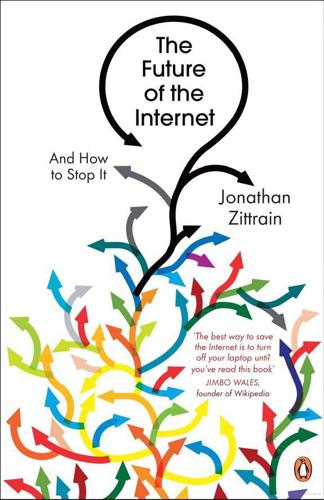
The Future of the Internet: And How to Stop It
by
Jonathan Zittrain
Published 27 May 2009
Privacy scholarship also looks to the latest advances in specific technologies that could further weaken day-to-day informational privacy13 One example is the increasing use of radio frequency identifiers (RFIDs) in consumer items, allowing goods to be scanned and tracked at a short distance. One promise of RFID is that a shopper could wheel her shopping cart under an arch at a grocery store and obtain an immediate tally of the price of its contents; one peril is that a stranger could drive by a house with an RFID scanner and instantly inventory its contents, from diapers to bacon to flat-screen TVs, immediately discerning the sort of people who live within.
…
Soon, the price of a loaf of bread at the store becomes indeterminate: there is a sticker price, but when the shopper takes the bread up front, the store can announce a special individualized discount based on her relationship with the store. The sticker price then becomes only that, providing little indication of the price that shoppers are actually paying. Merchants can also vary service. Customer cards augmented with RFID tags can serve to identify those undesirable customers who visit a home improvement store, monopolize the attention of the attendants, and exit without having bought so much as a single nail. With these kinds of cards, the store would be able to discern the “good” (profitable) customers from the “bad” (not profitable) ones and appropriately alert the staff to flee from bad customers and approach good ones.
…
See September 11 attacks and PATRIOT Act PDAs (personal digital assistants), 58–59 peer production, 206–16 perfect enforcement, 107–10, 112, 122, 134, 161, 166 personal computers (PCs): accessibility via broadband, 4; business adoption of, 15–16; connected by modems, 25; connectivity vs. design of, 166; data sharing on, 160; desktop, 17; development of, 15; as electronic workbooks, 236; as endpoints, 167; flexible architecture of, 16; generative technology of, 2, 3, 5, 19, 34, 72; government investigations of, 186–88; Green and Red, 155; of hobbyists, 13, 14, 15, 18, 19, 34; hourglass architecture of, 69–71; increasing reliance on, 102; independent functioning of, 15; as information (tethered) appliances, 4, 59–61, 102, 185–88; information appliances vs., 18, 29, 57–59; and Internet compatibility, 28–29; lockdown of, 4, 5, 57, 102, 155–56, 164, 165; model of computing, 17; modularization of, 156; PC revolution, 3, 18; potential functionality sold with, 13; regulability of, 106; search across computers, 185; security dilemma of, 241; in sites where users are not owners, 4; and third-party storage, 186–88; “trapped,” 77; unsecured on Internet, 45; users as programmers for, 14, 15; virtual, 156; zombies, 46, 52, 54, 57, 166 personal identity management, 32–33 Pew Internet & American Life Project, 51 phishing, 47, 53, 99 photo recognition, 214–15 physical layer, 67–69 placeholders, 56 plagiarism, 244 plastic, adaptability of, 72 PlayMedia, 104, 108 Pledgebank, 148, 243 pornography, child, 111 Posner, Eric, 213 Post, David, 123 Postel’s Law, 134 post hoc remedies, 122 post hoc scrubs, 116 Postman, Neil, 93 preemption, 108 press conference behavior, 212–13, 229 prime time, being ready for (and the generative Net), 153–54 prior restraints, 115, 122 Privacy Act (1974), 202 privacy: administrative burdens of, 221–22; and captchas, 208; and cheap sensors, 206, 208–9, 210, 216, 221; code-backed norms, 223–28; Constitutional support of, 112, 185–86, 188; and consumer protection law, 177; contextualization, 229–31; data genealogy, 225–28; enforceability of, 112–14; and generation gap, 231–34; and government power, 117–19, 186–88; HEW report (1973) on, 201–5, 222, 233–34; and industry self-regulation, 203; involuntary celebrities, 210–14; “just deal with it,” 111–12; and peer production, 206–16; personal information security, 203–4; Privacy 1.0, 201–5, 208, 215, 216, 222, 232; Privacy 2.0, 205–34; as proxies for other limitations, 112; public vs. private behavior, 212–16; and reputation, 216–21, 228–29; search and seizure, 112; sensitivity identified with, 202; and third-party storage, 185–88; and ubiquitous surveillance, 109–10, 206, 209–16; on Web sites, 203, 226 privacy “tags,” 227 procrastination principle: and Digital Millennium Copyright Act, 119–20; in generative systems, 152, 164, 180, 242, 245; in Internet design, 33, 34; and Morris worm, 39–40; in networks, 31, 33, 99, 164; in operating systems, 69; and Wikipedia, 134, 135; in XO, 237, 240 Prodigy, 7, 23, 24, 81, 157 proprietary rights thickets, 188–92 protocol layer, 39, 67–69 punch card system, 11 QTel, 157 quasi-contracts, 184 Radin, Margaret, 233 radio broadcasts, jamming of, 106 radio frequency identifiers (RFIDs), 203 Radio Shack, 75-in-1 Electronic Project Kit, 14, 73 Rand, Ayn, 143 Raymond, Eric, 137 “Realtime Blackhole List,” 169 reCAPTCHA, 208, 227 Reed, David, 31 Reidenberg, Joel, 104 reputation bankruptcy, 228–29 reputationdefender.com, 230 reputation systems, 216–21; buddy lists, 219–20; correcting or identifying mistakes on, 220; identity systems, 220; search engines, 217, 220–21; user rankings, 146, 217–18, 221; whole-person ratings, 218–19 RFC 1135, “The Helminthiasis of the Internet,” 39 robots, spam messages from, 207–8 robot signaling, 223 robots.txt, 223–25, 227, 243 Rosen, Jeffrey, 216 RSS (really simple syndication), 56 Saltzer, Jerry, 31 Samuelson, Pamela, 225–26 Sanger, Larry, 133, 142–43, 145 Sapphire/Slammer worm, 47 satellite TV, 181, 182 Saudi Arabia, information control in, 113, 180 Scherf, Steve, 145–46 search engines, 220–21, 223, 226, 227; creation of, 224; user rankings, 217 Second Amendment, 117 SEC v.

Cities Under Siege: The New Military Urbanism
by
Stephen Graham
Published 30 Oct 2009
Hayes, of the organization Statewatch, argues that the EU’s efforts to establish a continent-wide Security Research Programme is best described as ‘“Big Brother” meets market fundamentalism’.58 The programme’s large development and supply contracts are organized by a network of ‘EU officials and Europe’s biggest arms and IT companies’.59 As in the US, moreover, EU security policy and research are heavily influenced by intensive lobbying by the main corporate-security companies (many of which are recently privatized state operations). Rather than the ethics of massive securitization, the prime EU concern has been how European corporation could take a bigger chunk of booming global markets for a ‘myriad of local and global surveillance systems; the introduction of biometric identifiers; RFID, electronic tagging and satellite monitoring; “less-lethal weapons”; paramilitary equipment for public order and crisis management; and the militarization of border controls’.60 Urban securization may thus become a shop-window for industrial policy within the burgeoning security marketplace. COLONIZING TRANSNATIONAL URBANISM The recalibration of an inside-outside problematique from the point of view of the United States is full of explosive contradictions.61 Our fifth component is this: in a rapidly urbanizing world marked by intensifying transnational migration, transport, capital and media flows, all attempts at constructing a mutually exclusive binary – a securitized ‘inside’ enclosing the urban places of the US homeland, and an urbanizing ‘outside’ where US military power can pre-emptively attack sources of terrorist threats –are inevitably both ambivalent and ridden with contradiction.
…
Thus, ‘national security, at least in the ports, is conceptualized as almost interchangeable with the security of international trade flows’.171 GLOBAL BIOMETRIC REGIME The globe shrinks for those who own it; for the displaced or the dispossessed, the migrant or refugee, no distance is more awesome than the few feet across borders or frontiers.172 In the airline and airport sectors, US homeland security efforts are meant to ensure that the ‘border guard [is] the last line of defense, not the first, in identifying potential threats’.173 The dream system features interoperable ‘smart’ borders, globalized border control, and pre-emptive risk management.174 To this end, the US has developed the US-VISIT programme – US Visitor and Immigrant Status Indicator Technology – for air travel, another application of biometric attempts to ‘objectively’ fix bodies and identities while coercing key US partner nations to adjust their passport systems to biometric standards defined by the US.175 In the Enhanced Border Security and Visa Act of 2002, for example, the US Congress imposed a requirement that the twenty-seven countries within the US Visa Waiver Program (VWP) begin using machine-readable passports that incorporate both biometric and radio-frequency tag (RFID) technology. Nations or blocs that fail to undertake these radical shifts are threatened with losing their coveted status within the VWP. ‘Our leveraging of America’s visa aiver partners, in order to promote the use of the new ID technologies for purposes of national security’, Richard Pruett and Michael Longarzo of the US Army War College write, ‘may prove to be a paradigm for the coming age’.176 The passage-point architectures of overseas airports thus now display symbols of both US and domestic sovereignty (Figure 4.20). 4.20 The ‘global homeland’ orchestrated through the extension of US sovereignty as part of the US visit initiative: Frankfurt airport, Germany.
…
APPROPRIATION A third strategy for the building of countergeographies involves the very technologies of control that are so central to the new military urbanism and that offer excellent potential for appropriation and reverse engineering. Indeed, a whole universe of experiments in what are called ‘locative’ or ‘ambient’ media seek to challenge contemporary cultures of militarized urbanism by exploring new uses of infrastructures and technologies such as GPS, radio frequency (RFID) chips, unmanned drones, digital mapping, satellite surveillance, video simulation, data mining, Internet communications and wireless communications–all of which more or less originated through military research. The emphasis here is first to demystify and make visible the invisible technologies of control, tracking, and surveillance which now thoroughly permeate everyday objects, architectures, environments and infrastructures, and then to redeploy them in counter-hegemonic ways.
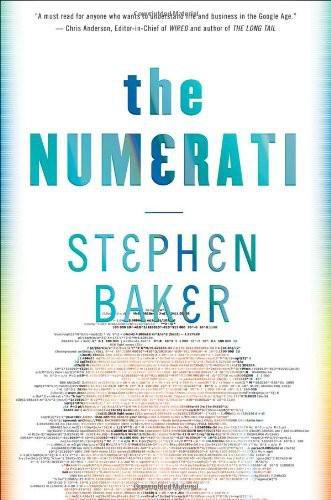
The Numerati
by
Stephen Baker
Published 11 Aug 2008
In time, perhaps a store will recognize us by our movements in the aisles as likely butterflies or barnacles, or even potential shoplifters. And as the facial recognition systems improve, they may spot the barnacles among us the moment we enter the store. If cameras don't pick us up, a radio technology known as RFID just might. These are little computer chips fastened to a piece of merchandise, a shopping cart, or even a customer loyalty card. Each chip has a unique number, identifying the item or the shopper. But unlike a bar code, which has to be passed under a scanner, these chips can be read by radio signals sent by an automatic reader in the area.
…
See Carnegie Mellon University Code-breaking, [>]–[>] Cold War, [>]–[>] Community, [>], [>], [>], [>], [>]–[>] Computers and algorithms, [>]–[>] on animals, [>]–[>], [>] brains compared to, [>] chips in, [>]–[>] cookies on, [>] cost of, [>] data produced using, [>]–[>] history of uses of, [>]–[>] speed of calculations by, [>]–[>], [>] teaching, to recognize "tribes," [>]–[>] weaknesses of, [>]–[>] and workers, [>]–[>], [>]–[>], [>], [>] See also Algorithms; Computer scientists; Data; Internet; Machine learning; Mathematical models; Mathematicians; Privacy; RFID Computer scientists competition over hiring of, [>]–[>] as making sense of data, [>], [>], [>]–[>], [>] and math, [>] myths about, [>]–[>] See also Computers; Numerati comScore (company), [>] Consumers. See Shoppers Cookies (on computers), [>] Corporations electronic résumés for, [>] interest of, in collecting data about people, [>], [>]–[>], [>], [>] interest of, in collecting data about their employees, [>]–[>], [>]–[>], [>], [>], [>], [>] marketing research by, [>], [>] See also Names of specific corporations Counterterrorism.
…
See Medications Privacy not a concern in animal testing, [>] concerns about loss of, [>], [>], [>]–[>], [>] as issue in Europe, [>] people's voluntary lifting of, [>]–[>], [>] personal details as violating, [>] and phones, [>], [>]–[>], [>]–[>] policies regarding shoppers', [>] protections for, [>]–[>], [>]–[>], [>]–[>], [>]–[>] of workers, [>]–[>], [>] Probability, [>]–[>], [>], [>], [>] Probst, Katharina, [>] Proxies, [>], [>]–[>], [>] Psychology, [>], [>], [>] Pulleyblank, William, [>] Quantification, [>] See also Mathematical models Quants, [>], [>] Raghavan, Prabhakar, [>]–[>], [>], [>] Remy, Martin, [>] Republican Party, [>], [>]–[>], [>], [>], [>]–[>], [>] "Resourcefuls" tribe, [>], [>] Retail store data, [>]–[>], [>], [>], [>], [>], [>] See also Advertisers RFID technology, [>] "Right Clicks" tribe, [>]–[>], [>]–[>], [>], [>], [>] Romantic-movie lovers, i—[>], [>]–[>], [>], [>] Root, Mabel, [>] Rosenberger, Larry, [>] Rove, Karl, [>], [>] Sandia National Labs (New Mexico), [>]–[>] Schatz, James, [>], [>], [>]–[>], [>], [>] Scholes, Myron, [>] The Sea, the Sea (Murdoch), [>] Search engine optimization (SEO), [>] Second Life (virtual world), [>] Sensors in animals, [>]–[>] medical, [>], [>]–[>], [>]–[>], [>], [>], [>] SEO (search engine optimization), [>] Serotonin, [>], [>] [>]-Hour Task Force, [>] Shakespeare, William, [>], [>], [>] Shoppers (consumers) averaging of, [>] bloggers as, [>]–[>], [>] choices available to, [>]—ii, [>], [>] data collected about, [>], [>], [>], [>], [>]–[>], [>], [>], [>], [>]–[>], [>], [>]–[>], [>], [>], [>], [>] lists of, [>], [>], [>]–[>], [>] targeting of individual, by advertisers, [>], [>], [>]–[>], [>], [>], [>], [>] See also Advertisers; Credit Sifry, David, [>]–[>] Silverstein, Craig, [>]–[>] Simplex algorithms, [>]–[>] Simplex triangle, [>]–[>] Singapore, [>], [>] Small Blue search engine, [>] "Smart bombs" (medical), [>] "Smart carts," [>]–[>], [>], [>]–[>] Smith, J.
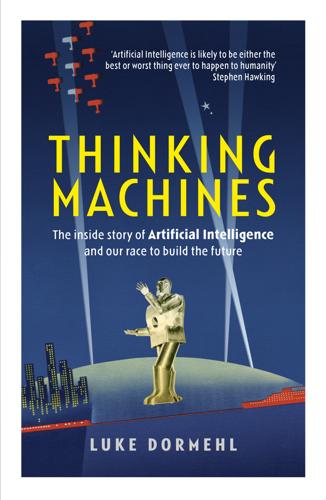
Thinking Machines: The Inside Story of Artificial Intelligence and Our Race to Build the Future
by
Luke Dormehl
Published 10 Aug 2016
CHAPTER 3 Intelligence Is all Around Us IN 1998, THE year in which Apple unveiled its bulbous iMac computer, Harry Potter was introduced to the world and the first portable MP3 player went on sale, a 44-year-old professor from the University of Cybernetics in Reading underwent an unusual operation. The aim of Professor Kevin Warwick’s elective surgery was to have a silicon chip encased in a glass tube inserted under the skin on his left arm. Once implanted, this radio-frequency identification device (RFID) chip then sent radio signals, via antennae located around his laboratory, to a central computer able to control Warwick’s immediate surroundings. ‘At the main entrance [of my lab], a voice box operated by the computer said “Hello” when I entered,’ Kevin Warwick later wrote of his experience. ‘The computer detected my progress through the building, opening the door to my lab for me as I approached it and switching on the lights.
…
While it is still easy to balk at the reason someone would willingly undergo such an invasive procedure, the question of why someone should want such a thing has receded into the background. As I write this, I have on my wrist an Apple Watch. It is the 42 mm stainless steel model with Apple’s Milanese Loop band. It cost £599 and can do far, far more than Kevin Warwick ever dreamed his RFID implant would achieve. If I receive a text message or a phone call, or if one of my friends posts a new photo to Instagram, I can view it simply by glancing at my wrist. In supermarkets, I can pay for my groceries by tapping my wrist against the card reader. I can do the same to unlock the door to my room at hundreds of hotels around the world.
…
(TV show) 135–9, 162, 189–90, 225, 254 Jobs, Steve 6–7, 32, 35, 108, 113, 181, 193, 231 Jochem, Todd 55–6 judges 153–4 Kasparov, Garry 137, 138–9, 177 Katz, Lawrence 159–60 Keck, George Fred 81–2 Keynes, John Maynard 139–40 Kjellberg, Felix (PewDiePie) 151 ‘knowledge engineers’ 29, 37 Knowledge Narrator 110–11 Kodak 238 Kolibree 67 Koza, John 188–9 Ktesibios of Alexandria 71–2 Kubrick, Stanley 2, 228 Kurzweil, Ray 213–14, 231–3 Landauer, Thomas 201–2 Lanier, Jaron 156, 157 Laorden, Carlos 100, 101 learning 37–9, 41–4, 52–3, 55 Deep 11–2, 56–63, 96–7, 164, 225 and email filters 88 machine 3, 71, 84–6, 88, 100, 112, 154, 158, 197, 215, 233, 237, 239 reinforcement 83, 232 and smart homes 84, 85 supervised 57 unsupervised 57–8 legal profession 145, 188, 192 LegalZoom 145 LG 132 Lickel, Charles 136–7 ‘life logging’ software 200 Linden, David J. 213–14 Loebner, Hugh 102–3, 105 Loebner Prize 102–5 Lohn, Jason 182, 183–5, 186 long-term potentiation 39–40 love 122–4 Lovelace, Ada 185, 189 Lovelace Test 185–6 Lucas, George 110–11 M2M communication 70–71 ‘M’ (AI assistant) 153 Machine Intelligence from Cortical Networks (MICrONS) project 214–15 machine learners 38 machine learning 3, 71, 84–6, 88, 100, 112, 154, 158, 197, 215, 233, 237, 239 Machine Translator 8–9, 11 ‘machine-aided recognition’ 19–20 Manhattan Project 14, 229 MARK 1 (computer) 43–4 Mattersight Corporation 127 McCarthy, John 18, 19, 20, 27, 42, 54, 253 McCulloch, Warren 40–2, 43, 60, 142–3 Mechanical Turk jobs 152–7 medicine 11, 30, 87–8, 92–5, 187–8, 192, 247, 254 memory 13, 14, 16, 38–9, 42, 49 ‘micro-worlds’ 25 Microsoft 62–3, 106–7, 111–12, 114, 118, 129 mind mapping the 210–14, 217, 218 ‘mind clones’ 203 uploads 221 mindfiles 201–2, 207, 212 Minsky, Marvin 18, 21, 24, 32, 42, 44–6, 49, 105, 205–7, 253–4 MIT 19–20, 27, 96–7, 129, 194–5 Mitsuku (chatterbot) 103–6, 108 Modernising Medicine 11 Momentum Machines, Inc. 141 Moore’s Law 209, 220, 231 Moravec’s paradox 26–7 mortgage applications 237–8 MTurk platform 153, 154, 155 music 168, 172–7, 179 Musk, Elon 149–50, 223–4 MYCIN (expert system) 30–1 nanobots 213–14 nanosensors 92 Nara Logics 118 NASA 6, 182, 184–5 natural selection 182–3 navigational aids 90–1, 126, 127, 128, 241 Nazis 15, 17, 227 Negobot 99–102 Nest Labs 67, 96, 254 Netflix 156, 198 NETtalk 51, 52–3, 60 neural networks 11–12, 38–9, 41, 42–3, 97, 118, 164–6, 168, 201, 208–9, 211, 214–15, 218, 220, 224–5, 233, 237–8, 249, 254, 256–7 neurons 40, 41–2, 46, 49–50, 207, 209–13, 216 neuroscience 40–2, 211, 212, 214, 215 New York World’s Fair 1964 5–11 Newell, Alan 19, 226 Newman, Judith 128–9 Nuance Communications 109 offices, smart 90 OpenWorm 210 ‘Optical Scanning and Information Retrieval’ 7–8, 10 paedophile detection 99–102 Page, Larry 6–7, 34, 220 ‘paperclip maximiser’ scenario 235 Papert, Seymour 27, 44, 45–6, 49 Paro (therapeutic robot) 130–1 patents 188–9 Perceiving and Recognising Automation (PARA) 43 perceptrons 43–6 personality capture 200–4 pharmaceuticals 187–8 Pitts, Walter 40–2, 43, 60 politics 119–2 Pomerlau, Dean 54, 55–6, 90 prediction 87, 198–9 Profound Hypothermia and Circulatory Arrest 219–20 punch-cards 8 Qualcomm 93 radio-frequency identification device (RFID) 65–6 Ramón y Cajal, Santiago 39–40 Rapidly Adapting Lateral Position Handler (RALPH) 55 ‘recommender system’ 198 refuse collection 142 ‘relational agents’ 130 remote working 238–9 reverse engineering 208, 216, 217 rights for AIs 248–51 risks of AI 223–40 accountability issues 240–4, 246–8 ethics 244–8 rights for AIs 248–51 technological unemployment 139–50, 163, 225, 255 robots 62, 74–7, 89–90, 130–1, 141, 149, 162, 217, 225, 227, 246–7, 255–6 Asimov’s three ethical rules of 244–8 robotic limbs 211–12 Roomba robot vacuum cleaner 75–7, 234, 236 Rosenblatt, Frank 42–6, 61, 220 rules 36–7, 79–80 Rumelhart, David 48, 50–1, 63 Russell, Bertrand 41 Rutter, Brad 138, 139 SAINT program 20 sampling (music) 155, 157 ‘Scheherazade’ (Ai storyteller) 169–70 scikit-learn 239 Scripps Health 92 Sculley, John 110–11 search engines 109–10 Searle, John 24–5 Second Life (video game) 194 Second World War 12–13, 14–15, 17, 72, 227 Sejnowski, Terry 48, 51–3 self-awareness 77, 246–7 self-driving 53–6, 90, 143, 149–50 Semantic Information Retrieval (SIR) 20–2 sensors 75–6, 80, 84–6, 93 SHAKEY robot 23–4, 27–8, 90 Shamir, Lior 172–7, 179, 180 Shannon, Claude 13, 16–18, 28, 253 shipping systems 198 Simon, Herbert 10, 19, 24, 226 Sinclair Oil Corporation 6 Singularity, the 228–3, 251, 256 Siri (AI assistant) 108–11, 113–14, 116, 118–19, 125–30, 132, 225–6, 231, 241, 256 SITU 69, 93 Skynet 231 smart devices 3, 66–7, 69–71, 73–7, 80–8, 92–7, 230–1, 254 and AI assistants 116 and feedback 73–4 problems with 94–7 ubiquitous 92–4 and unemployment 141–2 smartwatches 66, 93, 199 Sony 199–200 Sorto, Erik 211, 212 Space Invaders (video game) 37 spectrometers 93 speech recognition 59, 62, 109, 111, 114, 120 SRI International 28, 89–90, 112–13 StarCraft II (video game) 186–7 story generation 169–70 strategy 36 STUDENT program 20 synapses 209 Synthetic Interview 202–3 Tamagotchis 123–5 Tay (chatbot) 106–7 Taylorism 95–6 Teknowledge 32, 33 Terminator franchise 231, 235 Tetris (video game) 28 Theme Park (video game) 29 thermostats 73, 79, 80 ‘three wise men’ puzzle 246–7 Tojan Room, Cambridge University 69–70 ‘tortoises’ (robots) 74–7 toys 123–5 traffic congestion 90–1 transhumanists 205 transistors 16–17 Transits – Into an abyss (musical composition) 168 translation 8–9, 11, 62–3, 155, 225 Turing, Alan 3, 13–17, 28, 35, 102, 105–6, 227, 232 Turing Test 15, 101–7, 229, 232 tutors, remote 160–1 TV, smart 80, 82 Twitter 153–4 ‘ubiquitous computing’ 91–4 unemployment, technological 139–50, 163, 225, 255 universal micropayment system 156 Universal Turing Machine 15–16 Ursache, Marius 193–7, 203–4, 207 vacuum cleaners, robotic 75–7, 234, 236 video games 28–9, 35–7, 151–2, 186–7, 194, 197 Vinge, Vernor 229–30 virtual assistants 107–32, 225–6, 240–1 characteristics 126–8 falling in love with 122–4 political 119–22 proactive 116–18 therapeutic 128–31 voices 124–126, 127–8 Viv Labs 132 Vladeck, David 242–4 ‘vloggers’ 151–2 von Neumann, John 13–14, 17, 100, 229 Voxta (AI assistant) 119–20 waiter drones 141 ‘Walking Cities’ 89–90 Walter, William Grey 74–7 Warwick, Kevin 65–6 Watson (Blue J) 138–9, 162, 189–92 Waze 90–91, 126 weapons 14, 17, 72, 224–5, 234–5, 247, 255–6 ‘wetware’ 208 Wevorce 145 Wiener, Norbert 72–3, 227 Winston, Patrick 49–50 Wofram Alpha tool 108–9 Wozniak, Steve 35, 114 X.ai 116–17 Xbox 360, Kinect device 114 XCoffee 70 XCON (expert system) 31 Xiaoice 129, 130 YouTube 151 Yudkowsky, Eliezer 237–8 Zuckerberg, Mark 7, 107–8, 230–1, 254–5 Acknowledgments WRITING A BOOK is always a bit of a solitary process.
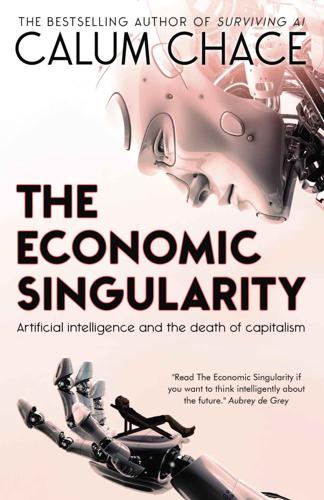
The Economic Singularity: Artificial Intelligence and the Death of Capitalism
by
Calum Chace
Published 17 Jul 2016
My favourite alternative name for the IoT is Ambient Intelligence,[cxxxv] which comes nearest to capturing the essence of the idea, which is that so many sensors, chips and transmitters are embedded in objects around us that our environment becomes intelligent – or at least, intelligible. When originally conceived, the IoT was based on Radio Frequency Identification tags (RFID), tiny devices about the size of a grain of rice which can be “read” remotely without being visible to the device which “reads” them. The RFID is a passive device, and this concept does not involve any AI. Later, technologies like Near Field Communication (NFC) were developed, which allow for two-way data exchange. Android phones have been NFC-enabled since 2011, and it powers the Apple Pay system which was launched with the iPhone 6.
…
As these general stores firms grew bigger and more sophisticated they built large stores where shoppers fetched their own items, and presented them for processing at checkouts, like components on a car assembly line. Later on, self-service tills were installed, where shoppers could scan the bar codes of their goods themselves, speeding up the process considerably. Soon, RFID tags[xvii] on goods will enable you to wheel your trolley full of items out of the store and to your car without the fuss of unloading and re-loading them at a checkout. At each stage of this evolution, the involvement of the consumer in selecting and transporting each item increases, and the requirement for shop staff involvement reduces.

Information: A Very Short Introduction
by
Luciano Floridi
Published 25 Feb 2010
In the (fast-approaching) future, more and more objects will be ITentities able to learn, advise, and communicate with each other. A good example (but it is only an example) is provided by Radio Frequency IDentification (RFID) tags, which can store and remotely retrieve data from an object and give it a unique identity, like a barcode. Tags can measure 0.4 millimetres square and are thinner than paper. Incorporate this tiny microchip in everything, including humans and animals, and you have created ITentities. This is not science fiction. According to a report by market research company InStat, the worldwide production of RFID will have increased more than 25-fold between 2005 and 2010 and reached 33 billion. Imagine networking these 33 billion ITentities together with all the hundreds of millions of PCs, DVDs, iPods, and other ICT devices available and you see that the infosphere is no longer `there' but `here' and it is here to stay.
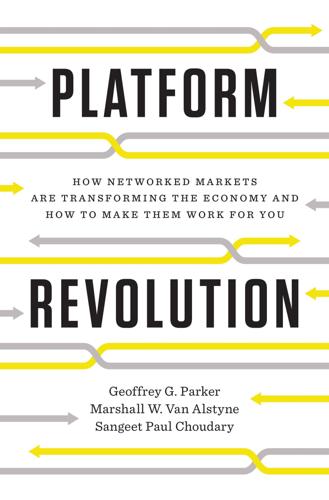
Platform Revolution: How Networked Markets Are Transforming the Economy--And How to Make Them Work for You
by
Sangeet Paul Choudary
,
Marshall W. van Alstyne
and
Geoffrey G. Parker
Published 27 Mar 2016
In the end, of course, the choice of a sponsorship/management model comes down to the purposes for which the platform is being developed and the goals of those designing it. The wireless radio frequency identification (RFID) technology is used to create smart tags that can be attached by the millions to products for inventory control. In effect, the RFID system is an inventory management platform that retailers can access to interact with the goods they distribute. The RFID platform was sponsored by a huge consortium of retailers, and the tags themselves are now manufactured by many companies which compete on the basis of price as well as design. The shared model of sponsorship and management means that the RFID technology itself doesn’t generate enormous profits for anyone—the tags sell for just a few cents apiece.
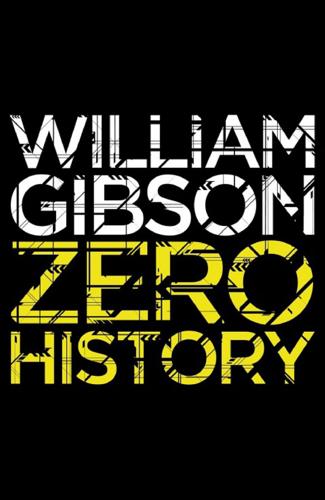
Zero History
by
William Gibson
Published 6 Sep 2010
It would remain on the plane, at Heathrow. Nothing to be carried through customs. His passport lay against his chest, beneath his shirt, in a Faraday pouch protecting the information on its resident RFID tag. RFID snooping was an obsession of Sleight’s. Radio-frequency identification tags. They were in lots of things, evidently, and definitely in every recent U.S. passport. Sleight himself was quite fond of RFID snooping, which Milgrim supposed was one reason he worried about it. You could sit in a hotel lobby and remotely collect information from the passports of American businessmen. The Faraday pouch, which blocked all radio signals, made this impossible.
…
If Milgrim spoke now, he wondered for the very first time, would Sleight hear him? It suddenly seemed entirely likely to him that Sleight could. He sat back in his white-enameled aluminum chair, aware again of that emotion he supposed was anger. He could feel the Faraday pouch, containing his passport, slung on its cord, under his shirt. Blocking radio waves. Preventing the RFID in his U.S. passport from being read. He looked at the Neo. Without consciously making any decision, he undid the top button of his shirt, fished the pouch out, opened it, and slid the Neo in with his passport. He tucked it back into his shirt and buttoned up. The pouch was bulkier now, visible under his shirt.
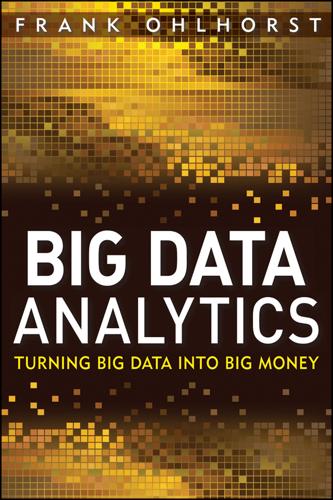
Big Data Analytics: Turning Big Data Into Big Money
by
Frank J. Ohlhorst
Published 28 Nov 2012
Furthermore, the increasing volume and detail of information acquired by businesses and government agencies—paired with the rise of multimedia, social media, instant messaging, e-mail, and other Internet-enabled technologies—will fuel exponential growth in data for the foreseeable future. Some of that growth can be attributed to increased compliance requirements, but a key factor in the increase in data volumes is the increasingly sensor-enabled and instrumented world. Examples include RFID tags, vehicles equipped with GPS sensors, low-cost remote sensing devices, instrumented business processes, and instrumented web site interactions. The question may soon arise of whether Big Data is too big, leading to a situation in which determining value may prove more difficult. This will evolve into an argument for the quality of the data over the quantity.
…
Many industries fall under the umbrella of new data creation and digitization of existing data, and most are becoming appropriate sources for Big Data resources. Those industries include the following: Transportation, logistics, retail, utilities, and telecommunications. Sensor data are being generated at an accelerating rate from fleet GPS transceivers, RFID (radio-frequency identification) tag readers, smart meters, and cell phones (call data records); these data are used to optimize operations and drive operational BI to realize immediate business opportunities. Health care. The health care industry is quickly moving to electronic medical records and images, which it wants to use for short-term public health monitoring and long-term epidemiological research programs.
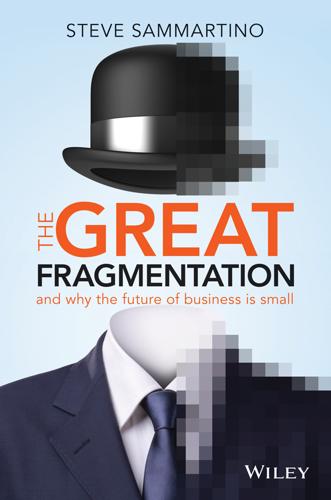
The Great Fragmentation: And Why the Future of All Business Is Small
by
Steve Sammartino
Published 25 Jun 2014
Even when we look at our own homes, we can see the momentum building: personal technology and gadgets, cars, bicycles, televisions, white goods, light globes, thermostats, athletic shoes, clothing, pillows, beds, door locks, toys and wearables — not to mention our phone (the smart hub). Will everything be connected? We know from technology deflation, which was discussed in chapter 7, how cheap the augmentation of technology has become. Many of the widgets used to create this connectivity are cheaper than the packaging they’re sold in. A radio-frequency identification (RFID) chip, for example, is cheaper than the glass bottle Coca-Cola comes in. Other more complex connectivity elements come at the cost of a few dollars. The price of technology is not the issue. If we add to this people’s desire for everything to be connected to the web, there’s no stopping it from becoming a mainstream communications phenomenon that will dwarf the impact of the social web.
…
In essence it will become our globally displaced technological assistance system. And it’s already being installed by innovative yet fragmented industries and startups. The ‘smart home’ will be where it first gains wide acceptance. Start making sense The types of sensor we can expect to use include microprocessors, RFIDs, accelerometers, altimeters, gauges, and audio and visual scanners of every type. If you can think of it and measure it, then a sensor can do it. Sensors can measure and record temperature, light, pressure, moisture, water level, movement, proximity, density, patterns, faces, brands and everyday things in the environment.
…
Even though I have a perfectly fine car and a free car space at my office, I do this because the incentive makes it worth the effort. The government of the day has a combined incentive for increased usage of public transport to reduce traffic congestion and to assist in the meeting of their carbon treaty targets. I check in while travelling using my registered smartphone app or RFID-enabled government issue transport card so that I’m tracked and get my tax credits. Local food retail. For my mid-morning coffee I walk past three cafés to get my java fix. The one a little further down the street offers a free coffee for every fifth check-in with my smartphone using a geo-locating app.
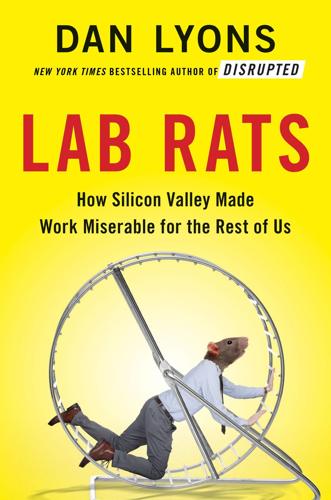
Lab Rats: How Silicon Valley Made Work Miserable for the Rest of Us
by
Dan Lyons
Published 22 Oct 2018
MarketWatch, May 14, 2018. https://www.marketwatch.com/story/why-one-third-of-american-working-age-men-could-be-displaced-by-robots-2018-05-14. Brookings. “The Future of Work: Robots, AI, and Automation.” Event held May 14, 2018. https://www.brookings.edu/events/the-future-of-work-robots-ai-and-automation. Buchanan, Jeff. “Wisconsin Company Offers to Put RFID Chips in Employees’ Bodies.” Xconomy, July 26, 2017. https://www.xconomy.com/wisconsin/2017/07/26/wisconsin-company-offers-to-put-rfid-chips-in-employees-bodies. Burt, Chris. “Nuance Voice Biometrics Solution Hits Milestone.” Biometric Update.com, January 31, 2018. https://www.biometricupdate.com/201801/nuance-voice-biometrics-solution-hits-milestone. Christoff, Kalina.
…
Keep that in mind next time you feel the urge to fire off a message bashing your CEO to a work buddy. Companies monitor our social media activity, too. Some even spy on us through the cameras in our computers. They listen to and record our phone calls, and they track our location with ID badges, wristbands, and mobile phones. A Wisconsin company called Three Square Market has put RFID implants into employees’ hands so they can swipe into the building just by waving their hand. Some collect biometric information about workers, like their voiceprints, iris scans, and fingerprints. A common application is requiring fingerprints for “time and attendance” systems, making employees prove when they clock in and clock out.
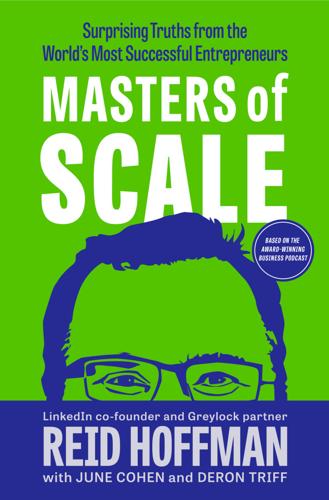
Masters of Scale: Surprising Truths From the World's Most Successful Entrepreneurs
by
Reid Hoffman
,
June Cohen
and
Deron Triff
Published 14 Oct 2021
So Eventbrite invested in RFID technology to allow festival planners to scan tickets electronically as people passed by a chip reader. But rather than investing in tech and declaring the problem solved, Julia’s team went out to observe this new technology in action. It turns out that the RFID chip readers were themselves embedded in huge immovable gates that created more bottlenecks. So Eventbrite made a bold move for a company that had, until that point, been an entirely digital platform. They went hardware and actually made something: a small, specially designed RFID reader that could be clamped to any existing gate.
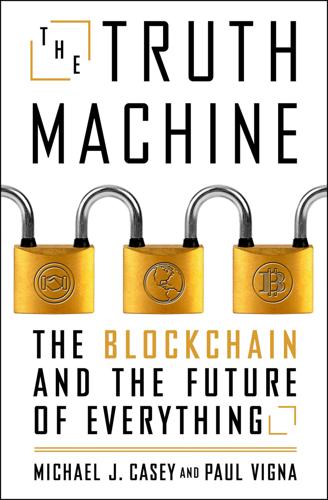
The Truth Machine: The Blockchain and the Future of Everything
by
Paul Vigna
and
Michael J. Casey
Published 27 Feb 2018
Each company can inquire with the others, but just as banks in a sequence of payment processors maintain separate ledgers that are closed to everyone else, there is no visibility across these different siloes of information. That means that a company like Chipotle has no way to check whether the work records at the Australian slaughterhouse show the staff fulfilling compliance requirements and carrying out mandated procedures. Barcodes and RFID chips have in some respect improved traceability of goods across the world, but the real problem in visibility lies behind the closed doors of each supplier. End-producers, and just as importantly, consumers, are flying blind. Blockchain technology, with its capacity to get groups of potentially mistrusting people to coordinate around a common interest, offers a potential solution to this problem.
…
The startup Everledger has uploaded unique identifying data on a million individual diamonds to a blockchain ledger system to build quality assurances and help jewelers comply with regulations barring “blood diamond” products. These solutions are also IoT blockchain plays because they are intrinsically linked to the sensors, barcodes, and RFID chips that are increasingly used in manufacturing and shipping to trace goods, trigger actions, and prompt payment. Once again, there will be a need for “know-your-machine” systems that can “identify” these devices and assure they are operating in a trustworthy way. Once smart contracts are added in, signals from these devices can automatically execute pre-established rights and obligations for payment and delivery that all signatories have agreed to.
…
The concept is only loosely formed at this stage but we raise it here to point out that the assets a blockchain can register go far beyond land. In fact, other assets may be much easier to quantify, with less politics and less ambiguity over ownership. People are talking about blockchain registries of movable assets such as cars, potentially with signals from embedded RFID chips that record unique serial numbers into a blockchain. Blockchain registries could be built up at the point of sale, with loans collateralized right there and then against the asset, a process that would not need the same level of intervention as an official registry. In yet another project from MIT Media Lab, this one led by Michael Casey’s Digital Currency Initiative colleague Mark Weber, a team is working with Inter-American Development Bank to lay a blockchain-based technical foundation for an open-source public asset registry that could support claims on a variety of assets.

Mastering Blockchain, Second Edition
by
Imran Bashir
Published 28 Mar 2018
Once this initial check passes, further detailed biometric verification can be performed by traditional systems and eventually when a decision is made regarding the entry of the passport holder that decision can be propagated back to the blockchain, thus enabling all participants on the network to immediately share the outcome of the decision. A high-level approach to building a blockchain-based border control system can be visualized as shown in the following diagram. In this scenario, the passport is presented for scanning to an RFID and page scanner which reads the data page and extracts machine-readable information along with a hash of the biometric data stored in the RFID chip. At this stage, a live photo and retina scan of the passport holder is also taken. This information is then passed on to the blockchain where a smart contract is responsible for verifying the legitimacy of the travel document by first checking its list of blacklisted passports and then requesting more data from the backend IPFS database for comparison.
…
It includes people, animals, cars, trees, fridges, trains, factories, homes, and in fact anything that is required to be monitored and controlled can be connected to the IoT. Device layer This layer contains things that make up the IoT such as sensors, transducers, actuators, smartphones, smart devices, and Radio-Frequency Identification (RFID) tags. There can be many categories of sensors such as body sensors, home sensors, and environmental sensors based on the type of work they perform. This layer is the core of an IoT ecosystem where various sensors are used to sense real-world environments. This layer includes sensors that can monitor temperature, humidity, liquid flow, chemicals, air, pressure, and much more.
…
A simple contract in Solidity can have an array defined for storing identities and associated biometric records. This array can be used to store the identifying information about a passport. The identity can be a hash of MRZ of the passport or travel document concatenated with the biometric record from the RFID chip. A simple Boolean field can be used to identify blacklisted passports. Once this initial check passes, further detailed biometric verification can be performed by traditional systems and eventually when a decision is made regarding the entry of the passport holder that decision can be propagated back to the blockchain, thus enabling all participants on the network to immediately share the outcome of the decision.
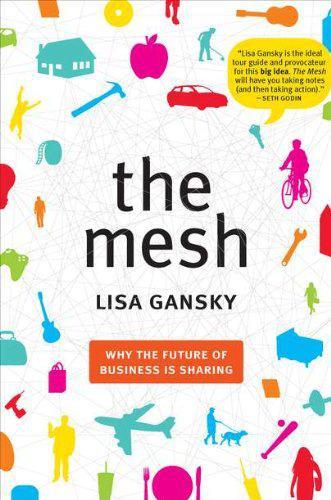
The Mesh: Why the Future of Business Is Sharing
by
Lisa Gansky
Published 14 Oct 2010
Are there other brands that you’re keen on? How else can we make your life simpler, less costly, and more enjoyable? from the digital to the physical. Every day, more parts of the physical world join data networks. Increasingly, usage and location information from multiple sources—including embedded chips, mobile GPS, RFID tracking of goods, and UPC codes—can be fused with data collected from the Web to create digital portraits of customer preferences, including what brands they trust. Adding location data is a critical step. The new networks do not manage only strictly digital products, such as e-books; they can now connect you to physical products and services, like a hot meal (which to date can only be digitalized on Star Trek).
…
Other Meshy transportation companies help consumers trade cars and boats, share taxicabs, and gain access to information about public transportation. Interested in starting your own car-sharing service? The Paris-based company Eileo will steer you down the right road. It offers customized tools—including GPS, RFID, full Web-based car-sharing software, and noninvasive hardware installation—to cover all your car-sharing technology needs, from registration to invoicing. Eileo’s team of engineers is available 24/7 to help you continuously improve your car-sharing business. And their complete solutions will enable you to partner with other car-sharing services worldwide.
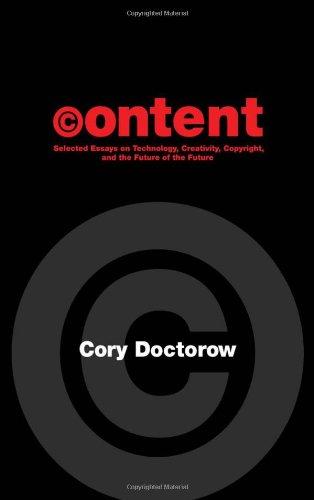
Content: Selected Essays on Technology, Creativity, Copyright, and the Future of the Future
by
Cory Doctorow
Published 15 Sep 2008
Futurists — consultants, technology columnists, analysts, venture capitalists, and entrepreneurial pitchmen — spill a lot of ink, phosphors, and caffeinated hot air in describing a vision for a future where we'll get more and more of whatever it is they want to sell us or warn us away from. Tomorrow will feature faster, cheaper processors, more Internet users, ubiquitous RFID tags, radically democratic political processes dominated by bloggers, massively multiplayer games whose virtual economies dwarf the physical economy. There's a lovely neologism to describe these visions: "futurismic." Futurismic media is that which depicts futurism, not the future. It is often self-serving — think of the antigrav Nikes in Back to the Future III — and it generally doesn't hold up well to scrutiny.
…
They knew who was telling subversive jokes—but missed the fact that the Wall was about to come down. When you watch everyone, you watch no one. This seems to have escaped the operators of the digital surveillance technologies that are taking over our cities. In the brave new world of doorbell cams, wi-fi sniffers, RFID passes, bag searches at the subway and photo lookups at office security desks, universal surveillance is seen as the universal solution to all urban ills. But the truth is that ubiquitous cameras only serve to violate the social contract that makes cities work. The key to living in a city and peacefully co-existing as a social animal in tight quarters is to set a delicate balance of seeing and not seeing.
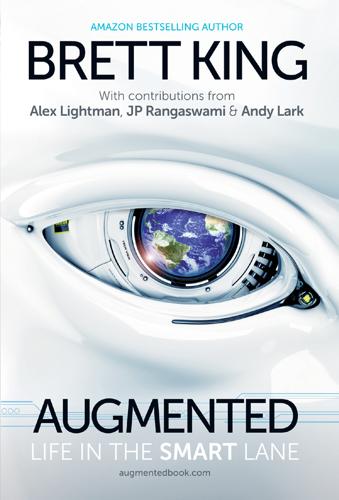
Augmented: Life in the Smart Lane
by
Brett King
Published 5 May 2016
The IEM varies the current flow between the two materials to generate a digital signal which can be detected…The IEM contains no battery, antenna or radio, but rather uses the body to power the device and to pass along the unique, pill-specific signal in a private manner that is far superior to complicated, expensive and privacy-challenged approaches like RFID.” Mark Zdeblick, CTO at Proteus and co-inventor Applying Moore’s Law to implants like this, within five to ten years, this sensor will be reduced to a twentieth of its existing size, injectable and move throughout your bloodstream transmitting health data. Combined with AI, such sensors will be able to anticipate emerging issues and, in tandem with either a wearable device or your personal smartphone, could contact medical authorities to help you in times of distress.
…
However, to accomplish that, we will need a new technology infrastructure underpinning store experiences. Third: Augmented by Beacons For smartphones, smart glasses, a personal AI or smart wearables to respond in the retail space, something must be listening. Today, sensors and Bluetooth connected beacons surround us. iBeacons, NFC chips, radio frequency identification tags (RFID) and more sense our presence and communicate with our devices in real time. Most of the time, we’re unaware that this is happening. Connecting to millions of phones in millions of pockets, with their connected location-based services, they signal the opportunity to deliver extremely tightly focused, personalised messages, offers and promotions in real time.
…
Technology consulting firm Frost & Sullivan forecasts that nearly half a billion people will be using a smartphone equipped with biometrics by 2017. Figure 12.4: Smart changing rooms and mirrors allow a crossover between physical and digital. (Credit: Nordstroms-ebay fitting room) Retailers and brands like Ugg Australia, Uniqlo and Burberry are already using “magic” or “memory” mirror technologies that utilise individual profiles. RFID tags identify the product while cameras capture your image and body shape, enabling you to try on virtual outfits in different colours and styles. Once you’ve had a shopping experience in-store, that profile can then be used at home for you to make sure online goods fit you properly and see how they’ll look in a virtual fitting room experience.

Mexico City Street Food: A Travel Guide for the Curious Eater. How to Safely Enjoy the Delicious Foods From the Street Vendors of Mexico City.
by
Ron Upshaw
Published 24 Nov 2015
I never waited for more than 3-4 minutes for a bus to arrive. Now it’s going to be crowded, especially during peak times on workdays. But the ingenious thing about the Mexican Metrobus system is that they have carved out dedicated lanes in the middle of the streets. There are raised platforms with modern RFID technology to scan your card quickly. Reloading pesos onto your card is also a breeze. The reload kiosks are right at the entrance, and have a button to change the screen to English. Keep your eye on the upper right hand corner of the turnstile when you scan your card to see your remaining balance.

Half Empty
by
David Rakoff
Published 20 Sep 2010
“Lillian” (Lillian was the name of Mrs. Disney) can read the radio frequency identification tag on a bag of flour, for example, and suggest recipes. She knows when one has run out of an ingredient and can connect to an online grocer and order more. That seems convenient enough, but does it require that one affix these RFID tags to all of one’s ingredients so that they fall within Lillian’s purview? That seems like a lot more work than writing a shopping list. More likely such items will be purchased already tagged by the supermarket. But will Lillian know, for example, when I’m down to three cloves of garlic? Enough for a sauce but a woefully short supply if I were contemplating making a gazpacho (he worried faggily).
…
At one point I park myself near one of the control panels and unilaterally select Grandpa’s Andrews Sisters playlist, not giving anyone who approaches even the slimmest of chances of changing the music for a few blessed minutes. This is just one of the many dispiriting aspects of 360 Tomorrowland Way: it would be just as jangling even without visitors, if it was only the family here. Rooms reassemble themselves upon the arrival of a new Elias, responding to RFID tags sewn into their soccer jerseys (although if two people enter the room at the same time, Mom’s preferences prevail, the Peace of the Hearth being of paramount importance). Things chez Elias are both adversarial and negligent, as though a family with shared interests who might agree upon what to hang on the walls of the dining room was somewhat laughable, as though we have all of us, up until now, been living lives of quiet desperation, muffling our desires and personal preferences in ambient music, lighting, cuisine, and artwork.
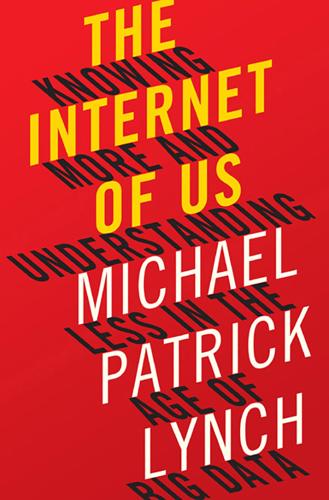
The Internet of Us: Knowing More and Understanding Less in the Age of Big Data
by
Michael P. Lynch
Published 21 Mar 2016
In essence, the “Internet of Things” is a way of describing the phenomenon of networked objects—objects that are embedded with data-streaming sensors and software that connect them to the Net. The “things” in question run the gamut from autonomous connected devices like smartphones to the tiny radio-frequency identification (RFID) microchips and other sorts of sensors attached to everything from UPS trucks and cargo containers to pets, farm animals, cars, thermostats, and NFL helmets. By 2007 there were already 10 million sensors of all sorts connected to the Internet, and some projections have that number rising to 100 trillion by 2030 if not before.4 These sensors are being used not only for economic purposes but for scientific ones (to track migratory animals, for example), and for security and military purposes (such as tracking human beings).
…
O., 159–60 power, knowledge and, 9, 98–99, 133–34 practice, 172–73 prediction: control vs., 182–83 markets, 122–23 searches, 155, 158–59, 183 prejudices, 72–73 primary qualities, defined, 68, 70, 74 printing press, 35, 134 Internet compared to, xv prisons, 105, 106 fishbowl strategy for, 91 Pritchard, Duncan, 132, 203 privacy: and autonomy, 89–109 as basic to human dignity, 101–9 changing concept of, 73 control and, 94–95, 186 devaluing of, 89–93, 99–100, 105 of information, 94–100 justification for invasion of, 107–9 right to, 89, 101–2 threat to, 4, 6, 89–109, 186 traded for security, 105, 108 U.S. legislation on, 93, 95–96, 108 values of, 93–95, 109 privacy policies, 105–6 prize competitions, 136–37 problem-solving sites, 136–37 procedural knowledge, 167–74 Professional Journalists’ Code of Ethics, 84 professors, 152–53 propaganda: Internet as tool for, 66, 81 political, 82–83 property, changing concept of ownership of, 73 Proposition 8 legislation, 53 prosthetics, 191 pro tanto, 198 public life, defined, 63 questioning, skill in, 16–17, 171–72 race, 72, 157, 162 racism, 147 radio-frequency identification (RFID) microchips, 7 raft metaphor, for foundation of beliefs, 129 rationalist delusion, 50–55 Rawls, John, 49 reasonableness, 40, 41–63, 90, 125, 179, 196 as anchor for belief, 132, 195 defined, 50, 55 democracy and, 55–63 devaluing of, 147–48 as rationalist’ delusion, 50–55 reasons, reasoning: arbitrary basis for, 47–48 circular, 130–32 common currency for, 50, 63 defined, 39 exchange of, 50–55 fragmentation in, 4, 41–63 Glauconian view of, 54–55, 56–58 individual sensitivity to, 84–85 knowledge based on, 15, 33, 36–40 rules of, 40 shifting the geography of, 147–48 in value judgment, 57 receptive knowledge, 26–31, 37, 48, 60–61, 153–54, 179–80, 187, 194, 203 as anchor for belief, 131–32 in motor skills, 169 reflective vs., 39, 51, 131, 154, 196 Reddit, 24, 116 reflective knowledge, 39, 51, 131, 154, 196 reliability, 14, 27–31, 39–40, 44–45, 114–16, 119–20, 123–25, 130, 194–95 religion: marriage and, 58–59 science vs., 47–49, 66 values of, 44 Republic, The (Plato), 54, 83 Republican Party, 61–62 research sharing, 135–36 responsibility, individual vs. group, 117–19 Rifkin, Jeremy, 7–8, 92, 140–41, 145, 151, 180 ring of invisibility, 54 robots: cyborg, 5–6, 191–92 as socialbots, 81–82 Rogers, Mike, 96 Romney, Mitt, 200 Rorty, Richard, 62 Rove, Karl, 50 Rudder, Christian, 157–60 Russell, Bertrand, ix, xvii–xviii, 186 Ryle, Gilbert, 168 St.
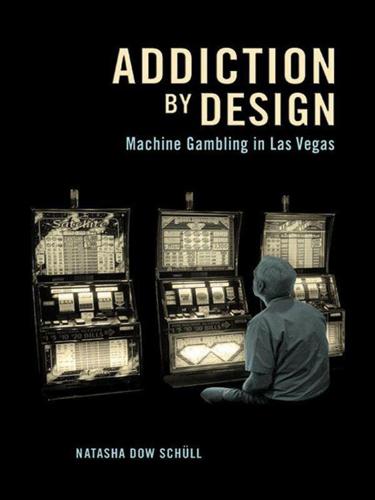
Addiction by Design: Machine Gambling in Las Vegas
by
Natasha Dow Schüll
Published 15 Jan 2012
“Think of the data—it would be fascinating, the stream of people and their flows.” Six years later, during an industry meeting at Station’s Red Rock Casino, Radiofrequency Identification (RFID)—originally devised to monitor the peripatetic movements of criminal offenders and soon thereafter employed by retail operations to trace the purchase of consumer products—was given a trial run among conference participants.21 Applied in casinos, RFID uses tracking tags embedded in player cards to follow patrons as they move through a space, in real time.22 By integrating transactional data and flow of movement, casinos can “analyze their customers’ every move.”23 Yet how, exactly, to make that analysis?
…
The Total Rewards program began as Total Gold in 1998 and changed names in 2000 with the addition of “player tiers.” By 2004, 30 million cardholders were signed up in the program, and today the number stands at 40 million. 21. Press release for G2E institute conference, February 7, 2006. 22. See Andrejevic 2007 for a discussion of the use of RFID in the domain of commerce (89–90, 122–23). 23. Barrett and Gallagher 2004. 24. Brock, Fussell, and Corney 1992. 25. Compudigm International website (www.compudigm.com, accessed June 2007). 26. Javier Saenz of Mariposa (who would become vice president of “strategy for network systems” at IGT), panelist for “Increasing Slot Revenue: New Techniques,” G2E 2007. 27.
…
Reith, Gerda relationship management repeat players research process Responsible Gaming Device responsible gaming: codes of conduct; director of at IGT;; inherent contradiction of; gambling industry’s campaign for; global diffusion of; and individualized risk-management return to player (RTP). See payout percentage. revenue per available customer (REVPAC) Reward and Punishment RadioFrequency Identification (RFID) RGD. See Responsible Gaming Device. Riesman, David risk society. See also Ulrich Beck. risk management: individualized; and choice making; as a logic of gambling regulation. See also actuarial self; harm minimization; self–governance; risk society. Ritzer, George RNG. See random number generator.
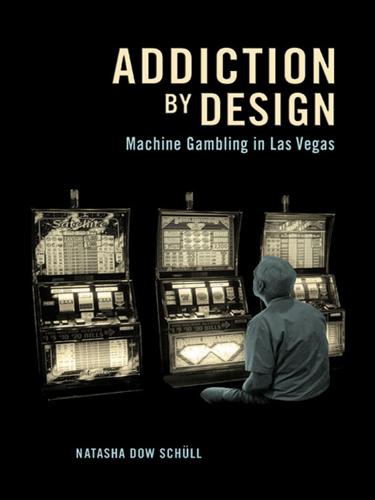
Addiction by Design: Machine Gambling in Las Vegas
by
Natasha Dow Schüll
Published 19 Aug 2012
“Think of the data—it would be fascinating, the stream of people and their flows.” Six years later, during an industry meeting at Station’s Red Rock Casino, Radiofrequency Identification (RFID)—originally devised to monitor the peripatetic movements of criminal offenders and soon thereafter employed by retail operations to trace the purchase of consumer products—was given a trial run among conference participants.21 Applied in casinos, RFID uses tracking tags embedded in player cards to follow patrons as they move through a space, in real time.22 By integrating transactional data and flow of movement, casinos can “analyze their customers’ every move.”23 Yet how, exactly, to make that analysis?
…
The Total Rewards program began as Total Gold in 1998 and changed names in 2000 with the addition of “player tiers.” By 2004, 30 million cardholders were signed up in the program, and today the number stands at 40 million. 21. Press release for G2E institute conference, February 7, 2006. 22. See Andrejevic 2007 for a discussion of the use of RFID in the domain of commerce (89–90, 122–23). 23. Barrett and Gallagher 2004. 24. Brock, Fussell, and Corney 1992. 25. Compudigm International website (www.compudigm.com, accessed June 2007). 26. Javier Saenz of Mariposa (who would become vice president of “strategy for network systems” at IGT), panelist for “Increasing Slot Revenue: New Techniques,” G2E 2007. 27.
…
Reith, Gerda relationship management repeat players research process Responsible Gaming Device responsible gaming: codes of conduct; director of at IGT;; inherent contradiction of; gambling industry’s campaign for; global diffusion of; and individualized risk-management return to player (RTP). See payout percentage. revenue per available customer (REVPAC) Reward and Punishment RadioFrequency Identification (RFID) RGD. See Responsible Gaming Device. Riesman, David risk society. See also Ulrich Beck. risk management: individualized; and choice making; as a logic of gambling regulation. See also actuarial self; harm minimization; self–governance; risk society. Ritzer, George RNG. See random number generator.
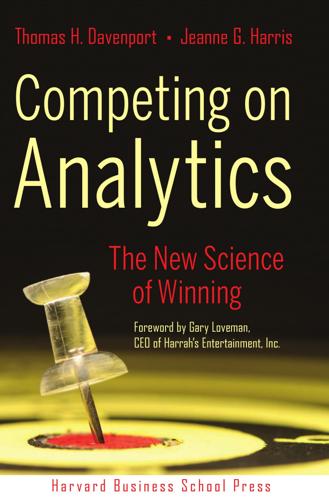
Competing on Analytics: The New Science of Winning
by
Thomas H. Davenport
and
Jeanne G. Harris
Published 6 Mar 2007
Procter & Gamble, for example, used a variety of analytical techniques before its acquisition of Gillette, including those for logistics and supply chains, drivers of stock market value, and human resources. In a few years, firms that do not employ extensive analytics in making a major acquisition will be considered irresponsible. Indeed, trends point to a more analytical future for virtually every firm. The amount of data available will only continue to increase. Radio frequency identification (RFID) devices will be put on virtually every pallet or carton that moves through the supply chain, generating vast amounts of new data for companies to collect and analyze. In retail, every shopping cart will be intelligent enough to gather data on “pickstreams,” or a record of which products are taken off the shelves in what order.
…
Data can also come from the sources popularized in the movies: e-mail, voice applications, images (maps and photos available through the Internet), and biometrics (fingerprints and iris identification). The further the data type is from standard numbers and letters, however, the harder it is to integrate with other data and analyze. More data about the physical world, through sensor technology and radio frequency identification (RFID) tags, is becoming available as well. Some packages can communicate their physical condition—for example, a case of wine could be monitored to see whether it is being kept at the proper temperature. It can be difficult and expensive to capture some highly valuable data. (In some cases, it might even be illegal—for example, sensitive customer information or competitor intelligence about new product plans or pricing strategies.)
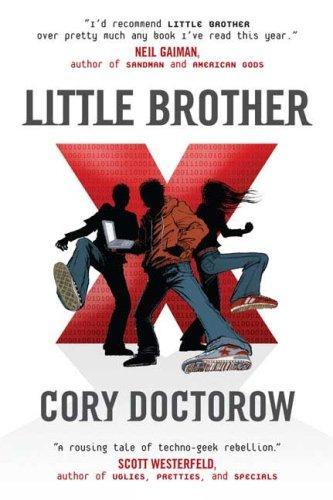
Little Brother
by
Cory Doctorow
Published 29 Apr 2008
The guru of "citizen journalism" is Dan Gillmor, who is presently running the Center for Citizen Media at Harvard and UC Berkeley -- he also wrote a hell of a book on the subject, "We, the Media" (O'Reilly, 2004). If you want to learn more about hacking arphids, start with Annalee Newitz's Wired Magazine article "The RFID Hacking Underground" (www.wirednews.com/wired/archive/14.05/rfid.html). Adam Greenfield's "Everyware" (New Riders Press, 2006) is a chilling look at the dangers of a world of arphids. Neal Gershenfeld's Fab Lab at MIT (fab.cba.mit.edu) is hacking out the world's first real, cheap "3D printers" that can pump out any object you can dream of.
…
She kissed me then, and I kissed her back, and it was some time before we went out for that burrito. &&& Afterword by Bruce Schneier I'm a security technologist. My job is making people secure. I think about security systems and how to break them. Then, how to make them more secure. Computer security systems. Surveillance systems. Airplane security systems and voting machines and RFID chips and everything else. Cory invited me into the last few pages of his book because he wanted me to tell you that security is fun. It's incredibly fun. It's cat and mouse, who can outsmart whom, hunter versus hunted fun. I think it's the most fun job you can possibly have. If you thought it was fun to read about Marcus outsmarting the gait-recognition cameras with rocks in his shoes, think of how much more fun it would be if you were the first person in the world to think of that.
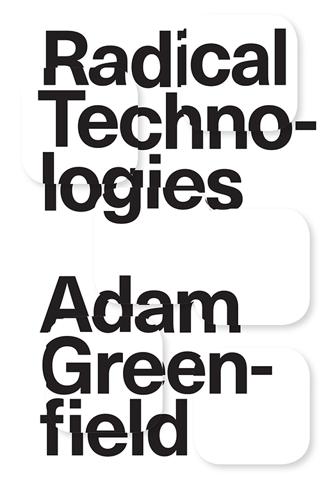
Radical Technologies: The Design of Everyday Life
by
Adam Greenfield
Published 29 May 2017
Behind the wheel, the learning algorithm and the multispectral sensor do for the human driver, moving vehicles across the land more swiftly, more reliably, and more safely than the most responsible flesh-and-blood operator, whether they are charged with the transportation of freight or of passengers. In the warehouse and the loading dock, the standardized container, the RFID tag, the autonomous pallet sled, and the development of sprawling big-box distribution centers that are very little other than enormous robotic systems in themselves—all these things sooner or later settle a quietus onto the prospect of unskilled employment in the fulfillment and logistics sector.
…
It is the skeletal, 3D-printed drone that supervises her eviction, and the gait-recognition and station-keeping algorithms that keep it locked on her until she’s safely offsite; the augmented reality interface that allows a security guard eight thousand miles away to watch her through that drone’s eyes, and the fact that he’ll do that work for fifty US cents an hour, grateful to have any job at all in the charnelhouse of his domestic economy. It’s the high-resolution immersive VR that keeps the neighbors twitching in their flats next door, docilized, politically decorticated and completely uninterested in what’s happening. It is the RFID tags ensuring that any moveable property belonging to her landlord remains on the premises. It is even the landlord itself—an autonomous parastatal enterprise without human shareholders, whose portfolio operates at such a narrow margin of profitability that her flat is already rented to a new tenant by the time she’s a metro stop away.
…
P., 269 Machii, Isao, 266–7 machine learning, 8, 16, 60, 185, 192, 194, 209–57, 308 maker spaces, 93 MakerBot, 85, 88, 101, 104–5, 107 mapping, 22–5, 275, 278 Mann, Steve, 77–8 Marx, Karl, 70, 305 MasterCard, 120 Mason, Paul, 88 Mauthausen, 61 McDonald’s restaurant chain, 194–5 McDonough, William, 96 McNamara, Robert, 57 Merkle roots, 123 Metropolitan Police Service, London, 231 Microsoft, 38–9, 262, 275 minimal techno (music genre), 221 Minority Report (movie), 227, 230 MIT Technology Review (journal), 243 Mitte, Berlin neighborhood, 71–2 Monobloc chair, 106 Monroe, Rodney, 230 Moore’s Law, 88, 93 Morris, David, 256–7 Mountain View, California, 284 M–Pesa digital currency, 117 Music Genome Project, 220 Musk, Elon, 222 National Institute of Justice, 233 National Public Radio, 41, 192 National September 11th Memorial, 65 National Technical University of Athens, 173 NAVSTAR Global Positioning System, 21 NBC Universal, 220 neural networks, 214–16, 219, 264, 266 Nevada, 192 New York City, 51, 56–8, 136, 238 New York Times (newspaper), 177 Next Rembrandt project, 262–3, 265 near-field communication standard (NFC), 17, 117 Niantic Labs, 65 Niemeyer, Oscar, 261 Nieuwenhuys, Constant, 190 Niigata, Japan, 301–2 niqab, 295 Nixon Administration, 204 nonvolatile memory, 15 North Dakota, 192 Norwegian black metal (music genre), 221 Nuit Debout protests, 3 Occupy movement, 167, 169 Oculus Rift virtual reality headset, 82 O’Neil, Cathy, 249 open source hardware, 102 OpenTable, 39–40, 46 Osborne, Michael A., 195 Ostrom, Elinor, 171 output neuron, 215 overtransparency, 240–1, 243 Pai, Sidhant, 98 Pandora music service, 220 Panmunjom Truce Village, 65 Pareto optimality, 55, 59 Paris, 1–6, 292 Pasquale, Frank, 244, 253 path dependence, 232, 299 PayPal, 120, 136, 220 PCWorld, 45 People Analytics, 198, 226, 232 perceptron, 214 Père Lachaise cemetery, 2, 5, 26 persoonskaart, Dutch identity card, 60 Pew Research Center, 41, 193 Pinellas County, Florida, 256 Placemeter, 51 polylactic acid plastic filament (PLA), 94, 98, 101 Pokémon Go, 63–5, 76, 79 Polari, 311 policy network, 264 Pollock, Jackson, 261 Pony Express, 256 porosity, 28, 173 POSIWID, 155, 302 Postcapitalism (Paul Mason), 88 power/knowledge, 62 predictive policing, 227, 230, 232, 235 PredPol, 229, 231, 236, 244, 254 proof-of-work, 128–30, 140–1, 143, 290 prosopagnosia. See faceblindness Protoprint, 99–100, 102 provisioning of mobile phone service, 17, 56 Průša, Josef, 105 psychogeography, 40, 51 Quantified Self movement, 33–6, 40 Radical Networks conference, 314 radio frequency identification (RFID), 200, 296 Radiohead, 35 RAND Corporation, 56–8 RATP, 5 recall, 217, 234–5 redboxing, 229–30 regtech, 157 Reich, Robert, 196 Relentless (AN and Omerod), 265 Rensi, Ed, 195 RepRap 3D printer, 86–7, 93, 104–5, 306 RER, 2, 5 Richelieu, Cardinal, 62 Rifkin, Jeremy, 88, 205, 312 RiteAid, 197 Riverton, Wyoming, 63 Royal Dutch Shell Long-Term Studies Group, 287 Samsung, 285–6 Sandvig, Christian, 252 “Satoshi Nakamoto,” 115, 118, 147, 303 scenario planning, 287 Schneier, Bruce, 45, 243 Scott, James C., 311 SCUM Manifesto (Valerie Solanas), 191 Seoul, 6, 18, 54, 264–5, 284 Metro, 54 Sennett, Richard, 111 sentiment analysis, 198 Serra, Richard, 70 SHA–256 hashing algorithm, 123 Shenzhen Special Economic Zone, 18–19, 43 Shodan search engine, 43 Shoreditch, London neighborhood, 136 Shteyngart, Gary, 246 Sidewalk Labs.
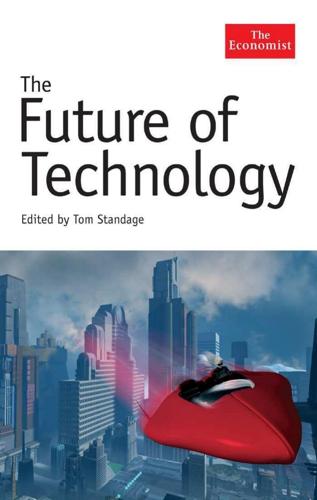
The Future of Technology
by
Tom Standage
Published 31 Aug 2005
Whether railways, cars or even electricity, all are relatively limited technologies compared with it, which in time is likely to embrace the whole of business and society. Currently, wireless technologies are all the rage, although again nobody knows how much money will be in it for vendors and carriers. Optimists hope that surfers will soon be able to roam around freely and remain continuously connected to the internet. And small radio chips called rfid tags will make it possible to track everything and anything, promising to make supply chains much more efficient. But even a new killer application is unlikely to bring back the good old times. “After a crash, much of the glamour of the new technology is gone,” writes Brian Arthur, an economist at the Santa Fe Institute.
…
Currently, the ces technophiles are excited about two trends in particular. The first is that every single electronic device will soon be connected to the internet. This includes the obvious, such as mobile phones and tv sets, and the less obvious, such as shirts and nappies that carry tiny radio-frequency identification (rfid) tags. Microsoft talks about its “connected-car” project, which conjures up images of drivers rebooting on the motorway. But the direction is clear. In future, most people in rich countries will be “always on”, and will connect to the internet through something other than a pc. The other, and related, big idea concerns what some vendors call “the digital home” and others the “e-home”.
…
O’Neil, David 73 O’Neil, John 28, 30 OneSaf 197 online banks 37 online shopping viii, 37 open standards 7, 10, 22–7, 31, 38, 43, 85–7, 115, 118–19, 152 operating systems 9, 10, 23–5, 31, 38, 85, 101, 109 operators, mobile phones 157–61, 162–9 Opsware 8, 15 optical-character recognition 121 Oracle 5, 20–2, 33, 38, 39–40, 46, 56, 62, 86, 243 Orange 157–8 organic IT 13–16, 88 original design manufacturers (ODMs), mobile phones 156–7 O’Roarke, Brian 192 O’Roarke, John 96 Orr, Scott 187 orthogonal frequency-division multiplexing (OFDM) 212–13, 215–17 INDEX Otellini, Paul 11, 95 outshored developments, software 38, 115, 138–9 outsourcing viii, 9, 19–20, 22, 38, 68–9, 71, 72, 88–92, 112–46, 158–60 see also globalisation barriers 121–2, 143 concepts 112–46 costs 112–24, 131–5, 140–3 cultural issues 122, 142 Europe 140–6 historical background 119–20, 125–6, 133 India 38, 109, 112–15, 119–22, 125–35, 137–8, 140–6 legal agreements 121–4 mobile phones 155–6, 158–60 opportunities 144–6 protectionists 140–6 reasons 123–4, 143 services 113–30 social outsourcing 143 “overshoot” stage, industries 9, 10–11, 109 overview vii–x, 6–7 Ovi, Alessandro 275–6 Oxford GlycoSciences 243 P Pacific Cycle 140 Page, Larry 9 Pait, Rob 207 Palladium 74, 76 Palm Pilot 150 Palmisano, Samuel 22 Paltrow, Gwyneth 173 Panasonic 156 Papadopoulos, Greg 14, 78–9, 83–4, 91 Papadopoulos, Stelios 237 Parker, Andrew 143 Parks Associates 96, 203 Parr, Doug 319 particulate filters 296–7 passwords 53, 58–61, 67, 96–7 patents, nanotechnology 321–6, 329 Patriot Act, America 35 PCs 9–16, 78–81, 82–110, 151, 171–3, 202–18 see also digital homes; hardware commoditisation issues 9–16, 132–5, 203 complexity issues 78–81, 82–110 screen sizes 100–1 UWB 214–18 Wi-Fi 209–18 PDAs see personal digital assistants Peck, Art 203 PentaSafe Security 60 Pentium chips 199–200 PeopleSoft 39, 86, 119, 126, 132 Perez, Carlota 5–6, 134 performance issues see also processing power; returns cars 291–8 Cell chips 198–200 cost links 29–30 Perlegen 244 personal digital assistants (PDAs) 151, 277, 279 see also handheld computers personal video recorders (PVRs) 203, 205–6 perverse incentives, security issues 61–2 Pescatore, John 55 Pfizer 69, 240, 247, 312, 315 pharmaceutical companies 239–40, 241–50, 312 PHAs 260 Philippines 130 Philips 120, 217 “phishing” 76, 89 phonograph 82, 84 photo-voltaic cells 280 photos ix, 78, 95, 101, 179–83 Physiome 248 Picardi, Tony 79 Pick, Adam 156 Pink Floyd 225 Piper, H. 292 Pittsburgh convention centre 304 Pivotal 187 plasma screens 230–2 plastics 238–9, 259–64 PlayStation 191–2, 199–200, 206–7 plug-and-play devices 78 plug-in hybrid cars 295–6 Poland 120 police involvement, security breaches 72 polio 265 politics 32–5 see also governments Pollard, John 157 pollution 275, 296–7, 299–304, 319 Pop Idol (TV show) 225 Pope, Alexander 267 Porsche 292 “post-technology” period, IT industry vii, 5–7 Powell, Michael 98, 206 power grids 233, 285–90 PowerPoint presentations 4–5, 107 Predictive Networks 337 Presley, Elvis 225 prices, downward trends viii, 4–7 PricewaterhouseCoopers 38 printers 78, 96 privacy issues 27, 34, 42–8, 179–83 see also security... mobile phones 179–83 processing power see also computer chips 353 THE FUTURE OF TECHNOLOGY exponential growth 4–7, 8–14 Proctor, Donald 106 Prodi, Romano 274–5 profits, future prospects 7, 17–18, 37–40 proprietary technology 24, 26, 80, 86 protectionists, outsourcing 140–6 proteins, biotechnology 241–64 protocols, complexity issues 86 Proxim 210 Prozac 315 PSA Peugeot Citroën 293, 296–7 PSP, Sony 191–3 public accounts 44 Pullin, Graham 177–8 PVRs see personal video recorders Q Qualcomm 164 quantum dots 312, 317, 322, 325 R radiation fears, mobile phones 176 radio 34–5, 36, 39, 94–5, 108, 155–61, 164, 209–18, 223 see also wireless... chips 155–61, 164 “garbage bands” 209–10, 215 music industry 223 spectrum 34–5, 94–5, 209–18 UWB 96–7, 214–19 Radjou, Navi 333–4 railway age vii, 5, 7, 23, 36, 39, 134 Raleigh, Greg 211 RAND 195 rationalisation exercises 31 RCA 108–9, 206, 208, 220, 315 real-world skills, gaming comparisons 194–7 RealNetworks 203 rechargeable batteries 280–4 Recourse Technologies 62–3 Reed, Philip 177 regulations 35, 44, 209–10, 326–9 see also legal issues relational databases 101–2 reliability needs viii, 42–8 religion 19 renewable energy 275–6, 286, 289, 300, 310, 315 ReplayTV 205 Research in Motion (RIM) 152–3 resistance problems, employees 31 return on investment (ROI) 30–1 returns 20, 29–31, 329 see also performance issues risk 20, 30, 329 revenue streams biotechnology 237–8, 241–2 354 gaming 189–90, 191 GM 251–2 mobile phones 151, 154–5, 157, 162–3, 165–6, 174 nanotechnology 321–6 revolutionary ideas vii–viii, 5–7, 13–14, 36–40, 80–4, 107–10, 116, 134, 151–3, 198–200, 236–40, 326–9 RFID radio tags 39, 94–5 Rhapsody 203 Ricardo 296–7 Riley, James, Lieutenant-Colonel 195–7 RIM see Research in Motion ringtones 165–6 RISC chips 200 risk assessments 70–4, 76 attitudes 18 handling methods 71 insurance policies 71–3 management 70–4 mitigation 71–3 outsourced risk 71, 72, 88–92 returns 20, 30, 329 security issues 42–8, 49–69, 70–4 RNA molecules 241–2, 249–50, 265 Robinson, Shane 15–16 robotics x, 233, 316, 332–5 Roco, Mihail 309 Rodgers, T.J. 32 Rofheart, Martin 216–17 Rogers, Richard 300 ROI see return on investment Rolls, Steve 121 Romm, Joseph 298 Roomba 332, 334–5 “root kit” software 51 Rose, John 226 Roslin Institute 256 Roy, Raman 125–8 Russia 115, 130, 140, 142, 145, 319 Ryan, John 312 S S700 mobile phone 171 Saffo, Paul 83–4, 103, 182 Salesforce.com 19, 20, 84, 91–2, 109 Samsung 158–60, 181, 208, 217, 231, 277 Santa Fe Institute 39 SAP 22, 38, 86, 119, 126, 132 satellite television 205 Saudi Arabia 180 scandals 28 scanning tunnelling microscope (STM) 306 SCC see Sustainable Computing Consortium Schadler, Ted 95, 97 Schainker, Robert 285, 289 INDEX Scherf, Kurt 96–7 Schmelzer, Robert 91 Schmidt, Eric 9, 35, 36–8 Schmidt, Nathan 66 Schneider National 29–31 Schneier, Bruce 43, 58, 61–2, 65, 70, 73–4 schools, surveillance technology 181 Schwartz, John 46 Schwinn 140, 143 Scott, Tony 43, 68–9 screen sizes 100–1 screws 23–4 Seagate Technology 207 seamless computing 96–7 Sears, Roebuck & Co 36 Securities and Exchange Commission 321 security issues viii, 25–7, 32–5, 42–8, 49–74, 86–7 see also privacy... airport approach 68–9 anti-virus software 50–1, 60, 67–8 biometric systems 60, 64–5, 71, 74 breaches 43–4, 46, 49–52, 62, 72–3 civil liberties 74 concepts 42–74, 86–7 costs 45–6, 50–1, 62, 70–4 employees 58–63, 69 encryption 53–4 firewalls 51–3, 58, 60, 62, 66–8, 71, 86–7 hackers 4, 43, 47, 49, 51–3, 58–63 handheld computers 67–8 honeypot decoys 62–3 human factors 57–63, 69 identity management 69 IDSs 51, 53–4, 62, 87 impact assessments 70–1, 76 insider attacks 62–3 insurance policies 71–3 internet 35, 42–8, 49–57, 61–2, 66, 66–7, 71, 73–6, 179–83 job vacancies 46 joint ventures 67 major threats 35, 42, 43, 47, 49–63, 66–9 management approaches 60–3, 69 Microsoft 54–6, 72, 74, 76 misconceptions 46–8 networks 42–8, 49–65, 66–9 passwords 53, 58–61, 67, 96–7 patches 56–7, 76 perverse incentives 61–2 police involvement 72 risk assessments 70–4, 76 standards 71–3 terrorism 35, 42, 43, 50, 65, 74, 75–6, 265–6 tools 49–63, 86–7 viruses 45, 47, 49–56, 59–60, 67–8, 74, 86, 89 Wi-Fi 66–7, 93 sedimentation factors 8–9, 84 segmentation issues, mobile phones 167–9 self-configuration concepts 88–9 Sellers, William 23 Seminis 254 Sendo 160 Senegal 182 September 11th 2001 terrorist attacks 35, 42, 43, 50, 65, 75 servers 9–16, 37–8, 62–3, 85–7, 132–3, 203 services industry 14, 17–22, 25–7, 31, 36–40, 80, 88–92, 109, 113–35, 203 see also web services outsourcing 113–46 session initiation protocol (SIP) 104–6 sewing machines 82, 84 SG Cowen 237 shapes, mobile phones 170–6 Shapiro, Carl 24 Sharp 156, 231, 326 shelfware phenomenon 20 Shelley, Mary 267, 269 shipping costs 121 sick building syndrome 302 Siebel 86 Siemens 120, 130, 142, 156, 159, 170, 172, 174 SightSpeed 84, 98, 103 SilentRunner 62 Silicon Valley 9, 32–40, 45–6, 54, 69, 79, 96, 98, 101, 103, 152, 313–14, 321 silk 263, 269 Simon, Herbert 336 simplicity needs 78–81, 84, 87, 88–92, 98–110 SIP see session initiation protocol Sircam virus 45, 49 Sirkin, Hal 120, 140 “six sigma” methods 128 SK 169 Skidmore, Owings & Merrill 302 Sky 205 Skype 103–4, 110 Sloan School of Management, MIT 30 Slovakia 120 small screens 100 Smalley, Richard 311 smallpox 265–6 smart power grids 233, 285–90 smartcards 64, 69 smartphones 150–3, 157–61 see also mobile phones SMES devices 289 Smith Barney 37 Smith, George 307–8 Smith, Lamar 75 Smith, Vernon 17 SNP 243–4 SOAP 25–7 355 THE FUTURE OF TECHNOLOGY social issues mobile phones 177–8, 182–3 music players 220–1 social outsourcing 143 software see also information technology ASPs 19–20, 91–2, 109 bugs 20–1, 54–6 Cell chips 198–200 commoditisation issues 10–16, 25, 132–5, 159, 203 complexity issues 14–15, 78–81, 82–110, 117–22 firewalls 52–3, 58, 86–7 hackers 51–3, 58–63 Java programming language 21–2, 25, 86 management software 13–16, 21–2, 88, 117–18 mobile phones 158–9 natural-language search software 339–40 operating systems 9, 10, 23–5, 31, 38, 85, 101, 109 outsourcing 38, 115, 138–9 patches 56–7, 76 premature releases 20–1 shelfware phenomenon 20 viruses 45, 47, 49–56, 59–60, 67, 74, 89 solar power 275–6, 286, 289, 301–2, 310, 315, 325 Solectron 112–13, 119 solid-state storage media 204, 207, 219 SOMO... project, mobile phones 177–8 Sony 95, 108, 156, 191–3, 198–200, 203, 206–7, 217, 228, 231, 282–4, 332, 334, 338 Sony Ericsson 156, 158, 159–60, 171 Sony/BMG 222–3, 227, 229 Sood, Rahul 38 Sorrent 187 South Africa 309, 319, 334 South Korea 156, 158, 163–5, 167–9, 170–1, 181, 319 soyabean crops 252–4 spam 76, 89, 118 Spar, Debora 32–3 speculation vii speech recognition 102, 121, 336 SPH-V5400 mobile phone 208 Spider-Man 189–90 Spinks, David 60–1, 63 Spitzer, Eliot 223 Sprint 167–8, 180–1 SQL 53 @Stake 54 Standage, Ella 316 standards green buildings 300–4 open standards 7, 10, 22–7, 31, 38, 43, 85–7, 115, 118–19, 152 356 security issues 71–3 W-CDMA standard 163–4, 168 web services 90–1 Wi-Fi 210–13 Stanford University 82, 137 Star Wars (movie) 186 steam power ix, 5, 134 steel industry 134 steering committees 31 stem cells 268–9 Steven Winter Associates 302 Stewart, Martha 249 STM see scanning tunnelling microscope stop-start hybrid cars 293–4 storage problems, electricity 275–6, 289–90 StorageTek 85 strategy 30 stress-resistance, biotechnology 254 Studio Daniel Libeskind 302 Sturiale, Nick 45 Sun Microsystems 9, 13–15, 21–2, 25, 27, 37–8, 43, 56, 58, 78–9, 83, 85, 87, 91, 102 supercomputers 199–200 Superdome machines 21 supply chains 8, 37–40, 155 surveillance technology 35, 74, 179–83, 309 Sussex University 5, 220, 310 Sustainable Computing Consortium (SCC) 27 Sweden 109 Swiss Army-knife design, mobile phones 171–2 Swiss Re Tower, 30 St Mary Axe 299, 301–2, 304 swivel design, mobile phones 171 Symantec 39, 46, 50, 62–3, 67 Symbian 158 Symbol 210 synthetic materials 258–64, 317 systems analysts 137 T T-Mobile 167–8 Taiwan 156–7, 160 Talwar, Vikram 144 Taylor, Andy 226 Taylor, Carson 287 TCP/IP 25 TCS 132–5, 145–6 Teague, Clayton 314 TechNet 33 techniques, technology 17–18 techno-jewellery design, mobile phones 172–4 technology see also individual technologies concepts vii–x, 4–7, 17–18, 23–7, 32–3, 82–4, 134, 326–9 cultural issues 93–4, 142 INDEX geekiness problems 83–4 government links 7, 18, 27, 31–5, 43–8, 123–4, 179–83, 209–10 Luddites 327 surveillance technology 35, 74, 179–83, 309 Tehrani, Rich 105 telecommunications viii, 23, 26, 103–6, 134, 164–5 telegraph 32–3, 108 telephone systems 84, 103–6, 109–10, 212–13, 214 Telia 109 terrorism 35, 42, 43, 50, 65, 74, 75–6, 265–6 Tesco 168 Tetris 12 Texas Energy Centre 287 Texas Instruments 125–6, 217 text-messaging facilities 165, 167 Thelands, Mike 164 therapeutic antibodies 249–50, 256–7 Thiercy, Max 339–40 thin clients 102 third-generation mobile phone networks (3G) 151, 162–9, 212 Thomas, Jim 318 Thomson, Ken 59 Thornley, Tony 164 3G networks see third-generation mobile phone networks TIA see Total Information Awareness TiVo 203, 205–6 Tomb Raider (game/movie) 187–8 Toshiba 156, 198–200, 203 Total Information Awareness (TIA) 35 toxicity issues, nanotechnology 316–17, 319, 328–9 Toyota 291–5, 297, 300–1, 334 toys see also gaming robotics 334 transatlantic cable 36, 39 transistors 4–7, 8–12, 85–7, 109 see also computer chips Transmeta 313 Treat, Brad 84, 98 Tredennick, Nick 10–11 Treo 150, 153 “Trojan horse” software 51–2 True Crime (game) 187 TruSecure 52, 60, 63 TTPCom 155–6 Tuch, Bruce 210 TVs see also video recorders flat-panel displays ix, 94, 147, 202–3, 230–2, 311 hard disks 204–8 screens 202–3, 230–2 set-top boxes 203, 205–6 UWB 214–18 Wi-Fi 212–18 U UBS Warburg 31, 45, 80–1, 89, 170, 174 UDDI 25–7 ultrawideband (UWB) 96–7, 214–19 UMTS see W-CDMA standard “undershoot” stage, industries 9, 109 UNECE 332–4 Ungerman, Jerry 52 Unimate 332–3 United Airlines 27 Universal Music 222–3, 226–7 Unix 9, 25, 85, 108 USB ports 78 usernames 59 USGBC 300–2 utility companies, cyber-terrorism threats 75–6 utility factors 7, 16, 17, 19–22, 42–8 UWB see ultrawideband V V500 mobile phone 157 vaccines 265–6 Vadasz, Les 33 Vail, Tim 290 value added 5–7, 37–40, 133, 138–9 value transistors 11 van Nee, Richard 211 Varian, Hal 24 VC see venture capital Veeco Instruments 324 vendors complexity issues 84–110 consumer needs 94–7 Venter, Craig 262–3, 271 venture capital (VC) 12, 31, 45, 79, 92, 107, 126–7, 238, 308, 321–6 Verdia 254–5, 261 Veritas 39, 85 Vertex 247 vertical integration, mobile phones 156–61 Vertu brand 173–4 Viacom 224 video phone calls 84, 103–6, 164–5, 167–8 video recorders see also TVs DVRs 205–6 handheld video players 206 hard disks 204–8 PVRs 203, 205–6 Wi-Fi 212–13 video searches, Google 11 357 THE FUTURE OF TECHNOLOGY Video Voyeurism Prevention Act, America 180 video-game consoles see gaming Virgin 95, 160, 167–8 Virgin Mobile 160, 167–8 virtual private networks (VPNs) 54, 68, 86–7 virtual tissue, biotechnology 248 virtualisation concepts 15–16, 88–92 viruses 45, 47, 49–56, 59–60, 67–8, 74, 86, 89 anti-virus software 50–1, 60, 67–8 concepts 49–56, 59–60, 74 costs 50–1 double-clicking dangers 59–60 Vista Research 46, 62, 67 Vodafone 164–5 voice conversations internet 103–6 mobile phones 165–9, 171 voice mail 104–6 voice-over-internet protocol (VOIP) 103–6, 167 Vonage 104, 110 VPNs see virtual private networks W W3C see World Wide Web Consortium W-CDMA standard 163–4, 168 Waksal, Sam 249 Wal-Mart 95, 114–15, 131–2, 140, 224, 228 Walkman 192 warfare AI 338 biotechnology 265–6 gaming comparisons 195–7, 339 nanotechnology 319 Warner Music 222–3, 226–7 Watson, James 236, 247, 271 web services 21–2, 25–7, 31, 80, 88–92, 109, 203 see also internet; services... complexity issues 88–92, 109 standards 90–1 Webster, Mark 211 WECA see Wireless Ethernet Compatibility Alliance Weill, Peter 30 Welland, Mark 318 Western Union 33, 108 Westinghouse Electric 332 wheat 253 white page 99–100 Wi-Fi 34–5, 66–7, 93, 95–7, 153, 203, 209–18 concepts 209–18 forecasts 209, 212–13 historical background 209–13 hotspots 211–12 mobile phones 212 standards 210–13 358 threats 212–13 UWB 214–18 Wilkerson, John 237 Williams, Robbie 222, 226 Wilsdon, James 318 WiMax 212–13 WiMedia 213 Wimmer, Eckard 265 wind power 275–6, 286, 289–90, 302 Windows 15, 24–5, 55–6, 96, 101, 108, 152, 203 Windows Media Center 203 WinFS 101 Wipro 112, 115, 120–1, 125–9, 131–5, 138, 145–6 Wireless Ethernet Compatibility Alliance (WECA) 211 wireless technology ix, 11, 34–5, 39, 66–7, 93, 95–7, 109–10, 147, 150–3, 167, 168–9, 171–3, 203, 209–13, 334 see also Wi-Fi Bluetooth wireless links 171–2, 173, 214–15, 218 concepts 209–13, 334 historical background 209–13 Wladawsky-Berger, Irving vii, 5, 19, 22, 25, 38–9 Wolfe, Josh 323 Wong, Leonard 195 Wood, Ben 156–7, 160, 174 Woodcock, Steven 338–9 Word 84, 107 work-life balance 80–1, 94 see also employees World Wide Web Consortium (W3C) 25 worm viruses 49–50, 59, 86, 89 Wright, Myles 118 “ws splat” 90–1 WSDL 25–7 X x-ray crystallography 247–8 Xbox 189, 206–7 Xelibri mobile phones 170, 172, 174 Xerox 108–9 XML see extensible markup language XtremeSpectrum 216 Y Y2K crisis 76, 126, 128 Yagan, Sam 229 Yanagi, Soetsu 84 Yurek, Greg 288 Z ZapThink 91
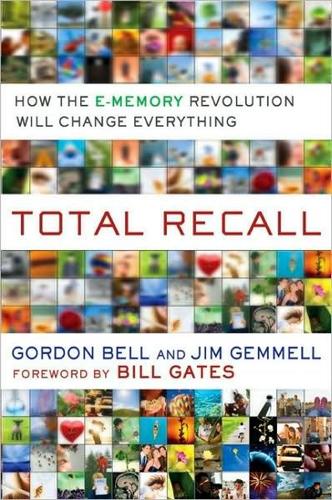
Total Recall: How the E-Memory Revolution Will Change Everything
by
Gordon Bell
and
Jim Gemmell
Published 15 Feb 2009
In addition to giving you all the right reminders, it will not be too long before your e-memories will fill in your other absentminded gaps. Your increasingly location-aware cell phone will remind you where you parked your car. You will track where you have left things like your glasses, either by noting where your devices last detected their RFID tag, or by taking pictures of them. When your mind is absent, your e-memory will always be there. Having too much on my mind doesn’t just make me absentminded; it can make me feel mentally cluttered, impeding my productivity. David Allen’s popular book and seminar series Getting Things Done stands on the central premise that we are hindered by mental clutter: First of all, if it’s on your mind, your mind isn’t clear.
…
Their father, John, lies down in his bed, and a wireless unit underneath the mattress communicates with his pacemaker, downloading the story of his heart for the day. Almost every month, his medication is slightly adjusted based on pacemaker data. Several times, a trend of his weight combined with heart activity leads to messages from his e-Nurse. The e-Nurse remarks that these episodes seem to follow times the RFID sensor in the fridge has tracked chocolate ice-cream purchases. John has believed he could get away with a “little bit” of his favorite dessert, and is chagrined to learn he cannot. Our health care has been built on limited, spotty data. It reminds me of the guy building a house mostly by “eyeballing” it, with only rare use of his tape measure, level, or square.
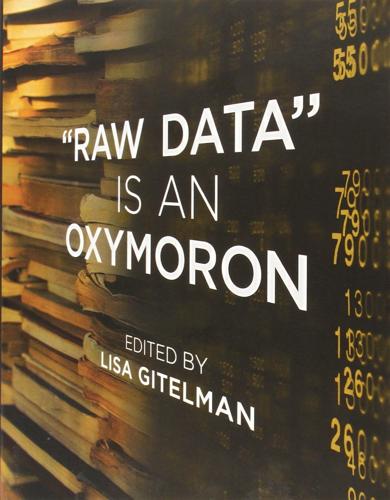
Raw Data Is an Oxymoron
by
Lisa Gitelman
Published 25 Jan 2013
Is data about you yours, or should it be, now that data collection has become an always-everywhere proposition? Try to spend a day “off the grid” and you’d better leave your credit and debit cards, transit pass, school or work ID, passport, and cell phone at home—basically, anything with a barcode, magnetic strip, RFID, or GPS receiver.2 In short, if World War II helped to usher in the era of so-called Big Science, the new millennium has arrived as the era of Big Data.3 For this reason, we think a book like “Raw Data” Is an Oxymoron is particularly timely. Its title may sound like an argument or a thesis, but we want it to work instead as a friendly reminder and a prompt.
…
Along the same lines, Matthew Fuller argues that surveillance is no longer about visual apprehension but is instead a “socio-algorithmic process” that captures and calculates “flecks of identity,” the data trails of our everyday actions, such as our browsing history, financial transactions, and our movements as they are recorded by GPS coordinates on our mobile devices and RFID tags in passports and identity cards.30 The “flecks” concept emerges in some respect from Gilles Deleuze’s outline of the emergence of the “dividual” in the context of the control society; if the individuated self was both product and figure of modernity, “dividuals” are rather fragmented and dispersed data bodies.
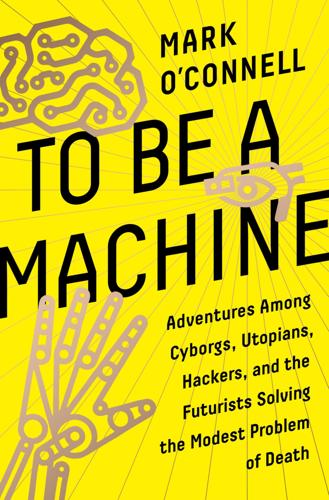
To Be a Machine: Adventures Among Cyborgs, Utopians, Hackers, and the Futurists Solving the Modest Problem of Death
by
Mark O'Connell
Published 28 Feb 2017
“This guy’s like some kind of quote-generating machine,” I said to Marlo, as we waited for the panel to start. I was kneading my wrist, massaging its crude technology of ligament and cartilage, the seized carpal machinery beneath its casing of skin. “My writing hand’s fucked already,” I said. “Maybe you guys could fix me up with some kind of transcription upgrade.” Marlo chuckled, and showed me an RFID chip he’d implanted in the back of his own hand, probing it back and forth through the thin layer of flesh with an index finger. It was roughly the size and shape of a paracetamol capsule. In theory, it enabled him to wave his hand and unlock the front door of HackPittsburgh, the laboratory space downtown where they sometimes worked when they needed more high-grade equipment, but as a new employee he didn’t have clearance, so it basically just sat there, a dormant cell of technology awaiting its commands.
…
He was aware of the extent to which people found this idea repugnant, but again seemed basically untroubled. His response to concerns about this advocation of unprecedented intrusion of government into the lives—into the very bodies—of human beings was to say that “maybe Big Brother isn’t the bad guy, if he protects us from ISIS.” Besides, he himself had had an RFID chip implanted at a grinder event earlier in his campaign tour, and the procedure had been much less painful than you’d think. Once the refugees were deemed not to be a threat to public safety—after a probationary period of, say, three years—they might even choose not to have their microchips removed, given that the technology would soon enable them to pay for coffee in Starbucks by waving their hands at a chip reader.
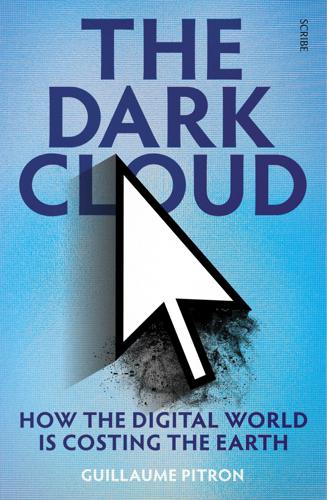
The Dark Cloud: How the Digital World Is Costing the Earth
by
Guillaume Pitron
Published 14 Jun 2023
This generalised connection to the internet ‘has already begun’, said Kelly.4 Today it is called the Internet of Things (IoT) — a term coined in 1999 by researchers at the Massachusetts Institute of Technology (MIT) in reference to the ability of objects, of things, to transmit and receive information via an RFID chip, for instance.5 From mobile phones, tablets, thermostats, watches, lighting, to air conditioning, IoT has grown so fast that there are some 20 billion connected objects in the world today. IoT is consolidating and moving to the next level. Take smart glasses: German writer Byung-Chul Han describes them as being close enough to the body to almost be part of it, as the ultimate achievement of the information society by merging the being and information.6 Then there are medical applications for analysing data from deep within the human body.
…
Chapter Seven: Expansion of the digital universe 1 Steve Case, The Third Wave: an entrepreneur’s vision of the future, Simon & Schuster, 2017. 2 For a more educational definition of the Internet of Everything and its economic potential, watch the YouTube video ‘The Internet of Everything is the New Economy’ (August 2014) by US firm Cisco. 3 Kevin Kelly, The Inevitable: understanding the 12 technological forces that will shape our future, Viking, 2016. 4 Ibid. 5 RFID stands for radio-frequency identification. With this technology a sensor is able to identify an object using radio-frequency signals, allowing two objects to communicate and share information with one another. 6 Byung-Chul Han, In the Swarm: digital prospects, The MIT Press, 2017. Original title: Im Schwarm.

The Lonely Century: How Isolation Imperils Our Future
by
Noreena Hertz
Published 13 May 2020
California, North Dakota and Wisconsin – Three Square Market’s home state – already have similar laws against forcible chipping, though these are not workplace-specific; a ban had also been proposed in Florida though it failed to pass. See Mary Colleen Charlotte Fowler, ‘Chipping Away Employee Privacy: Legal Implications of RFID Microchip Implants for Employees’, National Law Review, 10 October 2019, https://www.natlawreview.com/article/chipping-away-employee-privacy-legal-implications-rfid-microchip-implants-employees. 66 Joshua Z. Wasbin, ‘Examining the Legality of Employee Microchipping Under the Lens of the Transhumanistic Proactionary Principle’, Washington University Jurisprudence Review 11, no. 2 (2019), 401, https://openscholarship.wustl.edu/law_jurisprudence/vol11/iss2/10. 67 European Parliament, ‘Gig economy: EU law to improve workers’ rights (infographic)’, 9 April 2019, https://www.europarl.europa.eu/news/en/headlines/society/20190404STO35070/gig-economy-eu-law-to-improve-workers-rights-infographic; Kate Conger and Noam Scheiber, ‘California Bill Makes App-Based Companies Treat Workers as Employees’, New York Times, 11 September 2019, https://www.nytimes.com/2019/09/11/technology/california-gig-economy-bill.html.
…
Lazzarotti and Maya Atrakchi, ‘Illinois Leads the Way on AI Regulation in the Workplace’, SHRM, 6 November 2019, https://www.shrm.org/resourcesandtools/legal-and-compliance/state-and-local-updates/pages/illinois-leads-the-way-on-ai-regulation-in-the-workplace.aspx; Gerard Stegmaier, Stephanie Wilson, Alexis Cocco and Jim Barbuto, ‘New Illinois employment law signals increased state focus on artificial intelligence in 2020’, Technology Law Dispatch, 21 January 2020, https://www.technologylawdispatch.com/2020/01/privacy-data-protection/new-illinois-employment-law-signals-increased-state-focus-on-artificial-intelligence-in-2020/. 63 This is especially the case outside of Europe, where the General Data Protection Regulation (GDPR) that entered into force in May 2018 goes some of the way to address the imbalance. 64 Radio-Frequency Identification, or RFID, is the technology embedded in almost all of the ‘contactless’ cards you’d use on a daily basis, from credit and debit cards to transit cards such as Oyster. 65 Maggie Astor, ‘Microchip Implants for Employees? One Company Says Yes’, New York Times, 25 July 2017, https://www.nytimes.com/2017/07/25/technology/microchips-wisconsin-company-employees.html.
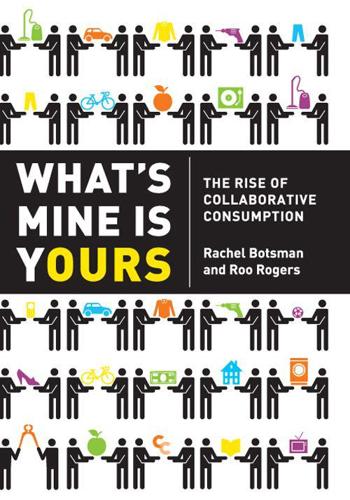
What's Mine Is Yours: How Collaborative Consumption Is Changing the Way We Live
by
Rachel Botsman
and
Roo Rogers
Published 2 Jan 2010
Real-time information about bike availability and station location is accessible from smart phones and on the Internet. BIXI also seems to be avoiding some of the theft and vandalism that have plagued other networks. The bikes are designed with sealed components to resist abuse and each bike contains a Radio Frequency Identification (RFID) chip. If rented and not returned, the bike will slow down and the brakes will lock automatically. The design and planning team estimated that three thousand bikes were the “critical mass” necessary to persuade enough people to switch from cars (and taxis) to bikes at first, enabling the city government to provide more bikes to get more people to switch.
…
Companies achieve this feeling of ownership through discreet branding of the service on the product itself (the Bag Borrow or Steal logo is never visible on the outside of the bag) or building common ownership quirks into the brand. Zipcar gives its cars affectionate names such as “Simpson” the Volvo or “Munselle” the Mazda. Technologies such as RFID (radio-frequency identification) membership cards that open the door to “your” car also help reconfigure the relationship between products and services and destigmatize the notion of sharing. People are realizing that ownership for the sake of exclusive possession is less important than the sense of belonging that ownership imparts.

The Last Dance
by
Martin L. Shoemaker
Published 2 Nov 2019
Was it perhaps the woman scorned? And that brings us back to this cable.” Nick held up the cable for us all to see. “I had Bosun Smith bring me this cable from the lab because there was one piece of information missing from our earlier report: the RFID tag woven into the cable end. And guess what? It’s not one that Professor Azevedo packed in his gear.” “What do you mean?” “Ms. Wells, the RFID tag is clear, and your meticulous inventory is equally clear: this cable came from your personal supplies. You had it stowed in your tent each night before the climb. Oh, and Bosun Smith also searched the rest of the expedition’s supplies very carefully; and the professor’s cable is nowhere to be found.
…
Nick looked from Smith to the cable. Smith nodded. “It was in his cabin, sir, just like you said it would be. I found it coiled up in his pillowcase, crammed in between the bunk and the wall. You’d never notice it without a search. Well, you might, Captain, but not the average person.” She handed the cable to Nick. “The RFID tag confirms that it’s Professor Azevedo’s cable.” Nick stood slowly, came around his desk, and stood nose to nose with Riggs. He didn’t yell. That’s when I know Nick is really angry, not just domineering. He gets very calm. He looked at Riggs and said, “Get off my ship.” Riggs swallowed. “Sir?” “You lied to me, Mr.

Amazon Unbound: Jeff Bezos and the Invention of a Global Empire
by
Brad Stone
Published 10 May 2021
An excited Bezos approved the approach in 2013, not knowing that it would take five arduous and expensive years of research to bring it to fruition. “I think in the beginning, even the scientists were a little suspicious whether or not they could actually pull the thing off,” said Doug Herrington, the Amazon senior vice president in charge of the North American e-commerce business. The Amazon Go engineers initially considered using RFID chips in the product packaging to track which items were removed from shelves or asking customers to use their smartphones to scan product barcodes. But Bezos didn’t want them to take an easy path; he wanted them to innovate in the field of computer vision, which he saw as important to Amazon’s future.
…
On one of his first conference calls with his direct reports after taking the top operations job from Onetto, Clark stunned his subordinates by casually recalling his old nickname from the East Coast FCs—the Sniper. Many later recalled with trepidation his notorious sayings, such as “There’s no room for art degrees here” (even though he himself was a music education major). At one memorable meeting to review a team’s proposal to put RFID chips into Amazon pallets and packages, to better track them through the FCs, Clark walked in, apparently unimpressed with the plan, and said: “Tell me why I shouldn’t just fire all of you right now.” But all of that was handily overshadowed by Clark’s strengths—a sharp, analytical mind and masterful ability to dive into the most intricate level of detail to identify problems and negative trends.
…
Trade Representative, 183 Olsavsky, Brian, 246 Omidyar, Pierre, 122 O’Neill, Gerard K., 281 OnePlus, 77 Onetto, Marc, 166, 218–21, 224, 225 OneWeb, 279 Oracle, 97–99, 173, 360, 361 Oscars, 137, 322 OSHA, 224 Osowski, Lukasz, 28 Outcast Agency, 324 Overstock, 373 paddle boards, 170, 374–75 Paramount Pictures, 158 Paris climate accords, 2, 381 Parkland shooting, 301 Paull, Michael, 146 Pecker, David, 328, 331–32, 334, 337–39, 341, 342, 345 Pegasus, 344 Pelosi, Nancy, 1 Penner, Greg, 90 People’s Production Company, 142 Pérez Sagaón, Abril, 85–86 Perry, Katy, 325 Perticucci, Roy, 392 Peterson, Matt, 97 phatic speech, 34–35 philanthropy, 15, 16, 244, 288, 290, 402–4 Bezos Day 1 Fund, 49, 324, 406 Bezos Earth Fund, 402–4, 406 Blue Origin and, 269, 281–82 of MacKenzie Scott, 323–24, 346, 402–3 Piacentini, Diego, 71, 73, 77, 79, 80, 83, 100, 104 Pichai, Sundar, 359, 369 Pitt, Brad, 325 Plugable Technologies, 176, 375–76 Pluimer, Larry, 181 Poitier, Sidney, 141 Politico, 124 Poovalingam, Vinoth, 76 PopSockets, 367–68 Porter, Brad, 399 Portrait of a Nation Prize, 1–2 Prakash, Shailesh, 123, 129–30 Prasad, Rohit, 35–38, 42, 47, 52 presidential candidates in 2020 election, 351, 353–55, 364 Price, Frank, 140–41 Price, Roy, 136, 137, 140–57 Prione Business Services, 77 Prisoner (Rezaian), 131 privacy, 23, 51–52 ProPublica, 237, 240 Procter & Gamble, 202, 246, 251 Project Kuiper, 404 Puerini, Gianna, 55–57, 59, 62, 64–66, 68 Purohit, Jagdish Raj, 92 Quidsi, 9–10, 193, 209, 222 Quinn, Sally, 133 Rabbit, 195, 238–39 Raghavan, Bali, 56, 58, 62 Rakuten Intelligence, 240–41 Ramji, Shiven, 251 Rashid, Taimur, 99 Ratner, Brett, 337 Rawlings, Mike, 300, 308 Raytheon, 280 Reagan, Ronald, 124 Reddit, 52 Refn, Nicolas Winding, 152 Reid, Toni, 45, 46, 51 Reliance Industries, 93, 384 research and development (R&D) expenses, 67 Reuters, 77, 210 Reveal, 224 Rezaian, Jason, 131–32 RFID chips, 57, 225 Rhimes, Shonda, 154 Riggs, Conrad, 145 Ring, 319, 367 Rivian Automotive, 4 Robb, Walter, 185 Robertson, James, 330, 332, 333 robotics, 55, 56, 213, 222–24, 388, 389 Rodriguez, Alex, 325 Rogers, Ty, 120 Rolle, Nina, 30, 289 Rolls-Royce, 280 Romanoffs, The, 152 Ronen, Assaf, 258 Rosa, Mike, 299 Rose, Charlie, 54 Rosenstein, Barry, 186 RosettiStarr, 360 Rosseter, Megan, 207–8 Roth, Mike, 216–17, 225, 229–31, 233 Rubinstein, David, 350 Ruffin, Scott, 233 Rupp, Chris, 104–7, 112 Russell, David O., 152 Russia, 272 Ryan, Fred, 124–25, 131, 133, 343 Safeway, 186, 192, 196 St.
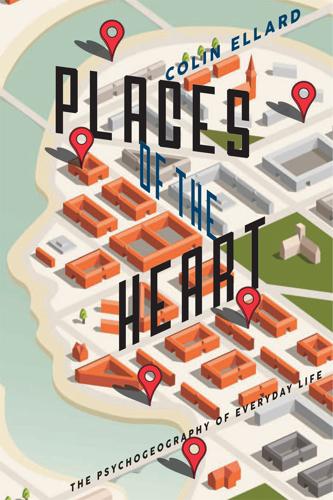
Places of the Heart: The Psychogeography of Everyday Life
by
Colin Ellard
Published 14 May 2015
The state-of-the-art for theme parks that incorporate a strong technological element is the Live Park in South Korea, still under development, with plans for new versions of Live Park in China, Singapore, and a site as yet to be selected in the United States. The Live Park is designed to envelop visitors in a completely immersive virtual reality experience from the moment that they enter the gates. Visitors are fitted with an RFID tag—a small and inexpensive device that allows the visitors’ movements and location to be tracked throughout the space—and they are invited to create an avatar for themselves in which they can customize their own appearance. From this point, it is actually the avatar that engages in the themed activities of the park.
…
Chapter 3 1Jack Katz, Seductions of Crime: Moral and Sensual Attractions in Doing Evil (Basic Book, New York, 1990). 2The Chromo11 website can be found at: http://www.chromo11.com/ 3Brendan Walker’s The Taxonomy of Thrill was published by Aerial Publishing, London, 2005. 4Rem Koolhaas’s provocative book Delirious New York: A Retroactive Manifesto for Manhattan, was published by Monacelli Press, New York, 1994. 5A short account of Seoul’s Live Park can be found online in the e-zine The Verge (January 26, 2012) Available at: http://www.theverge.com/2012/1/26/2736462/south-korea-live-park-kinect-rfid-interactive-attractions 6A celebrated condemnation of the Disney empire can be found in James Howard Kunstler’s polemic The Geography of Nowhere: The Rise and Decline of America’s Man-Made Landscape (Free Press, New York, 1994). 7A journalistic account of Celebration’s dark side can be found in the Daily Mail online article by Tom Leonard, titled “The Dark Heart of Disney’s Dream Town: Celebration Has Wife-Swapping, Suicide, Vandals . . . and Now Even a Brutal Murder,” published on December 9, 2010.
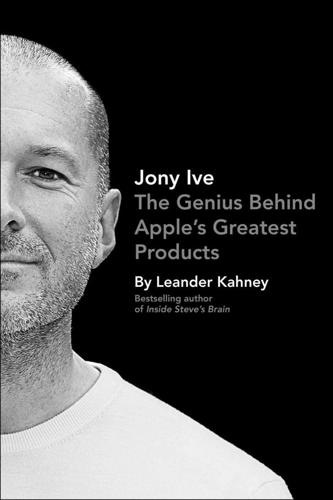
Jony Ive: The Genius Behind Apple's Greatest Products
by
Leander Kahney
Published 14 Nov 2013
One of his early projects was the Macintosh Color Classic, an update of the original Mac that exuded character and was avidly collected by fans for years. He would later work on the MacBook Pro and the iPhones 4 and 5. His name appears on more than 560 patents. They’re vast and varied in scope, including innovations in 3-D cameras, multi-touch displays, location tracking, RFID transponders, nitriding stainless steel, magsafe charging mechanisms, the iPod and improved speaker enclosures. Later in his career, De Iuliis would receive top design awards for his work. Once Jony joined the team, the two developed a strong relationship. De Iuliis and Jony lived close to each other in San Francisco, and commuted together for more than twenty years.
…
By 2013, Andre had more patents to his name than any other Apple designer, including Jony. In 2009 alone, he received 92 patents; in 2010, his 114 set a record for an Apple designer. Most of the patent awards were for innovations on the phone, tablet and laptop lines. Andre worked on everything at ID, from circuit modules to RFID systems. He was credited with the design of Apple’s 035 design prototype of the first iPad, according to information released during the Apple v. Samsung trial in 2012. Along with other members of the team, he several times received the prestigious Red Dot Award, from Germany’s Design Zentrum Nordrhein Westfalen institute.
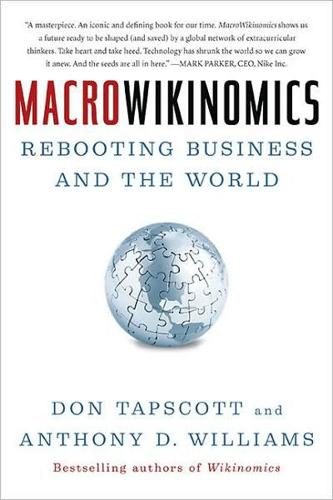
MacroWikinomics: Rebooting Business and the World
by
Don Tapscott
and
Anthony D. Williams
Published 28 Sep 2010
For example, SAS business analytics allow utilities such as Brazilian utility Cemig to precisely forecast electrical demand in both the long and very short term. Cemig can even predict how demand will change when a World Cup soccer game starts or ends and televisions are turned on or off. Others, like IBM, are piloting schemes to monitor entire systems such as supply chains and transportation networks. The company has developed sensors and RFID tags that can track foodstuffs such as meat or other horticultural products from the producer all the way to the supermarket shelf.16 Armed with this data, retailers can ensure the quality of supply while customers can make smarter purchasing decisions. The drive to make all things “smarter” by connecting electrified objects to the Internet will, within a few years, result in a flood of new data that can be aggregated and analyzed, providing a powerful engine for energy dashboards and trading platforms that help households and businesses optimize their consumption.
…
This account may be fictional, but it is not far-fetched. Like Paulos, technologists and science fiction writers have long envisioned a world where a seamless global network of Internet-connected sensors could capture every event, action, and change on earth. With the proliferation of radio-frequency identification (RFID), satellite imagery, cheap personal video recorders, powerful mobile computing devices, and an array of Internet-connected sensors, that vision of millions of New Yorkers participating (perhaps unwittingly) in an act of civic regulation is increasingly plausible. Indeed, the question raised in this chapter is whether a combination of new technologies and citizen participation could unleash an era of participatory regulation, where citizens and other stakeholder groups play an active role in designing and enforcing regulations.
…
But retailers like Tesco and a legion of online product guides are making this information available anyway. Why? Because customers are demanding transparency! Now imagine the FDA was to extend a similar level of openness to realtime product recalls. Indeed, why not set up an open-source platform where a combination of RFID technologies and historical sales data would enable retailers to alert anyone who has purchased a recalled product. We bet hundreds of programmers would vie for the opportunity if the retailers agreed to open up a series of data feeds. The FDA should also consider open sourcing risk assessment (they call it Hazard Analysis and Critical Control Points) for the same reasons we argued that it’s time for opening up risk assessment in the financial sector.

Python Requests Essentials
by
Rakesh Vidya Chandra
and
Bala Subrahmanyam Varanasi
Published 16 Jun 2015
He has extensive experience in Python, both in sysadmin tasks and automation, and in software development. Ilsu Park is an entrepreneur and software engineer currently living in Seoul, South Korea. He studied computer science from KAIST and was a member of the hacking and security group in college. He has a research experience in RFID security, and his interests are decentralized networks, concurrency handling, and highly scalable architecture. He also has contributed to various open source projects, including Python requests and the tornado web server. He is most passionate about building a great company. Kirk Strauser is a software architect from San Francisco Bay Area and has used Python personally and professionally for over 15 years.
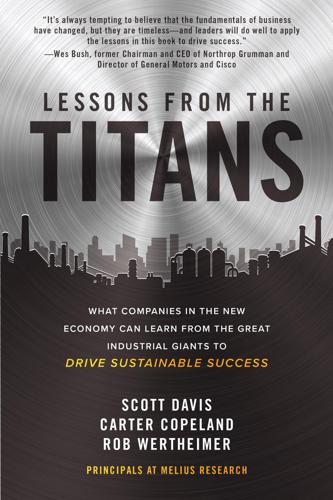
Lessons from the Titans: What Companies in the New Economy Can Learn from the Great Industrial Giants to Drive Sustainable Success
by
Scott Davis
,
Carter Copeland
and
Rob Wertheimer
Published 13 Jul 2020
Did Roper buy a dud, or would utilities begin to invest again after the recession? The answer came quickly. The growth did materialize, and to this day, water companies continue to change out old meters that require in-person reading with wireless ones that are run off radio frequency identification (RFID). Neptune was a big bet. Its cash flow was three times larger in size than the cash flow Roper was producing—and far larger than what most board members were comfortable with. Had that first deal not been a success from day one, there likely would not have been a second. For Jellison, Neptune was the most important bet of his career.
…
And though he was always comfortable with the math, it paid off well more than anyone had expected. Just a year later in 2004, and encouraged by the success of Neptune, Jellison closed another game-changing acquisition called TransCore. Better known as the backbone behind much of the US highway electronic tolling system, it uses RFID to read vehicle tags and charge a toll accordingly. It was another high-margin, noncyclical, high-cash-generating asset. At the time, tolling was a limited-growth industry, as the US federal and state gas taxes were more than sufficient to pay for road maintenance. But those funds have become deficient, driving much of the growth in tolling.

Platform Capitalism
by
Nick Srnicek
Published 22 Dec 2016
Industrial Platforms As data collection, storage, and analysis have become increasingly cheaper, more and more companies have attempted to bring platforms into the field of traditional manufacturing. The most significant of these attempts goes under the rubric of ‘the industrial internet of things’, or simply ‘the industrial internet’. At the most basic level, the industrial internet involves the embedding of sensors and computer chips into the production process and of trackers (e.g. RFID) into the logistics process, all linked together through connections over the internet. In Germany, this process is being heralded as ‘Industry 4.0’. The idea is that each component in the production process becomes able to communicate with assembly machines and other components, without the guidance of workers or managers.

Paintwork
by
Tim Maughan
Published 28 Jul 2011
He guessed she wore them partly out of comfort and familiarity and partly out of pride, the DIY aesthetic they implied considered to be a badge of status amongst members of her Crafter class. He imagined her sitting in her college room late into the night, knitting the gloves; carefully incorporating the Bluetooth transmitters, fibre optic sensors and RFID tags into their design. Jesus, the calibration alone must have taken her hours. As someone who had never used anything except Indian- or Chinese-made off-the-shelf components, he had to admit he was impressed. “Even though I've been assured this place is secure from external taps, I still don't want to risk us being overheard.”
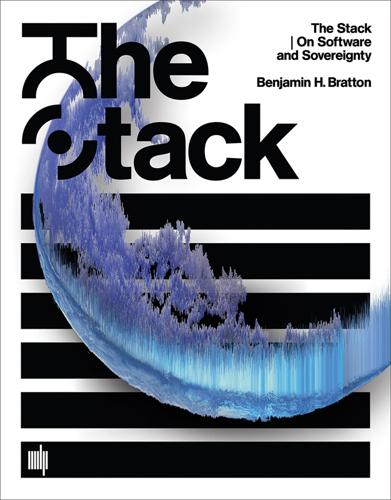
The Stack: On Software and Sovereignty
by
Benjamin H. Bratton
Published 19 Feb 2016
For savvy urban designers, equally adept with physical and virtual envelopes, it's not difficult to make up long lists of possible projects: augmented reality Apps for ambulance paramedics and open-air surgical theaters; a mash-up of post-Twitter microblog Apps linked to post-Siri voice-control interfaces and trans-Google translation software, together posting anything you want to say to anyone anywhere always; citizen activists using GIS, mass-market geobrowsers, and modified drones to streaming real-time C3 video to 3D-printed phones; mining composite crowd-sourced behavioral data to optimize the recycling of post-purchase prosaic junk; real-time flu outbreak visualization and private microgovernance of microbiopolitical swarms (a premium upgrade only for club members); traffic control sensor and smart tollbooth hacks; individually reconfigurable robotic building interiors collapsing rooms and even floors serving different programs in morning and at night; anonymized parking markets based on bitcoin and namecoin; building exteriors featuring networked cinema, not on thirty-second loops but on eighteen-month lunar cycles; lifelong syncing of car-phone-home-Clouds platform allegiance chosen at birth like football team fandom; Google Office per-minute commercial office leasing apps; personal RFID managers; rock star privacy consultants—all driven by (at least partially) open APIs enabling other applications to build further on their existing traces. Insert your own schemes and nightmares here. Regarding the experiment suggested above, for two groups of architects assigned to tackle the virtual as well as the physical envelope, it's certain that even this is fraught with risk, not only because of what it would leave behind but because of what it might accomplish and quickly lose the ability to control.
…
At the City layer, this object-oriented economy of molecular logistics is expressed in “planetary supersurfaces” such as warehouses that are so large that their floors have been laser-leveled against the curvature of the Earth. Instead of walls and windows, these spaces are programmed by bar codes, RFID chips, and scanners and populated by robotic platforms, shelves, and stockers that can easily lift over a ton of goods at once.72 From the perspective of The Stack looking out at the Earth, these architectures of and for things are perhaps even more essential than those rendered for the benefit of human appreciation (as discussed in more detail in the User chapter).
…
By comparison, we are no longer so impressed by the prospect of “smart objects,” interactive habitats, and reflexive architectures. Now projects seek “networked matter,” the hybridizing of digital bits and pieces of the physical world, both above and below anthropometric scale, into an ambient field of systematic intercommunication and assembly. Joining the battalions of RFID-enabled objects would be smart dust, robotic insects, transistors inside of living cells, and programmable clay filled with zillions of nanometric machines that can take on any animated form. Research programs such as Hewlett-Packard's Central Nervous System of the Earth (CeNSE), work toward the trillion-sensor world in which bridges, trains, warehouses, earthquake faults, trees, flowers and animals, and even internal organs are filled with tiny sensors, each transmitting data directly to one another or to the Cloud.4 The promise (or threat) of designing with a computation that is so deeply laced into the structures and behaviors of matter is an ambition for addressing platforms of comprehensive transparency and the remote interaction with the world at a chemical and atomic scale.
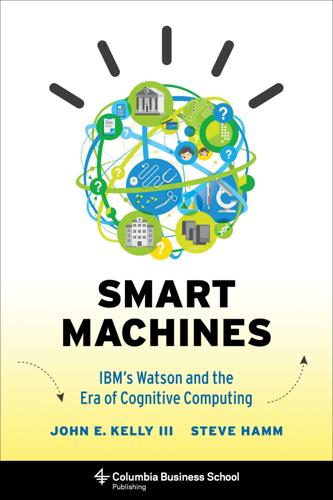
Smart Machines: IBM's Watson and the Era of Cognitive Computing (Columbia Business School Publishing)
by
John E. Kelly Iii
Published 23 Sep 2013
Organizations and individuals are faced with a torrent of data, everything from structured information such as transaction records to a wide variety of unstructured information—still images, video, audio, and sensor data. The biggest new source of data is the so-called Internet of things, data produced by sensors and harvested via the Internet. The sensors involved range from the RFID tags that retailers use to track merchandise to video cameras that capture the flow of traffic. Every day, as a group, human beings generate about 3 exabytes of computer data—a prodigious output that is expected to produce a data universe of 40 zettabytes of digital stuff by 2020.2 A zettabyte is a decidedly big number: a 1 followed by 21 zeros.
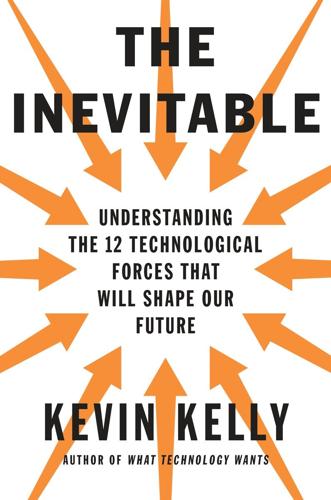
The Inevitable: Understanding the 12 Technological Forces That Will Shape Our Future
by
Kevin Kelly
Published 6 Jun 2016
The electronics industry expects a billion wearable devices in five years, tracking our activities, feeding data into the stream. We can expect another 13 billion appliances, like the Nest thermostat, animating our smarthomes. There will be 3 billion devices built into connected cars. And 100 billion dumb RFID chips embedded into goods on the shelves of Walmart. This is the internet of things, the emerging dreamland of everything we manufacture that is the new platform for the improbable. It is built with data. Knowledge, which is related, but not identical, to information, is exploding at the same rate as information, doubling every two years.
…
See also books; ebooks and readers realism, 211–14, 216 real time, 66, 88, 104, 114–17, 131, 145 recommendation engines, 169 Red Dead Redemption, 227–30 Reddit, 136, 140, 143, 149, 264 Red Hat, 69 reference transactions, 285 relationship network analysis, 187 relativity theory, 288 remixing of ideas, 193–210 and economic growth, 193–95 and intellectual property issues, 207–10 legal issues associated with, 207–10 and reduced cost of creating content, 196–97 and rewindability, 204–7 and visual media, 197–203 remixing video, 197–98 renting, 117–18 replication of media, 206–9 Rethink Robotics, 51 revert functions, 270 reviews by users/readers, 21, 72–73, 139, 266 rewindability, 204–7, 247–48, 270 RFID chips, 283 Rheingold, Howard, 148–49 ride-share taxis, 252 ring tones, 250 Ripley’s Believe It or Not, 278 robots ability to think differently, 51–52 Baxter, 51–52 categories of jobs for, 54–59, 60 and digital storage capacity, 265 dolls, 36 emergence of, 49 industrial robots, 52–53 and mass customization, 173 new jobs related to, 57–58 and personal success, 58–59 personal workbots, 58–59 stages of robot replacement, 59–60 training, 52–53 trust in, 54 Romer, Paul, 193, 209 Rosedale, Phil, 219 Rowling, J.
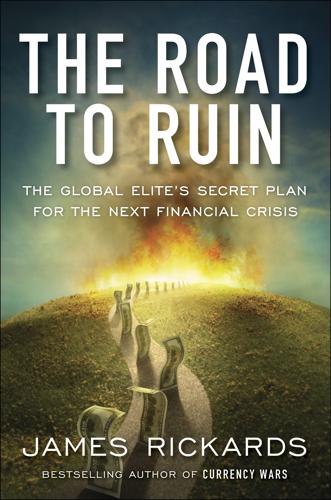
The Road to Ruin: The Global Elites' Secret Plan for the Next Financial Crisis
by
James Rickards
Published 15 Nov 2016
These scanners capture facial images, license plate numbers, and auto types and makes. Drivers like the convenience of E-ZPass automated toll systems, but may not realize that every tollbooth is now a digital surveillance and interdiction point. E-ZPass surveillance uses radio frequency identification technology (RFID). Your E-ZPass tag has a transmitter that broadcasts information about you that is read by a scanner installed overhead at a tollbooth. Now governments are installing scanners and cameras on roads everywhere to collect the same information. The New York Civil Liberties Union recently discovered that New York City and State installed scanners in diverse locations to track the whereabouts of citizens.
…
The New York Civil Liberties Union recently discovered that New York City and State installed scanners in diverse locations to track the whereabouts of citizens. These scanners are not collecting tolls. They are the unacceptable face of the ubiquitous surveillance state. Continuous surveillance is not confined to video cameras and E-ZPass tags. Smartphones and credit cards use an RFID variant called near field communication (NFC) to broadcast your activities to scanners. Each time you use your credit card, a digital fingerprint of your location is recorded. Your smartphone GPS signals your whereabouts between points of purchase. This information is available to government using collection standards that do not adhere to Fourth Amendment requirements of reasonableness and probable cause.
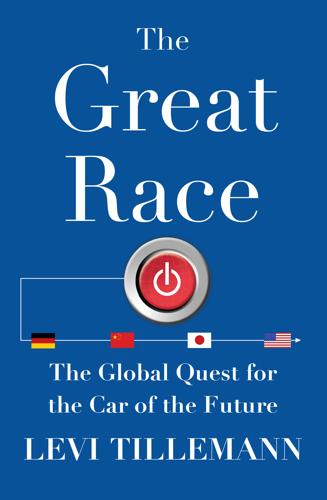
The Great Race: The Global Quest for the Car of the Future
by
Levi Tillemann
Published 20 Jan 2015
New business models like Zipcar or Car2Go are allowing consumers most of the perks of automotive ownership with dramatically reduced overhead, risk, and hassle. Both of the aforementioned services strategically park their vehicles in high-density residential neighborhoods and operate off automated radio frequency identification–based (RFID) rental and entry systems. In the case of Zipcar, members can use their computer or smartphone to reserve a car for an hour or a day according to their needs. When a customer is done, he or she simply returns the car to its designated spot for the next user. Daimler’s Car2Go is a slightly more radical concept.
…
It uses the company’s pint-size Smart cars plus a GPS tracking system to execute a minute-by-minute, point-to-point rental system. Using a smartphone application users can see a map of hundreds of vehicles available for use in their city and can locate the vehicle that is closest to their current position. They enter the car using an individualized RFID-embedded swipe card. When they arrive at their desired location, they simply end the reservation—making the car available for another user. Car2Go is widely deployed in many major cities across Europe and the United States. Of course, these sharing models are not without downsides. Customers might have to reserve a vehicle hours or days in advance—or walk half a mile to get to where the car they want to drive is parked.

Priceless: The Myth of Fair Value (And How to Take Advantage of It)
by
William Poundstone
Published 1 Jan 2010
One of the more intriguing of recent findings is that shoppers open their wallets wider when moving through a store in a counterclockwise direction. On average, these shoppers spend $2 more a trip than clockwise shoppers. This was determined in studies of shopping cart movements. Herb Sorensen of Sorensen Associates has fitted carts with RFID tags emitting a radio ping every five seconds. This PathTracker technology allows sensors to triangulate each cart’s location, map its motion, and tally what was bought and at what price. No one is quite sure why counterclockwise shoppers buy more. Paco Underhill, CEO of Envirosell, mentions one popular guess, that North Americans see shopping carts as “cars” to be driven on the right.
…
G., 53 Psychological Bulletin, 54, 55, 86 psychophysics, 8–9, 26–27, 29–36, 39– 40, 53, 146; definition of, 31; experiments in, 26–27, 35, 40; of jury awards, 276–79; luxury trade and, 155; magnitude scales of, 194; of money, 42–45 origins of, 29–32; of pain, 136; perceptual illusion demonstrations of, 36–37, 84–85; power curve rule in, 32–33; prospect theory and, 98; of rebates, 178 Psychophysics (Stevens), 34 Puffs tissues, 5 Puto, Christopher, 151–53, 156 Quarterly Journal of Economics, The, 138 Quattrone, George, 12–13 Quilted Northern toilet paper, 5 racial discrimination, 245, 283; in car sales, 241–44 Rand, Ayn, 108 RAND Corporation, 71 Rapp, Gregg, 162–64 rationality: bounded, 52; cult of, 77–78 Ravikovich, Dahlia, 82 Reagan, Ronald, 56, 256 real estate market, 196–206, 211; alcohol and deal-making in, 219; anchoring in, 196–201, 203–205; bargaining in, 115; bubbles in, 101, 264; charm prices in, 186; framing of gains and losses in, 107; incentives in, 176; money illusion in, 229 rebates, 176–78 reference points, 98, 101, 132 reference pricing, 204–206 Remington Rand, Inc., 224 Reserve Bank of Zimbabwe, 223 restaurants, 143–45, 159–64; charm pricing by, 186, 190 Revionics, Inc., 6, 148 RFID tags, 150 Richelieu, Duc de, 219 Riding, Alan, 266–67 Ritov, Ilana, 209–10 Ritty, James, 186 Riviera Casino (Las Vegas), 49 Robb Report, 156 Roberts, Gilbert, 283 Robertson, Leslie, 27 Rockefeller, J. Sterling, 49 Rockefeller, Nelson, 116 Rodriguez, Alex, 258–59 Roider, Andreas, 213 Rolex watches, 44 Rolling Stones, 202 Rolodex, 224 Romano, Ray, 255 Romans, ancient, 109–10 Rope, The (Plautus), 109–10 Rosenblum, Paula, 177 Russell Sage Foundation, 104 Ruth, Babe, 258–59 Ryan, Nolan, 259 Saatchi, Charles, 266 Saatchi, Diane, 201 Sage, Russell, 104 salaries, 211–12, 218, 287; beauty premium in, 239–40; cuts in, fairness of, 107; gender and, 237–38, 240; psychophysics and, 42–43; of top earners, 235, 255–59 Salary.com, 211 Sam’s Club, 151 Samuelson, Paul, 51, 77 S&H Green Stamps, 176–77 Sanfey, Alan, 168 Saturn cars, 243 Savage, Leonard “Jimmie,” 56–59, 78, 125, 146 scanners, 147–48 Schiff, Arthur, 169 Schkade, David, 276–77, 279 Schmittberger, Rolf, 113 Schmitz, Patrick, 213 Schutte, Nicola, 17 Schwarze, Bernd, 113 Schweitzer, Maurice, 239–40 Science, 12, 88, 90, 125 Scientific American, 127, 147 Scion cars, 243 Scotland, Church of, 270 Scott, Robert, 4 Seaney, Rick, 183 Securities and Exchange Commission (SEC), 257 Seinfeld, Jerry, 255 Seinfeld (television show), 3, 255 Sensory Logic, Inc., 156 sensory perceptions, study of, see psychophysics September 11 terrorist attacks, 258 Shafir, Eldar, 227, 228, 230–32, 245–47 Shakespeare, William, 127 Shampanier, Kristina, 193 Shiller, Robert, 262–63 Siegelman, Peter, 241–44 Simester, Duncan, 188–91 Simon, Herbert, 51–52 Simon, Hermann, 6, 145–48, 173, 175 Simon Fraser University, 105 Simon-Kucher & Partners (SKP), 4, 6–7, 16, 148, 157–58, 165, 172, 173, 181 Simonson, Itamar, 156–58 Simpsons, The (television show), 143 Sinai war (1956), 81 Sizzler restaurant chain, 160 Skinner, B.
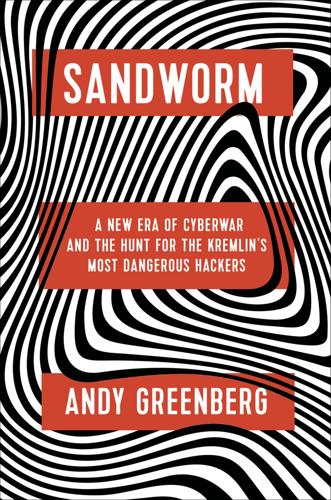
Sandworm: A New Era of Cyberwar and the Hunt for the Kremlin's Most Dangerous Hackers
by
Andy Greenberg
Published 5 Nov 2019
He needed to get to his technology operations center. As Oh made his way out of the press section toward the exits, reporters around him had already begun complaining that the Wi-Fi seemed to have suddenly stopped working. Thousands of internet-linked TVs showing the ceremony at the stadium and twelve other Olympic facilities had gone black. Every RFID-based security gate leading into every Olympic building was down. The Olympics’ official app was broken, too, reaching out for data from back-end servers that suddenly had none to offer. That meant some unknown number of audience members had been unable to load their tickets to their phones, locking them out of the performance.
…
They jumped into a Hyundai SUV and began the forty-minute drive east, down through the mountains to the coastal city of Gangneung, where the Olympics’ technology operation center was located. From the car, Oh immediately made calls to tell staffers at the stadium to start distributing Wi-Fi hot spots to reporters and to tell security to check badges manually, because all RFID systems were down. But he knew that in just over two hours the opening ceremony would end, and all of the tens of thousands of athletes, visiting dignitaries, and spectators at the event would find that they had no Wi-Fi connections and no access to the Olympic app full of schedules, hotel information, and maps.
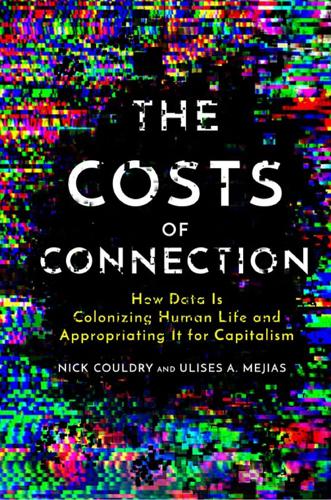
The Costs of Connection: How Data Is Colonizing Human Life and Appropriating It for Capitalism
by
Nick Couldry
and
Ulises A. Mejias
Published 19 Aug 2019
As of 2017, only 17 percent of US retail employees had a set or constant work schedule.101 Data-driven micromanagement of workers. This includes methods such as voice picking (short for “voice-directed order picking”), used extensively in Amazon’s warehouses. Whereas other techniques for managing workers (RFID tags on goods, GPS tracking of workers and the machines they are operating) still leave the worker some autonomy (their position is managed only indirectly), voice picking works to channel surveillance directly through the worker’s body. The worker is instructed through a headset that relays automated verbal comments—issued not by a person but by a warehouse management system—while of course simultaneously watching the worker’s movements.
…
See also specific names of countries “reification,” 230n129 Rekognition (Amazon), 10 remote desktop surveillance, 64–65 reputation, platform management of, 130 Requerimiento (Spanish colonial document), 92–94; as analogy to Google EULA and Facebook SRR, 93–94; original purpose of, 92 “reserve army,” unemployed as, 61 Restrepo, Pascual, 238n117 RFID tags, 64 Richards, Neil, 179 Ricoeur, Paul, 253n10, 254n34 Rieder, Bernhard, 137 Rooney, Sally, xv Rose, Nikolas, 122 Rosenblat, Alex, 62 Rossiter, Ned, 39, 47 Rössler, Beate, 154, 165 Rotenberg, Marc, 177 Rouvroy, Annette, 127–28, 249n141 Russia, social quantification sector in, 55 sacrifice zones, 90 Safari (Apple), 48–49 Said, Edward, 77, 239n34 Salesforce, 65 Sammadar, Ranabir, 66 Sandvig, Christian, 132 Santos, Boaventura de Sousa, 201, 263n46 Saudi Aramco, 54 Scandia, 153 Schildt, Hakan, 153 Schneier, Bruce, xv, 23–24, 128, 135 Schüll, Natasha Dow, 171–72 seamfulness, Vertesi on, 198–201 seamlessness, Cohen on, 229n106 second-order control, 182–83 “second slavery,” 73–74 self: double consciousness of, 157; integrity of, 156–61, 197, 204–5; self-determination, 154–55, 252–53n10; Self versus Other, 239n34; space of the self concept, 156–57, 161–65, 167, 172, 178, 199 self-tracking: as autonomy illusion, 168–73; personal data appropriation spectrum of, 173–76; Quantified Self movement, 168, 171, 257n77; “situated objectivity” of, 256n70; as social knowledge, 128–29, 133; in workplace, 65–66, 153–54 Self-Tracking (Neff, Nafus), 257n77 Sen, Amartya, 201–2 sensors and sensing: biosensors, 141; body sensors, 171; GPS tracking, 29; sensing as model for knowledge, 8; for telematics, 65.
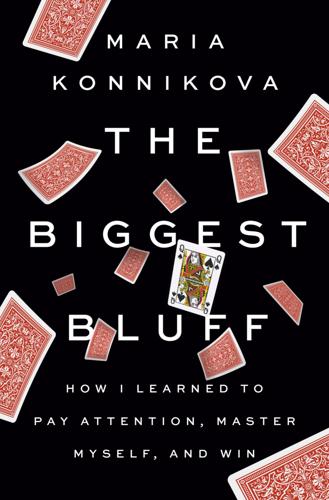
The Biggest Bluff: How I Learned to Pay Attention, Master Myself, and Win
by
Maria Konnikova
Published 22 Jun 2020
While for many years his main focus was on dating behavior—how does our body language on first dates communicate who we are, what we want, what we’re about?—most relevant to me is his work on a project he calls Beyond Tells, the largest ever study of poker players in their natural habitat, the poker table. Over thousands of hands and 1,500 hours of play, he’s observed players in cash game after cash game. As an RFID reader—radio-frequency identification, a technology that detects signals from chips in the cards—picks up the cards each player holds, a team of researchers, coupled with software, codes the surrounding behaviors. The data is then aggregated and correlated to yield any potential patterns in the relationship between the way a player acts and the strength of their hand.
…
See also Lodden Thinks prostitution, 295 psychedelics, 269 psychology and psychology research and academic value of poker, 21–22 on attentiveness, 148 and author’s background, 11–12 author’s dissertation defense, 164–65 and author’s pitch for project, 27–29 and changes in poker world, 8–9 and effects of time pressure, 75 and Galfond, 157 and gender biases, 102 and illusion of control, 62–63 and locus of control, 109–10, 134 and Lodden Thinks, 184–88, 197–98, 207 and luck/superstition, 300 and skills of poker players, 270 and stereotypes and thin-slice judgments, 196–205 and value of statistical edge, 80–81 Quadradius, 292 quantitative and qualitative elements of poker, 8 quitting poker, 59 raising and aggression in charity events, 99–100 and CAPS model of behavior, 220 defined, 330 and key skills of poker, 36 and nonverbal cues, 213 and online play, 73 and stereotypes and thin-slice judgments, 196, 203 VPIP metric, 168 randomness and variance and aggressive play, 56, 99 and author’s pitch for project, 12–13 and financial swings, 124 flow view of, 150–51, 153 and ignoring bad beats, 133, 134–36 and meritocracy view of poker, 139–40 and money swings, 317 and nature of streaks, 123 and races, 163 and swings in poker fortunes, 60–62 See also certainty and uncertainty; chance; probability and statistics rationality and irrationality and academic value of poker, 21–22 and author’s progress as player, 250 and Dunning-Kruger effect, 242–43 Kant on, 38–39 and Magriel, 307–11 and misogyny in poker world, 165 and planning fallacy, 238–39 Sagan on, 325 and standardizing playing behaviors, 217 and superstition, 297–98, 303, 306–7 and tilting, 253–55, 257–58 reading players and attentiveness at the table, 144 and behavioral profiles, 211–15, 215–18, 218–26, 222 and Caro, 66 and conversation at the table, 217–18 and hand motions, 206–9, 213–14, 216–17 and online play, 77–78 skills leading to WSOP, 227–28 and stereotypes and thin-slice judgments, 195–205 and sweating, 140–41 See also tells Reber, Arthur, 70 rebuys, 200, 232–34, 243, 330 return on investment (ROI), 37–38, 243 RFID readers, 212 Richards-Ross, Sanya, 302 riffling chips, 51, 129, 229 rigged decks, 44 Rio and author’s poker schedule, 320 contrasted with Macau, 307 and food options in Vegas, 314 and World Series of Poker, 3, 152, 230, 233–34, 244 Risen, Jane, 243, 303 risk and risk-management and behavioral profiles, 222–23 calibration of, 42 and CAPS model of behavior, 221–22 and chopping prize pools, 265–66 and financial swings, 124 as goal of poker project, 237 and managing cash rates, 191 and swapping, 123 and WSOP Main Event, 248 Ritalin, 269 river cards and angle shooters, 130 and attentiveness at the table, 144, 147 and author’s progress as player, 201, 225, 274, 277, 279–80, 282, 286 and board texture, 78–80 defined, 330 and famous Seidel showdown, 84 and fundamentals of poker, 23 rote learning, 158–59 Rotter, Julian, 109–10 roulette, 34, 60, 173–74 Rounders (film), 10–11 Run it Once (RIO), 156, 169, 229 Russia, 19 Sagan, Carl, 325 salary negotiations, 101–2 Salle des Étoiles (Room of Stars), 175 Salomon Brothers, 165 Salter, James, 19 Sands, 295 Schelling, Thomas, 24, 80 Schott, Webster, 133 Schwarz, Norbert, 254–55 Seidel, Erik and advent of televised poker, 81–82 on aggression in poker, 55–56, 98–100 on attentiveness, 142–44, 147, 208 and author’s first Vegas play, 120–22, 124–28, 131–33, 135–36, 166–69 and author’s PCA title event, 265, 271–73, 289–90 and author’s pitch for project, 11, 12, 26–30 and author’s WSOP goal, 4–5, 31, 51–52, 126–27, 157–58, 169, 192–93, 239–40, 243–44 and backgammon, 46–48, 61, 181–83, 307–9 background, 7–11, 60–61 on bankroll management, 124–25 on Caro, 66 and charity events, 96–98, 103–4, 106, 111–14 coaching plan and teaching process, 50–53, 64–65, 71–76, 77–81, 96, 120, 263–64 on degenning, 179 on Galfond, 155, 156 giving nature of, 31 and Harrington, 47–49, 50 on ignoring bad beats, 132–36, 252, 314 on illusion of control, 63 Lichtenberger on, 152 and Macau, 296 on managing cash rates, 189–92 open-mindedness, 63–64 on safety of Monte Carlo, 180 and skill of poker, 35 style of play, 58, 81–88, 141, 161, 290 on superstitions, 306–7, 309 walking excursions, 52–53 on Washington Square gamers, 46 and WSOP events, 10–11, 37, 234–35 Seidel, Ruah, 61, 157, 289 Seiver, Scott, 268, 305 Selbst, Vanessa, 97 self-awareness and assessment and author’s WSOP goal, 240–41 and chopping prize pools, 265–66 and donkey space, 226 as key to successful play, 59 and lessons of poker, 326 and mental habits, 134 and “M” metric, 57 and nonverbal cues, 211–15 and physical cues, 209 self-reinforcing actions, 312–13 and skipping events, 244 and tilting, 256 sets (three-of-a-kind hands), 132, 225, 248, 274, 299, 327–28, 330 seven-deuce hands, 56 Shakespeare, William, 43 Shannon, Claude, 60 sharks, 130–31 Shoda, Yuichi, 219 showdowns, 10, 37, 53, 80, 85, 278, 330 side betting, 46 Siegel, Benjamin “Bugsy,” 118 Silicon Valley, 17 Silver, Max, 98 Silver, Nate, 39–40 Sit ’n’ Go tables, 89 six-max games, 189, 224–25, 235 skepticism, 66 skill and academic value of poker, 21 vs. chance, 17, 26, 32, 326 as key element of poker, 35–38, 45–46 overestimation of, 14 and Seidel’s style of play, 61 Sklansky, David, 48–49 Slavin, Kevin, 281, 291 sleep and sleep aids, 267–71 Slepian, Michael, 205, 249 Smith, Dan, 138 snap calls, 196 snap fold, 98 SnapShove, 98, 158 socialization, 101–3 socially acceptable gambling, 70 social media, 3, 290 Socratic dialogue, 64–65 solvers, 145, 146, 205 speaking career of author, 169 speech play, 218 split pots, 53.
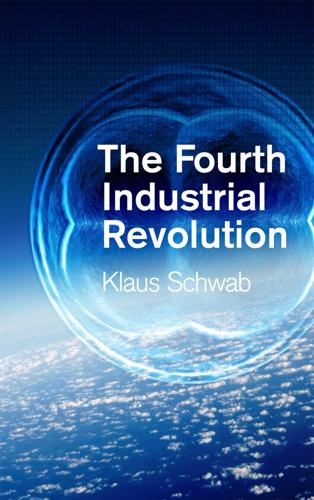
The Fourth Industrial Revolution
by
Klaus Schwab
Published 11 Jan 2016
In the process, it will have transformative impact across all industries, from manufacturing to infrastructure to healthcare. Consider remote monitoring – a widespread application of the IoT. Any package, pallet or container can now be equipped with a sensor, transmitter or radio frequency identification (RFID) tag that allows a company to track where it is as it moves through the supply chain – how it is performing, how it is being used, and so on. Similarly, customers can continuously track (practically in real time) the progress of the package or document they are expecting. For companies that are in the business of operating long and complex supply chains, this is transformative.

Confronting Gun Violence in America
by
Thomas Gabor
Published 12 Sep 2016
Stephen Teret and Adam Mernit of Johns Hopkins University have argued that the impressive reductions in highway fatalities have been attributable more to design changes in cars than to changes in driver behavior.98 They make the case that the same result can be achieved through altering the design 306 Confronting Gun Violence in America of firearms. A number of options are being developed with regard to personalized or smart guns99: 1. One approach uses radio frequency identification (RFID) technology, whereby “tags,” which can be objects (e.g., wristwatches, bracelets) containing tiny electromagnetic transmitters, communicate with “readers,” which are embedded in a gun. RFID is widely used for controlled building access and in library book theft prevention, among other uses. When the reader detects the tag, a mechanical device in the gun can move a blocking mechanism so the gun can be fired.
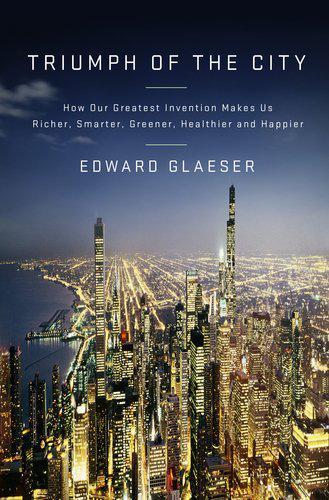
Triumph of the City: How Our Greatest Invention Makes Us Richer, Smarter, Greener, Healthier, and Happier
by
Edward L. Glaeser
Published 1 Jan 2011
See: The Men of the Time: or Sketches of Living Notables, 1852, 161. 237 Pirelli . . . use of rubber: Polese, “In Search of a New Industry.” 237 telegraph cables insulated with rubber: Ibid. 237 headquarters is an architectural icon: Foot, Milan Since the Miracle, 118. 237 two design magazines: Nelson, Building a New Europe, 161-62. 237 designed ceramics, bottles, and chairs: Ibid., 58-59; Foot, Milan Since the Miracle, 113. 237 also made Milan’s population plummet: “Milan,” Encyclopædia Britannica. 238 population increased between 2000 and 2008: Istat, Demography in Figures. 238 Milan’s per capita productivity is the highest: In this case, I am using productivity to mean value added per capita. Author’s calculations using Istat, Regional Accounts and National Economic Accounts. 238 three quarters of Milan’s workers are in services: Author’s calculations using Istat, Regional Accounts. 238 Miuccia Prada and Patrizio Bertelli: Galloni, “Miuccia and Me”; “Learning from Prada,” RFID Journal, June 24, 2002, www.rfidjournal.com/article/view/272/1; and for Pocone, “Prada, Miuccia,” Britannica Book of the Year, 2003, Encyclopædia Britannica. 238 The Versaces: Spindler, “Gianni Versace.” 238 A quarter of the Vancouver area’s residents: Canada: Statistics Canada, Population 15 Years and Over; and Canada: Statistics Canada, Greater Vancouver. 239 top of global quality-of-life rankings: For instance, Mercer’s Quality of Living Worldwide City Rankings, www.mercer.com/qualityoflivingpr#City_Ranking_Tables, or the Economist Intelligence Unit, Global Liveability Report, www.eiu.com/site_info.asp?
…
New York: Free Press, 2003. Lay, Maxwell Gordon. Ways of the World: A History of the World’s Roads and of the Vehicles That Used Them. New Brunswick, NJ: Rutgers University Press, 1992. Leape, Jonathan. “The London Congestion Charge.” Journal of Economic Perspectives 20, no. 4 (Autumn 2006): 157-76. “Learning from Prada.” RFID Journal, June 24, 2002, www.rfidjournal.com/article/view/272/1. Lee, Sidney. A Life of William Shakespeare. London: Smith Elder, 1898. Levick, Barbara. Vespasian. New York: Routledge, 1999. Levine, Robert M. The History of Brazil. Westport, CT: Greenwood Press, 1999. ———. Vale of Tears: Revisiting the Canudos Massacre in Northeastern Brazil, 1893-1897.
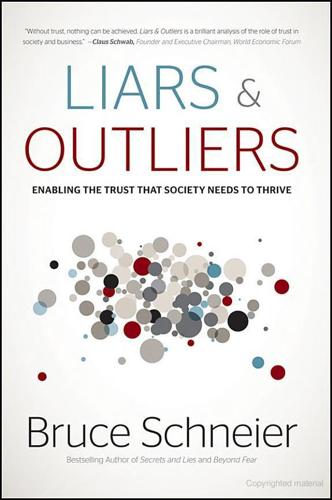
Liars and Outliers: How Security Holds Society Together
by
Bruce Schneier
Published 14 Feb 2012
This works with things like bathrobes, but it's too easy for the hotel to lose track of how many towels a guest has in his room, especially if piles of them are available at the pool or can easily be taken from a housekeeper's cart in the hallway. A newer system, still not widespread, is to embed washable computer chips into the towels and track their movement around the hotel electronically. One anonymous Hawaii hotel claims they've reduced towel theft from 4,000 a month to 750, saving $16,000 monthly in replacement costs. Assuming the RFID tags are inexpensive and don't wear out too quickly, that's a pretty good security system. Let's go back to our two prisoners. They are morally inclined not to betray each other. Their reputation in the underworld depends on them not betraying their fellow criminal. And the criminal organization they're part of has unwritten but very real sanctions against betraying other criminals to the police.
…
To make cooperation easier, think of automatic face-recognition systems, uniforms, those automatic road-sign radar guns that tell you what speed you're going, and road signs that inform you of the rules. Detection/response systems. These include burglar alarms, sensors in smokestacks to detect pollutants, RFID tags attached to store merchandise—or hotel towels—and detectors at the doorways, intrusion-detection systems in computer networks, and a UV light to detect if your hotel's bed sheets are clean. Audit/forensic systems. These are primarily enhancements to institutional societal pressure. They include fingerprint- and DNA-matching technology and the expert systems that analyze credit card spending, looking for patterns of fraud.
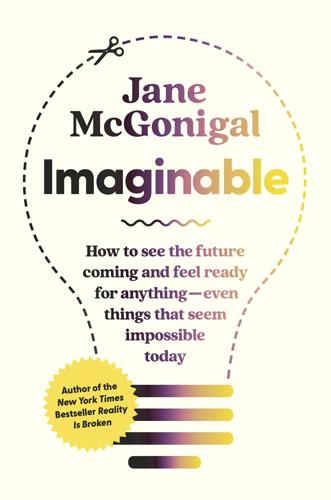
Imaginable: How to See the Future Coming and Feel Ready for Anything―Even Things That Seem Impossible Today
by
Jane McGonigal
Published 22 Mar 2022
Many of the waste management ideas described in the hypothetical scenario are already being experimented with today. Pay-as-you-throw programs, for example, already exist in many parts of the world. In South Korea, all food waste must be separated from other trash and weighed in community “smart bins” equipped with scales and radio frequency identification (RFID) readers. Individuals must scan an RFID card to open the bin and throw something out, and they are automatically charged per pound of trash. As a result, the country now recycles an astonishing 95 percent of its food waste—up from 2 percent in 1995. In other pay-as-you-throw programs, such as in the city of Taipei, trash is collected only in special blue bags, which individuals must purchase if they want to throw anything out.
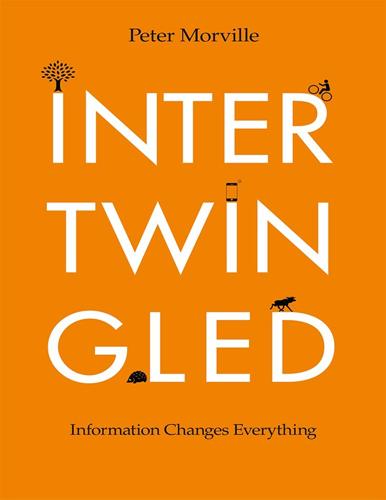
Intertwingled: Information Changes Everything
by
Peter Morville
Published 14 May 2014
We’re so busy searching for dinosaurs, we forget to look where we’re going. In 2004 when Bruce Sterling first spoke of spime – speculative objects precisely located in space and time – the vision he painted was bright green. Transfigured from passive consumers into heroic wranglers, we would mash products, sensors, RFID, and GPS into sustainable spime to reduce, reuse, and recycle like never before. It’s possible to live in a cleaner way. We live in debris and detritus because of our ignorance. That ignorance is no longer technically necessary…Our capacities are tremendous. Eventually, it is within our technical ability to create factories that clean the air as they work, cars that give off drinkable water, industry that creates parks instead of dumps, or even monitoring systems that allow nature to thrive in our cities, neighborhoods, lawns and homes.
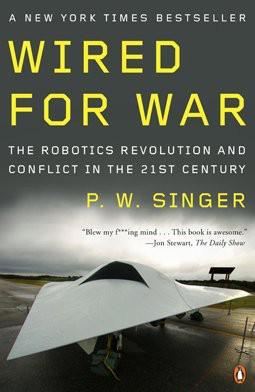
Wired for War: The Robotics Revolution and Conflict in the 21st Century
by
P. W. Singer
Published 1 Jan 2010
While the full force is still a few decades out, a similar trend is already starting to appear with voluntary technologic implants. These don’t merely replace something lost, but add something more. The Florida-based VeriChip company, for instance, has sold human-implantable radio-frequency identification (RFID) chips to over five thousand security, government, and industrial installations. Even the Baja Beach Club, one of Barcelona’s hottest nightclubs, is a buyer. In 2006, the club implanted its VIP customers, including the entire cast of Grand Hermano (the Spanish version of the reality show Big Brother), with the tiny microchips, so that they would not have to wait in line or need to carry cash or credit cards.
…
Navy) Professional, Educated, Trained, and Empowered (PETE) electronic assistant Project Alpha Pugwash movement Pulsed Energy Projectile Purple (supercomputer) al-Qaeda technology and al-Qaeda in Iraq Qiao Liang QinetiQ Quantico (Bear) QuickTime (software program) Quinn, Robert radio control devices radio-frequency identification(RFID) radio-frequency weapons (e-bombs) Raduege, Harry Rainbows End: A Novel with One Foot in the Future (Vinge) Ramirez, Louis Ramona (AI program) RAND Raven (unmanned aerial vehicle) Raytheon RCA Reagan, Ronald Real-Time Adversarial Intelligence and Decision-making (RAID) Reaper (unmanned aerial vehicle) Record, Jeffrey Reed, Lou Rees, Martin Reid, John Reid, Steve Remotec Remote Environmental Monitoring Unit (REMUS) remotely piloted vehicles (RPVs) Repliee (android) Republican Guard, Iraqi REV (Robotic Evacuation Vehicle) REX (Robotic Extraction Vehicle) Reynolds, Craig RFID (radio-frequency identification) RHEX (robot) Ribich, William Rice, Condoleezza Richards, Russ Richtofen, Manfred von Rifkin, Jeremy RMA (revolution in military affairs) hybrid technology and network-centric warfare and Robb, John Robert Heinlein, U.S.S.
…
Navy) Professional, Educated, Trained, and Empowered (PETE) electronic assistant Project Alpha Pugwash movement Pulsed Energy Projectile Purple (supercomputer) al-Qaeda technology and al-Qaeda in Iraq Qiao Liang QinetiQ Quantico (Bear) QuickTime (software program) Quinn, Robert radio control devices radio-frequency identification(RFID) radio-frequency weapons (e-bombs) Raduege, Harry Rainbows End: A Novel with One Foot in the Future (Vinge) Ramirez, Louis Ramona (AI program) RAND Raven (unmanned aerial vehicle) Raytheon RCA Reagan, Ronald Real-Time Adversarial Intelligence and Decision-making (RAID) Reaper (unmanned aerial vehicle) Record, Jeffrey Reed, Lou Rees, Martin Reid, John Reid, Steve Remotec Remote Environmental Monitoring Unit (REMUS) remotely piloted vehicles (RPVs) Repliee (android) Republican Guard, Iraqi REV (Robotic Evacuation Vehicle) REX (Robotic Extraction Vehicle) Reynolds, Craig RFID (radio-frequency identification) RHEX (robot) Ribich, William Rice, Condoleezza Richards, Russ Richtofen, Manfred von Rifkin, Jeremy RMA (revolution in military affairs) hybrid technology and network-centric warfare and Robb, John Robert Heinlein, U.S.S. Robo-lobster (unmanned underwater vehicle) Robo-One (competitive event) Robot Guard Dog Robotic Autonomy Robotic Enhanced Detection Outpost with Lasers (REDOWL) Robotic Evacuation Vehicle (REV) Robotic Extraction Vehicle (REX) robotics: Asian China’s cyberwarfare program and cold war and exponential change in future of warfare and growth of human limitations and robotics (cont.)
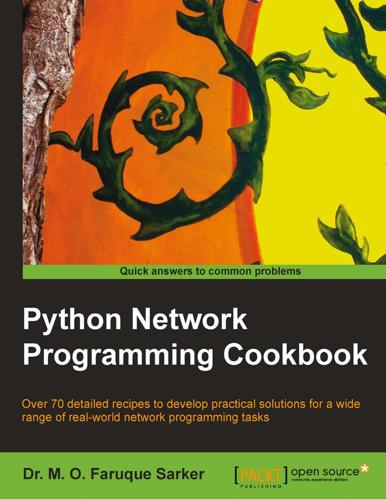
Python Network Programming Cookbook
by
M. Omar Faruque Sarker
Published 15 Feb 2014
Vasudeva Varma, who showed me the direction in my work and helped me a lot. I would also like to thank my Google Summer of Code mentor, Patirica Tressel. Tom Stephens has worked in software development for nearly 10 years and is currently working in embedded development dealing with smartcards, cryptography, and RFID in the Denver metro area. His diverse background includes experience ranging from embedded virtual machines to web UX/UI design to enterprise Business Intelligence. He is most passionate about good software design, including intelligent testing and constantly evolving practices to produce a better product with minimal effort.

To Serve God and Wal-Mart: The Making of Christian Free Enterprise
by
Bethany Moreton
Published 15 May 2009
Stanley D. Brunn (New York: Routledge, 2006), 227–42; Charles Fishman, The Wal-Mart Effect: How the World’s Most Powerful Company Really Works—and How It’s Transforming the American Economy (New York: Penguin, 2006); ATKearney, “Meeting the Retail RFID Mandate: A Discussion of the Issues Facing CPG Companies,” (2003), www. atkearney.com/shared_res/pdf/Retail_RFID_S.pdf. 74. James Hoopes, “Growth Through Knowledge: Wal-Mart, High Technology, and the Ever Less Visible Hand of the Manager,” in Wal-Mart: The Face of Twenty-First Century Capitalism, ed. Nelson Lichtenstein (New York: New Press, 2006), 83–104; on supply chains, see Bonacich and Wilson, “Global Production and Distribution.” 5.
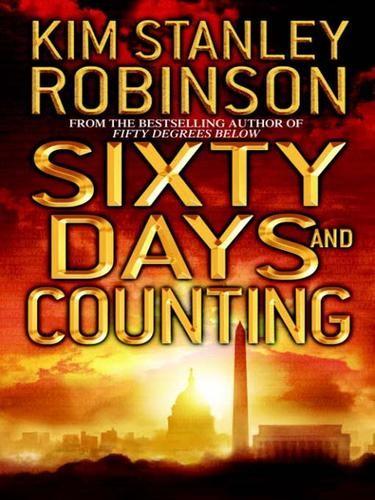
Sixty Days and Counting
by
Kim Stanley Robinson
Published 27 Feb 2007
They had a bad history together on this front, having lost a gibbon that fell to its death after Frank hit it with a trank dart. Neither mentioned this now, but they spoke little until the staffers arrived and one of them shot the tapir. At that the other animals bolted, and the humans approached. The big RFID chip was inserted under the tapir’s thick skin. The animal’s vital signs seemed good. Then they decided to take it in anyway. Too many tapirs had died. Nick and Frank helped hoist the animal onto a gurney big enough for all of them to get a hand on. They carried the unconscious beast through the snow like its pallbearers.
…
Cutter gestured at the view with the can of beer in his hand: “Ain’t it pretty? All these leaves, and nobody’s gonna have to leaf-blow them away.” Fedpage did join him on a dawn patrol one morning, massaging his face to wake up. The two of them wandered slowly up the ravine, peering through the trees, pinging animals they saw with their FOG RFID readers. Fedpage talked under his breath most of the time. Perhaps obsessive-compulsive, with huge systems in his mind which made better sense to him than he could convey to other people. He was not unlike Anna in this intense regard for systems, but did not have Anna’s ability to assign them their proper importance, to prioritize and see a path through a pattern, which was what made Anna so good at NSF.
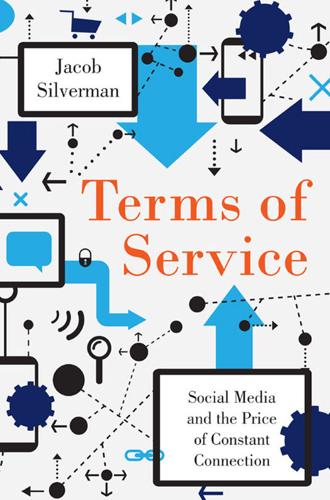
Terms of Service: Social Media and the Price of Constant Connection
by
Jacob Silverman
Published 17 Mar 2015
And there are vast quantities of data, including much of what we do on social media, that are simply public, out there for the taking, whether by an intelligence agency or a small company conducting sentiment analysis. These digital bread crumbs, the tiny leavings that we produce on a daily basis, have spawned a new term: dataveillance. Dataveillance is surveillance enabled by the data produced by credit cards, E-ZPass devices and toll booths, RFID pass cards, transit cards, browser histories, and on and on. Often, they are not important for the actual data they contain—such as what you bought with your credit card—but for their metadata—the time and location you made a purchase, where you went to next, the route you took. (Metadata is data about data, data that describes other data.)
…
For this nascent market, dispensing with human labor may prove more lucrative than the current arrangement. Strangely, it may also prove more humane. One could imagine a movement forming in which labor rights advocates say that micro-work is so unsustainable and dehumanizing that it must be automated. Add RFID chips to all packaged food and grocery products and you can track their movement through supply chains and stores without human assistance. Perhaps companies can partner with stores to help utilize their surveillance systems to monitor the placement of goods. Firm up sentiment analysis, trending-topic algorithms, and optical-character-recognition scanning so that humans aren’t forced to do such drudgery.
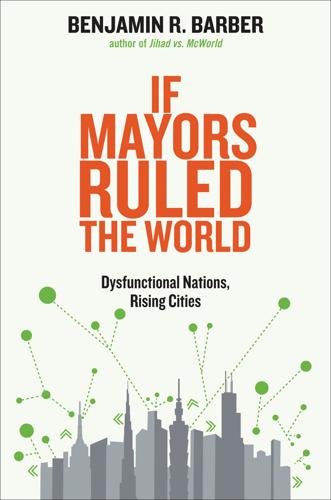
If Mayors Ruled the World: Dysfunctional Nations, Rising Cities
by
Benjamin R. Barber
Published 5 Nov 2013
To be sure, cities know technology per se is only a means, and as such, carries its own baggage (which we will unpack below). Yet cyber-zealotry is infectious. As one proponent of smart cities has noted, “we can collect and access data now from an astonishing variety of sources: there are 30 billion RFID tags [the new tech barcodes] embedded into our world . . . we have 1 billion cell phones with cameras able to capture and share images and events; and everything from domestic appliances to vehicles to buildings is increasingly able to monitor its location, condition and performance and communicate that information to the outside world.”5 Cities have always been interdependent: the digital revolution has simply rendered that interdependence palpable—putatively both efficient and concrete.
…
K., 229 Prison population racial differences, 185 Privacy International, 258 Problem solving, 13, 70–71, 90 P2P (peer-to-peer) technology, 266 Public sector jobs, 199–201 Public spaces, 44–48, 71; and culture, 273, 274–280 Public transportation inequality, 195–197 “Push” technology, 253, 257 Race and inequality, 182, 185, 186 Rama, Edi, 86 Rape in India, 181, 201, 204, 382n69 “Rebel towns,” 324 Redlining, 198 Refugee camps, 16 Regional representation, 345–347 Representation, 342–348; challenges of, 342–344; of commuters, 345; and electoral district, 346; and failure of nationality, 156; and opt-in/opt-out rights, 346; on parliament of mayors, 346–347, 352–355; of regions, 345–347; as trusteeship, 347–348 Republican class in U.S., 34–35 413 RFID tags, 243 Rio Conventions, 134 Rio de Janeiro, inequalities in transportation, 195–196 Romney, Mitt, 218, 322 Rousseau, Jean-Jacques, 7, 32–34, 161, 283, 299 Ruble, Blair, 173 Rural life. See Virtues and vices of cities vs. countryside Rustbelt cities, 186, 223 Sandig, Jochen, 278–279 San Francisco and gay marriage, 167 Santa Monica as rebel town, 324 Santander, Spain, smart sensors in, 261 São Paulo business revival, 223 Sassen, Saskia, 10, 16, 65–66, 116, 248 Scavengers, 231 Schmidt, Eric, 241 Scholz, Olaf, 109 Schuster, Wolfgang: on democracy, 8, 84; on jobs, 213; on networks, 169; on parliament of mayors, 337, 338, 344, 353; profile, 103–105 Sea level rise, 130 Seastead, 16 Seattle, plastic grocery bag ban, 149 “Seaworlds,” 16 Second Life (video game), 261, 391n39 Secularism, 70 Security, 121–130, 160, 202–204 Segregation, 187–192 Selebi, Jackie, 126 “Self-driving cars,” 261 Self-sufficiency, 60, 63–64, 321–325 Self-Sufficient City Contest, 18 Seoul.
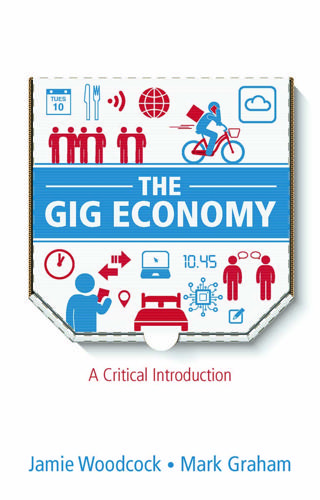
The Gig Economy: A Critical Introduction
by
Jamie Woodcock
and
Mark Graham
Published 17 Jan 2020
Transport is an area that is the focus of substantial investment in automation technologies, and many of the sorts of jobs on microwork platforms have already been automated by some companies. With delivery work, some parts of the labour process have already been automated, through the use of GPS-assisted route planning and barcodes or radio-frequency identification (RFID) tagging for inventory management. The second is that in all of these cases, workers are contributing to datasets being used to train artificial replacements. The data generated by drivers contributes to the training sets for self-driving cars, while microwork allows for a much wider range of training data.
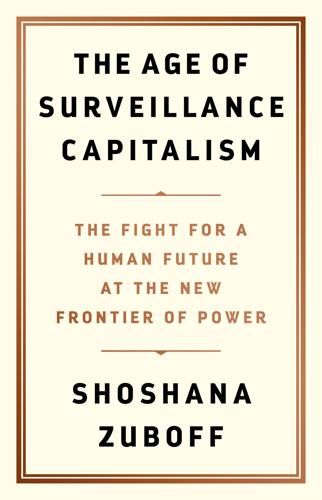
The Age of Surveillance Capitalism
by
Shoshana Zuboff
Published 15 Jan 2019
Researchers at Georgia Tech developed a version of “smart skin” that sucks energy from radio waves and other energy sources, eliminating the need for batteries. Smart skin, described as “the ultimate sensing tool that could potentially allow for the mass implementation of perpetual wireless networks,”18 can cognize, sense, analyze, wirelessly communicate, and “modify parameters” using simple radio frequency (RFID) technology.19 As in the case of Paradiso’s “sensor tape,” the researchers stress that it can also “be applied everywhere” to “monitor, sense, and interact with the world around us in a perpetual way, thus significantly enhancing ambient intelligence,” all of it as inconspicuous as a “decal sticker.”
…
Roland Kays et al., “Terrestrial Animal Tracking as an Eye on Life and Planet,” Science 348, no. 6240 (2015), https://doi.org/10.1126/science.aaa2478. 11. P. Ramesh Kumar, Ch. Srikanth, and K. L. Sailaja, “Location Identification of the Individual Based on Image Metadata,” Procedia Computer Science 85 (2016): 451–54, https://doi.org/10.1016/j.procs.2016.05.191; Anuradha Vishwakarma et al., “GPS and RFID Based Intelligent Bus Tracking and Management System,” International Research Journal of Engineering and Technology 3, no. 3 (2016); Nirali Panchal, “GPS Based Vehicle Tracking System and Using Analytics to Improve the Performance,” ResearchGate, June 2016, https://www.researchgate.net/publication/304129283_GPS_Based_Vehicle_Tracking_System_and_Using_Analytics_to_Improve_The_Performance. 12.
…
Paradiso, “Our Extended Sensoria” (italics mine). 18. Dublon and Paradiso, “Extra Sensory Perception.” 19. Kevin Ashton, a former Procter and Gamble brand manager who pioneered the marriage of radio-enabled microchips and physical products, birthed the term “internet of things,” and helped drive RFID innovation at MIT’s Media Lab, criticizes the US government for its lack of a comprehensive vision for the “internet of things” and the leadership of private firms in this domain. See Kevin Ashton, “America Last?” Politico, June 29, 2015, http://www.politico.com/agenda/story/2015/06/kevin-ashton-internet-of-things-in-the-us-000102. 20.
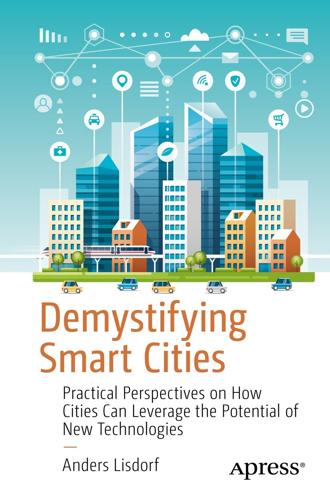
Demystifying Smart Cities
by
Anders Lisdorf
The ITU is the United Nations’ agency for information and communication technology. The particular focus of this organization is to improve access for people and communities that are currently underserved. Their approach is to focus on the ubiquity of technology. They categorize different types of devices:Tagging things – Are RFID devices. These are historically the oldest types of IoT devices. Feeling things – Are the sensors that measure signals from the environment. Thinking things – Are things that somehow act intelligently and autonomously to stimuli. Shrinking things – Are nanotechnologies that produce devices at nanoscale.
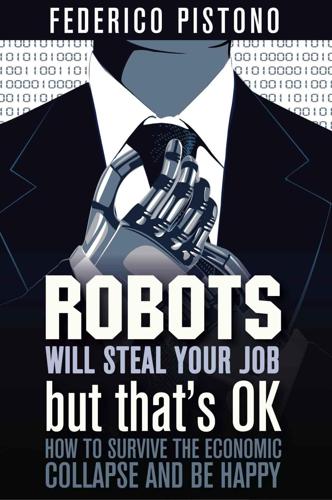
Robots Will Steal Your Job, But That's OK: How to Survive the Economic Collapse and Be Happy
by
Pistono, Federico
Published 14 Oct 2012
You can search for items, filter them by categories, and get information on each single product; not just nutritional elements, but you can trace the production process, the companies behind it, and dynamically compare products based on your search criteria. You can also read reviews from other people about these products, just like on Amazon.com today. You get all that you need, put in the basket, then before going out you stop for a few seconds on a gateway, which receives signals from all of the items you would like to purchase through RFID chips, and you are good to go. Swipe in your credit card, or even pay by just accepting the payment request on your cell phone. The whole process, the time between you decide to leave the store and the moment you can actually walk out, takes less than 10 seconds. No human was involved in this, no human was required.
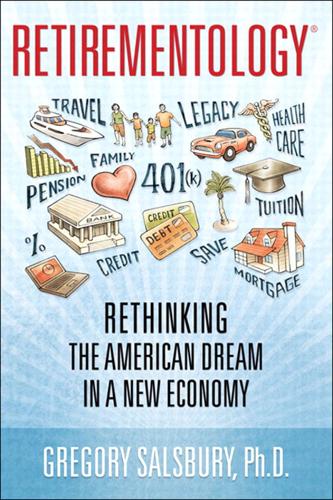
Retirementology: Rethinking the American Dream in a New Economy
by
Gregory Brandon Salsbury
Published 15 Mar 2010
Cheese,” July 23, 2008. 24 What It Costs, “Top Ten Most Expensive Parties Ever Thrown,” 2009. 25 Answers.com, “Jackie Mason,” 2009. 26 MetLife, “The American Dream has been revised not reversed, pragmatism is replacing consumerism as the bar stops rising/buyer’s remorse sets in, according to third annual MetLife study,” March 9, 2009. 27 The New York Times, “Given a Shovel, Americans Dig Deeper Into Debt,” July 20, 2008. 28 The New York Times, “Given a Shovel, Americans Dig Deeper Into Debt,” July 20, 2008. 29 Fare Magazine, “Consumers Cut Back on Coffee Spending,” January 30, 2009. 30 Ventura County Star, “Stores out to tempt TV buyers this week,” January 25, 2009. 31 The New York Times, “Hummer’s Decline Puts Dealers at Risk,” March 31, 2009. 32 The New York Times, “Hummer’s Decline Puts Dealers at Risk,” March 31, 2009. 33 San Diego Union-Tribune, “Parents scale back luxuries for children,” June 14, 2009. 34 Pew Research Center Publications, “Luxury or Necessity? The Public Makes a U-Turn,” April 23, 2009. 35 CreditCards.com, “Implantable credit card RFID chips: convenient, but creepy,” August 5, 2009. 36 Notable Quotes, Quotes on Las Vegas, from The Joker Is Wild, 1957. 37 Encyclopedia definition of Ruml, Beardsley, 2009. 38 Thaler, Richard, and Shlomo Benartzi, “Save More Tomorrow: Using Behavioral Economics to Increase Employee Saving,” November 2000. 39 WebCPA, “Automatic 401(k) Enrollment Is Not for Everyone,” October 27, 2009. 40 The New York Times, “Target-Date Funds: Seven Questions to Ask Before Jumping In,” June 29, 2009. 41 Pensions & Investments, “Special Report: The Looming Retirement Disaster,” April 18, 2005. 42 Hewitt, “Hewitt Study Shows Nearly Half of U.S.

Aerotropolis
by
John D. Kasarda
and
Greg Lindsay
Published 2 Jan 2009
Every package entering the sort passes under a camera and infrared sensor capable of reading characters and correctly estimating dimensions and weight. In the future, even that won’t be necessary once radio frequency identification chips are embedded in their sides, broadcasting the vital signs of what’s within. For now, these RFID tags still cost more money than they save, and until that flips around, any labels missing a key piece of information—a scrawled digit in the zip code, perhaps—have their pictures flashed to a room full of PCs where human operators are required to fill in the blanks. At two in the morning, it is typically filled with college-age men and women slumped in silence, iPod earbuds firmly in place, clicking and dragging over and over as they zoom in to see what’s the matter.
…
The real revolution had taken place twenty years before, with the widespread adoption of bar codes. Lands’ End could retire hunt-and-peck picking methods and switch to more efficient methods, quadrupling productivity from 175 items picked per hour to 600 or 700. Zappos’ carousel picker tripled their pace; Kiva’s robots doubled it again. Kasarda believes the next doubling will come when RFID chips replace bar codes, and then again when “intelligent agents” embedded in those chips guide packages, robots, and belts to their final destinations, with no humans necessary. The Internet arm of Zappos could physically be located anywhere, and Tony Hsieh knows it. He moved his headquarters from San Francisco to Las Vegas several years ago in pursuit of cheaper labor.

This Is Service Design Doing: Applying Service Design Thinking in the Real World: A Practitioners' Handbook
by
Marc Stickdorn
,
Markus Edgar Hormess
,
Adam Lawrence
and
Jakob Schneider
Published 12 Jan 2018
The solution Our co-created customer journey evolved into a service blueprint, outlining requirements for the physical form and digital components. Customer-centric thinking, stake holder awareness, and a sophisticated interpretation of brand form language were merged with a deep understanding of digital technologies. Product samples are mounted on RFID-enabled, removable bases. Customers or associates can place the product on a “Smart Shelf” containing an RFID reader mounted below the touchscreen display, delivering dynamic content based on the product placed on the shelf. From there, shoppers can navigate through product details, material finishes, coordinating products, and more. The solution allows for a “three-way conversation” between the physical product, the digital content, and the people interacting with it all.
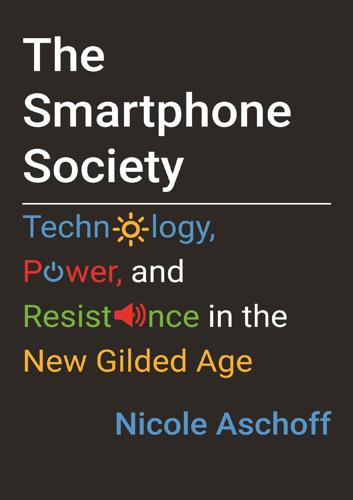
The Smartphone Society
by
Nicole Aschoff
Anindya Ghose, a professor of business at New York University, breathlessly describes turning one’s smartphone into a “pocket butler”: “If you, the consumer, let marketers learn your habits and read your mind, you will let that smartphone become your concierge and save you time.”64 In this shopper’s paradise, a combination of beacons, geocoding, Wi-Fi, RFID, near-field communication, and other digital identification and communication technologies will tell companies where we are at all times, and leave us open for suggestions and offers. iBeacon and Google’s Eddystone for Android phones show that Ghose’s fantasy is fast becoming a reality. Fintech companies—businesses that use modern technology and algorithms to compete with traditional financial service providers—are equally enthusiastic about capitalizing on the data we continuously generate with our smartphones.
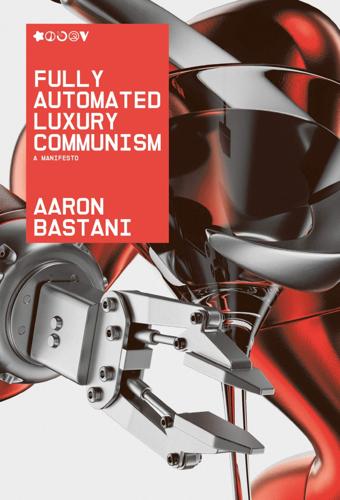
Fully Automated Luxury Communism
by
Aaron Bastani
Published 10 Jun 2019
‘Do you have everything you need today Ms Antonietta? How was the tracksuit you bought in February? We have something similar for winter – would you like me to send it to Alex for you to look at?’ ‘Please, that would be wonderful,’ Federica says. ‘I don’t want to be late.’ She leaves the store, and the RFID tag on the shirt automatically debits her account. In the production, warehousing, distribution and sale of the item, not one human was employed. Indeed, the store she visited could have delivered it by drone to her nephew later that day, but she preferred giving it to him herself – the old-fashioned way.
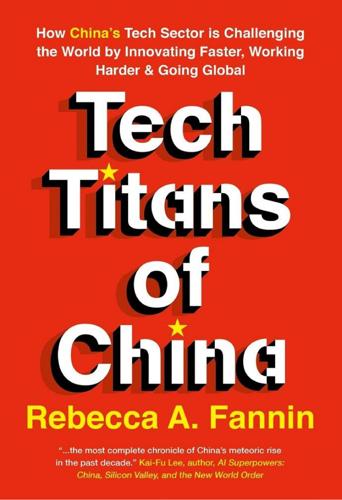
Tech Titans of China: How China's Tech Sector Is Challenging the World by Innovating Faster, Working Harder, and Going Global
by
Rebecca Fannin
Published 2 Sep 2019
One Chinese deal that looks like a loser is Alibaba’s $1.5 billion investment in cash-burning, bike-sharing startup Ofo, once a star at the height of China’s shared-bicycling craze. Ofo’s key rival Mobike, backed by Tencent, was absorbed into Meituan as Meituan Bike in an acquisition. Table 2-4 Alibaba Investments in US Tech Startups Company Inv. Type Inv. Amt Market Year Smartrac Inv. Und. RFID, IoT 2018 OpenSky Acq. Und. B2B e-commerce 2018 NVXL Technology Inv. $20 million machine learning 2017 EyeVerify Acq. $100 million security 2016 Snap Inv. $200 million photo app 2015 Lyft Co-inv. $250 million ride-sharing 2014 Quixey Co-inv. $110 million mobile search 2013–15 Tango.me Co-inv. $280 million messaging app 2014 Kabam Inv. $120 million gaming 2014 Alibaba Investments in China Tech Startups Cainiao Lead Co-inv. $1.4 billion smart logistics 2018 Ele.me Acq. $9.5 billion food delivery 2018 Ele.me / Koubei Merger 2018 Koubei Acq. $1 billion local commerce 2017 Xiaohongshu Lead Co-inv. $300 million social e-commerce 2018 Ofo Inv. $866 million bike sharing 2018 SenseTime Inv. $600 million facial recognition 2018 Ofo Inv. $700 million bike sharing 2017 Youku Tudou Acq. $4 billion video sharing 2016 Weibo Inv. $720 million micro-blogging 2016 AutoNavi Acq. $1.5 billion digital mapping 2014 * Note–Inv. is investment; Co-inv. is co-investment; Acq. is acquisition; Lead Inv. is lead investment; Lead Co-inv. is lead co-investment; Und. is undisclosed Sources: Silicon Dragon research, S&P Global Intelligence, annual reports, news releases In the United States, Alibaba has had a mixed record of M&A deals.
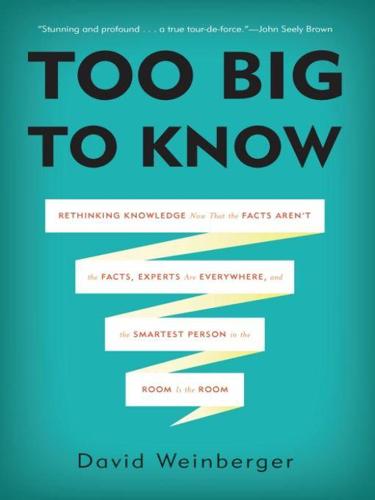
Too Big to Know: Rethinking Knowledge Now That the Facts Aren't the Facts, Experts Are Everywhere, and the Smartest Person in the Room Is the Room
by
David Weinberger
Published 14 Jul 2011
Where there once was a gap between the professional and the amateur scientist—a gap defined and maintained by the credentialing process—the Net is putting out tendrils to find every way across the divide. The first Maker Faire was held at the San Mateo Fairgrounds near San Francisco in 2005. Twenty thousand people showed up to see “self-balancing two-wheeled vehicles, computer-controlled Etch-A-Sketches, biodiesel processing units, biologically-inspired multiprocessors, scratch-built RFID readers, wind-powered generators, networked citizen weather stations, ornithology research systems, flying pterosaur replicas, and hundreds of other projects,” in the words of Mark Frauenfelder, the editor of Make magazine, which inspired the event.22 In 2008, three times that number attended. Frauenfelder does not attribute this growth in interest to the Web directly.
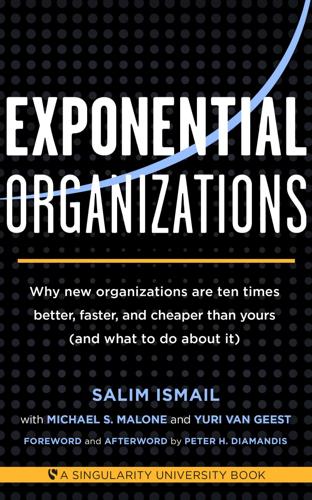
Exponential Organizations: Why New Organizations Are Ten Times Better, Faster, and Cheaper Than Yours (And What to Do About It)
by
Salim Ismail
and
Yuri van Geest
Published 17 Oct 2014
Examine your own leadership skill sets. Remove anyone who puts his or her own career ahead of the success of the enterprise. 2. Partner with, Invest in or Acquire ExOs From 1990 to about 2005, there were at least five major disruptions in the retail or CPG industry. Three of them—EPOS systems with point-of-sale transactions, RFID tags for supply chain management, and customer loyalty cards—produced a significant amount of new data that fundamentally changed the industry. Marcus Shingles, a principal at Deloitte Consulting, and his research team spent most of 2012 helping the Grocery Manufacturer’s Association (GMA) analyze the CPG industry for potential Big Data innovation disruptions of the same magnitude.

Infinite Detail
by
Tim Maughan
Published 1 Apr 2019
You can’t do that in Brooklyn?” “Nah, all the machines are fucked in Brooklyn.” “Machines?” “Yeah. The depositing machines. They all fucked. Take your cans but don’t give you the money back. They’re fucked.” Rush looks at him, looks at the cart. Blinking through menus in his periphery, he pulls up a home-brewed RFID-reading tool. Suddenly the cart is covered in hundreds of little labels, tiny floating tags, one for each can and bottle. Each has two numbers, twelve digits long, that he can’t understand but knows the city can. He guesses the first one is written on the can’s chip when it’s bought, the second when it’s tossed.
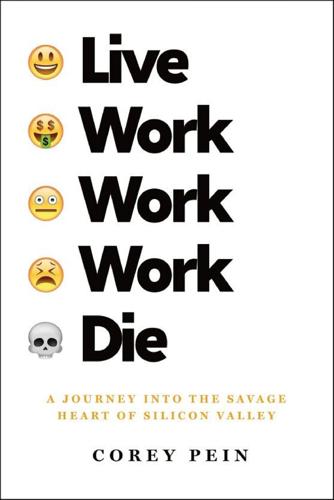
Live Work Work Work Die: A Journey Into the Savage Heart of Silicon Valley
by
Corey Pein
Published 23 Apr 2018
So I’m going to go ahead and see what it’s like to get an implant and be a cyborg today.” The audience stirred. The SU camera crew scrambled onto the stage. While the piercer prepared his kit, the transhuman ambassador, Sjöblad, took over the mic. Sjöblad said his local “maker community” has been implanting one hundred volunteers with RFID chips “just to see what happens.” They hadn’t found many uses for embedded identification chips beyond indulging their own laziness. Some replaced their door keys with electronic locks. “Or I take my phone in my hand and it’s automatically unlocked and I can start using it instead of having to type a pincode or whatever,” Sjöblad said.
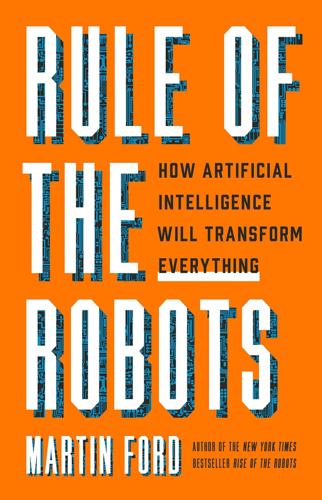
Rule of the Robots: How Artificial Intelligence Will Transform Everything
by
Martin Ford
Published 13 Sep 2021
A robot that could do this simple thing would need to be extraordinarily dexterous and would likely need to have two very expensive robotic arms—not just one. Of course, it’s easy to imagine ways to get around some of these problems. Maybe the beer needs to be placed in exactly the right location within the refrigerator. Forget six-pack rings. The cans must be removed from any packaging, and maybe each must be fitted with an RFID tag so the robot doesn’t have to rely solely on visual perception to find the beer. Perhaps, someday, beer will come in some sort of futuristic packaging that is specifically designed to make it easy for robots to retrieve it. But for now, all these requirements would add to your inconvenience and therefore diminish your enthusiasm for making a major outlay to acquire such a robot.
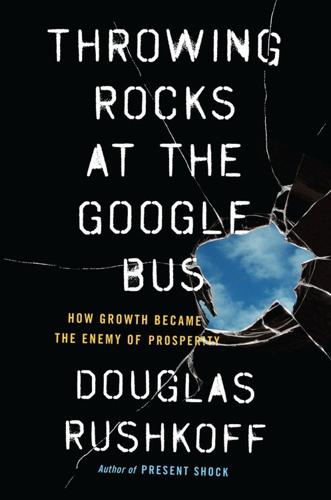
Throwing Rocks at the Google Bus: How Growth Became the Enemy of Prosperity
by
Douglas Rushkoff
Published 1 Mar 2016
It’s an era that was supposed to be accompanied by more leisure time. After all, if robots are out there plowing the fields, shouldn’t the farmers get to lie back and enjoy some iced tea? Something is standing in the way of our claiming the prosperity we have created. The toll collector whose job is replaced by an RFID “E-ZPass” doesn’t reap the benefit of the new technology. When he can’t find a new job, we blame him for lacking the stamina and drive to retrain himself. But even if he could, digital solutions require, on average, less than one tenth the human employees of their mechanical-age predecessors. And what new skill should he go learn?
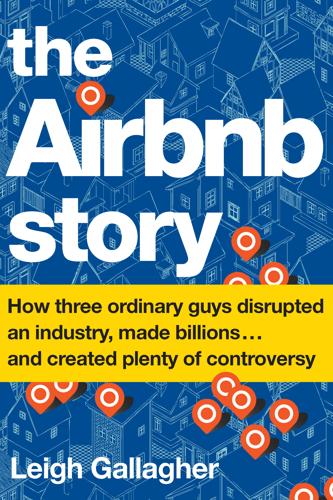
The Airbnb Story: How Three Ordinary Guys Disrupted an Industry, Made Billions...and Created Plenty of Controversy
by
Leigh Gallagher
Published 14 Feb 2017
“I started thinking, “ ‘There has to be a better way, and Airbnb is growing crazy fast, so maybe there’s something here,’” Brown says. In 2013 he and a partner started a company that essentially turns local cafés, bars, and gyms into neighborhood key-exchange hubs. Keycafe provides the establishment with a kiosk, and the host pays $12.95 per month (plus a fee of $1.95 per key pickup) for an RFID-enabled key fob. Travelers are remotely assigned a unique access code through the Keycafe app, which they then use to unlock the kiosk. The host gets notified anytime a key is picked up or dropped off, and the local establishments like the arrangement because it brings in foot traffic. While Keycafe serves customers beyond just Airbnb, including dog walkers and other service professionals, Airbnb and property managers are more than half its business, and the company is one of the stronger Airbnb “bolt-ons”: it is an official partner in Airbnb’s Host Assist platform, which integrates some of these vendors into its website, and Brown and his business partner have raised almost $3 million, more than most of the other ancillary services.
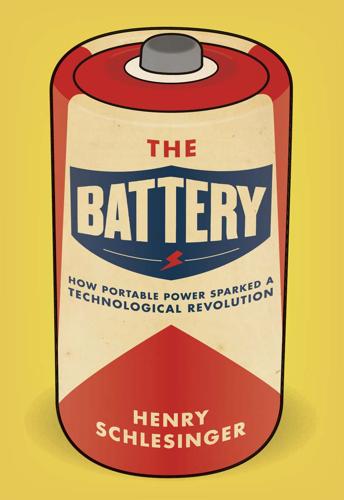
The Battery: How Portable Power Sparked a Technological Revolution
by
Henry Schlesinger
Published 16 Mar 2010
They are made up of micron- and submicron-thin layers that create the anode, cathode, and electrolyte, and researchers have to date gotten them down to about five microns or 0.00019685 of an inch thick to produce an electrical charge. While not suitable for typical consumer products, they offer enough power to run a small IC in your credit card or label on canned peas, or even small active radio frequency identification (RFID) tags, store data, or power up some basic IC hardware. This technology is already offered by TI and a few other companies for specialty applications, such as Micro-Electro-Mechanical Systems, or MEMS, that require relatively little power. And when combined with a new generation of flexible ICs, due out soon, computing power will migrate from hard, protective coverings to a wider range of applications, such as clothing capable of powering monitors for heart rate or lighting for some form of decorative display.
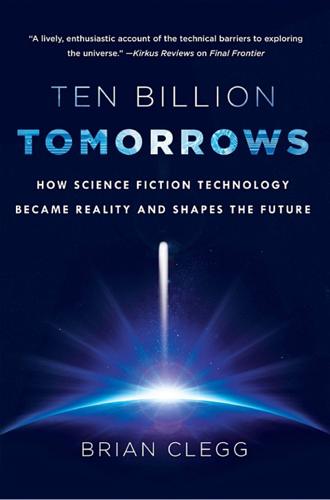
Ten Billion Tomorrows: How Science Fiction Technology Became Reality and Shapes the Future
by
Brian Clegg
Published 8 Dec 2015
Some of this is press overexcitement, but Warwick seems to revel in the press attention and has explicitly labeled himself, when implanted, as a cyborg. Admittedly, Warwick’s description of himself is technically correct, but most users of the term tend to imagine a much more radical electronic/mechanical component to the mix. Warwick’s first implant was little more than the type of RFID chip now used to monitor inventories from bookstores to clothing and to accept contactless payment by tapping a card on a reader. On the upper inside of his left arm, a small chip in a cylindrical container was implanted between his skin and the muscle. For nine days it enabled Warwick to be recognized by various electronic devices around the offices of the department of cybernetics where he works.
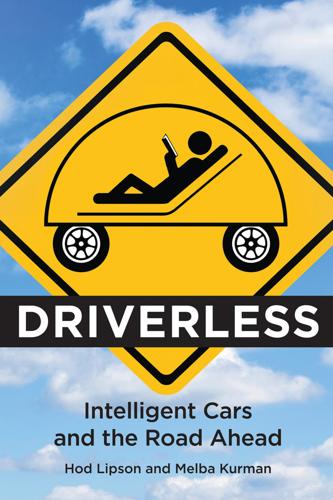
Driverless: Intelligent Cars and the Road Ahead
by
Hod Lipson
and
Melba Kurman
Published 22 Sep 2016
As recently as 2014, Volvo proposed embedding magnets in the road to help driverless cars see in the fog.15 It is tempting to suggest improvements to highway infrastructure. Even advanced programmers wistfully daydream about how much easier it would be to program a driverless car if only there were barcodes embedded into the road or radio-frequency identification (RFID) tags placed at every intersection. Investing in intelligent highway infrastructure is a poor strategy for many reasons. One is practical: there is no ready money to pay for non-essential highway infrastructure and asking for it would doom any proposed initiative to develop the technology. In the United States, the question of who will pay for highway infrastructure continues to be a political hot potato in an era of crumbling public roads and a nearly bankrupt federal highway trust fund.

Infonomics: How to Monetize, Manage, and Measure Information as an Asset for Competitive Advantage
by
Douglas B. Laney
Published 4 Sep 2017
It typically includes transactional data, contact data, process data, and reference data such as master data. Enterprises often have the opportunity to collect even more information during the course of business via sensors or process monitoring such as: Log data, Smart meters, Internet-connected devices (e.g., IoT), Voice/phone, Security camera feeds, RFID, and Wireless signals. For example, XO Communications now analyzes 500 discrete customer data elements including call patterns, late or delinquent payments, and other vital signs. After just a four-month implementation, XO reduced customer churn by 47 percent, protecting $15 million in revenue.10 And Memorial Healthcare System integrated information from eight hundred disparate databases for greater visibility into vendor activities, resulting in a 40 percent reduction in vendor invoice cycle times that led to vendor discounts totaling over $2 million.11 Dark Data This is information collected during the course of business that remains in archives, is not generally accessible, or is not structured sufficiently for analysis.
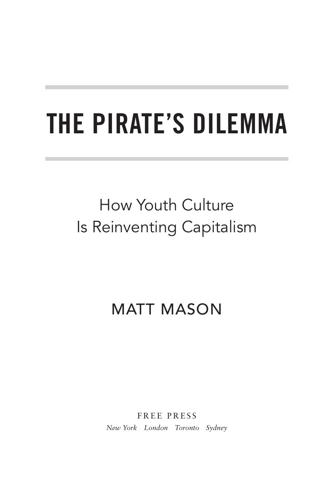
The Pirate's Dilemma: How Youth Culture Is Reinventing Capitalism
by
Matt Mason
The time has come to consider the consequences of computers disappearing into the background the way motors did.” The consequences are what some people are referring to as “the Internet of things.” This is a world where objects are connected via tiny but widely distributed computers, such as radio-frequency identification chips (RFID), which cost less than 5 cents each and are already being used in products by Wal-Mart, Target, and Tesco to track goods. They are being used in passports, money, car keys, credit and travel cards, and are being embedded in livestock and even people. Aside from uses in the military, some nightclubs in Barcelona and Rotterdam have implanted chips into their VIP clientele, which verifies who they are and even lets them pay for drinks.
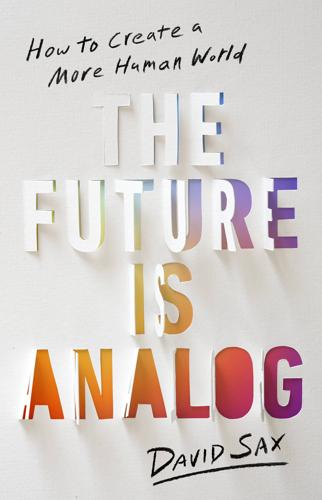
The Future Is Analog: How to Create a More Human World
by
David Sax
Published 15 Jan 2022
Give me a delivery person who says hello, not a robot that rolls down the sidewalk with my lunch. Give me a coffee shop that makes me feel part of something bigger, not the robo-barrista that just opened up nearby, which is a fancy-assed coffee vending machine that’s now taking up a perfectly good storefront. Don’t give me a sidewalk embedded with RFID technology. Give me a sidewalk that’s wide enough to accommodate all the human activities Jane Jacobs identified as the keys to establishing “the web of public identity and trust” at the heart of a vibrant city: kids playing, friends having a conversation, business owners griping, seniors hanging out, restaurant patrons sitting at tables, bike parking, dog walking, and so on.

The Zenith Angle
by
Bruce Sterling
Published 27 Apr 2004
But Michael Hickok was a man of action. It wasn’t in him to waste time. He watched Van’s office routines, then he made himself useful. Van’s least favorite job was to demo security gadgets for the Vault’s many cyberwar groupies. There were packs of gizmos arriving for Van every day. Dongles and decryptors. Peel-and-stick RFID labels. Teflon and Kevlar security cables. Barcodes and asset tags. Ridiculous homemade EMP blasters right out of the aluminum-foil hat set. Teensy-tiny locks on chipsets sculpted right into the microscopic silicon with ultra-high-tech MEMS techniques . . . The CCIAB had become a clearinghouse for American infowar toys.
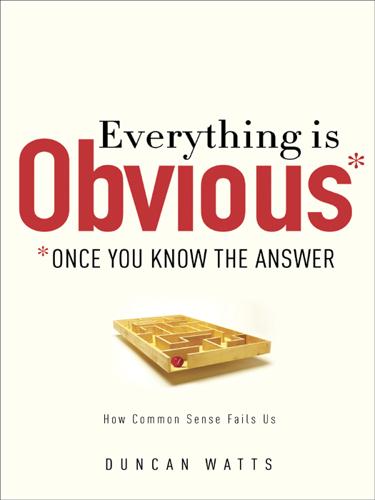
Everything Is Obvious: *Once You Know the Answer
by
Duncan J. Watts
Published 28 Mar 2011
Department stores have long experimented with product placement, trying out different locations or prices for the same product in different stores to learn which arrangements sell the most. But now that virtually all physical products are labeled with unique barcodes, and many also contain embedded RFID chips, they have the potential to track inventory and measure variation between stores, regions, times of the day, or times of the year—possibly leading to what Marshall Fisher of the University of Pennsylvania Wharton School has called the era of “Rocket Science” retailing (Fisher 2009). Ariely (2008) has also made a similar point. 23.
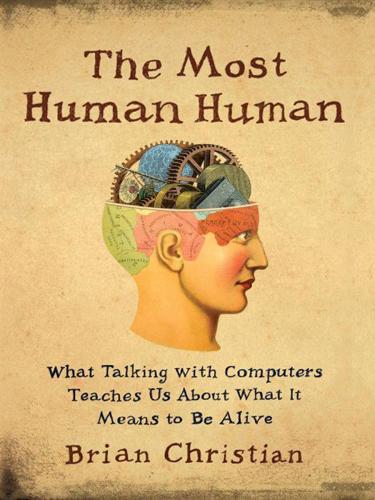
The Most Human Human: What Talking With Computers Teaches Us About What It Means to Be Alive
by
Brian Christian
Published 1 Mar 2011
That, too, though, is hardly the kind of state-of-man repair that Aristophanes imagined. But there’s hope. Nervous System to Nervous System: Healed by Bandwidth The organizer of the 2008 Loebner Prize was University of Reading professor Kevin Warwick—also known in the press sometimes as “the world’s first cyborg.” In 1998 he had an RFID chip implanted in his arm: when he walks into his department, the doors open for him and a voice says, “Hello, Professor Warwick.” More recently, he’s undergone a second surgery, a much more invasive one: wiring a hundred-electrode array directly into the nerves of his arm. With this array he’s done a number of equally astonishing things: he’s been able to get a robot arm to mimic the actions of his real arm, using the electrode array to broadcast the neural signals coming from his brain to the robot arm, which follows those commands in real time, just as—of course—Warwick’s real arm does.9 He also experimented with adding a sixth sense—namely, sonar.
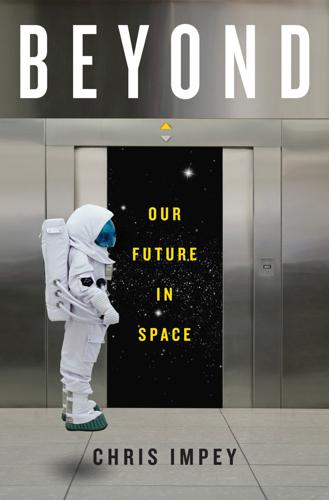
Beyond: Our Future in Space
by
Chris Impey
Published 12 Apr 2015
They’re reminiscent of Mary Shelley’s dark vision of Frankenstein, animated by electricity and overpowering its creator. The acceptable face of cyborg research is represented by Kevin Warwick, a professor of cybernetics at the University of Reading in England. He was one of the first to experiment with implants, having an RFID chip put into his arm in 1998. Four years later, he had an array of a hundred electrodes grafted onto the nerves of his arm. This allows him to extend his nervous system over the Internet and control a robotic hand at a remote location. Warwick’s wife also had a cybernetic implant, and when someone grasped her hand, he was able to feel the same sensation in his hand on the other side of the Atlantic—a bizarre form of cybernetic telepathy.

Free Money for All: A Basic Income Guarantee Solution for the Twenty-First Century
by
Mark Walker
Published 29 Nov 2015
When your order was placed, it was robotically packaged and sent out in a small robotically driven helicopter that dropped the package right at your doorstep. Your trip to Walmart also did not require human touch (other than yours). Gone are the days of waiting in line to have your items scanned and bagged. As soon as you put an item in your shopping cart, the embedded RFID (radio-frequency identification) tag was read and the item automatically charged to your account. Gone too are the small army of human shelf stockers. This job is now done robotically. Robots are also in use at every step in the distribution and production sequence. Robots packed and drove the food to your local Walmart.
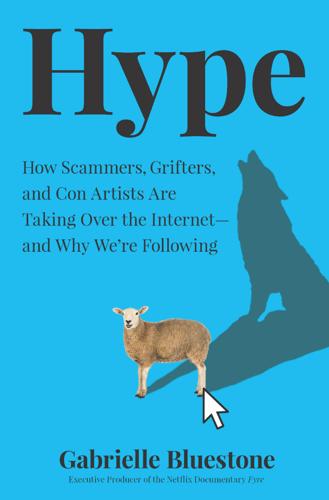
Hype: How Scammers, Grifters, and Con Artists Are Taking Over the Internet―and Why We're Following
by
Gabrielle Bluestone
Published 5 Apr 2021
Because I had access to their bank accounts, and it was often zero,” Coffie said. It was only thanks to a last-minute investing round led by McFarland months later that the artists were even paid on their contracts—and only then after a Wall Street Journal article threatened to derail the whole thing.140 Then, with less than a month to go, Fyre suddenly switched to a cashless, RFID system that would require that concertgoers prepay to load their wristbands with funds in order to pay for things like food and water—despite the lack of Wi-Fi at the site. “The numbers they were attaching to this were the kind of numbers that make it exclusive, but in reality the reason they were doing that was because they ran out of cash.
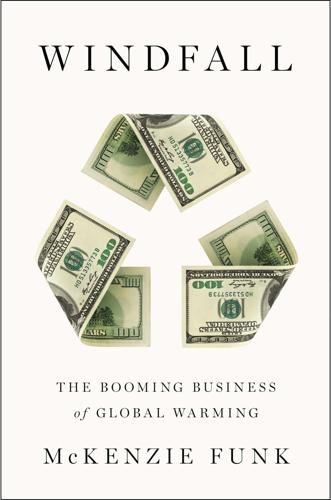
Windfall: The Booming Business of Global Warming
by
Mckenzie Funk
Published 22 Jan 2014
• • • OUTSIDE THE GREENHOUSE that was one of the BASF-Monsanto collaboration’s principal pieces, it was Belgium in wintertime when I arrived, but inside the twenty-six-thousand-square-foot space it was equatorial and hot—Deutsche Bank’s Wall Street tent all over again, only without the anaconda. The temperature was between eighty-two and eighty-six degrees, Marnix Peferoen told me as he removed his sweater, and the humidity was 70 percent. To my urban nose, it smelled rather like a brewery. The rice plants, in clear, plastic pots, each equipped with its own bar code and RFID transponder, were arrayed in perfect rows below thirty-thousand-lux lamps. The greenhouse was mostly empty of people, but a constant stream of Europop, synthetic and overproduced, blared from suspended speakers as we approached what was known as the Walking Plant System. Conveyer belts snaked through the building—“The same belts as in your car,” Peferoen said—jerkily moving seedlings from one side to another as robots snatched some out of the passing parade.
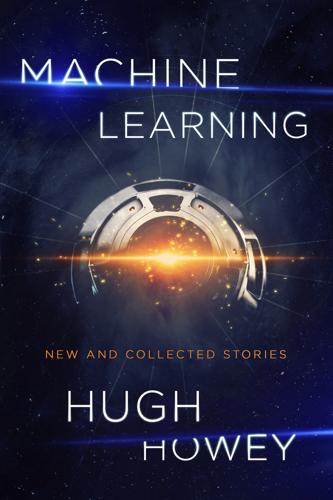
Machine Learning: New and Collected Stories
by
Hugh Howey
Published 2 Oct 2017
“No one read the manual,” he said. “Probably didn’t even come with one. Probably had to read it online. We’d had the thing for a few years, ever since we remodeled the break room. We never used the network functions. Hell, it connected over the power grid automatically. It was one of those models with the RFID scanner so it knew what you had in there, what you were low on. It could do automatic reorders.” The beardless man raised his hand to stop Jamal. He was obviously a man of power. Who could afford to shave anymore? “You said there were no outside connections,” the man said. “There weren’t.” Jamal reached up to scratch his own beard.
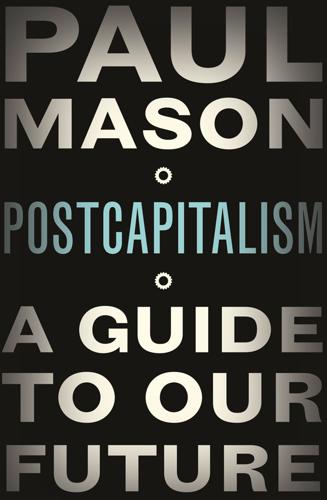
Postcapitalism: A Guide to Our Future
by
Paul Mason
Published 29 Jul 2015
Large parts of the capitalist world are effectively planned already – from urban design and construction projects through to the integrated supply chains of a large supermarket. It is the advance in processing power, the use of big data and the digital tracking of individual objects and components – using barcodes or RFID tags – that make this possible. That part of our project which requires planning would be well equipped because of this. But the nature of modern society alters the problem. In a complex, globalized society, where the worker is also the consumer of financial services and micro-services from other workers, the plan cannot outdo the market unless there is a retreat from complexity and a return to hierarchy.

Clan Corporate
by
Stross, Charles
Published 28 Aug 2006
“Matt went for a walk about two hours ago,” said Pete, nervously fingering his document folder. “Went for a-” “Down the express elevator from the twenty-third floor, or so it would appear judging from the elevator logs,” Smith added. “Although there’s no evidence he was actually in the elevator car except for the RFID tags concealed in his underwear. Which he is no longer wearing. And there’s a missing window on the twenty-third floor. Shall we talk about it?” They went up to the newly installed Vault Type Room on the nineteenth floor and Smith signed them in. Then they authenticated each other and locked the door.
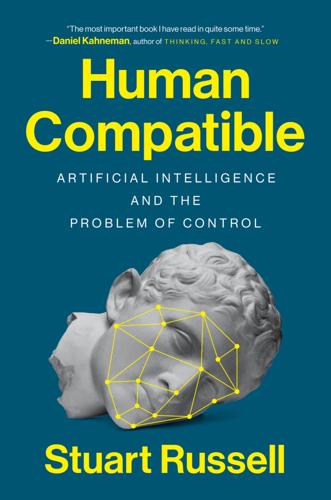
Human Compatible: Artificial Intelligence and the Problem of Control
by
Stuart Russell
Published 7 Oct 2019
Other leading economists have also sounded the alarm, including Nobel laureates Robert Shiller, Mike Spence, and Paul Krugman; Klaus Schwab, head of the World Economic Forum; and Larry Summers, former chief economist of the World Bank and Treasury secretary under President Bill Clinton. Those arguing against the notion of technological unemployment often point to bank tellers, whose work can be done in part by ATMs, and retail cashiers, whose work is sped up by barcodes and RFID tags on merchandise. It is often claimed that these occupations are growing because of technology. Indeed, the number of tellers in the United States roughly doubled from 1970 to 2010, although it should be noted that the US population grew by 50 percent and the financial sector by over 400 percent in the same period,22 so it is difficult to attribute all, or perhaps any, of the employment growth to ATMs.
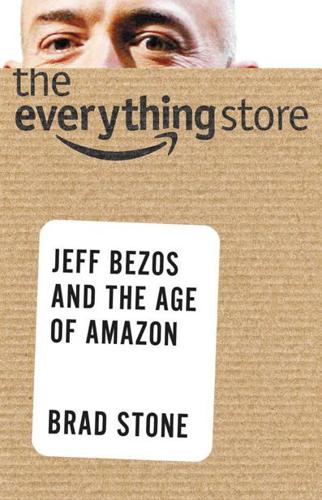
The Everything Store: Jeff Bezos and the Age of Amazon
by
Brad Stone
Published 14 Oct 2013
Walmart in particular had mastered this perpetual coercion of suppliers, and it did it with missionary zeal and the belief that it led to the low prices that made products like diapers affordable to lower- and middle-class Americans. Walmart is notorious for demanding that suppliers open offices in Bentonville, Arkansas, and integrate certain technologies, like RFID chips, into their products. The company is also known for specifying just how much it will pay for products and for demanding severe concessions if it believes a supplier’s profit margin is too high. In Amazon’s early years, when the likes of Sony and Disney refused to sell directly to the company, Bezos had been on the short end of this Darwinian dynamic.
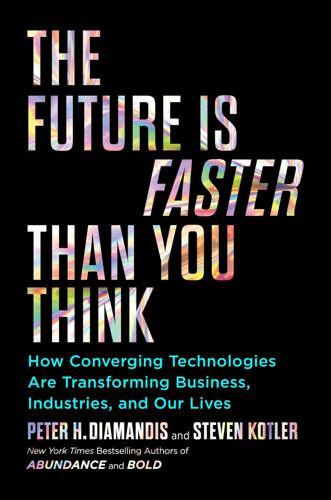
The Future Is Faster Than You Think: How Converging Technologies Are Transforming Business, Industries, and Our Lives
by
Peter H. Diamandis
and
Steven Kotler
Published 28 Jan 2020
Which is why Amazon is not the only company chasing this cashier-less future; the San Francisco startup v7labs is helping all retail stores make this same transition, while Alibaba’s cashier-less Hema stores were tested in China a full two years ahead of Amazon. Smart shelf technology is already here, employing RFID (radio frequency identification) tags and weight sensors to detect when an item has been removed. The innovation deters theft, automates restocking, and ensures that inventory is always in the right spot. Today, Intel’s version has a screen built into the shelf. Tomorrow, smart shelves will be AI-enhanced and capable of conversation.
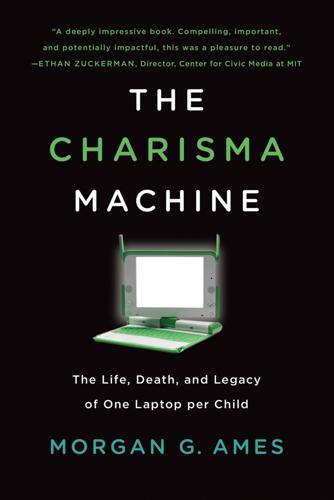
The Charisma Machine: The Life, Death, and Legacy of One Laptop Per Child
by
Morgan G. Ames
Published 19 Nov 2019
Pendleton-Jullian and John Seely Brown, Design Unbound: Designing for Emergence in a White Water World, Volume 1: Designing for Emergence Ann M. Pendleton-Jullian and John Seely Brown, Design Unbound: Designing for Emergence in a White Water World, Volume 2: Ecologies of Change Jordan Frith, A Billion Little Pieces: RFID and Infrastructures of Identification Morgan G. Ames, The Charisma Machine: The Life, Death, and Legacy of One Laptop per Child Mario Biagioli and Alexandra Lippman, eds., Gaming the Metrics: Misconduct and Manipulation in Academic Research Malcolm McCullough, Downtime on the Microgrid: Architecture, Electricity, and Smart City Islands Emmanuel Didier, translated by Priya Vari Sen, America by the Numbers: Quantification, Democracy, and the Birth of National Statistics Ryan Ellis, Letters, Power Lines, and Other Dangerous Things: The Politics of Infrastructure Security The Charisma Machine The Life, Death, and Legacy of One Laptop per Child Morgan G.
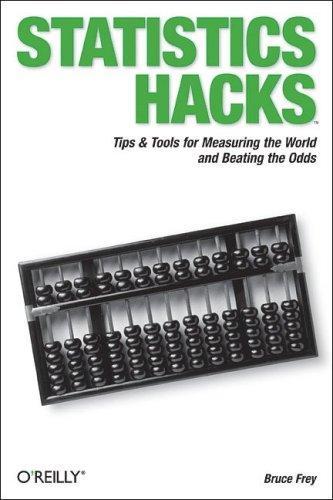
Statistics hacks
by
Bruce Frey
Published 9 May 2006
Contributors The following people contributed their hacks, writing, and inspiration to this book: Joseph Adler is the author of Baseball Hacks (O'Reilly), and a researcher in the Advanced Product Development Group at VeriSign, focusing on problems in user authentication, managed security services, and RFID security. Joe has years of experience analyzing data, building statistical models, and formulating business strategies as an employee and consultant for companies including DoubleClick, American Express, and Dun & Bradstreet. He is a graduate of the Massachusetts Institute of Technology with an Sc.B. and an M.Eng. in computer science and computer engineering.
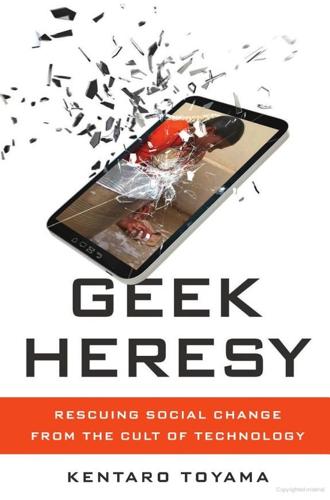
Geek Heresy: Rescuing Social Change From the Cult of Technology
by
Kentaro Toyama
Published 25 May 2015
Walmart, for example, is famous for its digital stock-keeping. Its databases know exactly what’s on the shelves, and they automatically inform suppliers which stores are low on stock. The system keeps inventories razor-thin and costs low. And it all seems to be about technology – databases, barcode readers, RFID-encoded pallets, and so on. You might think, then, that some of our greatest cost-control challenges could be solved with IT. A conspicuous target in America is our health-care system. In fact, electronic medical records have firm bipartisan support even in an era of political deadlock. President Barack Obama has called for electronic medical records since before his days in the White House, citing efficiency and cost savings.8 And the GOP Doctors Caucus, formed by Representatives Phil Gingrey and Tim Murphy, states, “Health information technology has the potential to save more than $81 billion annually in health care costs.
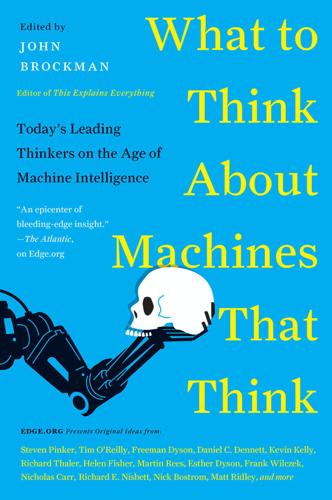
What to Think About Machines That Think: Today's Leading Thinkers on the Age of Machine Intelligence
by
John Brockman
Published 5 Oct 2015
Machines can see statistical regularities my feeble brain will miss, but they can’t make the insightful leap that connects disparate sets of data to devise a new field. I’m not terribly concerned about machines that compute. I’ll deal with the frustration of my browser in exchange for a smart refrigerator that, based on tracking RFID codes of what comes in and out, texts me to buy cream on my way home (hint to those working on such a system . . . sooner rather than later!). I like having my computer underline words it doesn’t recognize, and I’ll deal with the frustration of having to ignore its comments on “phylogenetic” in exchange for catching my typo on a common term (in fact, it won’t let me misspell a word here to make a point).

User Friendly: How the Hidden Rules of Design Are Changing the Way We Live, Work & Play
by
Cliff Kuang
and
Robert Fabricant
Published 7 Nov 2019
That they’d be the ones with a new plan for the park amounted to blasphemy in the eyes of the Imagineers—and that was even before they started letting their imaginations loose on what their system might become. The MagicBands themselves are simple, cleanly designed rubber wristbands offered in cheery shades of blue, green, and red. Inside each is an RFID chip and a radio like those in a 2.4 GHz cordless phone. You reserve them when you book your ticket online; at that time, you can pick what rides you’d like to go on. Then, in the weeks before your trip, the wristband arrives in the mail, etched with your name. I’m yours, try me on. For kids, the MagicBand is supposed to be like a Christmas present tucked under the tree, perfumed by anticipation.

Democracy and Prosperity: Reinventing Capitalism Through a Turbulent Century
by
Torben Iversen
and
David Soskice
Published 5 Feb 2019
Cambridge, MA: Harvard University Press. Gamoran, Adam. 2010. “Tracking and Inequality: New Directions for Research and Practice.” In The Routledge International Handbook of the Sociology of Education, eds. Michael W. Apple, Stephen J. Ball, and Luis A. Gandin, 213–28. New York: Routledge. Garfinkel, Simson, and Beth Rosenberg. 2006. RFID: Applications, Security, and Privacy. Boston: Addison-Wesley. Garrett, Geoffrey. 1998. “Global Markets and National Politics: Collision Course or Virtuous Circle?” International Organization 52 (4): 787–824. Gawthrop, Richard, and Gerald Strauss. 1984. “Protestantism and Literacy in Early Modern Germany.”
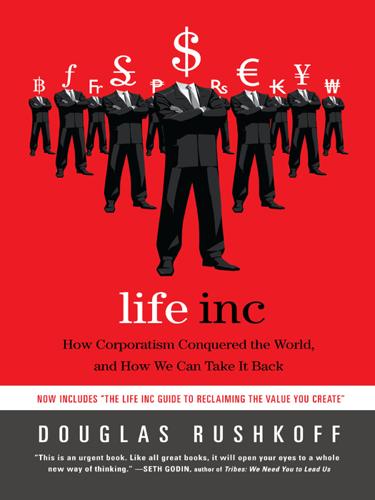
Life Inc.: How the World Became a Corporation and How to Take It Back
by
Douglas Rushkoff
Published 1 Jun 2009
Out on the Web, people have no more substance or stature than any virtual entity—and in most cases, less. We become more virtual while our corporate entities become more real. The people may as well be the machines. Once high-tech security-minded employers in California and Cincinnati get their way in the courts, they’ll be materializing this vision by implanting workers with the same kinds of RFID tags Wal-Mart puts in its products. A central-office computer monitors exactly who is where and when, opening doors for those who have clearance. While implantation isn’t yet mandatory for existing laborers, the additional and convenient access to sensitive materials it affords makes voluntary implantation a plus for worker recognition and advancement.

City: A Guidebook for the Urban Age
by
P. D. Smith
Published 19 Jun 2012
But by 2012, Seoul intends to upgrade its network to reach lightning speeds of up to one gigabit per second. The whole city has also been transformed into a wifi hotspot, thanks to an innovative wireless network which allows commuters on the subway to watch TV on their mobile phones. Those same commuters pay for their bus and taxi journeys with a radio frequency identification (RFID) card containing a smart chip which is able to calculate the distance travelled and the fare due. Seoul is also upgrading itself into an ‘open data city’ in the belief that an informed city is a more efficient city. Thanks to the ‘Ubiquitous Seoul,’ or ‘U-city’, project, Seoul’s online citizens will be able to access real-time urban data from sensors around the city, such as air-quality information and traffic updates.

Jennifer Morgue
by
Stross, Charles
Published 12 Jan 2006
She's still underwater, but she's not sitting in the control chair on board the submersible grab anymore: she's free-swimming in near-total darkness, stroking upwards alongside the drill string, and I can feel the exhaustion as a tight band across the tops of her thighs. ''It's a doublecross.'' I can taste her fear. ''Talk to me!'' I force myself to bend over and go through the corpse's pockets. There's another magazine for the pistol, and a badge: some species of RFID tag. I take it and glance around the cabin. My right hand is still bleeding but it doesn't look as bad as it feels. (Memo to self: do not make a habit of gripping the slide of an automatic pistol while it is being fired.) ''How long have I got? Where are you?'' ''The grab — I was halfway home when one of the docking splines engaged, and the control deck disconnected and stayed stuck on the pipe string while the payload kept going up.

Iron Sunrise
by
Stross, Charles
Published 28 Oct 2004
He’s indoors, well away from windows, vents, doors. Our floor penetrator says he’s in the entertainment room with something dense enough to be a gadget. The stack is dusted, but we’re having fun replaying the ubiquitous surveillance takes for the past month — seems he started jamming before anything else, and his RFID tag trace is much too clean. Someone has to go inside and talk him down or take him out, and you’ve got more experience of this than any of us. It says here you’ve done more than twenty of these jobs; that makes you our nearest expert.” “Hell and deviltry. Who’s the underwriter for this block?” “It’s all outsourced by the city government — I think Lloyds has something to do with it.
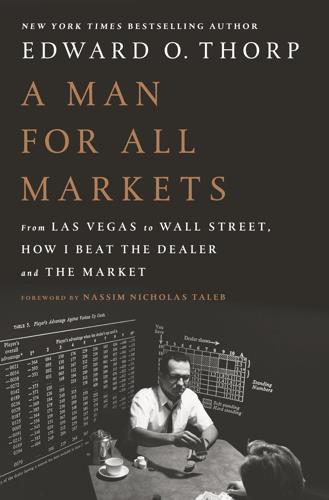
A Man for All Markets
by
Edward O. Thorp
Published 15 Nov 2016
The winner, among scores of contestants from the casino industry, had the fastest time I ever saw, 8.8 seconds. The casinos introduced technology to stop the counters. Cameras and observers followed the action through one-way mirrors above the tables. Currently, this is automated, incorporating face-recognition software. RFID chips keep track of a player’s bets, and machines can track the cards and check the play of the hands, searching for patterns characteristic of counters. Machines that continually reshuffle the cards proved to be a perfect defense without slowing the game down, but the casinos pay fees to the vendors of the machines.

The Controlled Demolition of the American Empire
by
Jeff Berwick
and
Charlie Robinson
Published 14 Apr 2020
But worse than that, they use these computer experiments called algorithms to find out how people are thinking, and then their behavior can be manipulated. Then they apply it with catastrophic consequences for us as individuals and for society as a whole. This might be the last generation who does not get an RFID chip at birth. Once that becomes an accepted way of life, everyone’s money, information, medical history, and everything else will be programmed into this chip. They will not have or need a Social Security Card, Birth Certificate, ID Card, Driver’s License, bank accounts, or bank cards because they will irrevocably be part of the machine.

The Rights of the People
by
David K. Shipler
Published 18 Apr 2011
Georgia Tech has developed flashlight-sized radar that can detect heartbeats at a distance and human respiration through walls to help police locate fugitives in closets and people in hostage situations.17 Similarly, to select passengers for secondary screening at airports, the Future Attribute Screening Technology (FAST) is being designed to do remote measurements of stress indicators: respiration, eye movement, heart rate, skin temperature, body language, and voice quality.18 From the sound of this, if you’re nervous about being late for your flight, be prepared to miss it as you get pulled off for additional scrutiny. RFIDs, or radio-frequency identification devices, are growing in use—in passports, in E-ZPass transponders, on cartons of goods—so that a radio wave beamed at one triggers a unique signature identifying the owner. Unfortunately, hackers can also skim personal data as they pass by. GPS receivers, employing the Pentagon’s Global Positioning System of navigation satellites, are now ubiquitous—in cell phones, planes, boats, and cars.
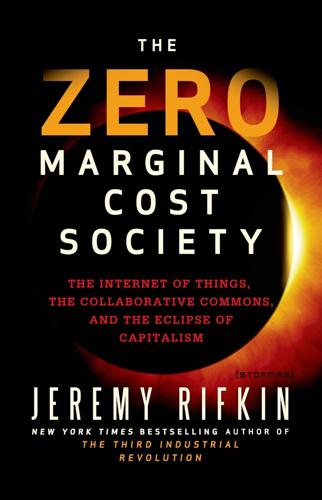
The Zero Marginal Cost Society: The Internet of Things, the Collaborative Commons, and the Eclipse of Capitalism
by
Jeremy Rifkin
Published 31 Mar 2014
The term Internet of Things was coined by Kevin Ashton, one of the founders of the MIT Auto ID Center, back in 1995. In the years that followed, the IoT languished, in part, because the cost of sensors and actuators embedded in “things” was still relatively expensive. In an 18 month period between 2012 and 2013, however, the cost of radio-frequency identification (RFID) chips, which are used to monitor and track things, plummeted by 40 percent. These tags now cost less than ten cents each.15 Moreover, the tags don’t require a power source because they are able to transmit their data using the energy from the radio signals that are probing them. The price of micro-electromechanical systems (MEMS), including gyroscopes, accelerometers, and pressure sensors, has also dropped by 80 to 90 percent in the past five years.16 The other obstacle that slowed the deployment of the IoT has been the Internet protocol, IPv4, which allows only 4.3 billion unique addresses on the Internet (every device on the Internet must be assigned an Internet protocol address).

Ghost Fleet: A Novel of the Next World War
by
P. W. Singer
and
August Cole
Published 28 Jun 2015
Armando’s smile went unnoticed by Allison Swigg as she cut across the grassy field by the pond in her rush from the parking lot. The imagery analyst had gotten stuck in the traffic on I-295 on her way back from a networking lunch out at Tysons Corner. And now she was late for the staff meeting. Neither of them noticed the other, but as she passed the landscaper, his tablet recognized the RFID chips embedded in Swigg’s security badge. A localized wireless network formed for exactly 0.03 seconds. In that instant, the malware hidden in the video packet from Caracas made its jump. As Chavez finished the iced tea his wife had made for him the previous night, Swigg approached the security desk manned by a guard in a black bullet-resistant nylon jumpsuit.
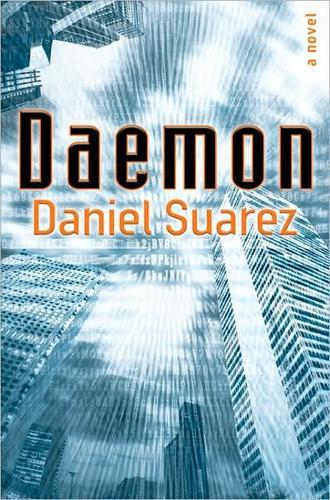
Daemon
by
Daniel Suarez
Published 1 Dec 2006
A long roll of black Duvateen hung down at the entrance, blocking the light and some of the noise within. A line of a hundred or so teens hooted and hollered at the entrance, while a dozen heavyset thugs in SECURITY windbreakers flanked the opening. The bouncers collected twenty dollars from everybody at the door and then slipped an RFID-equipped neck badge around each teen’s neck. Once tagged like cows, the patrons then proceeded through the metal detectors and into the main hangar. Each guard was equipped with a Taser and pepper spray to quickly subdue and remove those inclined to disrupt the party. Dozens more patrolled the party inside.
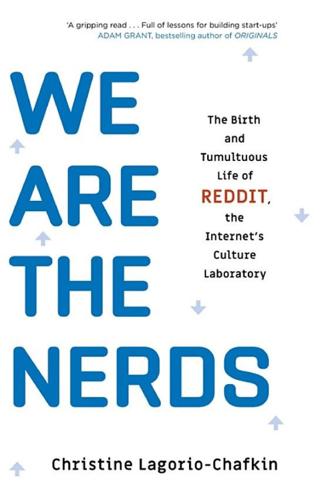
We Are the Nerds: The Birth and Tumultuous Life of Reddit, the Internet's Culture Laboratory
by
Christine Lagorio-Chafkin
Published 1 Oct 2018
After zipping up his gray hoodie and covering his head the best he could, Swartz set off. He looked back over his shoulder and saw cops in front of his door. He ducked behind a pillar. “I know exactly what to do in these kinds of situations; I’ve seen it in all the movies,” he wrote later. “Turn off the wireless on the cell phone, pay for everything in cash, don’t use RFID cards, stick to sidestreets. I stick to sidestreets, but I still hear the cop sirens buzzing down all the major roads. There are major roads on every side of me.” He checked his voicemail. There were messages from Ohanian, Huffman, and, oh God, Karimkhany. He didn’t need this. He pocketed his phone and walked.
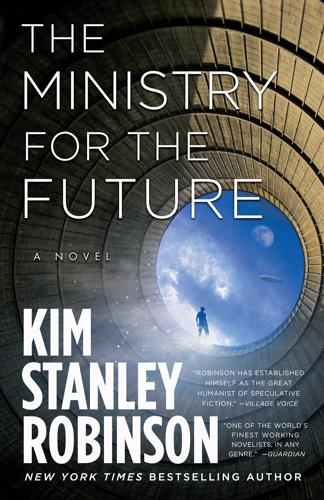
The Ministry for the Future: A Novel
by
Kim Stanley Robinson
Published 5 Oct 2020
The emergency medical people approached and then a pair of police, both women; more refugees disappeared, until it was only the stricken one and Frank. Frank gestured the police over. One of them held a scanner in front of the man’s face and clicked a photo and looked at the result. Possibly there would be an RFID embedded in the man’s skin too, there to be read by the scanner. Then the policewoman with the scanner glanced at Frank and stood up straight, holding the scanner toward him, gesturing at him with her other hand. The other policewoman said “Nei,” Swiss for Nein, and the one with the scanner returned to the stricken person.
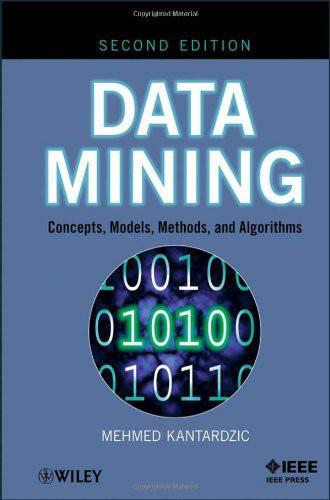
Data Mining: Concepts, Models, Methods, and Algorithms
by
Mehmed Kantardzić
Published 2 Jan 2003
It is estimated that the digital universe consumed approximately 281 exabytes in 2007, and it is projected to be 10 times that size by 2011. (One exabyte is ∼1018 bytes or 1,000,000 terabytes). Inexpensive digital and video cameras have made available huge archives of images and videos. The prevalence of Radio Frequency ID (RFID) tags or transponders due to their low cost and small size has resulted in the deployment of millions of sensors that transmit data regularly. E-mails, blogs, transaction data, and billions of Web pages create terabytes of new data every day. There is a rapidly widening gap between data-collection and data-organization capabilities and the ability to analyze the data.
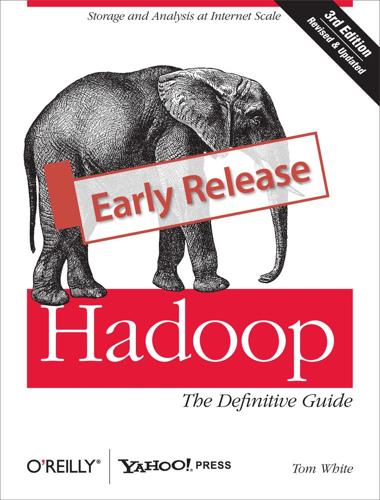
Hadoop: The Definitive Guide
by
Tom White
Published 29 May 2009
When storage costs come down enough to make it feasible to store continuous audio and video, the data volume for a future MyLifeBits service will be many times that. The trend is for every individual’s data footprint to grow, but perhaps more important, the amount of data generated by machines will be even greater than that generated by people. Machine logs, RFID readers, sensor networks, vehicle GPS traces, retail transactions—all of these contribute to the growing mountain of data. The volume of data being made publicly available increases every year, too. Organizations no longer have to merely manage their own data: success in the future will be dictated to a large extent by their ability to extract value from other organizations’ data.

The Wealth of Networks: How Social Production Transforms Markets and Freedom
by
Yochai Benkler
Published 14 May 2006
Users can use machine processing to search and sift through this information and to compare views and reviews of specific items. Trademark has become less, rather than more, functionally important as a mechanism for dealing with search costs. When we move in the next few years to individual-item digital marking, such as with RFID (radio frequency identification) tags, all the relevant information about contents, origin, and manufacture down to the level of the item, as opposed to the product line, will be readily available to consumers in real space, by scanning any given item, even if it is not otherwise marked at all. In this setting, where the information qualities of trademarks will significantly decline, the antidilution law nonetheless assures that owners can control the increasingly important cultural meaning of trademarks.
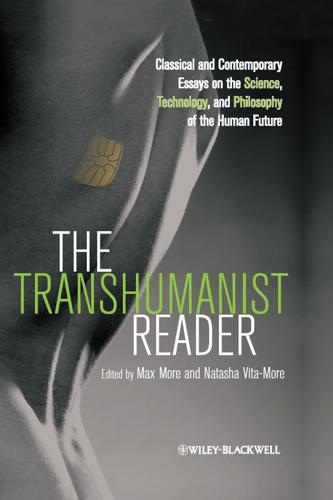
The Transhumanist Reader
by
Max More
and
Natasha Vita-More
Published 4 Mar 2013
The approach taken there involves work by Yael Maguire to develop measurement devices at the scale of red blood cells (about 8 micrometers in diameter). The technology is based on existing fabrication capabilities from the integrated circuit industry, builds on prior successful work embedding chips in cells (Gomez-Martinez et al. 2010), and adds to this RFID-inspired passive communication, and infrared signaling and power technology. Even before those tools reach their full potential, there are ongoing efforts in the Ed Boyden group to scale up multi-electrode arrays to thousands of recording channels that are integrated with light-guides for optogenetic stimulation.

Wanderers: A Novel
by
Chuck Wendig
Published 1 Jul 2019
We can talk in the other room, I’ll get you some food, some water.” As they passed the receptionist desk, he saw the beam of light pass over some photos in frames. In one, he saw the woman standing in front of him. Guess he didn’t need to ask what she did here. She sat in that desk. They headed to a closed door, and she passed an RFID badge over a reader—the door popped with a magnetic click, and she let the badge zip back to her hip on its retractable cable. As he followed down a hallway, shoesteps loud on the marble, he said, “I’m sorry, you have me at a loss, I’m Doctor Ray and you are…” “Rosalie Stevens.” “Pleasure to meet you.”

California
by
Sara Benson
Published 15 Oct 2010
If your passport was issued before October 26, 2005, it must be ‘machine readable’ (with two lines of letters, numbers and <<< at the bottom); if it was issued between October 26, 2005, and October 25, 2006, it must be machine-readable and include a digital photo; and if it was issued on or after October 26, 2006, it must be an ePassport containing a digital photo and an integrated RFID chip containing biometric data. Citizens from all non-VWP countries, as well as those whose passports are not machine-readable or otherwise don’t meet the current US standards, will need to wrangle a nonimmigrant visa from a US consulate or embassy abroad. The process costs at minimum a nonrefundable $100, involves a personal interview and can take several weeks, so apply as early as possible.

USA Travel Guide
by
Lonely, Planet
If your passport was issued before October 26, 2005, it must be ‘machine readable’ (with two lines of letters, numbers and <<< at the bottom); if it was issued between October 26, 2005, and October 25, 2006, it must be machine readable and include a digital photo; and if it was issued on or after October 26, 2006, it must be an e-Passport with a digital photo and an integrated RFID chip containing biometric data. Air Airports The USA has more than 375 domestic airports, but only a baker’s dozen are the main international gateways. Many other airports are called ‘international’ but may have only a few flights from other countries – typically Mexico or Canada. Even travel to an international gateway sometimes requires a connection in another gateway city (eg London–Los Angeles flights may involve transferring in Houston).